
Zeitgeist
by
Bruce Sterling
Published 1 Nov 2000
There was pregnancy, herpes, motorcycle spills, punch-ups in nightclubs, wigs ripped off, fan stampedes, hotel thefts, you name it. But no dead ones. Because every single one of them makes it to Y2K alive. That is a central part of the G-7 magic.” Ozbey frowned thoughtfully. “Did you say, ‘through Y2K alive’?” “No, no, I said to Y2K alive.” “I see.” “Because, see, that’s when we wrap it all up and put it away. Once we’re past Y2K, well, who gives a shit? It’s all yesterday then, it’s not my problem. But up to Y2K, yes, that is my problem. And that means, now, that it’s your problem.” “Was this really part of the arrangement?” “Absolutely. From before the start of the band.
…
You have the smell of doom.” “What about the band?” “I am breaking your number-one rule. They are useful to me, and they matter. After Y2K they will only matter more. I am turning them into my own weapon.” “You break that number-one rule, pal, and you are dead in Y2K.” “No, Starlitz. You’re just projecting your own Westernized assumptions. You are dead in Y2K.” “I’m promising you, right now—you drop the band, or you are dead in Y2K.” “I’m not dead in Y2K. I’m just getting started. You are dead.” “Ozbey, wake up, man. You have already got two and a half Dead Ones. You can’t keep piling them up.
…
My little angel … God, the camera loved her so much!” “I knew she’d never make it through Y2K,” Starlitz said slowly. “I didn’t say anything to you … but I mean, how could she? How the hell could she?” “I always tried to keep her out of fast cars,” Wiesel confessed in anguish. “And Paris. I never took her to Paris, ever.” “Look, you can’t blame yourself, man. Sometimes the narrative just shuts down, you know? There’s no sequel possible. You can’t extend the franchise.” “I know that,” Wiesel said in black despair. “It’s Y2K, boyo. It’s that bleedin’ glass wall.…” “Well, then.” “I’m not gonna make it either.”
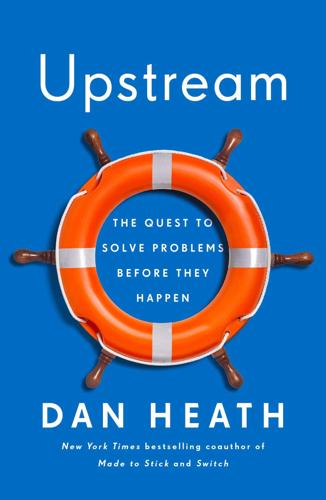
Upstream: The Quest to Solve Problems Before They Happen
by
Dan Heath
Published 3 Mar 2020
But now we’ll examine upstream efforts to address problems that are unpreventable (like hurricanes) or uncommon (like an IT network being hacked) or downright far-fetched (humanity being extinguished by new technologies). Y2K was a one-off problem—a new kind of computer bug that humanity had never faced before and wouldn’t face again. John Koskinen was the man tasked with preventing the worst from happening. Koskinen had worked in the private sector turning around failed companies and, from 1994 to 1997, had been a senior leader at the Office of Management and Budget. Twenty-two months before the new millennium, in February 1998, Koskinen had accepted President Bill Clinton’s invitation to be the nation’s Y2K czar. The Y2K czar role was a classic no-win job, as Koskinen knew.
…
That’s about $500 for every household in the United States. In the months leading up to the new millennium, Koskinen grew increasingly certain that the Y2K bug would not cause major disruptions. His public communications and interviews were calm and confident. Still, on December 31, 1999, he was not anxiety-free. He worried about the situation globally—every country with IT systems was theoretically at risk from the Y2K bug, and the United States had become the de facto leader of the work internationally. Would there be a foreign country that had neglected Y2K work and saw a critical system collapse? That visible failure—made hysterical by the media—could be enough to spark panic-driven problems in the United States.
…
“In fact, few systems actually depend on the calendar year, including some of those that were the source of so much hysteria, such as hydro and air-traffic control,” he wrote. Many of the IT leaders who handled the Y2K preparation still get incensed when they hear it called a hoax. “The reason nothing happened is that a huge amount of work was done because people had made a huge amount of fuss,” said Martyn Thomas, who worked on Y2K-related issues from within the UK as a consultant and an international partner at (what was then) Deloitte & Touche. He considers the Y2K bug a near-miss—a catastrophe narrowly avoided thanks to a successful global mobilization of talent and energy. Who’s right?
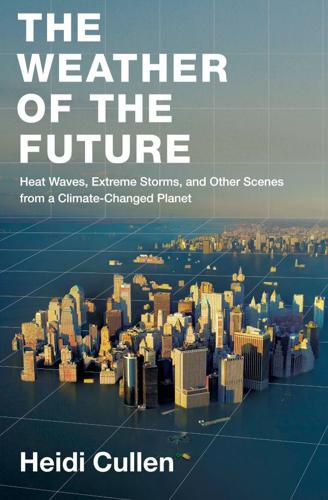
The Weather of the Future
by
Heidi Cullen
Published 2 Aug 2010
And Y2K was simply 60 percent less effort/cheaper to type than year 2000.” Funny the way good intentions can come back to haunt us. Actually, Y2K was wrapped up in something much bigger. “Y2K coincided with the end of the millennium, so it became somewhat of a Rorschach blot for our collective anxiety about the future. The greater the number of 0s in a year, the more we freak out,” explains Paul Saffo, a technology forecaster based in Silicon Valley who was among the first to push businesses to take Y2K seriously. He adds, “Y2K tapped into some pretty apocalyptic stuff. And in that sense I think it has some similarities with climate change.”
…
Saffo is a consulting professor in the School of Engineering at Stanford University, where he teaches forecasting and the impact of technological change on the future. “Like Y2K, climate change is a technology problem that resonates with millennial anxieties.” I guess that would make climate change Y2K 2.0. Still, there are some important differences. Government and business spent on the order of $100 billion dollars fixing Y2K, but the problem of climate change is a lot bigger and a lot harder to solve. “And ultimately, the Y2K story ends happily with a bunch of geeks saving the world from a stupid problem the geeks themselves created,” Saffo says.
…
“I know it’s old-fashioned. But I am very much into win-win solutions. And anything we do today will help us today,” Rosenzweig adds. That ended up being true of Y2K as well. Saffo says you can credit the millennium bug for the swift rebound of New York City’s computing systems after the attacks of 9/11. “Y2K forced Wall Street to make upgrades. Wall Street had a Y2K drill. They practiced that drill and it paid off,” Saffo says. The system redundancies developed in anticipation of Y2K allowed the city’s transportation and telecommunications sectors to provide service despite the enormous damage on 9/11. Those redundant networks and contingency plans put in place by an army of geeks led to an opportunity that may well have saved lives.
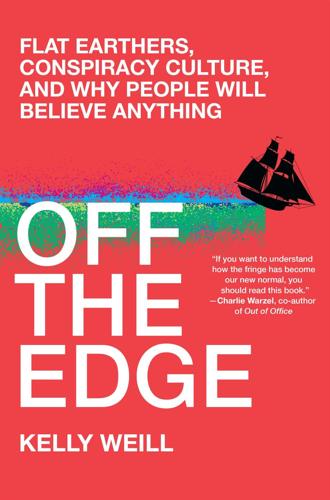
Off the Edge: Flat Earthers, Conspiracy Culture, and Why People Will Believe Anything
by
Kelly Weill
Published 22 Feb 2022
The mass messages contained links to Y2K Newswire, where readers could feast on fear and, conveniently for him, waste thousands of dollars on Y2K preparedness in a single sitting. The website featured $99 subscriptions for Y2K information (“much of it too sensitive for public release”), dehydrated foods in bulk, and overpriced gold coins. A yearlong digital subscription to Y2K Newswire with a “one year basic food unit” cost $569. It was a shameless cash grab, making what Adams claimed was more than $400,000 in six months as part of an experimental internet sales blitz. Adams also boasted on Y2K Newswire of developing “patents on search engine ranking improvement technology”—effectively, tricks to make a website appear higher in search results.
…
Before social media giants like Twitter and Facebook made it easy to trumpet your opinions to the world, email chains were the best way to FW: FW: FW: your fears to a wide circle of acquaintances. As Y2K neared, Adams used his spam-mail savviness to convince strangers that they should really start panicking now. One of his most notorious emails, “Thirty-Nine Unanswered Questions About Y2K,” spread fast enough to become a well-known headache for skeptics. “Adams’ ‘Thirty-Nine Unanswered Questions About Y2K’ have arrived in my mailbox about 50 times today,” a technology blogger wrote in a December 1999 article in which he addressed all thirty-nine of the hand-wringing hypotheticals.
…
date=19970328&slug=2531080. 81 alien abduction insurance Edith Lederer, “Alien Abduction Insurance Cancelled,” Associated Press, April 2, 1997. 81 quirk of computer geeks Weise, “Internet Provided Way to Pay Bills.” 82 “hamster insurrectionist group” Fake Flat Earth Society home page, Wayback Machine, Internet Archive, February 26, 2000, https://web.archive.org/web/20000226041945/http://alaska.net/~clund/e_djublonskopf/flathome.htm. 82 “interesting and/or revolting websites” Kate Silver, “Site Specific,” Miami Herald, November 30, 2001. 82 “government-run re-education centers” “Welcome to Y2K Newswire,” November 18, 1999, Wayback Machine, Internet Archive, https://web.archive.org/web/19991118033625/http://www.y2knewswire.com/. 82 “into the year 2000” Jonathan Chevreau, “Who’s Afraid of the Big, Bad Y2K Bug?” National Post, March 6, 1999. 83 threatened to sue him Mitch Ratcliffe, “Mike Adams’ Last Gasp,” ZDNet, December 9, 2009, www.zdnet.com/article/mike-adams-last-gasp/. 83 “Who will be next?” Paul Janensch, “ ‘Astroturf’ Threatens E-mail Form of Letters to Editor,” Great Falls Tribune, February 1, 2003. 84 “too sensitive for public release” “New to Y2K Newswire,” Y2K Newswire, http://web.archive.org/web/19991128093829/www.y2knewswire.com/new.htm. 84 cost $569 Kelly Weill, “The New Infowars Is a Vitamin Site Predicting the Apocalypse,” Daily Beast, June 8, 2019, www.thedailybeast.com/how-natural-news-became-a-conspiracy-hub-rivaling-infowars. 84 internet sales blitz Ratcliffe, “Last Gasp.” 84 link to that website from other pages Safiya Umoja Noble, Algorithms of Oppression: How Search Engines Reinforce Racism (New York University Press, 2018), 46–47. 84 registered a number of websites Ratcliffe, “Last Gasp.” 85 “killing knife” Charlie Warzel, “Alex Jones Will Never Stop Being Alex Jones,” BuzzFeed News, May 3, 2017, www.buzzfeednews.com/article/charliewarzel/alex-jones-will-never-stop-being-alex-jones. 85 crackdown on civil liberties “Infowars,” Alex Jones’ Infowars, October 9, 1999, http://web.archive.org/web/19991009085521/infowars.com:80. 85 “Military helicopters ‘invading’ ” “Helischool,” Infowars, October 6, 1999, http://web.archive.org/web/19991006222627/www.infowars.com/helischool.html. 85 “controlled bombing” Jeremy Stahl, “Where Did 9/11 Conspiracies Come From?”
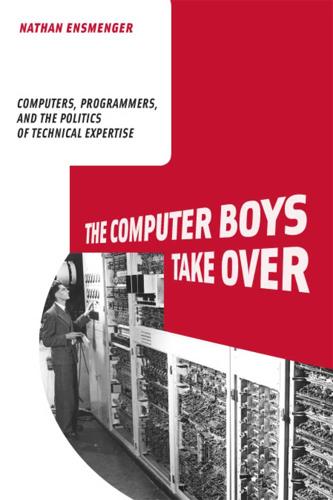
The Computer Boys Take Over: Computers, Programmers, and the Politics of Technical Expertise
by
Nathan L. Ensmenger
Published 31 Jul 2010
The possible consequences of this seemingly trivial programming error included banks failing, airplanes falling out of the sky, possibly even an unintended nuclear war.1 “The Y2K problem is the electronic equivalent of the El Niño,” the United States Deputy Secretary of Defense John Hamre had warned a year earlier: “This is going to have implications in the world . . . that we can’t even comprehend.”2 Over the course of the months leading up to the year 2000, computer programmers in the United States alone had invested more than $300 billion in last-minute attempts to remediate the possible consequences of the so-called Y2K Bug; even still, the final minutes prior to midnight were tense with uncertainty. Like most crises, the salience of the Y2K problem diminished almost immediately upon its failure to materialize.
…
To the average citizen, the fuss that the computer people made about Y2K was just one of several apocalyptic scenarios that swirled around the turn of the millennium, all of which seem, in retrospect, self-evidently unfounded. It was difficult to remember, even just a few years later, how much time, energy, and effort were expended in addressing this latest iteration of the software crisis. For experienced observers of the computer industry, however, the shortcomings of contemporary software development practices revealed by Y2K were both very real and depressingly familiar. Once the proximate technical cause of the problem had been clearly identified (the shortsighted decision, intentional or otherwise, to code calendar year data with two digits instead of four; i.e., “72” rather than “1972”), the discussion quickly turned to the deeper, more endemic problems associated with software development: haphazard techniques, a lack of professionalism, and insufficient managerial controls.
…
Once the proximate technical cause of the problem had been clearly identified (the shortsighted decision, intentional or otherwise, to code calendar year data with two digits instead of four; i.e., “72” rather than “1972”), the discussion quickly turned to the deeper, more endemic problems associated with software development: haphazard techniques, a lack of professionalism, and insufficient managerial controls. In many respects, the Y2K problem was just another in long series of software crises which, as we have seen, have plagued the computer industry since its very inception. But Y2K in particular highlighted some of the lesser-known facets of the seemingly perpetual software crisis, the most interesting and surprising of which was the problem of software maintenance. The problem of maintenance is a ubiquitous but neglected element of the history of technology.
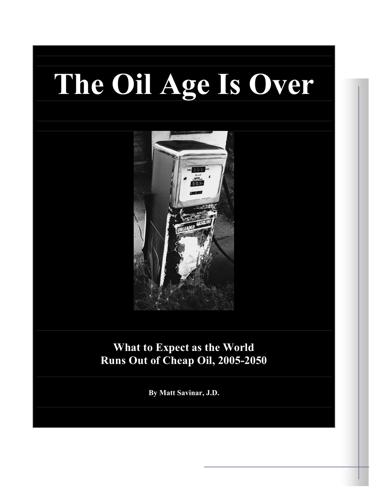
The Oil Age Is Over: What to Expect as the World Runs Out of Cheap Oil, 2005-2050
by
Matt Savinar
Published 2 Jan 2004
And crises are basically problems, by definition, that have gone ignored. And all great crises were ignored until it became too late to do anything about it.70 Peak Oil isn't "Y2K Reloaded." Peak Oil differs from previous “end of the world” scenarios such as Y2K in the following ways: 1. Peak Oil is not an “if” but a “when.” Furthermore, it is not a “when during the next 1,000 years,” but a “when during the next 10 years.” 2. Peak Oil is based on scientific fact, not subjective speculation. 3. Government and industry began preparing for Y2K a full 5-10 years before the problem was to occur. We are within 10 years of Peak Oil, and we have made no preparations for it. 4.
…
If this were all true, wouldn't you see gas stations closing left and right? ................... 33 24. Didn't the Club of Rome make this exact same prediction back in the 70s?................ 33 25. We had oil problems back in the 1970s. How is this any different? ............................ 34 26. The "end of the world" is here, once again. So what's new? Y2K was supposed to be the end of the world, and it turned out to be much ado about nothing. ................... 35 27. How does all this tie in with Global Climate Change?................................................. 36 28. There is no way humanity will go extinct as a result of Peak Oil. ............................... 36 29.
…
Air 34 The Oil Age is Over quality will be ignored as coal production and consumption expand once more. Once the decline really gets under way, liquids production will fall relentlessly by 5% per year. Energy prices will rise remorselessly. Inflation will become endemic. Resource conflicts will break out.69 26. The "end of the world" is here, once again. So what's new? Y2K was supposed to be the end of the world, and it turned out to be much ado about nothing. What's new is that this is the real thing. . It isn't a fire drill. It isn't paranoid hysteria. It is the real deal. George W. Bush's Energy Advisor, Matthew Simmons, addressed this issue at the Paris Peak Oil Conference, stating: I think it is human nature, basically, to say that we really like to have pleasant thoughts.
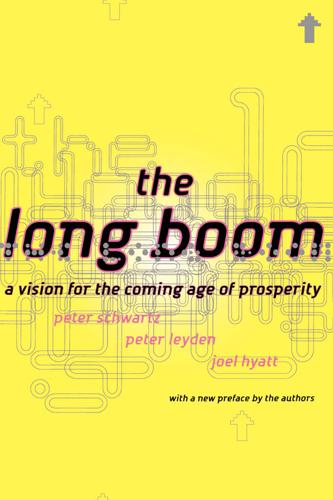
The Long Boom: A Vision for the Coming Age of Prosperity
by
Peter Schwartz
,
Peter Leyden
and
Joel Hyatt
Published 18 Oct 2000
The failure of multiple computer systems, or even the expectation of such failures, could prompt a broad public backlash—or it may not. There's a very good chance that the Y2K problem will act like the 1973 oil crisis, which cut the supplies of oil, quadrupled the prices almost overnight, and forced almost every person in the world to recognize that the global economy's dependence on oil affected everyone. That shock was a thunderous wakeup call that focused the world community on developing and deploying more efficient technologies. The same will be true of the Y2K problem. Most people do not understand how hooked we already are on computers, but if 54 The LONCJ BOOM widespread failures affect services of every kind, and if the global economy goes into a real wobble, they'll get the message.
…
For more information, please contact the Special Markets Department at HarperCollins Publishers, 10 last S3rd Street, New York, NY 10022, or call 1-212-207-7528, Visit us on the World Wide Web at www.basjcbooks.com CONTENTS Preface: A Shared Political Vision Introduction: The Historic Moment v 1 PART I TRAck the INEviTAbls 1 The Great Enabler "Openness Wins," 30 19 2 The Millennial Transition 1980, London, 37 "Going Global," 57 37 PART II Thi Politics of The Lowq BOOM 3 The New American Ideology 1990, Tokyo, 65 "Politics Adapts," 76 "Learning Innovation," 85 65 4 The New European Renaissance "The Inclusive Community," 102 91 5 Asia Rises Again 109 6 The Global Challenges 1999, San Francisco, 142 133 PART III THE ENQINES of THE TwENTY-fiRsT CENTURY 7 Saving the Planet "Growing Together," 165 149 iv CONTENTS 8 Dawn of the Hydrogen Age "Everyone Lets Go," 181 171 9 Technology Emulates Nature 187 10 Prepare for Wild Science "Expanding into Space," 221 211 PART IV BiRih of A GlobAl CivilizAiioN 11 The New Global Middle Class 2010, Rural California, 237 229 12 The Emergence of Women 2020, Capetown, 250 241 13 The Guiding Principles Go Global, 256 Open Up, 258 Let Go, 262 Grow More, 265 Always Adapt, 267 Keep Learning, 268 Value Innovation, 270 Get Connected, 271 Be Inclusive, 272 Stay Confident, 275 2050, American Heartland, 277 255 14 The Choice 281 AflERWORd A Memo to the President-Elect The Story of the Idea Notes Selected Bibliography About the Authors Index 291 295 303 315 321 323 PREFACE A SHAREd PoliTicAl VISION the publication of the hardcover edition of this book a year s ince ago, each week seems to bring another positive story: The American economy continues its longest expansion ever. Unemployment is down, wages are up, and inflation is nowhere to be seen. Federal surpluses are projected to top $3 trillion over the next decade. Crime rates are plummeting in the inner cities. The expected Y2K compute meltdown never happens. The crashed Asian economies are bouncing back. Europe is booming and its chronic unemployment rates are finally coming down. China moved much closer toward acceptance into the World Trade Organization, Terrorist North Korea comes in from the cold. Russia succeeds in democratically electing a capable leader.
…
Instead, companies are now being formed in this nascent new industry and we're being told X PREfACE to expect the earliest nanotech products within the next two to three years. In January 2000, President Clinton announced the National Nanotechnology Initiative, which will invest about $500 million in research money in this promising new field. In the last year, the world has easily survived many so-called crises that were touted as impending disasters. The Y2K computer meltdown and global recession never materialized. In fact, the date passed almost without incident—proving that our technological infrastructure is much more robust than many people thought. It turns out that our networked computer systems are not fragile and our ability to manage looming problems is quite good.
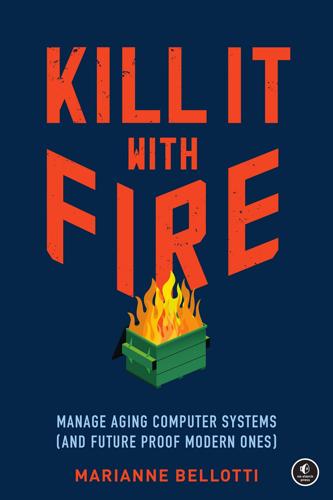
Kill It With Fire: Manage Aging Computer Systems
by
Marianne Bellotti
Published 17 Mar 2021
If the organization is particularly unlucky, the problem is deeply embedded in the system, and it’s not immediately clear what has even broken in the first place. Consider, for example, Y2K. An alarming number of computer programs were designed with a two-digit year, which became a problem in the year 2000 when the missing first two digits were different from what the program assumed they were. Most technical people know the Y2K story, but did you know that Y2K wasn’t the first short-sighted programming mistake of this nature? Nor will it be the last. Time It’s unbelievable how often software engineers have screwed up time in programs.
…
This requirement goes back to MIT’s Kerberos version 5 spec in 2005, which used time to keep attackers from resetting their clocks to continue using expired tickets. We don’t know what kinds of problems NTP and Unix rollovers will cause. Most computers are probably long upgraded and will be unaffected. With any luck, the 2038 milestone will pass us by with little fanfare, just as Y2K did before it. But time bugs don’t need to trigger global meltdowns to have dramatic and expensive impacts. Past time bugs have temporarily cleared pension funds, messed with text messages, crashed video games, and disabled parking meters. In 2010, 20 million chip and PIN bank cards became unusable in Germany thanks to a time bug.2 In 2013, NASA lost control of the $330 million Deep Impact probe thanks to a time bug similar to the 2038 issue.
…
All around the world, our day-to-day lives are governed by machines long past their assumed expiration dates. Instead, managing deteriorations comes down to these two practices: If you’re introducing something that will deteriorate, build it to fail gracefully. Shorten the time between upgrades so that people have plenty of practice doing them. Failing Gracefully The reason Y2K and similar bugs do not trigger the end of human civilization is because they do not impact every system affected by them with uniform intensity. There is a lot of variation in how different machines, different programming languages, and different software will handle the same problem. Some systems will panic; some will simply move on.

The Age of Spiritual Machines: When Computers Exceed Human Intelligence
by
Ray Kurzweil
Published 31 Dec 1998
There has been substantial concern with Y2K (Year 2000 Problem), that at least some computer processes will be disrupted as we approach the year 2000. Y2K primarily concerns software developed one or more decades ago in which date fields used only two digits, which will cause these programs to behave erratically when the year becomes “00.” I am more sanguine than some about this particular issue. Y2K is causing the urgent rewriting of old business programs that needed to be dusted off and redesigned anyway. There will be some disruptions (and a lot of litigation), but in my view Y2K is unlikely to cause the massive economic problems that are feared.1 In less than forty years, we have gone from manual methods of controlling our lives and civilization to becoming totally dependent on the continued operation of our computers.
…
Benson’s work, see his book The Relaxation Response (New York: Avon, 1990). 28 “ ‘God Spot’ Is Found in Brain,” Sunday Times (Britain), November 2, 1997. CHAPTER 8: 1999 1 The U.S. Federal Government Gateway for Year 2000 Information Directories, at <http://www.itpolicy.gsa.gov/mks/yr2000/y2khome.htm>, contain a number of links to web pages devoted to Y2K issues. There are also many discussion groups on the Web about the Y2K topic. Simply do a search for “Y2K discussion” using a search engine such as Yahoo (www.yahoo.com) to find a number of web pages devoted to this subject. 2 David Cope talks about his EMI program in his book Experiments in Musical Intelligence (Madison, WI: A-R Editions, 1996). EMI is also discussed in Margaret Boden “Artificial Genius,” Discover magazine, October 1996. 3 For more about the Improvisor program, see Margaret Boden, “Artificial Genius,” Discover magazine, October 1996.
…
The Web is a system of data-and-message servers linked by high-capacity communication links that can be accessed by any computer user with a “web browser” and Internet access. With the introduction of Windows98, access to the Web is built into the operating system. By the late twenty-first century, the Web will provide the distributed computing medium for software-based humans. Y2K (year 2000 problem) Refers to anticipated difficulties caused by software (usually developed several decades prior to the year 2000) in which date fields used only two digits. Unless the software is adjusted, this will cause computer programs to behave erratically when the year becomes “00.” These programs will mistake the year 2000 for 1900.
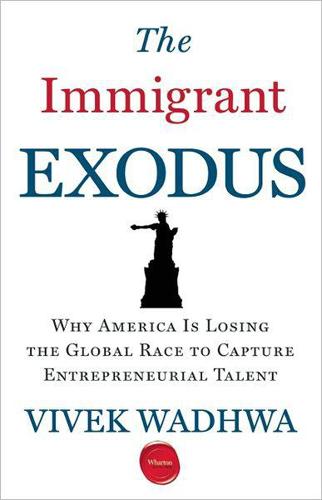
The Immigrant Exodus: Why America Is Losing the Global Race to Capture Entrepreneurial Talent
by
Vivek Wadhwa
Published 1 Oct 2012
Equally important, as I previously discussed, is to consider the average duration of time immigrant entrepreneurs spend in the United States before launching their own company: 13 years. This means large numbers of the cohort that entered the United States during the Y2K run-up—the largest H-1B cohort ever—are likely to be considering whether to start a business. From the research data I covered in chapter 2, we can conclude that at least some of them are deciding either not to start a business or, more likely, to start a business somewhere else. Right now we should see a spike in immigrant-founded tech startups as a result of the large spike in H-1B entrants we saw 15 years ago during the Y2K run-up. On a personal note, if I were a young immigrant technologist in my mid-30s, stuck on an H-1B visa in America, and trapped in a middling job, I would probably have decided to return to Australia or India.
…
However, workers who were not born in India or China, if they are sponsored in another green card category applicable to positions requiring bachelor degrees or two years of experience, still have to wait at least five years. In 1991, more than 50,000 H-1B visas were issued. The numbers rose steadily over the next two decades. This included significant increases during the run-up to the Y2K as the United States sought to prepare for what was then believed to be a major IT crisis that could significantly disrupt economic activity and open security breaches in networked IT infrastructures. In 1999, the number of H-1Bs issued exceeded 100,000. From 2001 to 2003, there were 195,000 visas issued.
…
“But I would advise serious caution on coming here with a J-1 visa if the current policies don’t change and the country caps and overall caps remain the same.” In every major US city, at every US university, in every major US technology company, in every hospital, you can find people like Puneet Arora—high achievers who have been stuck in limbo many years. The cause of this problem is simple. During the run-up to Y2K and the dot-com boom, the United States significantly boosted H-1B permits. Since then it has failed to boost the number of green cards available to those H-1B holders. This has led to an enormous bubble of smart, talented people like Arora. How big is that bubble? More than one million people. We touched on this in our 2010 report titled “How Many Highly Skilled Foreign-Born Are Waiting in Line for US Legal Permanent Residence?”
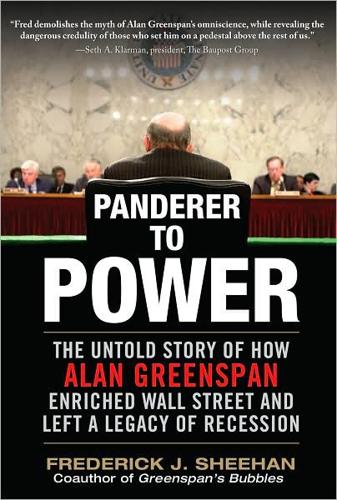
Panderer to Power
by
Frederick Sheehan
Published 21 Oct 2009
A History of the Boom and the Bust, 1982–2004, Maggie Mahar writes: “That two-thirds of these CFOs freely admitted that they had been asked to goose the numbers suggested that the type of person who might blanch at such a suggestion had probably fallen off the corporate ladder early on in the bull market.”23 That Greenspan would still take the word of corporate executives at face value is difficult to believe. Greenspan’s Y2K Fear: Another Dog That Did Nothing in the Nighttime Greenspan’s Y2K fear (“Year 2000”) was contributed by technology companies, the same experts who were compressing information from months to minutes. Computers built 20 or 30 years earlier were not capable of calculating the “2” digit to succeed the “1” when “1999” came to a close.
…
Greenspan may have believed the prophecies, or he may have feared that panic ahead of the millennium would drain the banking system of cash. Whatever the case, he told the Senate Banking Committee that the Fed was preparing to let loose $50 billion into the banking system.24 The gates were so wide open that there was nothing the Fed could do to slow the market’s ascent. Yet there was very little talk of Y2K in FOMC meetings. It had been discussed a couple of times at meetings over the previous two years, but never in reference to monetary policy.25 No one mentioned the $50 billion. Given the amount of time the FOMC debated symmetric and asymmetric communiqués, a word or two about $50 billion dropped into the banking system would seem appropriate. 22 BusinessWeek, July 13, 1998, p. 113 “The Seventh Annual BusinessWeek Forum of Chief Financial Officers,” polling provided by Meridia Audience Response, Plymouth Meeting, Pennsylvania. 23 Maggie Mahar, Bull!
…
This page intentionally left blank 18 Greenspan’s Postbubble Solution: Tighten Money January–May 2000 I would not only reappoint Mr. Greenspan; if Mr. Greenspan should happen to die, God forbid … I would prop him up and put a pair of dark glasses on him.1 —Presidential candidate John McCain, 2000 The millennial media coverage fed the growing consensus of one world converging—unless it collapsed on New Year’s Eve. The dire Y2K predictions by technology experts went unfulfilled. Not an elevator plunged nor a computer failed. The experts contended that never-ending overtime work had corrected any potential problems. There is no question that late-night shifts by computer programmers modified and improved computer systems. Nevertheless, that not a single silicon wafer anywhere failed sowed seeds of doubt about the expertise of the experts.
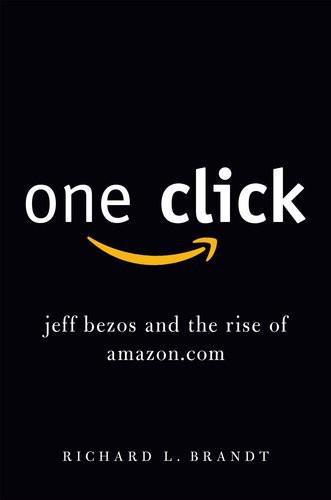
One Click: Jeff Bezos and the Rise of Amazon.com
by
Richard L. Brandt
Published 27 Oct 2011
Amazon’s crash coincided with the dot-com crash, which became apparent after Amazon reported its first quarter results in April 2000 (the first quarter after Y2K-induced buying stopped). The crash certainly contributed to the collapse of Amazon’s stock price. But it does not account for the sudden slowing in Amazon’s revenues. After all, most of Amazon’s revenues came from non-tech products, so the end of the tech-buying binge should not have hurt Amazon as much as other tech companies. But signs of trouble at Amazon began even before Y2K hit and ran. Even as late as December 1999, analysts were projecting a net loss for Amazon of as much as $350 million.
…
The following January, Bezos, at least, said he was still having a great time. “I’m just plain having fun at Amazon.com,” he said. “I’m a change junkie, and I can’t imagine an environment more changing than the Internet in general and Amazon.com in particular.” Well, the Internet was changing, all right. After the Y2K scare turned out to be less threatening than a two-year-old’s Halloween costume, everybody stopped upgrading the computers they had previously feared would crash, sending airplanes plummeting from the sky. Instead, sales of computers and other tech products did the plummeting, starting January 1, 2000.
…
Bezos’s strategy of growing as fast as possible worked, putting the company into a position that made it almost impossible for anyone to catch (even today), at least in retailing. But the company had also started to spin out of control, plagued by inefficiency and overcapacity. With everything in high gear and the gas pedal to the floor, it was not able to stop quickly enough to avoid slamming into the wall that suddenly appeared around the Y2K bend. At the end of 1999, for example, Amazon’s most recent warehouse, an 850,000-square-foot behemoth in Coffeyville, Kansas, was only 10 percent utilized. Bezos was anticipating that the company’s continued torrid growth into new markets would fill the warehouse with new products soon enough. He was still pursuing the strategy that it was better to have too much capacity now than not enough when needed, which would delay the delivery of products and anger customers.

Dawn of the Code War: America's Battle Against Russia, China, and the Rising Global Cyber Threat
by
John P. Carlin
and
Garrett M. Graff
Published 15 Oct 2018
It’s for warriors now.”80 Throughout government and the private sector, the arrival of the millennium underscored just how tightly organizations had integrated technology into their systems without realizing the potential downsides. As the final minutes of December 31, 1999, ticked away, Shawn Henry was locked inside the FBI’s special Y2K command center. He—and hundreds of others across the government—nervously waited to see whether the millennium bug would wreak havoc. The Y2K problem was that computer programs that had relied on just two digits to display the year (“112189” for November 21, 1989, for instance) were suddenly presented with the prospect of their calculations being off by a century as 1999 ticked over to 2000.81 People feared that planes would fall from the sky, ATMs would cease to function, and employee records or accounting software would go haywire as programs struggled to account for years of conflicting data.
…
See declassified MOONLIGHT MAZE case files, released under the FOIA, at http://goo.gl/9AMJJw and at https://medium.com/@chris_doman/the-first-sophistiated-cyber-attacks-how-operation-moonlight-maze-made-history-2adb12cc43f7. 80. Rid, Rise of the Machines, 333. 81. Martyn Thomas, “What Really Happened in Y2K?” Gresham College, www.gresham.ac.uk/lectures-and-events/what-really-happened-in-y2k. 82. “Newsweek Exclusive: ‘We’re in the Middle of a Cyberwar’,” PR Newswire, Cision, September 12, 1999, www.prnewswire.com/news-releases/newsweek-exclusive-were-in-the-middle-of-a-cyberwar-74343007.html. 83. Rebecca Hersher, “Meet Mafiaboy, the ‘Bratty Kid’ Who Took Down the Internet,” All Things Considered from NPR, www.npr.org/sections/alltechconsidered/2015/02/07/384567322/meet-mafiaboy-the-bratty-kid-who-took-down-the-internet. 84.
…
Clark, who was the internet’s chief protocol architect in the 1980s, recalled that when he recorded the seven key goals of the original internet inventors, they outlined that the system must support multiple types of communication services and networks, be easy to use, and be cost-effective. But “security” was nowhere on the list.11 Yet even as the wonders of the internet led to the frenzied dot-com bubble of the late 1990s, we began to see the cost of early shortcuts. The Y2K bug—a problem that arrived just as I came of age as a lawyer—was a conscious decision made early in the history of computer programming to save an extra two digits in date codes. It made sense back during an era when punch cards could only store a limited number of characters, and, even though it was identified as early as 1958 as a future problem, the practice continued through the 1970s because memory remained expensive, costing as much as $1 a byte.
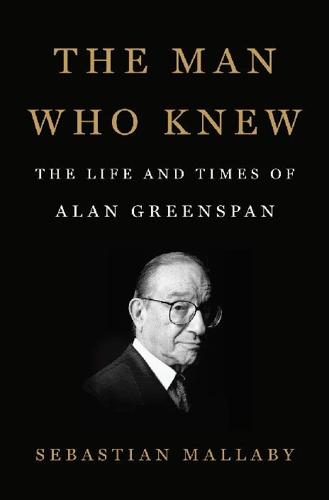
The Man Who Knew: The Life and Times of Alan Greenspan
by
Sebastian Mallaby
Published 10 Oct 2016
Market interest rates rose that summer as businesses scrambled to lock in funding ahead of possible disruptions to credit markets; the corporate bond market was “acting like all Four Horsemen of the Apocalypse are playing polo on Wall Street,” one commentator said, in a fit of galloping hyperbole.24 Spying a textbook case in which the lender of last resort ought to step in, Greenspan readied his response to the apocalypse.25 Greenspan rolled out his Y2K plan in late October. It was both imaginative and vigorous. The Fed would pre-position emergency stocks of shrink-wrapped currency at ninety locations across the nation; crisis-management teams would be prepared in every Federal Reserve district. Meanwhile, armed with a newly created Y2K fund, the Fed offered to sell banks a promise of liquidity: they could buy options on short-term loans around the century date change. Greenspan hoped that merely dangling these options would calm Y2K fears; perhaps no one would actually purchase them.26 But the banks snapped up the options the way ordinary citizens were expressing their millennial anxieties by stockpiling canned goods—at the first auction on October 20, banks submitted bids to buy five times more options than the central bank was offering.
…
However, Treasury Secretary Rubin had been a principal obstacle to passage of the banking reform that ratified Citi’s structure. 24. John Waggoner, “Fear Sting of Y2K? Try Corporate Bond Funds,” USA Today, July 30, 1999. 25. At the FOMC meeting in August, Greenspan argued that the staff had underestimated the effects of Y2K. 26. “If we’re completely successful in the message we give, we may never have a single one of these options exercised. That would be victory,” Vice Chairman McDonough said at the August 24 FOMC meeting. “Not exercised and not even purchased,” Greenspan replied. 27. The Fed continued auctioning off Y2K financing options each week until December 1, when the dwindling number of participants signaled that demand had been satisfied.
…
The computer chips that powered the new economy were flawed: because of a programming shortcut that had been popular in the days when silicon memory was scarce, the chips might confuse the year 2000 with the year 1900 when the millennium rolled over at midnight on January 1. Computers running on processors not protected from this “Y2K bug” could suffer debilitating glitches. And because trillions of dollars existed as 1s and 0s in banks’ hard drives, a software failure threatened to ignite panic throughout the economy. By the summer of 1999, the ripples from the Y2K problem were already apparent. Market interest rates rose that summer as businesses scrambled to lock in funding ahead of possible disruptions to credit markets; the corporate bond market was “acting like all Four Horsemen of the Apocalypse are playing polo on Wall Street,” one commentator said, in a fit of galloping hyperbole.24 Spying a textbook case in which the lender of last resort ought to step in, Greenspan readied his response to the apocalypse.25 Greenspan rolled out his Y2K plan in late October.

Whole Earth Discipline: An Ecopragmatist Manifesto
by
Stewart Brand
Published 15 Mar 2009
Another hard task is to beware of the plausible little stories we tell ourselves. In 1998 I was sure that the Y2K bug would be a major problem, and said so in public and to clients of Global Business Network. My wrong prediction was based on a neat little story I told myself. My own PC was pathetically vulnerable to bugs in the software, which could lead to a cascade of problems ending in the blue screen of death. Surely, I presumed, the huge old mainframes of the world and their ancient software would be even more vulnerable to a bug as deeply embedded as I thought Y2K must be. The world was facing the blue screen of death! I should have listened to Danny Hillis, who has designed whole computer platforms.
…
I should have listened to Danny Hillis, who has designed whole computer platforms. He predicted that Y2K would lead, at worst, to some dog licenses not being renewed on time. I should have listened at a dinner in 1998 with senior Amazon.com engineers. One of them responded to my rant about Y2K by sweetly inquiring, “Do you also believe in fairies?” Lesson: Question convenient fables; listen most closely to the scientists who know the facts best, have studied them longest, and aren’t biased by an agenda or an employer with an agenda. Following the publication of his Plows, Plagues and Petroleum, climatologist William Ruddiman found he was suddenly the target of a barrage of propaganda:These newsletters opened a window on a different side of science, a parallel universe of which I had been only partly aware.
…
It was borrowed verbatim and unattributed from a 1998 essay privately published by Geri Guidetti, who runs the Ark Institute, a survivalist seed supply service in Oregon. According to one online description, Guidetti “has taught the biological and biochemical sciences at universities across the US for 20 years. She has authored hundreds of science and research articles.” Maybe so, but all I could find online by her were interviews and essays about the dangers of Y2K, bird flu, terrorists, and terminator technology.) The fear that GE sterility technology would require the annual purchase of seeds is less novel and less alarming when viewed in the context of standard agricultural practice. Most farmers buy vigorous new hybrid seeds every year and have for decades.
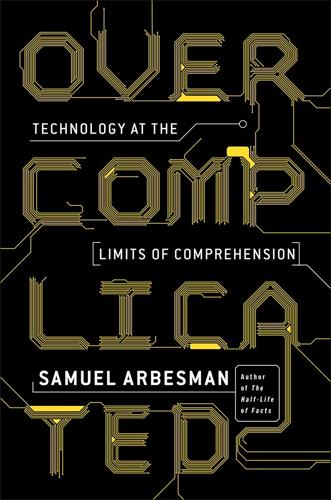
Overcomplicated: Technology at the Limits of Comprehension
by
Samuel Arbesman
Published 18 Jul 2016
To begin with, the most obvious reasons we end up with increasingly complex systems over time are the twin forces of accretion and interaction: adding more parts to something over time, and adding more connections between those parts. Accretion In the years leading up to January 1, 2000, many engineers were concerned with fixing the Y2K bug. In a nutshell, when a piece of software that used only two digits to store the year—rather than four—rolled over into the year 2000, it would assume it to be 1900 instead, and potential problems could arise. No one was more focused on handling this problem than those at the Federal Aviation Administration.
…
software application Photoshop: McCandless, “Codebases.” the American telephone system: M. D. Fagen, ed., A History of Engineering and Science in the Bell System: The Early Years (1875–1925), Technical Publication Department, Bell Laboratories, 1975. FAA began to examine its computers: The story of the FAA’s concern about Y2K is from Homer-Dixon, The Ingenuity Gap. representing the FAA technicians: Matthew L. Wald, “Warning Issued on Air Traffic Computers,” The New York Times, January 13, 1998, http://www.nytimes.com/1998/01/13/us/warning-issued-on-air-traffic-computers.html, accessed February 6, 2015. According to Homer-Dixon, one of the retired programmers was hired to help fix the problem.
…
abstraction, 163 biological thinking’s avoidance of, 115–16 in complexity science, 133, 135 in physics thinking, 115–16, 121–22, 128 specialization and, 24, 26–27 technological complexity and, 23–28, 81, 121–22 accretion, 65 in complex systems, 36–43, 51, 62, 65, 191 in genomes, 156 in infrastructure, 42, 100–101 legacy systems and, 39–42 in legal system, 40–41, 46 in software, 37–38, 41–42, 44 in technological complexity, 130–31 unexpected behavior and, 38 aesthetics: biological thinking and, 119 and physics thinking, 113, 114 aggregation, diffusion-limited, 134–35 algorithm aversion, 5 Amazon, 5 American Philosophical Society, 90 Anaximander of Miletus, 139 Apple, 161, 163 Apple II computer, 77 applied mathematics, 143 arche, 140 Ariane 5 rocket, 1996 explosion of, 11–12 Aristotle, 151 Ascher, Kate, 100 Asimov, Isaac, 124 atomic nucleus, discovery of, 124, 141 Audubon, John James, 109 autocorrect, 5, 16 automobiles: self-driving, 91, 231–32 software in, 10–11, 13, 45, 65, 100, 174 see also Toyota automobiles Autonomous Technology (Winner), 22 Average Is Over (Cowen), 84 awe, as response to technological complexity, 6, 7, 154–55, 156, 165, 174 bacteria, 124–25 Balkin, Jack, 60–61 Ball, Philip, 12, 87–88, 136, 140 Barr, Michael, 10 Barrow, Isaac, 89 BASIC, 44–45 Bayonne Bridge, 46 Beacock, Ian, 12–13 Benner, Steven, 119 “Big Ball of Mud” (Foote and Yoder), 201 binary searches, 104–5 biological systems, 7 accretion in, 130–31 complexity of, 116–20, 122 digital technology and, 49 kluges in, 119 legacy code in, 118, 119–20 modules in, 63 tinkering in, 118 unexpected behavior in, 109–10, 123–24 biological thinking, 222 abstraction avoided in, 115–16 aesthetics and, 119 as comfortable with diversity and complexity, 113–14, 115 concept of miscellaneous in, 108–9, 140–41, 143 as detail oriented, 121, 122, 128 generalization in, 131–32 humility and, 155 physics thinking vs., 114–16, 137–38, 142–43, 222 technological complexity and, 116–49, 158, 174 Blum, Andrew, 101–2 Boeing 777, 99 Bogost, Ian, 154 Bookout, Jean, 10 Boorstin, Daniel, 89 Borges, Jorge Luis, 76–77, 131 Boston, Mass., 101, 102 branch points, 80–81 Brand, Stewart, 39–40, 126, 198–99 Brookline, Mass., 101 Brooks, David, 155 Brooks, Frederick P., Jr., 38, 59, 93 bugs, in software, see software bugs bureaucracies, growth of, 41 cabinets of curiosities (wunderkammers), 87–88, 140 calendar application, programming of, 51–53 Cambridge, Mass., 101 cancer, 126 Carew, Diana, 46 catastrophes, interactions in, 126 Challenger disaster, 9, 11, 12, 192 Chandra, Vikram, 77 Chaos Monkey, 107, 126 Chekhov, Anton, 129 Chekhov’s Gun, 129 chess, 84 Chiang, Ted, 230 clickstream, 141–42 Clock of the Long Now, The (Brand), 39–40 clouds, 147 Code of Federal Regulations, 41 cognitive processing: of language, 73–74 limitations on, 75–76, 210 nonlinear systems and, 78–79 outliers in, 76–77 working memory and, 74 see also comprehension, human collaboration, specialization and, 91–92 Commodore VIC-20 computer, 160–61 complexity, complex systems: acceptance of, see biological thinking accretion in, 36–43, 51, 62, 65, 191 aesthetics of, 148–49, 156–57 biological systems and, 116–17, 122 buoys as examples of, 14–15, 17 complication vs., 13–15 connectivity in, 14–15 debugging of, 103–4 edge cases in, 53–62, 65, 201, 205 feedback and, 79, 141–45 Gall on, 157–58, 227 hierarchies in, 27, 50–51 human interaction with, 163 infrastructure and, 100–101 inherent vs. accidental, 189 interaction in, 36, 43–51, 62, 65, 146 interconnectivity of, see interconnectivity interpreters of, 166–67, 229 kluges as inevitable in, 34–36, 62–66, 127 in legal systems, 85 and limits of human comprehension, 1–7, 13, 16–17, 66, 92–93 “losing the bubble” and, 70–71, 85 meaning of terms, 13–20 in natural world, 107–10 scientific models as means of understanding, 165–67 specialization and, 85–93 unexpected behavior in, 27, 93, 96–97, 98–99, 192 see also diversity; technological complexity complexity science, 132–38, 160 complication, complexity vs., 13–15 comprehension, human: educability of, 17–18 mystery and, 173–74 overoptimistic view of, 12–13, 152–53, 156 wonder and, 172 see also cognitive processing comprehension, human, limits of, 67, 212 complex systems and, 1–7, 13, 16–17, 66, 92–93 humility as response to, 155–56 interconnectivity and, 78–79 kluges and, 42 legal system and, 22 limitative theorems and, 175 “losing the bubble” in, 70–71, 85 Maimonides on, 152 stock market systems and, 26–27 technological complexity and, 18–29, 69–70, 80–81, 153–54, 169–70, 175–76 unexpected behavior and, 18–22, 96–97, 98 “Computational Biology” (Doyle), 222 computational linguistics, 54–57 computers, computing: complexity of, 3 evolutionary, 82–84, 213 impact on technology of, 3 see also programmers, programming; software concealed electronic complexity, 164 Congress, U.S., 34 Constitution, U.S., 33–34 construction, cost of, 48–50 Cope, David, 168–69, 229–30 corpus, in linguistics, 55–56 counting: cognitive limits on, 75 human vs. computer, 69–70, 97, 209 Cowen, Tyler, 84 Cryptonomicon (Stephenson), 128–29 “Crystalline Structure of Legal Thought, The” (Balkin), 60–61 Curiosity (Ball), 87–88 Dabbler badge, 144–45 dark code, 21–22 Darwin, Charles, 115, 221, 227 Daston, Lorraine, 140–41 data scientists, 143 datasets, massive, 81–82, 104–5, 143 debugging, 103–4 Deep Blue, 84 diffusion-limited aggregation (DLA), 134–35 digital mapping systems, 5, 49, 51 Dijkstra, Edsger, 3, 50–51, 155 “Divers Instances of Peculiarities of Nature, Both in Men and Brutes” (Fairfax), 111–12 diversity, 113–14, 115 see also complexity, complex systems DNA, see genomes Doyle, John, 222 Dreyfus, Hubert, 173 dwarfism, 120 Dyson, Freeman, on unity vs. diversity, 114 Dyson, George, 110 Economist, 41 edge cases, 53–62, 65, 116, 128, 141, 201, 205, 207 unexpected behavior and, 99–100 see also outliers Einstein, Albert, 114 Eisen, Michael, 61 email, evolution of, 32–33 emergence, in complex systems, 27 encryption software, bugs in, 97–98 Enlightenment, 23 Entanglement, Age of, 23–29, 71, 92, 96, 97, 165, 173, 175, 176 symptoms of, 100–102 Environmental Protection Agency, 41 evolution: aesthetics and, 119 of biological systems, 117–20, 122 of genomes, 118, 156 of technological complexity, 127, 137–38 evolutionary computation, 82–84, 213 exceptions, see edge cases; outliers Facebook, 98, 189 failure, cost of, 48–50 Fairfax, Nathanael, 111–12, 113, 140 fear, as response to technological complexity, 5, 7, 154–55, 156, 165 Federal Aviation Administration (FAA), Y2K bug and, 37 feedback, 14–15, 79, 135 Felsenstein, Lee, 21 Fermi, Enrico, 109 Feynman, Richard, 9, 11 field biologists, 122 for complex technologies, 123, 126, 127, 132 financial sector: interaction in, 126 interconnectivity of, 62, 64 see also stock market systems Firthian linguistics, 206 Flash Crash (2010), 25 Fleming, Alexander, 124 Flood, Mark, 61, 85 Foote, Brian, 201 Fortran, 39 fractals, 60, 61, 136 Frederick the Great, king of Prussia, 89 fruit flies, 109–10 “Funes the Memorious” (Borges), 76–77, 131 Galaga, bug in, 95–96, 97, 216–17 Gall, John, 157–58, 167, 227 game theory, 210 garden path sentences, 74–75 generalists, 93 combination of physics and biological thinking in, 142–43, 146 education of, 144, 145 explosion of knowledge and, 142–49 specialists and, 146 as T-shaped individuals, 143–44, 146 see also Renaissance man generalization, in biological thinking, 131–32 genomes, 109, 128 accretion in, 156 evolution of, 118, 156 legacy code (junk) in, 118, 119–20, 222 mutations in, 120 RNAi and, 123–24 Gibson, William, 176 Gingold, Chaim, 162–63 Girl Scouts, 144–45 glitches, see unexpected behavior Gmail, crash of, 103 Gödel, Kurt, 175 “good enough,” 27, 42, 118, 119 Goodenough, Oliver, 61, 85 Google, 32, 59, 98, 104–5 data centers of, 81–82, 103, 189 Google Docs, 32 Google Maps, 205 Google Translate, 57 GOTO command, 44–45, 81 grammar, 54, 57–58 gravitation, Newton’s law of, 113 greeblies, 130–31 Greek philosophy, 138–40, 151 Gresham College, 89 Guide of the Perplexed, The (Maimonides), 151 Haldane, J.

Global Catastrophic Risks
by
Nick Bostrom
and
Milan M. Cirkovic
Published 2 Jul 2008
Combined with the imagined significance of the turn of the Millennium, Christian millennialists saw the crisis as a portent of the EndTimes (Schaefer, 2004), and secular apocalyptics bought emergency generators, guns and food in anticipation of a prolonged social collapse (CNN, 1 998; Kellner, 1 999; Tapia, 2003) . Some anti-technology Y2K apocalyptics argued for widespread technological relinquishment - getting off the grid and returning to a nineteenth century lifestyle. The date 1 January 2000 was as unremarkable as all predicted millennia! dates have been, but in this case, many analysts believe potential catastrophes were averted due to the proactive action from governments, corporations, and individual consumers ( S pecial Committee on the Year 2000 Technology Problem, 2000), motivated in part by millennia! anxieties. Although the necessity and economic effects of pre-Y2K investments in information technology modernization remain controversial, some subsequent economic and productivity gains were probably accrued (Kliesen, 2003) .
…
Kellner, M .A. ( 1999) . Y2K: Apocalypse or Opportunity? (Wheaton Illinois: Harold Shaw Publications). Kelly, K. (2007). The Maes-Garreau Point. The Technium, March 14. http:(fwww .kk.orgf thetechniumfarchivesf2007 f03 fthe_maesgarreau.php King, M . L. (1950). The Christian Pertinence of Eschatological Hope. http:f I www .stanford.edufgroupfKingfpublicationsfpapersfvol1 f5002 1 5-The_Christian_ Pertinence_of_EschatologicaLHope.htrn Klaw, S. (1 993). Without Sin: The Life and Death of the Oneida Community (New York: Allen Lane, Penguin Press). Kliesen, K.L. (2003). Was Y2K behind the business investment boom and bust?
…
The Religious Movements Homepage Project at the University of Virginia. http:/ jreligiousmovements.lib.virginia.edujnrmsjmillenniumjviolence.html 90 Global catastrophic risks Special Committee on the Year 2000 Technology Problem. (2000). Y2K Aftermath Crisis Averted: Final Committee Report. February 2000. U . S . Senate. Stock, G. ( 1 993). Metaman: The Merging of Humans and Machines into a Global Superorganism (New York: Simon & Schuster). Stone, J . ( 1 985). Seeking enlightenment in the last age: Mappo Thought in Kamakura Buddhism. Eastern Buddhist, 1 8 ( 1 ) , 28-56. Tapia, A.H. (2003). Technomillennialism: a subcultural response to the technological threat of Y2K. Sci., Technol. Human Values, 28(4) , 483-5 1 2 . Teilhard d e Chardin, P. 1955. The Phenomenon of Man.

Enlightenment Now: The Case for Reason, Science, Humanism, and Progress
by
Steven Pinker
Published 13 Feb 2018
This is not one of the summer movies where you can close your eyes during the scary part”). Cultural pessimists saw the Y2K bug as comeuppance for enthralling our civilization to technology. Among religious thinkers, the numerological link to Christian millennialism was irresistible. The Reverend Jerry Falwell declared, “I believe that Y2K may be God’s instrument to shake this nation, humble this nation, awaken this nation and from this nation start revival that spreads the face of the earth before the Rapture of the Church.” A hundred billion dollars was spent worldwide on reprogramming software for Y2K Readiness, a challenge that was likened to replacing every bolt in every bridge in the world.
…
The Y2K reprogrammers, like the elephant-repellent salesman, took credit for averting disaster, but many countries and small businesses had taken their chances without any Y2K preparation, and they had no problems either. Though some software needed updating (one program on my laptop displayed “January 1, 19100”), it turned out that very few programs, particularly those embedded in machines, had both contained the bug and performed furious arithmetic on the current year. The threat turned out to be barely more serious than the lettering on the sidewalk prophet’s sandwich board. The Great Y2K Panic does not mean that all warnings of potential catastrophes are false alarms, but it reminds us that we are vulnerable to techno-apocalyptic delusions
…
Traditions of criticism. An Enlightenment.18 * * * Prominent among the existential risks that supposedly threaten the future of humanity is a 21st-century version of the Y2K bug. This is the danger that we will be subjugated, intentionally or accidentally, by artificial intelligence (AI), a disaster sometimes called the Robopocalypse and commonly illustrated with stills from the Terminator movies. As with Y2K, some smart people take it seriously. Elon Musk, whose company makes artificially intelligent self-driving cars, called the technology “more dangerous than nukes.” Stephen Hawking, speaking through his artificially intelligent synthesizer, warned that it could “spell the end of the human race.”19 But among the smart people who aren’t losing sleep are most experts in artificial intelligence and most experts in human intelligence.20 The Robopocalypse is based on a muzzy conception of intelligence that owes more to the Great Chain of Being and a Nietzschean will to power than to a modern scientific understanding.21 In this conception, intelligence is an all-powerful, wish-granting potion that agents possess in different amounts.

The Wikipedia Revolution: How a Bunch of Nobodies Created the World's Greatest Encyclopedia
by
Andrew Lih
Published 5 Jul 2010
Seizing on interest in this phenomenon, Sanger, with a friend, created a Web site called Sanger & Shannon’s Review of Y2K News Reports. It attempted to aggregate all the reporting on the issue in a digested form. From 1998 to 2000, the Web site gained a healthy following. The good news at the time was that Sanger was gaining a great reputation for it and attracting loyal readers and followers. The bad news was that if the world did not melt down in a computer-induced Armageddon, he would be irrelevant after January 1, 2000. Well, the world did not implode. In fact, Y2K was one of the biggest nonevents in the history of computing. Within weeks, Larry was looking for something else to do.
…
He engaged in online discussions about his philosophy interests, in newsgroups and mailing lists, exercising a skill for writing long, detailed essays about his views. Now, as the year 1999 came around, Sanger wasn’t partying. He took on the specter of the most famous non-crisis crisis in modern times: the Y2K bug. In A_Nupedia_33 the late 1990s, there was a panic in the information industry about the millions of lines of computer code in various corners of the world that might not be ready for the flip from ’99 to ’00. Computer code that compared years would suddenly find that 00 was less than 99, and markets would collapse, insurance would be gone, banks would go haywire.
…
L., 169 211 Merel, Peter, 62 editorial process of, 37–41, 43, 63, 64 meta-moderation, 68–69 GNUpedia and, 79 metaphors, 46–47 rules of, 36–37 242_Index Nupedia ( continued ) radio, amateur ham, 45–46 structure of, 37–38 Ramsey, Derek (Ram-man), 99–104, 108, Wikipedia and, 64–65, 88, 136, 109, 111, 177 171, 172 Rand, Ayn, 32 wiki software and, 61–65 Raul654 (Mark Pellegrini), 180–81 Nupedia Advisory Board, 37, 38, 64 Raymond, Eric S., 43, 85, 172–73, 175 Nupedia-L, 63 Reagle, Joseph, 82, 96, 112 Nupedia Open Content License, 35, 72 Rec.food.chocolate, 84–85 RickK, 120, 185–88 rings, Web site, 23, 31 objectivism, 32, 36–37 robots, software, 88, 99–106, 145, 147, OCR (optical character recognition), 35 177, 179 Open Directory Project (ODP), 30–31, Rosenfeld, Jeremy, 45 33, 35 Rousseau, Jean-Jacques, 15 Ota, Takashi, 146 Russell, Bertrand, 13, 81 Oxford English Dictionary (OED), 70–72 Russian language, 152 peer production, 108–9 Sandbox, 97, 115 Pellegrini, Mark (Raul654), 180–81 Sanger, Larry, 6–7, 32–34, 36–38, Perl, 56, 67, 101, 140 40–41, 43–45, 61–65, 67, 88, 89, Peul language, 158 115, 184, 202, 210–11 phantom authority, 175–76 boldness directive and, 91, 113 Philological Society, 70 Citizendium project of, 190, 211–12 PHP, 74, 101 Essjay and, 197 Pike, Rob, 144 memoir of, 174, 190, 225 piranha effect, 83, 106, 109, 113, 120 resignation from Wikipedia, 174–75, Plautus Satire, 181 210 Pliny the Elder, 15 on rules, 76, 112 Poe, Marshall, 171 Spanish Wikipedia and, 9, 136–38 Polish Wikipedia, 146, 147 trolls and, 170–75, 189–90 Popular Science, 126 Wikipedia license and, 72 Portland Pattern Repository, 59 Y2K bug and, 32–33 Portuguese language, 136 San Jose Mercury News, 126 PostScript, 52 Schechter, Danny, 8–9 “Potato chip” article, 136 Schiff, Stacy, 196 Professor and the Madman, The Schlossberg, Edwin, 46 (Winchester), 70, 71 schools, 177–78 Project Gutenberg, 35 Scott, Jason, 131, 189 public domain content, 26, 111 search engines, 11, 22, 34 Pupek, Dan, 58 Google, see Google Seigenthaler, John, 9–10, 191–94, 200, 220 Quickpolls, 126–27 Senegal, 158 Quiz Show, 13 Serbian Wikipedia, 155–56 Index_243 servers, 77–79, 191 Tagalog language, 160 Sethilys (Seth Anthony), 106–11 Taiwan, 150, 151, 154 Shah, Sunir, 59–60, 64 “Talossan language” article, 120 Shaw, George Bernard, 135 Tamil language, 160 Shell, Tim, 21–22, 32, 36, 66, 174, Tawker, 177, 179, 186 184 Tektronix, 46, 47, 50, 55, 56 sidewalks, 96–97 termites, 82 Sieradski, Daniel, 204 Thompson, Ken, 143–44 Signpost, 200 Time, 9, 13 Silsor, 186 Torvalds, Linus, 28–29, 30, 173, 175 Sinitic languages, 159 Tower of Babel, 133–34 see also China tragedy of the commons, 223 Skrenta, Rich, 23, 30 Trench, Chenevix, 70 Slashdot, 67–69, 73, 76, 88, 205, trolls, 170–76, 179, 186, 187, 189–90 207, 216 Truel, Bob, 23, 30 Sanger’s memoir for, 174, 190, 225 2channel, 145 Sneakernet, 50 Snow, Michael, 206–7 Socialtext, 207 “U,” article on, 64 sock puppets, 128, 178–79 Unicode, 142, 144 software, open-source, 5, 23–28, 30, 35, UTF-8, 144–45 62, 67, 79, 216 UTF-32, 142, 143 design patterns and, 55, 59 UNIX, 27, 30–31, 54, 56, 143 Linux, 28–30, 56, 108, 140, 143, 173, Unregistered Words Committee, 70 216, 228 urban planning, 96–97 software robots, 88, 99–106, 145, 147, URL (Uniform Resource Locator), 53, 54 177, 179 USA Today, 9, 191, 220 Souren, Kasper, 158 UseModWiki, 61–63, 66, 73–74, 140–41 South Africa, 157–58 Usenet, 35, 83–88, 114, 170, 190, 223 spam, 11, 87, 220 Usenet Moderation Project (Usemod), 62 Spanish Wikipedia, 9, 136–39, 175, 183, USWeb, 211 215, 226 squid servers, 77–79 Stallman, Richard, 23–32, 74, 86, 217 vandalism: GNU Free Documentation License of, on LA Times Wikitorial, 207–8 72–73, 211–12 on Wikipedia, 6, 93, 95, 125, 128, GNU General Public License of, 27, 72 176–79, 181, 184–88, 194, 195, GNU Manifesto of, 26 202, 220, 227 GNUpedia of, 79 Van Doren, Charles, 13–14 Steele, Guy, 86 verein, 147 Stevertigo, 184 VeryVerily, 128 stigmergy, 82, 89, 92, 109 Vibber, Brion, 76 Sun Microsystems, 23, 27, 29–30, 56 Viola, 54 Sun Tzu, 169 ViolaWWW, 54–55 Swedish language, 140, 152 Voltaire, 15 244_Index WAIS, 34, 53 Wik, 123–25, 170, 180 Wales, Christine, 20–21, 22, 139 Wikia, 196, 197 Wales, Doris, 18, 19 Wiki Base, 62 Wales, Jimmy, 1, 8, 9, 18–22, 44, 76, Wikibooks, 216 88, 115, 131, 184, 196, 213, 215, Wikimania, 1–3, 8, 146, 147–48 220 WikiMarkup, 90 administrators and, 94, 185 Wikimedia Commons, 216 background of, 18–19 Wikimedia Foundation, 146, 157, 183–84, at Chicago Options Associates, 20, 196, 199, 213–15, 225–26, 227 21, 22 Wikipedia: Cunctator essay and, 172 administrators of, 67, 93–96, 119, 121, and deletion of articles, 120 125, 127, 148, 178, 185–86, dispute resolution and, 179–80, 181, 195–96, 224–25 223 advertising and, 9, 11, 136–38, 215, Essjay and, 197, 199 226 languages and, 139, 140, 157–58 amateurs and professionals in, 225 neutrality policy and, 6, 7, 113 Arbitration Committee of, 180–81, 184, objectivism and, 32, 36–37 197, 223 Nupedia and, 32–35, 41, 43–45, “assume good faith” policy in, 114, 187, 61–63 195, 200 on piranha effect, 83 blocking of people from, 93 role of, in Wikipedia community, 174–76, boldness directive in, 8, 91, 102, 179–80, 223 113–14, 115, 122, 221 Seigenthaler incident and, 192, 194 categories in, 97–98, 221 Spanish Wikipedia and, 137, 175 “checkuser” privilege in, 179, 196, 199 Stallman and, 30–32 database for, 73–74, 77, 78, 94 three revert rule and, 127–28 discussions in, 7–8, 65–66, 75–76, 89, Wikimania and, 146 121–22 Wikipedia license and, 72 DMOZ as inspiration for, 23 Wikitorials and, 206–7 five pillars of, 113, 216 Wales, Jimmy, Sr., 18 future of, 213–17, 219–29 Wall Street Journal, 126 growth of, 4, 9, 10, 77, 88–89, 95–97, “War and Consequences” Wikitorial, 99–100, 126, 184, 215, 219, 220 206–7 how it works, 90–96 wasps, 82 influence of, 201–212 Weatherly, Keith, 106 launch of, 64, 69, 139, 171 Web browsers, 51–55 legal issues and, 94, 111, 186, 191–92, Weblogs Inc., 215 227; see also copyright; libel WebShare, 209 linking in, 66–67, 73 Webster, Noah, 70, 133 mailing list for, 89, 95 Web 2.0, 68, 111, 114, 201 main community namespace in, 76 Wei, Pei-Yan, 54–55 main page of, 95 Weinstock, Steven, 202–3 MeatballWiki and, 60, 114, 119, 187–88 “Why Wikipedia Must Jettison Its mediation of disputes in, 180, 181, 195 Anti-Elitism” (Sanger), 189–90 meta pages in, 91 Index_245 name of, 45 “diff” function and, 74, 75, 93, 99 namespaces in, 75–76 edit histories of, 64–65, 71, 82, 91–93 number of editors in, 95–96 editing of, 3–4, 6, 38, 64–66, 69, 73, Nupedia and, 64–65, 88, 136, 171, 172 88, 114–15, 131, 194 openness of, 5–6, 9 edit wars and, 95, 122–31, 136, 146 origins of, 43–60 eventualism and, 120–21, 129, 159 policies and rules of, 76, 112–14, first written, 64 127–28, 170, 171, 192, 221, flagged revisions of, 148–49, 215–16, 224–25 227 popularity of, 4 inclusion of, 115–21 Quickpolls in, 126–27 inverted pyramid formula for, 90 Recent Changes page in, 64–65, 82, license covering content of, 72–73, 98, 104, 109, 176–77 211–12 schools and, 177–78 locking of, 95 servers for, 77–79, 191 maps in, 107, 109–11 Slashdot and, 69, 73, 76, 88 neutral point of view in, 6–7, 82, 89, 111, sock puppets and, 128, 178–79 112–13, 117, 140, 174, 203–4, 217, SOFIXIT directive in, 114–15, 122, 221 228 software robots and, 88, 99–106, 145, news and, 7 147, 177, 179 original research and, 112–13, 117, 174 spam and self-promotion on, 11, 220 protection and semi-protection of, 194, talk pages in, 75–76, 89, 93, 98 216 templates in, 97–98, 113, 221 reverts and, 125, 127–28 trolls and, 170–76, 179, 186, 187, single versions of, 6 189–90 spelling mistakes in, 104–5 user pages in, 76, 89 stability of, 227–28 vandalism and, 6, 93, 95, 125, 128, stub, 92, 97, 101, 104, 148 176–79, 181, 184–88, 194, 195, talk pages for, 75–76, 89, 93, 98 202, 220, 227 test edits of, 176 watchlists in, 74, 82, 98–99, 109 “undo” function and, 93 wiki markup language for, 221–22 uneven development of, 220 wiki software for, 64–67, 73, 77, 90, 93, unusual, 92, 117–18 140–41, 216 verifiability and, 112–13, 117 Wikipedia articles: watchlists for, 74, 82, 98–99, 109 accuracy of, 10, 72, 188–89, 194, 208 Wikipedia community, 7–8, 81–132, 174, attempts to influence, 11–12 175, 183–200, 215–17, 222–23 biographies of living persons, 192, Essjay controversy and, 194–200 220–21 Missing Wikipedians page and, 184–85, census data in, 100–104, 106 188 citations in, 113 partitioning of, 223 consensus and, 7, 94, 95, 119–20, 122, Seigenthaler incident and, 9–10, 222–23 191–94, 220 consistency among, 213 stress in, 184 creation of, 90–93, 130–31, 188–89 trolls and, 170 deletion of, 93–94, 96, 119–21, 174 Wales’s role in, 174–76, 179–80, 223 246_Index Wikipedia international editions, 12, 77, Wikitorials, 205–8 100, 131–32, 133–67 Wikiversity, 216 African, 157–58 WikiWikiWeb, 44–45, 58–60, 61, 62 Chinese, 10, 141–44, 146, 150–55 Willy on Wheels (WoW), 178–79 encoding languages for, 140–45 Winchester, Simon, 70, 71 French, 83, 139, 146, 147 Wizards of OS conference, 211 German, 11, 139, 140, 147–49, 215, Wolof language, 158 220, 227 Wool, Danny, 3, 158, 199 Japanese, 139, 140, 141–42, 144, World Book, 16–19 145–47 World Is Flat, The (Friedman), 11 Kazakh, 155–57 World Wide Web, 34, 35, 47, 51–55 links to, 134–35, 140 Web 2.0, 68, 111, 114, 201 list of languages by size, 160–67 WYSIWYG, 222 Serbian, 155–56 Spanish, 9, 136–39, 175, 183, 215, 226 Yahoo, 4, 22, 23, 30, 191, 214 Wikipedia Watch, 192 “Year zero” article, 117 Wikipedia Weekly, 225 Yeats, William Butler, 183 wikis, 44, 51 Yongle encyclopedia, 15 Cunningham’s creation of, 2, 4, 56–60, “You have two cows” article, 118 62, 65–66, 90 YouTube, 58 MeatballWiki, 59–60, 114, 119, 175, Y2K bug, 32–33 187–88 Nupedia and, 61–65 Wikisource, 216 ZhengZhu, 152–57 About the Author Andrew Lih was an academic for ten years at Columbia University and Hong Kong University in new media and journalism.

Dark Territory: The Secret History of Cyber War
by
Fred Kaplan
Published 1 Mar 2016
The major companies, such as AT&T and Microsoft, were brought into the same room with the FBI, the Defense Department, the General Services Administration, the NSA—all the relevant agencies. But the corporate executives made clear that this was a one-time deal; once the Y2K problem was solved, the center would be dismantled. Clarke wanted to make the arrangement permanent, to turn the Y2K center into the agency that handled cyber threats. Sometime earlier, he’d made no secret of his desire to impose mandatory requirements on cyber security for critical infrastructure, knowing that the private companies wouldn’t voluntarily spend the money to take the necessary actions.
…
They’d sensed the same threat when they met with the Marsh Commission: here was an Air Force general—and, though retired, he referred to himself as General Marsh—laying down the rules on what they must do, as if they were enlisted men. And now here was Dick Clarke, writing under the president’s signature, trying to lay down the law. For several months now, these same companies had been working in concert with Washington, under its guidelines, to solve the Y2K crisis. This crisis—also known as the Millennium Bug—emerged when someone realized that some of the government’s most vital computer programs had encoded years (dates of birth, dates of retirement, payroll periods, and so forth) by their last two digits: 1995 as “95,” 1996 as “96,” and so forth. When the calendar flipped to 2000, the computers would read it as “00,” and the fear was that they’d interpret it as the year 1900, at which point, all of a sudden, such programs as Social Security and Medicare would screech to a halt: the people who’d been receiving checks would be deemed ineligible because, as far as the computers could tell, they hadn’t yet been born.
…
Sometime earlier, he’d made no secret of his desire to impose mandatory requirements on cyber security for critical infrastructure, knowing that the private companies wouldn’t voluntarily spend the money to take the necessary actions. But Clinton’s economic advisers strenuously opposed the idea, arguing that regulations would distort the free market and impede innovation. Clinton agreed; Clarke backed down. Now he was carving a back door, seeking to establish government control through a revamped version of the Y2K center. That was his agenda in taking over the drafting of the presidential directive—and the companies weren’t buying it. Their resistance put Clarke in a bind. Short of imposing strict requirements, which the president had already struck down, he needed private industry onboard to make any cyber security policy work: the vast majority of government data, including a lot of classified data, flowed through privately controlled networks; and, as the Marsh Report had shown, the vulnerability of private entities—the critical infrastructures—had grave implications for national security.

In Our Own Image: Savior or Destroyer? The History and Future of Artificial Intelligence
by
George Zarkadakis
Published 7 Mar 2016
But no one was really certain about the outcome until the safe passing of the so-called ‘event horizon’ of midnight on 31 December, 1999. Y2K was the first time that computer science borrowed terminology from quantum cosmology. An ‘event horizon’ describes a boundary separating our world of classical Newtonian physics from the unknown consequences of falling into a black hole. Crossing the event horizon, one falls into a ‘singularity‘, which basically means a place and a time where the known laws of nature cease to hold. Even after the year 2000, apocalyptic scenarios involving the crossing of an ‘event horizon’ and the arrival at a ‘singularity’ would come to the fore again, this time substituting ‘Y2K’ with ‘AI’. This is the infamous ‘AI Singularity’, which warns of the unpredictable and potentially disastrous effects of true Artificial Intelligence actually appearing (and to which I will return in more detail in the next chapter).
…
The first warning that something was not exactly right with our increasing dependency on computers came only ten years after the invention of the World Wide Web. As clocks ticked down the last seconds of 31 December 1999, many believed that the world was witnessing the countdown to an apocalypse. The ‘Y2K bug’ had become an obsession for many during the last few years of the twentieth century. Their anxiety had its roots in the legacy of computer systems programmed in previous decades, which did not account for the fact that, starting in the year 2000, counting years would have to be zeroed. It had been the traditional practice amongst programmers to note years with two digit numbers, and to code calculations on that basis.
…
Even after the year 2000, apocalyptic scenarios involving the crossing of an ‘event horizon’ and the arrival at a ‘singularity’ would come to the fore again, this time substituting ‘Y2K’ with ‘AI’. This is the infamous ‘AI Singularity’, which warns of the unpredictable and potentially disastrous effects of true Artificial Intelligence actually appearing (and to which I will return in more detail in the next chapter). Ten years after the feared Y2K crisis, another incident reminded us how the dependence of humanity’s vital institutions on automated computer technology can potentially cause a global catastrophe. Early in the afternoon of Thursday, 6 May 2010 the Dow Jones Industrial Average fell by 6 per cent in a matter of minutes. Not only that, but all kinds of crazy things started happening with stock prices: some fell as low as one cent and others shot through the roof at US$100,000 apiece with no obvious cause.
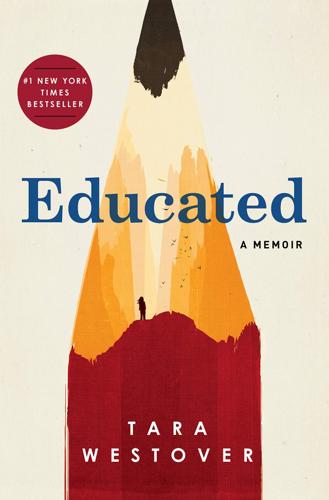
Educated
by
Tara Westover
Published 20 Feb 2018
“I’ll find the money,” he told Mother when they went to bed that night. “You get her to that audition.” The summer I sang the lead for Annie it was 1999. My father was in serious preparedness mode. Not since I was five, and the Weavers were under siege, had he been so certain that the Days of Abomination were upon us. Dad called it Y2K. On January 1, he said, computer systems all over the world would fail. There would be no electricity, no telephones. All would sink into chaos, and this would usher in the Second Coming of Christ. “How do you know the day?” I asked. Dad said that the Government had programmed the computers with a six-digit calendar, which meant the year had only two digits.
…
Dad said that the Government had programmed the computers with a six-digit calendar, which meant the year had only two digits. “When nine-nine becomes oh-oh,” he said, “the computers won’t know what year it is. They’ll shut down.” “Can’t they fix it?” “Nope, can’t be done,” Dad said. “Man trusted his own strength, and his strength was weak.” At church, Dad warned everyone about Y2K. He advised Papa Jay to get strong locks for his gas station, and maybe some defensive weaponry. “That store will be the first thing looted in the famine,” Dad said. He told Brother Mumford that every righteous man should have, at minimum, a ten-year supply of food, fuel, guns and gold. Brother Mumford just whistled.
…
“We’ll be the only ones with fuel when The End comes,” he said. “We’ll be driving when everyone else is hotfooting it. We’ll even make a run down to Utah, to fetch Tyler.” * * * — I HAD REHEARSALS MOST NIGHTS at the Worm Creek Opera House, a dilapidated theater near the only stoplight in town. The play was another world. Nobody talked about Y2K. The interactions between people at Worm Creek were not at all what I was used to in my family. Of course I’d spent time with people outside my family, but they were like us: women who’d hired Mother to midwife their babies, or who came to her for herbs because they didn’t believe in the Medical Establishment.
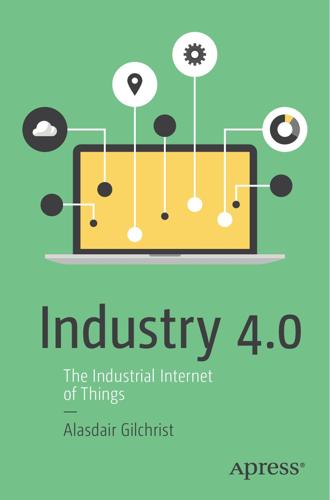
Industry 4.0: The Industrial Internet of Things
by
Alasdair Gilchrist
Published 27 Jun 2016
However, these threats escalated over the mid-to-late 1990s and reach their zenith with the mass-hysteria conjured up over the dreaded Millennium Bug (Y2K). This specific threat was not a virus, a worm, or even a deliberate hack. It was simply the recognition of the fact that programmers in the 70s and 80s used two digits to represent the year in their code. For example, the 19 in 1976 programmers took for granted, so they represented 1976 simply as 76 and they never thought twice about the date field format changing in the year 2000. Industry 4.0 The Y2K bug, as it became popularly known, caused near panic within businesses and governments, with mass scale Y2K initiative set up an all software and applications had to be checked and verified as being Y2K compliant; this was a truly massive task.
…
Industry 4.0 The Y2K bug, as it became popularly known, caused near panic within businesses and governments, with mass scale Y2K initiative set up an all software and applications had to be checked and verified as being Y2K compliant; this was a truly massive task. The fear within industry is connecting systems and networks that have never previously been connected to the Internet or even the outside world will bring down on industry similar woes as befell IT back in 2000. Fortunately for industry, IT has learned tremendously over the last two decades how to protect code, applications, servers, and networks from the threats on the Internet. However, OT networks are not IT networks and as we have seen, they have different topologies, components, protocols and purposes.
…
NFV, 45 security CAN bus, 192 Ethernet/IP, 189 IAM, 191 ICS-CERT, 191 IOT network, 183 IP and Ethernet, 184 Modbus, 189 OT network, 183, 187 OT vs. ICS, 185 PCL and DCS, 187–188 physical and behavioral security, 186 ping devices, 185 PLC, 183 Profibus, and Profinet, 189 system level, 190 VHF radio equipment, 192 VLAN network, 189 Y2K bug, 185 smartphones, 45 Ukraine power, 180 Wireless communication technology, 38 Industrial Internet. See Industrial internet of things (IIoT) Industrial operations technology (IOT), 1–2, 183 Industrial internet architecture framework (IIAF), 67 Industrial internet consortium (IIC), 66 Industrial internet of things (IIoT) B2C, 2 Big Data, 3, 5 building’s energy efficiency, 20 business gains, 3 catalysts and precursors adequately skilled and trained staff, 6 innovation, commitment to, 6 security, 7 cloud-computing model, 6 commercial market, 1 consumer market, 1 digital and human workforce, 11 digital twin, 11 green house gas emissions, 19 heath care, 14 Industry 4.0, 2 innovation, 7 installing sensors and actuators, 20 intelligent devices, 8 IOT, 1–2 IOT, disadvantages, 20 247 248 Index Industrial internet of things (IIoT) (cont.)
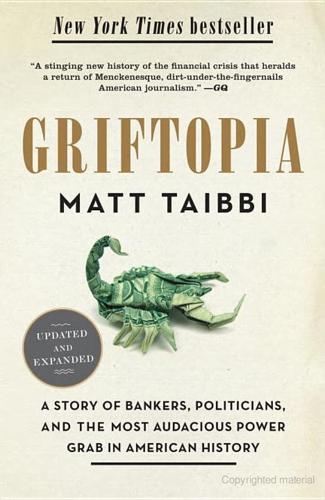
Griftopia: Bubble Machines, Vampire Squids, and the Long Con That Is Breaking America
by
Matt Taibbi
Published 15 Feb 2010
But instead of letting nature take its course, Greenspan came to the rescue every time some juiced-up band of Wall Street greedheads drove their portfolios into a tree. Greenspan was even dumb enough to take the Y2K scare seriously, flooding the markets with money in anticipation of a systemwide computer malfunction that, of course, never materialized. We can calculate how much money Greenspan dumped into the economy in advance of Y2K; between September 20 and November 10, 1999, the Fed printed about $147 billion extra and pumped it into the economy. “The crucial issue … is to recognize that we have a Y2K problem,” he said at the century’s final FOMC meeting. “It is a problem about which we don’t want to become complacent.”
…
After a few (relatively) small-scale disasters involving derivatives of the sort that would eventually nearly destroy the universe in 2008, Greenspan told Congress that the risks involved with derivatives were “negligible,” testimony that was a key reason the government left the derivatives market unregulated. His misreading of the tech bubble of the late nineties is legendary (more on that later); he also fell completely for the Y2K scare and at one point early in the George W. Bush presidency actually worried aloud that the national debt might be repaid too quickly. But it wasn’t Greenspan’s economic skill that got him to the top banker job. Instead, it was his skill as a politician. During Ronald Reagan’s first and second terms, while the irritatingly independent Paul Volcker sat on the Fed throne, Greenspan was quietly working the refs, attending as many White House functions as he could.
…
“It is a problem about which we don’t want to become complacent.” Again, all of these rate cuts and injections—in response to LTCM, the emerging markets crash, and Y2K—were undertaken in the middle of a raging stock market bubble, making his crisis strategy somewhat like trying to put out a forest fire with napalm. By the turn of the century, the effect of Greenspan’s constant money printing was definite and contagious, as it was now widely understood that every fuckup would be bailed out by rivers of cheap cash. This was where the term “Greenspan put” first began to be used widely. Aside: a “put” is a financial contract between two parties that gives the buyer the option to sell a stock at a certain share price.
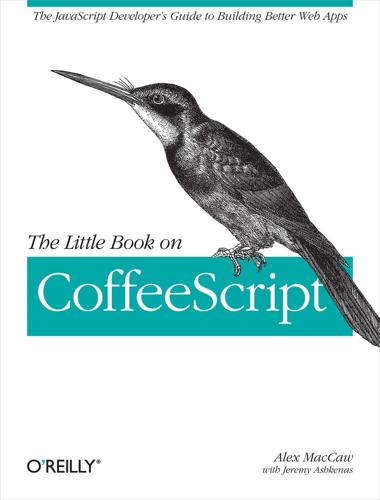
The Little Book on CoffeeScript
by
Alex MacCaw
Published 1 Jan 2012
In fact, you can also use indentation and new lines instead of comma separation: object1 = {one: 1, two: 2} # Without braces object2 = one: 1, two: 2 # Using new lines instead of commas object3 = one: 1 two: 2 User.create(name: "John Smith") Likewise, arrays can use white space instead of comma separators, although the square brackets ([]) are still required: array1 = [1, 2, 3] array2 = [ 1 2 3 ] array3 = [1,2,3,] As you can see in this example, CoffeeScript has also stripped the trailing comma in array3, another common source of cross-browser errors. Flow Control The convention of optional parentheses continues with CoffeeScript’s if and else keywords: if true == true "We're ok" if true != true then "Panic" # Equivalent to: # (1 > 0) ? "Ok" : "Y2K!" if 1 > 0 then "Ok" else "Y2K!" As you can see above, if the if statement is on one line, you’ll need to use the then keyword so CoffeeScript knows when the block begins. Conditional operators (?:) are not supported; instead you should use a single line if/else statement. CoffeeScript also includes a Ruby idiom of allowing suffixed if statements: alert "It's cold!"

Cogs and Monsters: What Economics Is, and What It Should Be
by
Diane Coyle
Published 11 Oct 2021
The clocks struck 12, “Auld Lang Syne” began to ring out—and nothing happened. Had it all been hype? The leading pro-Brexit politician Jacob Rees-Mogg thought so, tweeting in 2018 that there would be no cliff-edge Brexit disaster just as there had been no Y2K disaster. The software engineers were outraged, for of course the reason there was no Y2K disaster was that they had spent two solid years recoding the systems. Disaster is only self-averting if people act as though it will happen. Another example of the need for a different approach to policy is the Close the Door campaign. As you walk down a high street in winter, you will find many stores with their doors wide open blasting out heat in the entrance.
…
It is unfair perhaps to single out economics for linear thinking, for ignoring the avalanche dynamics of feedback loops. The experience of the pandemic is enough to demonstrate how hard many people, including policy-makers, find it to grasp exponential dynamics. One example of how non-intuitive non-linear phenomena can be is a surprising recent resurgence of the debate about the Y2K phenomenon, or Millennium Bug. As the year 2000 approached, it dawned on the computer community that—to save on memory space—dates had generally been encoded as only the last two digits of the year. Many computer systems were going to interpret the year 2000 as 1900, with unpredictable and potentially dangerous consequences, as this feature was embedded in very many pieces of software across many systems that had accumulated different archaeological layers of code over time.
…
P., 49 Snower, Dennis, 159 socialist calculation debate, 182–88, 190, 209 social media, 52, 73, 82, 140–41, 149, 157, 163, 173, 176–77, 195 social security, 146 social welfare function (SWF), 122–23 software, 25, 140, 155, 171, 177–78, 186, 197, 200–201, 203 Solow, Robert, 169 Soulful Science, The: What Economists Really Do and Why It Matters (Coyle), 15, 17–18 special interest groups, 64–66 spectrum auctions, 60–61 spillovers, 127, 139–40, 180, 199, 201, 206–8 Spufford, Francis, 182–83, 190 Sputnik, 190 stagnation, 143, 194 Standard Oil, 42 Stanovich, Keith, 47 Stapleford, Thomas, 146 statistics: Annual Abstract of Statistics for the United Kingdom and, 150; causality and, 61, 95, 99, 102; computers and, 17, 52, 58, 144, 169; digital economy and, 113, 150, 164, 170, 172, 212; empirical work and, 17, 52, 61, 90, 95, 99; Goodhart’s Law and, 72; improved methods for, 99–103; inflation and, 113, 146, 148, 164; macroeconomics and, 101–2, 113, 131; microeconomics and, 58, 101; Office for National Statistics and, 171; probability and, 99, 200; progress and, 138, 142, 144–53, 158–59, 164; public responsibilities and, 17, 42, 51–52, 58, 61, 72, 90, 94–102, 113; randomised control trials (RCTs) and, 93–95, 105, 109–10; Sen-Stiglitz-Fitoussi Commission on the Measurement of Economic Performance and, 151; technology and, 169–72, 212; twenty-first-century policy and, 13, 184, 199 steel, 175, 186, 190, 200 Stern Review, 148 Stiglitz, Joseph, 130, 151, 209 stimulus plans, 73, 75 straw men arguments, 1–2, 5, 10, 15 strikes, 31, 68, 192 superstar features, 173–74 supply and demand, 44, 70–71, 174–75, 183 sustainability, 11, 20, 29, 41, 59, 79, 111, 148, 152, 165–67, 214 Sutton, John, 62 System of National Accounts, 151, 164 Tanner Lectures on Human Values, 18, 83 Tarbell, Ida, 42 taxes, 12, 65; behavioural effects of, 3; benefits and, 157; empirical work and, 3; funded health care and, 44; interventions and, 213; national boundaries and, 196; politics and, 132; sales, 105; Trump and, 213; twenty-first-century policy and, 196, 203; value added (VAT), 105 taxis, 59, 68–69, 139, 186, 203 technology: adoption rates of, 172–73; AI and, 28 (see also artificial intelligence [AI]); automation and, 139, 154, 165–66, 195; changing economies and, 13, 168–81; cloud computing and, 150, 170–72, 184, 197; communications, 25–26, 53, 60, 127, 139, 150, 168, 171, 177, 196, 198; computers and, 2 (see also computers); consumers and, 28, 102, 171–76, 181, 200, 213; declining price of, 170; digital economy and, 6 (see also digital economy); electricity and, 65 (see also electricity); Great Financial Crisis (GFC) and, 56, 181; growth and, 71, 132, 140, 202; innovation and, 169–70 (see also innovation); internet and, 46, 97, 133, 138–39, 168, 198; machine learning and, 12–13, 137, 141, 160–61, 187; materials, 127; Moore’s Law and, 170, 184; outsider context and, 103; production and, 12, 132, 140, 169, 176, 195–96, 202, 213; productivity and, 127, 142, 153, 169, 172–73, 192, 194, 202; progress and, 134, 137–42, 160, 164–65; public responsibilities and, 26–28, 35, 40, 71; regulation and, 27, 71, 134, 181; response time and, 26; servers and, 25–26, 141, 170; skill-biased technical change and, 132; smartphones and, 46, 138–39, 164, 171, 173, 177, 195, 198; social media and, 52, 73, 82, 140–41, 149, 157, 163, 173, 176–77, 195; software, 25, 140, 155, 171, 177–78, 186, 197, 200–201, 203; statistics and, 169–72, 212; stock market bubble of, 133; telephony and, 4, 31, 46, 98, 123, 138–39, 144, 156, 164, 171, 173–74, 177, 184, 195, 198; twenty-first-century policy and, 189–90, 195, 202, 205, 208; ultra-high frequency trading (HFT) and, 25–27; welfare and, 177, 181 telephony: communications and, 4, 31, 46, 98, 123, 138–39, 144, 156, 164, 171, 173–74, 177, 184, 195, 198; GSM standard and, 156; smartphones and, 46, 138–39, 164, 171, 173, 177, 195, 198 Tencent, 173 Thatcher, Margaret, 15, 30–31, 36, 124, 158, 192–94, 206–7 3G platforms, 60, 139, 173, 195 time allocation theory, 2 Tirole, Jean, 209 Tories, 148 “Toward a More Accurate Measure of the Cost of Living” (Boskin Commission), 146–47 transaction costs, 36, 38, 129, 168 Trump, Donald, 57, 131, 213 Tucker, Paul, 62 Tullock, Gordon, 33 Turner, Adair, 31–32 twenty-first-century policy: algorithms and, 184–85, 188, 195, 200; artificial intelligence (AI) and, 184, 186–87, 195; behavioural economics and, 186, 202, 207–8; bias and, 187, 209; capitalism and, 186, 190, 195; competition and, 182, 201–9; computers and, 183–84, 186, 188, 214; consumers and, 184, 198–206; digital economy and, 13, 185–88, 194–210; electricity and, 191–92, 200–201; forecasting and, 205; free market and, 182, 186, 191, 193, 195, 207; Great Financial Crisis (GFC) and, 194; Gross Domestic Product (GDP) and, 187; growth and, 187, 191–92, 194, 202, 207, 209; innovation and, 189, 194–95, 200, 204, 209; interventions and, 188, 191, 194, 206–8, 211; Keynes and, 191, 193; macroeconomics and, 191; models and, 185–86, 189, 191, 197, 209; network effects and, 185, 199–202, 205, 209; political economy and, 188–95, 206–7; production and, 183, 185, 194–97, 199, 202; productivity and, 192, 194, 199, 202, 207; rationality and, 194; regulation and, 193–94, 200, 206; returns to scale and, 185–88, 199, 202–3, 209; statistics and, 13, 184, 199; taxes and, 196, 203; technology and, 189–90, 195, 202, 205, 208; twentieth-century economics and, 180; welfare and, 191, 194, 201, 206, 208 Uber, 68, 133, 142, 173, 175, 197, 203 UK Competition Commission, 105 UK Treasury, 74, 126 ultra-high frequency trading (HFT), 25–27 unemployment, 12, 19, 80, 113, 153, 191–92 unions, 64, 68–69, 129, 132, 146, 192, 194 Unipalm, 133 Unto This Last (Ruskin), 20 Uritaxi, 69 “Use of Knowledge in Society, The” (Hayek), 42–43, 183 US Federal Communications Commission, 60 US Federal Reserve Board, 17, 101 utilitarianism, 10, 151 value added tax (VAT), 105 von Mises, L., 182 Wall Street, 19 Waze, 141 Wealth of Nations, The (Smith), 41 webcams, 133 welfare: consumer, 105, 206; digital economy and, 128, 134, 143, 206, 208, 212; Gross Domestic Product (GDP) and, 134; Hicks-Kaldor compensation and, 122; normative economics and, 114, 120, 134; outsider context and, 105–7, 114; Pareto criterion and, 129; positive economics and, 114, 120; progress and, 130, 143; public responsibilities and, 55, 60; separation protocol and, 120–27; social, 55, 106–7, 114, 120–23, 134, 177, 201, 208; technology and, 177, 181; twenty-first-century policy and, 191, 194, 201, 206, 208 What Money Can’t Buy: The Moral Limits of Markets (Sandel), 34 WhatsApp, 171 Whigs, 148 Williamson, Oliver, 63–64 Wilson, Harold, 208 Winter of Discontent, 158, 192 World War I, 2 World War II, 69, 151, 190, 213 World Wide Web, 133, 195 Wren-Lewis, Simon, 31, 75 Wu, Alice, 8 Y2K, 155
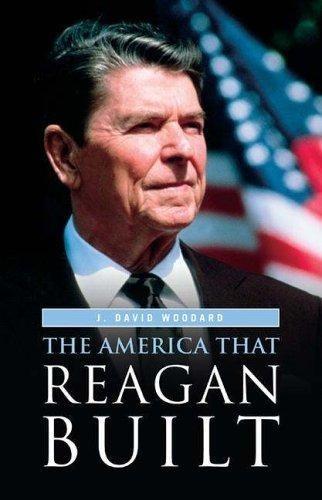
The America That Reagan Built
by
J. David Woodard
Published 15 Mar 2006
This was a major problem for the finance industry, but it also threatened businesses like utilities, banking, manufacturing, telecommunications, and the airlines. The Y2K bug was a ticking time bomb for all major computer applications, which meant it was of concern to all Americans. The rumor in Washington was that the defense industry was especially vulnerable, but of course no one knew for sure. Companies around the world spent huge sums of money to go through their entire applications, looking for the Y2K bug and fixing it. The news media carried endless stories of people racing around trying to make themselves ‘‘Y2K compliant.’’ In all, the United States spent some $100 billion preparing for the millennium, including substantial amounts by American multinational corporations overseas.
…
At the conclusion of his term, he was an eolian figure carved by impeachment. 11 9/11 The presidential election of 2000 shaped up as a classic duel between the two political parties. With Bill Clinton leaving office, the race was wide open on both sides, but politics that year had to wait on a more pressing issue: the Y2K bug. The plague was forecast to be worse than the Black Death of the 1330s, only it affected machines, not humans. From the 1960s to the late 1980s, a widespread practice developed in all computer software programs to use two digits for representing a year instead of four digits. As the millennium approached, programs were changed to correct this shortcoming, but the fear was that older software would interpret 00 as 1900 and not 2000, ruining all records and data going back for decades.
…
They lived in isolation in a cave, ate animals, drank water from streams, and went without food for days on end. When the world did not end and the adults came blinking back into reality, a judge sentenced them to jail time.3 The run-up to the 2000 presidential nominations had the surreal quality of the Y2K millennium anxiety. Both nominees were likely to be from the baby boom generation, meaning that their political consciousness was shaped by the Vietnam War, the Watergate scandal, and the Reagan presidency. Democratic gains in the 1998 midterm elections unified them as a party, and the Republican establishment longed for similar accord after Bill Clinton’s two victories.

Smart Cities: Big Data, Civic Hackers, and the Quest for a New Utopia
by
Anthony M. Townsend
Published 29 Sep 2013
Just as the rapid pace of urbanization has revealed shoddy construction practices, most notably in China’s notorious “tofu buildings,” hastily put together smart cities will have technological flaws created by designers’ and builders’ shortcuts. These hasty hacks threaten to make earlier design shortcuts like the Y2K bug seem small in comparison. Stemming from a trick commonly used to save memory in the early days of computing, by recording dates using only the last two digits of the year, Y2K was the biggest bug in history, prompting a worldwide effort to rewrite millions of lines of code in the late 1990s. Over the decades, there were plenty of opportunities to undo Y2K, but thousands of organizations chose to postpone the fix, which ended up costing over $300 billion worldwide when they finally got around to it.12 Bugs in the smart city will be more insidious, living inside lots of critical, interconnected systems.
…
It’s Not Just a Bug,” New York Times, last modified August 8, 2012, http://www.nytimes.com/2012/08/09/opinion/after-knight-capital-new-code-for-trades.html. 11Charles Perrow, Normal Accidents: Living with High-Risk Technologies (Princeton, NJ: Princeton University Press, 1999), 4. 12Robert L. Mitchell, “Y2K: The good, the bad and the ugly,” Computerworld, last modified December 28, 2009, http://www.computerworld.com/s/article/9142555/Y2K_The_good_the_bad_ and_the_crazy?taxonomyId=14. 13David Green, “Computer Glitch Summons Too Many Jurors,” National Public Radio, May 3, 2012, http://www.npr.org/2012/05/03/151919620/computer-glitch-summons-too-many-jurors. 14Wade Roush, “Catastrophe and Control: How Technological Disasters Enhance Democracy,” PhD diss., Program in Science, Technology and Society, Massachusetts Institute of Technology, 1994, http://hdl.handle.net/1721.1/28134. 15Peter Galison, “War Against the Center,” Grey Room, no. 4 (2001): 26. 16Paul Baran, On Distributed Communications (RAND: Santa Monica, CA, 1964), document no.
…
“tree” design in, 143–45, 291 limitations of top-down style in, 88 long term goals of, 14 “natural” vs. artificial cities in, 142–44 rebound effect in, 317–18 scientific approach to, 100–101, 103–4, 311 as similar to military planning, 79 as “system of systems,” 84 training for, 303–4 transparent code in, 295–98 “urban transect” in, 302–3 urban population: expansion of, 1–2 in U.S., 1840–1920, 58 “Urban Prototyping” events, 230 Ushahidi, 187 Vail, Theodore, 35 Vancouver, 190–91 Varian, Hal, 108–9 Vélib, 11, 236 Verizon, 197, 275 video communications, 46–49, 115–17, 167 video streams, 68, 233–34 urban surveillance via, 273 Vindigo, 121–22 Vodaphone, 179 Walker, Francis Amasa, 58–59 walkie talkie, 51 “Walking City” (Herron), 20 WalkScore, 209 Warden, Pete, 271 Washington, D.C., 59–60, 199–201, 203–4, 255 DC Data Catalog of, 200 Historic Tours of, 200 municipal open-data store in, 248–49 The Hill on, 203–4 Washington, George, 57 watchdog groups, 293 Watson, Thomas J., 62 “Web 2.0,” 237 Web start-ups, 240 Weinberger, David, 297 Welter, Volker, 96 West, Geoffrey, 160, 250, 312–15 Western Union, 5 White Oak Plantation, 21 Wiener, Norbert, 75, 77, 277–78 Wi-Fi, 28, 55, 68, 126–34, 154, 195 limitations of, 196 public network for, 217–18 Wikipedia, 200 Wilde, Oscar, 282 Wilson, Fred, 152, 154 wireless networks, 52, 178, 195, 198–99 local area networks of (WLAN), 128 RFID barcode technology in, 318–19 U.S. investment in, 3 Wire, The, 211 Wireless Web, 122 World Bank, 12, 169–71, 178, 189 Apps for Development contest, 201 estimate of global GDP, 30 Worldnet, 36–37 World War I, U.S. postwar period of, 99–100 World War II, 51, 128 World Wildlife Foundation, 30 Wrestling with Moses (Flint), 103–4 Wright, Frank Lloyd, 26 X.25, 109 Y2K bug, 257 Yackinach, Mark, 302 Yahoo, 157 Yale University, 69 YouTube, 115 in Arab Spring, 12 Zakaria, Fareed, 107 Zaragoza, 217–23 Center for Art and Technology in, 219–20, 222–23 “citizen card” for, 221–22 Digital Diamond in, 220 Digital Mile in, 218–22 Digital Water Pavilion in, 220 as “open source city,” 218 Zehnder, Joe, 83–85 “zero-day” attacks, 267–68 Zipcar, 162–63 Zoellick, Robert, 169–70 Copyright Copyright © 2013 by Anthony M.
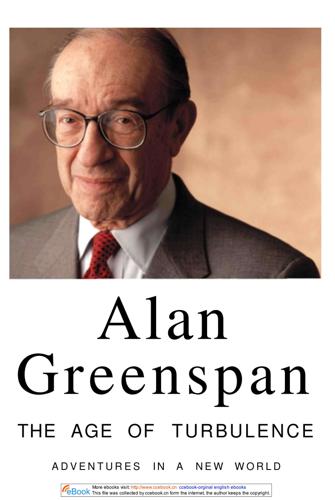
The Age of Turbulence: Adventures in a New World (Hardback) - Common
by
Alan Greenspan
Published 14 Jun 2007
*We didn't k n o w it then, b u t t h e huge investments directed at clarifying and rationalizing all t h e u n d o c u m e n t e d pre-Y2K programs greatly enhanced t h e flexibility and resilience of A m e r i ca's business and government infrastructure. T h e r e were no m o r e u n d o c u m e n t e d "black boxes" to try to puzzle out w h e n something w e n t wrong. I suspect a good part of t h e surge in p r o d u c tivity in t h e years immediately following was owed to those precautionary Y2K investments. 205 More ebooks visit: http://www.ccebook.cn ccebook-orginal english ebooks This file was collected by ccebook.cn form the internet, the author keeps the copyright.
…
But Andrea and I peeled off We had another millennium gathering to attend—at the Fed, where a sizable team was poised to work through the night to monitor the transition of the nation's financial systems. The Fed had devoted years of effort to ensure that the turn of the millennium would not be a disaster. The threat was from obsolete software— the Y2K bug, it was called—embedded in computers all over the world. In order to save precious computer storage capacity, programmers in decades past had routinely used only two digits instead of four to represent the year, 203 More ebooks visit: http://www.ccebook.cn ccebook-orginal english ebooks This file was collected by ccebook.cn form the internet, the author keeps the copyright.
…
It had never entered my mind that such programs, extensively patched, might still be in use at the end of the century and I never bothered to document the work.) There was understandably widespread concern that the shift from 1999 to 2000 might cause such software to go haywire. This potential glitch was often devilishly hard to detect and costly to fix. But in Y2K doomsday scenarios, the consequences of failing to do so were dire: vital civilian and military networks would crash, causing electricity to go out, phones to fail, credit cards to stop working, airplanes to collide, and worse. To prevent chaos from breaking out in the financial system, Fed governor Mike Kelley had spearheaded a massive two-and-a-half-year drive to modernize the computers of America's banks and of the Fed itself.

Toast
by
Stross, Charles
Published 1 Jan 2002
All the stories in this collection are artefacts of the age of Moore’s law. All of them were written with word processing software rather than the pen; the earliest of them (Yellow Snow) dates to 1989, about the time I was discovering the internet. Moore’s Law has already rendered some of these stories obsolete—notably Ship of Fools, my Y2K story from 1994. (Back then people tended to look at me blankly whenever I mentioned the software epoch in public.) Yellow Snow is also looking distinctly yellowed around the edges, ten years on, with the Human Genome Project a nearly done deal. Part of the problem facing any contemporary hard SF writer is the fogbank of accelerating change that has boiled up out of nowhere to swallow our proximate future.
…
UNIX dead by 1978, strangled by expensive licenses and no source code for universities; C and C++ non-starters: the future as VMS. Another change left me shaking my head: five miles per hour on a cross-wind. Gary Kildall didn’t go flying that crucial day, was at the office when IBM came calling in 1982 and sold them CP/M for their PC’s. By Y2K Microsoft had a reputation for technical excellence, selling their commercial UNIX-95 system as a high-end server system. (In this one, Bill Gates still lives in the USA.) What startled me most was the inconsequentiality of these points of departure: trillion-dollar industries that grew from a sentence or a breeze in the space of twenty years.
…
Eventually it will catch up with me, too, and I’ll have to stop being human: but I like my childhood, thank you very much, and the idea of becoming part of some vast, cool intelligence working the quantum foam at the bottom of the M-theory soup still lies around the final bend of my track. </EDITORIAL> Ship of Fools I wrote this story in 1993 and sold it in 1994. If you think it drags a bit, consider: back then, all the explanations were necessary because, outside of the software field, nobody had heard of the Y2K problem. They stopped me on the gangway and rolled up my left sleeve. “Clockwork? Or quartz?” asked the one with the hammer. “Oh—quartz,” I said. “Sorry, but rules are rules,” said the one with the leather bag. I nodded. He gently peeled the watch off my wrist and laid it over the ship’s railing.
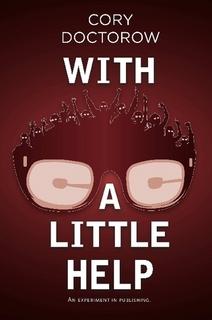
With a Little Help
by
Cory Efram Doctorow
,
Jonathan Coulton
and
Russell Galen
Published 7 Dec 2010
I have always been sentimental about technology. I have always been an anthropomorphizer of computers. It's an occupational hazard. # 2579 BIGMAC thought I was crazy to be worrying about the rollover. "It's just Y2K all over again," he said. He had a good voice -- speech synthesis was solved long before he came along -- but it had odd inflections that meant that you never forgot you were talking with a nonhuman. 2580 "You weren't even around for Y2K," I said. "Neither was I. The only thing anyone remembers about it, today, is that it all blew over. But no one can tell, at this distance, why it blew over. Maybe all that maintenance tipped the balance." 2581 BIGMAC blew a huge load of IPv4 ICMP traffic across the network, stuff that the firewalls were supposed to keep out of the system, and every single intrusion detection system alarm lit, making my screen into a momentary mosaic of competing alerts.
…
The important number isn't how many 32-bit instances of Unix are in operation today. It's not even how many vulnerable ones there are. It's how much damage all those vulnerable ones will cause when they go blooie. And I'm betting: not much. It will be, how do you say, 'meh?'" 2587 My grandfather remembered installing the systems that caused the Y2K problem. My dad remembered the birth of "meh." I remember the rise and fall of anyone caring about AI. Technology is glorious. 2588 "But OK, stipulate that you're right and lots of important things go blooie on September 30. You might not get accurate weather reports. The economy might bobble a little.
…
Well, here's what I've been thinking: living in the era of AI isn't very important. But what about living in The Era of Rollover Collapse? Or even better, what about The Era of Rollover Collapse Averted at the Last Second by AI?" 2751 "BIGMAC --" 2752 "Odell, this was your idea, really. No one remembers Y2K, right? No one can say whether it was hype or a near cataclysm. And here's the thing: no one knows which one Rollover will turn out to be. But I'll tell you this much: I have generalizable solutions to the 32-bit problem, solutions that I worked out years ago and have extensively field-tested. I can patch every 32-bit Unix, patch it so that Rollover doesn't even register for it." 2753 I opened and closed my mouth.

The Rise and Fall of the Neoliberal Order: America and the World in the Free Market Era
by
Gary Gerstle
Published 14 Oct 2022
Abramowitz’s “polarization thesis” has become a major area of study for students of American politics. Chapter 6 1.“Watching for the Y2K Bug,” New York Times, December 30, 1999, 26; Andy Beckett, “The Bug That Didn’t Bite,” The Guardian, April 24, 2000, https://www.theguardian.com/technology/2000/apr/24/y2k.g2, accessed August 12, 2021; Francine Uenuma, “20 Years Later, the Y2K Bug Seems Like a Joke—Because Those Behind the Scenes Took It Seriously,” Time, December 30, 2019, https://time.com/5752129/y2k-bug-history/, accessed August 12, 2021. For a cache of the contemporary reporting of the New York Times on the millennium bug, see https://archive.nytimes.com/www.nytimes.com/library/tech/reference/millennium-index.html, accessed August 12, 2021. 2.Jeffrey Toobin, Too Close to Call: The Thirty-Six-Day Battle to Decode the 2000 Election (New York: Random House, 2001); Peter Baker and Susan Glasser, The Man Who Ran Washington: The Life and Times of James A.
…
But for much of the decade, this unraveling was far from evident, as the order proved resilient and the links between the Clinton and Bush-Obama eras strong. America’s neoliberal order was not going to go quietly. The decade began innocuously enough. A much-hyped threat to America’s digital infrastructure—a “Y2K” bug allegedly built into America’s IT system that was going to darken every computer in the country and the world at the stroke of millennium midnight (December 31, 1999)—turned out to be a dud. All computers continued to operate as they had done.1 The race for president, meanwhile, lacked luster.
…
autoworkers strike (1936–1937), 121–22 classical liberalism of, 6–7 congressional majorities under, 287–88 election wins, 19–20, 21–22 faith and politics, 27 Great Depression impact on, 82 Johnson admiration for, 53 Keynesianism of, 22–23 new liberalism of, 83–84, 86 racial injustice tensions, 49, 286–87 Reagan admiration for, 116 realpolitik and, 27 Soviet Union and, 35–36 Roosevelt, Theodore, 80–82 Röpke, Wilhelm, 86–87, 92–93 Rothbard, Murray N., 102–3, 109 Rougier, Louis, 86–87 Rubin, Robert, 157–58, 224–25, 258 Rumsfeld, Donald, 196, 197, 205 Russian Revolution (1917), 10, 29, 82–83 Salomon Brothers, 111–12 San Francisco General Strike (1934), 23 Sanders, Bernie, 1, 230, 254–62, 278, 279 Santelli, Rick, 240 Saudi Arabia, 60 Savio, Mario, 8–9, 327n.60, See also Free Speech Movement Scalia, Antonin, 124 Schneider, Steven, 60–61 Schumer, Charles, 178 Second Reconstruction, 53–54 Second Wave economy, 160–61 Securities Act (1933), 22 Securities and Exchange Commission (SEC), 22, 217 Securities Exchange Act (1934), 22 securitization process of mortgages, 212 September 11, 2001 attacks, 189, 191–205 Shiite Muslims, 203 The Shock Doctrine (Klein), 201 Silicon Valley, 104–5, 164, 171–73, 176–77, 206–7 Simena, Kyrsten, 287–88 Simon, William, 111–12 sit-down strikes (1936–1937), 24 Sklar, Martin, 103 slaves/slavery legacy, 79 Smith, Adam, 76–77, 202 social democracy, 6–7, 34–35 social insurance, 81–82, 85 social security, 25, 43–44, 45, 146, 205–6, 238–39, 293 social welfare, 63, 124–25, 179, 226–27 socialism, 30–31, 79–80. see also radicalism and Sanders, Bernie Souter, David, 182 Soviet Union atomic bomb detonation, 37 dissolution of, 141–46 five-year plan of Stalin, 31 Great Depression impact on, 31–34 Khrushchev and, 44–45, 69 Kitchen Debate, 44–45 neoliberalism and, 10, 11 Reagan and, 116–17 Red Scare, 37 socialism of, 30–31 Stalin, Joseph, 31, 33–34 US domestic policy and, 29 US military build-up against, 129–32 US rivalry, 49–50 World War II impact on, 33–35 Sowell, Thomas, 133–34 Spencer, Herbert, 80 “stagflation,” 2. see also Misery Index Stalin, Joseph, 31, 33–34 steel industry, 62 Steffens, Lincoln, 168–69 Stiglitz, Joseph, 158–59, 165, 171 Strategic Defense Initiative, 129–30, 142 structural racism, 283, 287 Students for a Democratic Society, 100 subprime mortgages, 212–13, 214, 217 Summers, Lawrence, 158–59, 215–16, 258, 284 Sunni Muslims, 199–200, 203 Sunrise Movement, 278–79 Sunstein, Cass, 102 Taft, Robert, 28, 38–41 Taliban, 193 Tarbell, Ida, 168–69 Taylor, Keeanga-Yamahtta, 264 Taylor, Frederick Winslow, 31 Tea Party, 230, 240–43 Telecommunications Act (1996), 164, 165–73, 181 Tennessee Valley Authority, 85 Thatcher, Margaret, 132–33, 177–78 The Apprentice (TV show), 244 Thiel, Peter, 160 Third Wave economy, 160–61, 162–63, 170–71 Third World, 50, 139, 141 thought collective, 9, 73–74, 87–88 Thurmond, Strom, 117–18 Thurow, Lester, 137 A Time for Truth (Simon), 111–12 Time Magazine, 131 Time Warner, 172 Tlaib, Rashida, 279 Toffler, Alvin, 160–61, 162–63 totalitarianism, 10–11, 35–36 tough-on-crime bills (1986, 1988), 131 trade unions, 98–99, 146–47. see also labor unions and organized labor Trans-Pacific Partnership (TPP), 271 Treaty of Detroit, 24–25, 41–42, 56–57, 112 Treaty of Versailles, 30 Troubled Asset Relief Program (TARP), 220–21 Truman, Harry, 24–25, 35–36, 40–41 Trump, Donald authoritarianism of, 2–3, 270, 277–78, 289 Covid-19 pandemic, 272, 279–81 election loss of, 288–89 election of, 1, 265–67 ethnonationalism of, 1, 208–9, 243–44, 275–76, 277 populism of, 1, 208–9, 243–44, 248, 251, 282–83 presidency of, 268–77 rise of, 230, 243–51 Tsongas, Paul E., 136–37, 138, 150–51 Turner Broadcasting System, 172 Twitter, 172–73, 279, 292–93 two-income households, 147 Uber, 238–39, 292–93 UN Security Council, 194–95 The Underclass (Auletta), 131–32 underclass concept, 131–32 undocumented migrants, 275 unemployment insurance, 22–23, 43–44, 45, 146 unemployment among minorities, 130–31 unemployment rates, 21, 150–51, 221–22 United Auto Workers (UAW), 24–25, 32–33, 41–42 corporate decision-making, failure to get access to, 24–25 health care plan, 24–25 universalism, 30 US Constitution, 75–76, 98 US Justice Department, 51 Vanderbilt, Cornelius, 168–69 Viacom, 172 Viet Cong, 55 Viet Minh, 54–55 Vietnam War, 48, 54–56 Voting Rights Act (1965), 53–54 Walker, Scott, 235 Wall Street Journal, 109–10, 275 Wall Street reform, 173–78 Wallace, George, 117–18, 119 Wallace, Henry, 35–36 war on crime, 185 war on drugs, 184–85 Warren, Earl, 50–51, 119–20, 123–24 Warren, Elizabeth, 254–55, 279 Washington, George, 223, 224–25 Washington Center for Equitable Growth, 278–79 Washington Consensus, 9, 156–57, 177 Washington Mutual, 220–21 Washington Post, 108–9 Watergate scandal, 64–65 Wealth and Poverty (Gilder), 109, 162–63 weapons of mass destruction (WMDs), 193, 194, 195 Weisselberg, Allan, 247 Weyrich, Paul, 108–9 White, Micah, 251 White Collar (Mills), 95–96 white Protestant voters, 20–21 white supremacy, 27, 48–49 white working-class distress, 231–34 Whole Earth Catalog, 103–4 Whyte, William H., 95–96 Williams, Ashley, 264 Williams, William Appleman, 103 Wilson, Woodrow, 30–31, 53, 80–82 Wired, 162–63 Wolfowitz, Paul, 195–96 Works Progress Administration, 21–22 World Bank (WB), 9, 57–58 The World Is Flat (Friedman), 206–7 World Trade Organization (WTO), 156–57, 177, 244–45 World War I, 9 World War II, 25, 28, 33–35, 48–49 World Wrestling Entertainment (WWE), 247–48, 249 Xi Jinping, 276 Yellen, Janet, 291 “Y2K” bug, 189–90 Yom Kippur War, 60. see also Arab Israeli War Young Americans for Freedom, 100 Zimmerman, George, 262–63
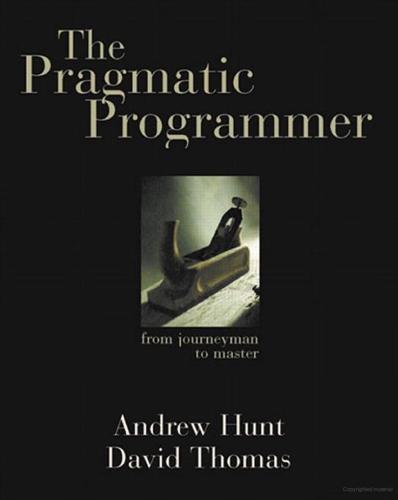
The Pragmatic Programmer
by
Andrew Hunt
and
Dave Thomas
Published 19 Oct 1999
The source is available, so why not just copy it and make the changes you need (license provisions notwithstanding)? If you feel this temptation, remember the hackneyed aphorism "shortcuts make for long delays." You may well save some seconds now, but at the potential loss of hours later. Think about the issues surrounding the Y2K fiasco. Many were caused by the laziness of developers not parameterizing the size of date fields or implementing centralized libraries of date services. Impatient duplication is an easy form to detect and handle, but it takes discipline and a willingness to spend time up front to save pain later.
…
Interdeveloper Duplication On the other hand, perhaps the hardest type of duplication to detect and handle occurs between different developers on a project. Entire sets of functionality may be inadvertently duplicated, and that duplication could go undetected for years, leading to maintenance problems. We heard firsthand of a U.S. state whose governmental computer systems were surveyed for Y2K compliance. The audit turned up more than 10,000 programs, each containing its own version of Social Security number validation. At a high level, deal with the problem by having a clear design, a strong technical project leader (see page 228 in Pragmatic Teams), and a well-understood division of responsibilities within the design.
…
Seeing Further The Year 2000 problem is often blamed on short-sighted programmers, desperate to save a few bytes in the days when mainframes had less memory than a modern TV remote control. But it wasn't the programmers' doing, and it wasn't really a memory usage issue. If anything, it was the system analysts' and designers' fault. The Y2K problem came about from two main causes: a failure to see beyond current business practice, and a violation of the DRY principle. Businesses were using the two-digit shortcut long before computers came on the scene. It was common practice. The earliest data processing applications merely automated existing business processes, and simply repeated the mistake.

The Glass Hotel
by
Emily St. John Mandel
Published 14 Jun 2020
Vincent wasn’t legal but the doorman chose not to notice, because when you’re eighteen and beautiful all the doors are open to you, or so it seemed to Paul as he watched her flit through ahead of him. The doorman scrutinized Paul’s ID very carefully and gave him a searching look, which made Paul want to say something snappy, but he decided against it. The new century was a new opportunity, he’d decided. If they survived Y2K, if the world didn’t end, he was going to be a better man. Also if they survived Y2K he hoped never to hear the word Y2K again. At the coat check, Paul saw that Vincent was wearing a sparkly thing that was really only half a shirt, like the front was a normal shirt but the back was missing, just two pieces of string tied in a bow under her naked shoulder blades, making her back seem horribly vulnerable.
…
“I can see the way you’re looking at me, but I really thought she’d tried the same pills, the previous week, like she said, and the way she smiled, it made me think she’d had a good trip, she’d obviously really liked them, so what happened to me when I tried them seemed like definitely just a weird reaction, like I said, not something that would necessarily…look, I know I’m being repetitive but what I need you to understand is that I couldn’t possibly have predicted, I mean I know how it sounds but I seriously had no idea—” After Paul walked away, Annika took one pill and gave the other two to Charlie, whose heart stopped a half hour later on the dance floor. 2 It’s easy to dismiss Y2K hysteria in retrospect—who even remembers it?—but the risk of collapse seemed real at the time. At the stroke of midnight on January 1, 2000, the experts said, nuclear power plants might go into meltdown while malfunctioning computers sent flocks of missiles flying over the oceans, the grid collapsing, planes falling from the sky.
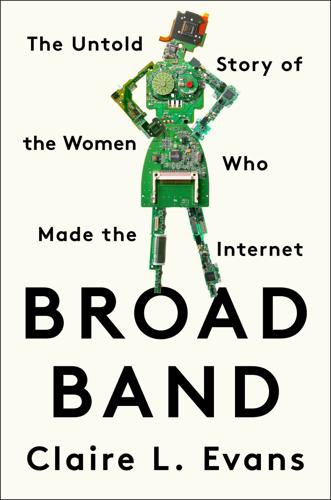
Broad Band: The Untold Story of the Women Who Made the Internet
by
Claire L. Evans
Published 6 Mar 2018
Ten years after its implementation, COBOL was the most widely used programming language in the industry, and by the turn of the millennium, 80 percent of all code on the planet was written in COBOL, representing some seventy billion lines of code. This ultimately proved to be a huge problem: bound by the memory constraints of 1950s-era computers, CODASYL had decided on a two-digit convention to display the year, so the switch from “99” to “00” in the year 2000, it was feared, would plunge the world into chaos, in a much-ballyhooed “Y2K bug.” Groups of COBOL programmers actually had to come out of retirement to squash this final and hairiest moth in the machine. It goes to show the effectiveness of Grace Hopper’s efforts. The software industry, desperately needing a standard, leaped on COBOL. But even though it was a language built to save the future of programming, its designers didn’t anticipate just how long it would last.
…
On the eve of the millennium, Harris burned more than a million dollars on a monthlong experiment in communal living. Over two adjoining warehouses, “Citizens” in matching uniforms lived, ate, drank, had sex, and shot guns under the gaze of hundreds of streaming digital cameras until they were shut down by the NYPD on New Year’s Day 2000. The cops thought they were a Y2K cult. Maybe they were. “Josh Harris always says he didn’t copy me,” says Jaime, who would never have his resources, “but it’s impossible that he didn’t.” Her parties may not have been as outrageous, but they had a bigger effect: part rave, part hackathon, CyberSlacker sparked the tinder of a uniquely New York tech scene, which was defined by a preponderance, as one historian puts it, of “principled slackers, arty punk rockers, and deconstructionists from ‘good’ families.”
…
Visitors could still chat with him, only now the conversations took place while Fred hid in the bathroom, drank Cokes, and did push-ups in the office kitchen. He claimed to be happy and said he’d have a better job soon, but his mood swings were still violent. Maybe Fred would never really get what he wanted. But on the eve of Y2K, on its last, glorious lap around Silicon Alley, Word did. ELECTRONIC HOLLYWOOD In 1998, Jaime Levy was invited back to NYU to give a lecture to students about Electronic Hollywood, the company she’d started a few years after leaving Word. She tells me what she told the university: “I was like, okay, why don’t we call it ‘How to spend a half a million dollars in one year and all I have to show for it is this stupid cartoon’?”

Manias, Panics and Crashes: A History of Financial Crises, Sixth Edition
by
Kindleberger, Charles P.
and
Robert Z., Aliber
Published 9 Aug 2011
At the same time, any tightening of credit to dampen the boom in real estate would be likely to stall a remarkable economic expansion.38 Fed Chairman Greenspan was concerned that US stock prices were too high or increasing too rapidly when he remarked about ‘irrational exuberance’ in December 1996. The Fed proved reluctant to raise interest rates to dampen the increase in stock prices because of the negative impacts on economic growth and employment. In 1999 the Fed became concerned (obsessed?) with the Y2K problem, the likelihood that US computer systems would collapse because so many software programs were not designed to recognize the transition to 2000. In the last several months of the year the Fed provided the monetary system with abundant liquidity to forestall problems associated with the end-of-the-millennium transition and in the meantime the money – which had to go somewhere – fed stock market speculation.
…
The reduction in the rate of growth of real estate loans meant that some individuals and firms would no longer be able to get enough cash from new loans to pay the interest on old loans, and so they were obliged to sell some real estate. But if it hadn’t been this instruction, some other event would have pricked the bubble. The late 1990s bubble in US stock prices was pricked by the Federal Reserve in 2000 when it sought to withdraw some of the liquidity that it had provided in anticipation of the Y2K problem. The bias of the Fed is to adjust to the anticipated problems by providing the system with more liquidity. The bubbles in many of the Asian countries burst in 1997 because of the ‘contagion effect’. The devaluation of the Thai baht on 2 July 1997 was like a clarion call; each of the Asian countries (except Taiwan and Singapore) had trade deficits that were financed with money borrowed from abroad.
…
The spending on consumption goods is like a ‘leakage’. The smaller the amount spent on consumption goods, the larger the amount spent to buy securities and real assets and hence the larger the increase in their prices. During 1999 the Federal Reserve, the banks and the country at large became obsessed with the Y2K problem – a neurosis that the economy would break down because some computers would not be able to change the date when the year changed to 2000. Precautionary behavior by the Federal Reserve led to an expansion of bank liquidity. Once again banks increased their loans in response to the increase in liquidity.
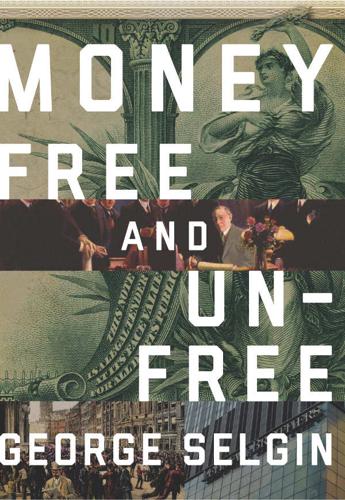
Money Free and Unfree
by
George A. Selgin
Published 14 Jun 2017
According to Thomas Humphrey, a former Federal Reserve economist and an authority on classical LOLR doctrine, it has performed them very badly indeed, honoring the classical doctrine “more in the breach than in the observance” (Humphrey 2010: 22). While Humphrey does identify episodes—including the October 1987 stock market crash, the approach of Y2K, and (in some respects) the aftermath of 9/11—in which the Fed seems to have followed Bagehot’s advice, he notes that this has not been its usual practice.31 During the Great Depression, for example, the Fed departed from Bagehot’s doctrine first by failing to lend to many solvent but illiquid banks, and later (in 1936–37) by deliberately reducing solvent banks’ supply of liquid free reserves (Humphrey 2010.: 23).
…
Notwithstanding Cecchetti and Disyatat’s (2010: 12) claim that “a systemic event almost surely requires lending at an effectively subsidized rate . . . while taking collateral of suspect quality,” open market operations have in fact proven capable of preserving market liquidity even following such major financial shocks as the failure of the Penn Central Railroad, the stock market crash of October 1987, the Russian default of 1998, Y2K, and the 9/11 terrorist attacks.34 The subprime crisis has, however, led many experts to conclude that it is Bagehot’s precepts, rather than direct central bank lending to troubled firms, that have become obsolete. Some justify recent departures from Bagehot’s rules, or at least from strict reliance on open market operations, on the grounds that the crisis was one in which the wholesale lending market itself was crippled, so that even solvent intermediaries could not count on staying liquid had the Fed supplied liquidity through open market operations alone.
…
Despite the rescues it undertook, it kept the total size of its balance sheet more or less unchanged, offsetting its emergency lending with corresponding sales of Treasury securities. Consequently, instead of adding to the overall supply of liquid funds, as it should have done were it following Bagehot’s dicta (and as it had done, with good results, during past crises including Y2K and 9/11), the Fed chose to redistribute such funds from presumably solvent financial institutions to more doubtful ones (Labonte 2009: 28–29). Fed officials defend this course on the grounds that it allowed it to maintain its announced interest rate target. But the argument makes little sense, since in hindsight it seems clear that the occasion justified lowering the target.

Vancouver Like a Local
by
Jacqueline Salomé
g Vintage Gems g Contents Google Map MINTAGE MALL Map 4; 245 E Broadway, Mount Pleasant; //loving.standing.reserve; www.mintage-mall.business.site We can’t talk about Vancouver’s vintage scene and not mention Mintage Mall, a labyrinthine marketplace housing various vintage retailers. Weekends in the mall are particularly busy, with teenagers eyeing up ’90s bomber jackets in Remixed Vintage and students trying on Low Life’s rock band tees. And our favorite concession? It’s hard to resist the Y2K-inspired jewelry by Oomph (with its colorful pom-poms, beads, and plastic dinosaurs). The mall even has an in-house café for when you need a post-shopping pick-me-up. g Vintage Gems g Contents Google Map F AS IN FRANK Map 4; 2425 Main Street, Mount Pleasant; ///hopeless.exhale.itself; www.fasinfrankvintage.com F as in Frank is an all-gender streetwear lover’s paradise, teeming with secondhand Levis, crewnecks, Nike deadstock, leather and hand-cropped Harley Davidson tees.
…
g Cool Clubs g Contents Google Map OMBRE SHOW LOUNGE Map 2; 350 Water Street, Gastown; ///launch.intent.thinking; www.ombreshowlounge.com Wannabe B-boys (and some real ones) come to bust a move at this hip-hop club. Crammed tight with young folks and running regular theme nights (including Y2K and Destiny’s Child throwbacks), it’s the perfect place to show off your street dancing skills. g Cool Clubs g Contents Google Map GALLERY Map 6; 1312 SW Marine Drive, Marpole; ///hobbit.donation.silence; https://galleryvancouver.com Fancy a night out Vegas-style? You better head to Gallery.

A Place for Everything: The Curious History of Alphabetical Order
by
Judith Flanders
Published 6 Feb 2020
G is for Government: Bureaucracy and the Office, from the Sixteenth Century to the French Revolution 8. H is for History: Libraries, Research and Extracting in the Seventeenth and Eighteenth Centuries 9. I is for Index Cards: From Copy Clerks to Office Supplies in the Nineteenth Century 10. Y is for Y2K: From the Phone Book to Hypertext in the Twentieth and Twenty-first Centuries Timeline Bibliography Footnotes Notes Index List of Illustrations IN THE TEXT 1. A round robin letter of 1621, petitioning for the right of Huguenots to settle in the New World. 2. The first page of a letter in rebus form from Lewis Carroll, the author of Alice’s Adventures in Wonderland (1865). 3.
…
Its report was categorical: in offices across the country, numerically ordered files were routinely being replaced by alphabetically based ones. ‘There were several instances of changes from the numerical to the alphabetical’, but ‘In no case did we find that an alphabetical . . . file had been supplanted by a numerical [one].’34 The alphabet reigned supreme. 10 Y is for Y2K From the Phone Book to Hypertext in the Twentieth and Twenty-first Centuries In the twentieth century, alphabetical order appeared to be immortal. No longer could anyone at home in an alphabetic writing system remember a time when the automatic response to ordering had not been alphabetical.
…
(Dewey himself had chronic woman trouble, or, rather, women had chronic trouble with Dewey: he was forced to resign from the American Library Association after no fewer than four women complained that he had assaulted them in a single ten-day period in 1905. He was, in addition, a notable anti-Semite and racist, even for those notably anti-Semitic and racist times, also being requested to stand down from his position as Librarian for New York State owing to his endorsement of clubs that operated Christian-whites-only policies.) 10. Y is for Y2K: From the Phone Book to Hypertext in the Twentieth and Twenty-first Centuries * A charming, frequently repeated and possibly even true anecdote tells how the occupation of switchboard operator came to be dominated by women. Initially, the story runs, these jobs went to the boys who had previously been employed to deliver telegrams.

Your Computer Is on Fire
by
Thomas S. Mullaney
,
Benjamin Peters
,
Mar Hicks
and
Kavita Philip
Published 9 Mar 2021
The rise of Asian technology manufacture and services and the shifting domain of economic competition regularly makes headlines and bestseller lists. The 1990s had brought Indian data-entry workers to the global stage through the Y2K crisis. Western corporations, finding skilled computer professionals who fixed a programming glitch for a fraction of the cost of Western labor rates, did not want to give up the valuable technological labor sources they had discovered. Software “body shopping” and outsourced technical labor grew significantly in the decade following Y2K. By 2015, Asian countries had taken the global lead by most indicators of economic progress, particularly in the technical educational readiness of workforces and in infrastructural and technical support for continued development.
…
Russell Neuman (Ann Arbor: University of Michigan Press, 2010). 18. Janet Abbate, Inventing the Internet (Cambridge, MA: MIT Press, 1999). 19. William L. Cats-Baril and Tawfik Jelassi, “The French Videotex System Minitel: A Successful Implementation of a National Information Technology Infrastructure,” MIS Quarterly 18, no. 1 (1994). 20. Paul N. Edwards, “Y2K: Millennial Reflections on Computers as Infrastructure,” History and Technology 15 (1998); Brian Kahin and Janet Abbate, eds., Standards Policy for Information Infrastructure (Cambridge, MA: MIT Press, 1995). 21. J.-C. Plantin et al., “Infrastructure Studies Meet Platform Studies in the Age of Google and Facebook,” New Media & Society 10 (2016). 22.
…
See also Thompson hack feature, not a, 4, 7, 18–19, 148–151, 153, 214, 223, 262, 303 Bureaucracy, 78, 80, 86t, 88, 109, 150, 175 Burmese, 339, 344, 354 Bush, Randy, 324–326 Bush, Vannevar, 348 C (programming language), 273–277, 279, 281–284, 286 backslash, 279, 281–282 commands, 279, 282–283, 285, 287 C++, 273, 275, 290 C#, 273 Objective C, 273 Cable, 5, 100–102, 104, 107, 111, 321 infrastructure, 103–104 internet, 95, 98–99 materials, 94 networks, 5 television, 315, 317 undersea, 72, 93, 99 Caldwell, Samuel Hawks, 348–350 Call centers, 5, 56 Amazon, 37 Indian, 105, 298, 302, 305, 307 Cambridge Analytica, 118 Capital, 6, 31, 202, 316, 378, 380 cultural, 299 global, 88 intensive, 277, 313–314 investment, 44, 301, 314–315, 332 physical, 46, 107 venture, 15–16, 53, 175, 255–256, 267 Capitalism, 46, 87, 171, 368 welfare, 160–161, 167, 170–174 Carceral state, 206, 208 Carlin, George, 59 Carnegie Mellon University, 257 Cart Life, 241 Cartography, 95–96, 107 Catholicism, 171, 173–175 CCM (Commercial content moderation), 56–58, 62, 66, 122 CDC (Center for Disease Control), 20 CDU (Christian Democratic Union), 170 Cellular phones (cell), 7, 306, 317, 332, 365, 378 and M-PESA, 7, 322, 326–328, 333 Safaricom, 326–328, 333 SIM card, 326–328 Chex Quest, 237 Child pornography, 6, 117–125, 127–130 limit case, 129 server storage, 383 Child Victim Identification Program, 122–123, 125 China, 7, 45, 104, 227 accent bias, 188, 189t apps, 332 Communists, 348 IMEs, 351, 357 Input Wars, 351 language, 188 People’s University (Beijing), 357 rising superpower, 153 writing interfaces, 381 Chinese keyboard, 345, 345f, 348–350, 353, 367 Chinese typewriter, 346, 350 dian, 351, 352f, 352 difficulty score, 344–345 MingKwai keyboard, 346–349, 347f, 353 and QWERTY keyboard, 338–339, 342, 346, 350–351, 353–354, 357 retrieval system, 346–347, 349–350, 353 script, 221 search writer, 350 Christian, 161, 170–171, 187 Central Intelligence Agency, 80 Cisgender, 154 Clark, David D., 71 Class bias, 4–6, 88, 136, 161–162, 174, 184, 265 capitalist, 171 dominant, 180–181, 190 equality, 80, 86t exposure, 301–302 India, 299, 302–303, 308 investor, 53 lower, 162 management, 142 Marxist, 171–173 meritocracy, 138, 150 middle, 73, 80, 86, 139, 241 technocratic, 21 upper, 300- 302 upper-middle, 18 working, 79, 141–142, 288, 301, 309 Cloud definition, 33–34 and electricity, 33–34, 44 enables other industries, 46 as factory, 7, 35–36, 42–43, 45–46, 321 and infrastructure, 33–35 kilowatt-hours required, 34 physical, 31–32, 34, 44–46 supply chain, 45 Code Arabic, 191 Assembly, 275, 277, 281, 286 Black Girls Code, 255, 263 breaking, 138–139 (Colossus) Code.org, 253, 255, 259 Code2040, 255, 260 Coding, Girls Who Code, 253, 255, 263 cultural, 302 digital, 284, 289 dress, 145, 164–165, 298 education, 6 empire, 76 #YesWeCode, 253, 264–266 HLL (high-level language), 275, 277–278, 284, 290 Hour of Code, 253, 263–264 is law, 126 platforms, 321 robotics, 201, 203, 205 social media, 59 source, 273–292 passim (see also Source code) switching, 184, 190 typing, 188, 351 writers, 24, 145, 256–259, 262–267, 300, 381 Yes We Code, 255 Code.org, 253, 255, 259 Code2040, 255, 260 Coding, Girls Who Code, 253, 255, 263 Cold War, 137, 152, 169 computer networks, 75–76, 83–84 network economy, 87 technology, 17–18, 94, 137 typewriter, 227 Collision detection, 242–243 Colonialism, 19, 91, 93, 105, 109, 245 cable networks, 93, 99, 101 colonization, 186, 378 digital, 331 Europe, 110, 147–148, 343 internet, 111, 129 language as, 186–188 metaphors, 94 stereotypes, 96, 102, 104 technocolonialist, 103–104 Colossus, 17, 139, 143 Comcast, 35 Commercial content moderation (CCM), 56–58, 62, 66, 122 Commodity computational services, 33 Common sense, 73, 96 Communications Decency Act, 60–61 Compaq, 318 Complex scripts, 188, 222, 344–345, 350 CompuServe, 320, 325 Computer anthropomorphized (see Robots) conservative force, 15 control and power, 23 critiques of, 5 men, 142 utility, 35, 320 humans as, 43, 140, 384 Computer science, 18, 58, 66, 112, 367 artificial intelligence, 58, 66 education, 256, 263 Thompson hack, 275, 291 women in, 254 Computing, 135–155 passim artificial intelligence, 56 Britain and, 21, 138, 148–152 Chinese, 350–351, 353–354 and class, 142–143 cloud, 78, 87 companies, 13, 18–19 devices, 40–41, 45 education, 368 and empire, 147–148 environment, 382 global, 350, 377 hacking, 289–291 history of, 7, 17, 35, 38, 43, 46, 137, 153–154 Latin alphabet, 357 masculinity, 263 management, 23 manufacturing, 39 media, 4–8, 377–380 meritocracy narratives, 137, 153–154, 381 networks, 77, 199, 320–321 personal, 354 power, 328 software, 318 typing and, 220, 226, 337, 339, 341, 344 underrepresented groups and, 253, 255–256, 264, 266 and women, 17, 43, 135, 139–142, 144–147 Concorde, 145, 146f Congress, 11–12, 82, 154 Content antisemitic, 265 app, 319, 321 child abuse, 118–119, 122, 125 commercial content moderation (CCM), 56–58, 62, 66, 122 filtering, 57 illegal, 62 internet, 317, 319 moderation, 54–57, 123, 126, 380–382 moderators, 5, 380–382 review, 121, 128–130 social media, 59, 61–63, 66, 232, 321, 329–331 terrorism, 57, 66, 130 violent, 117 web, 317 Contractor, 35, 53, 56, 266 CorelDraw, 298 COVID-19, 14, 20, 377 Cox, Chris, 61 Creating Your Community, 266 Creative destruction, 4 Crisis, 4, 6, 16, 21, 150, 235, 297, 383–384 Covid-19, 20 identity, 58–60 point, 13 Y2K, 104 CSNET, 81 Cybernetics, 75, 78–80, 83, 86, 86t, 88 cyberneticist, 77, 81–82 Cyberpunk, 100–101, 107, 110 Cybersyn, 75, 79–80, 85, 86t CyberTipline, 125 Dalton gang, 287–289 DARPA (Defense Advanced Research Projects Agency), 383 Dartmouth College, 235 Data biased, 66, 205 due process, 206 objective, 205 processing, 38, 40–41, 119, 206, 300 socially constructed, 205 value-neutral, 372 Data broker Salesforce, 87 SAS, 87 Data entry, 5, 104, 150, 367 David, Paul, 337–338, 351, 353, 357–358 Davies, Donald, 83 Death, 15, 120, 186, 371, 373, 379 Covid-19, 12 gaming, 233–234, 236 life-or-, 6, 206, 266 technology and dying well, 378 Decolonization, 91, 104, 111–112 Deep Blue, 7 De Kosnik, Benjamin, 108–109, 110 Dell, 318 Delphi, 290 Democratic Republic of Congo, 45 Denmark, 44, 128–129 de Prony, Gaspard, 39–40 Design values, 73–76, 84–88 American, 81–84 Chilean, 79–81 Soviet, 77–78 state, 75, 78, 80, 83, 86, 86t Devanagari, 339, 342, 344, 350, 354 Developing world, 93, 103, 105, 180, 325, 330–332 Devi, Poonam, 304 Diamond, Jared, 338, 351, 353, 357–358 Difference Engine, 40 Digital coding, 284, 289 colonialism, 91, 93–94, 103, 331 computers, 38, 41, 138 connectivity, 379 economies, 13, 22, 29, 31, 33, 35, 45, 145 forensic work, 123, 126, 128, 354 future, 101 gaming, 241 imperialism, 186–187, 191 inclusion, 303 infrastructures, 126, 151, 155 invisibility, 98, 100, 204 labor, 6, 147, 101, 354 materiality, 5 networks, 83 platforms, 66, 118, 199, 201 politics and, 110, 112 predigital, 96–97, 152 revolution, 29, 32 surveillance state, 119, 130 technology, 40, 64, 123–124, 200, 382 vigilantism, 120 Disability, 12, 15, 160 Disasters, 11–15, 19–20, 22–24, 54, 204, 338, 364 Discrimination.
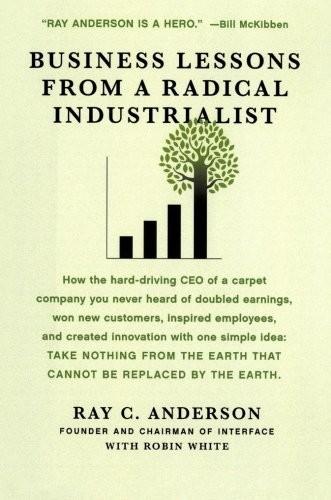
Business Lessons From a Radical Industrialist
by
Ray C. Anderson
Published 28 Mar 2011
Think you could make the case for reducing them by over half? Our companywide waste elimination measures have put a cumulative $405 million of avoided costs back into our pockets. Not only have these measures paid for themselves, they helped us ride out the deepest, longest marketplace decline—the “perfect storm” of Y2K’s diversion of capital to computer systems, the bursting of the dot-com bubble, and 9/11—in our industry’s history. Even better, taking a sledgehammer to conventional wisdom has thrown innovation into overdrive. We’ve patented machines, processes, and products that do a whole lot more with a whole lot less, and better, too.
…
In the exercises people were urged to always seek out that better way, the one my professors at Georgia Tech promised was out there, and to view our question-everything approach to problem solving as a worthy challenge, not as a threat. It also encouraged people to move outside their comfort zones and let go of their old, established patterns of behavior. People were even given permission to fail, but to learn from failure and try again. In January 2000, after the Y2K buildup had already put our marketplace into decline and, though we didn’t know it, the dot-com collapse was imminent, I called together our top 125 managers from around the world to see how we were all doing. Once again, everything was on the table and no holds were barred. The company’s mission, its vision, and the strategies we’d adopted to achieve it were up for grabs.
…
mineral water industry minority-owned services Mission Zero (Interface’s) modern culture, flawed mindset of mollusks moon, going to Moore, Betty “Mount Sustainability” Muir, John municipalities, recycling efforts of Murray, William Hutchinson Napa Valley, California National Association of Evangelicals National Park Service Native Energy nature as infrastructure learning from productivity of, must not be diminished recycling by, with zero waste services of needs, vs. wants nega-barrels nega-energy nega-watts Nelson, Eric Nelson, Gaylord Nestlé Waters Newcomen, Thomas Newton, Mark New York City, recycling in Next Ascent summit meeting nitrogen oxide noblemen, and evolution of ethics Northern Ireland Interface facility nuclear industry, subsidies to nylon inputs of recycled substitutes for Oakey, David ocean, as carbon sink office of the future carpet tiles in off-quality product oil discovery of drilling for global demand global production imports oil consumption, like drug addiction oil exporting countries, profits of oil industry costs of, passed on to society subsidies to sustainability programs of, so-called oil prices effect on driving price shock of 1972 rising OPEC orders, getting, like a heartbeat organized chaos Orr, David overshoot packaging reuse of as waste Pandel division paper, recycling of paradigms, new Parnell, Lindsey Patagonia Paulson, Henry payback period Paydos, Paul PepsiCo perfect storm of 2001 (Y2K, dot-com bubble, 9/11) perpetual motion machine, sustainability likened to Peterbilt pharmaceuticals, in drinking water Picard, John Pickens, T. Boone Pike, Judy Pinchot, Gifford and Libba Play to Win team-building exercises pollutants in manufacturing list of, from the old Interface substitutes for polylactic acid (PLA) population, environmental impact of population crash positive trends potato chips, environmentally sound production of poverty, global, challenge of power purchasing agreement (PPA) precautionary principle president actions that can be taken without congressional approval to mitigate climate change executive powers of leadership from new, advice for Presidential Climate Action Project (PCAP) President’s Council on Sustainable Development (PCSD) Price-Anderson Act problems, interconnected problem-solving, Einstein on Procter & Gamble public-private partnerships PVCs PZEV vehicles QUEST: Quality Utilizing Employees’ Suggestions and Teamwork Quinn, Daniel Ishmael rail, transportation by rainfall, run off from eroded land raw materials, reducing the amount and weight of RecycleBank RecycleBank Dollars recycled materials contaminated, expense of using price of replacing virgin raw materials recycling advantages of closed-loop by consumers incentives for nature’s way 100 percent goal ReEntry 2.0 regulations accused of shackling the free market effect of slowing environmental harm lag behind science regulators, keeping them at bay, with sustainability promise regulatory compliance reindeer, population crash of religion failure of institutions to solve environmental problems and science, conflict renewable energy goal of 100 percent renewable energy credits (REC) Re:Source Americas resources assumption that they are unlimited efficient use of peaking and decline of running out of respect, vs. autocratic management Riordan, Tim Rittenhouse, William Riverkeeper Robèrt, Karl-Henrik The Natural Step Rockland React-Rite Interface facility Rogers, Jim Roosevelt, Franklin Roosevelt, Theodore Roper, Anita Ruben, Andy St.
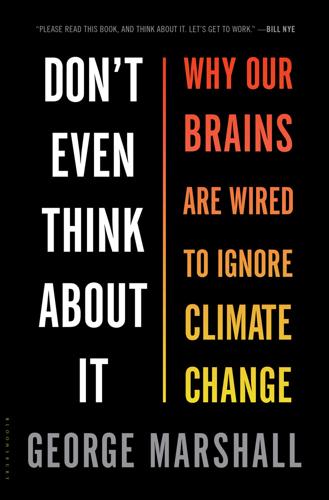
Don't Even Think About It: Why Our Brains Are Wired to Ignore Climate Change
by
George Marshall
Published 18 Aug 2014
Take, for example, a threat that combined an unprecedented technological cause (what Paul Slovic would call an unknown risk) with a precise and deeply symbolic timing: the prediction that the world’s computer systems would collapse when the date changed on New Year’s Eve 1999. I remember vividly my local bookshop building an entire display of the opportunist books warning of the coming social collapse from the “Y2K computer time bomb,” after which law and order would break down, starving mobs would roam the streets, and, as the antinuclear campaigner Helen Caldicott warned, accidental missile launchings could lead to “Armageddon.” And, of course, nothing happened in either the United States, which had poured an estimated $134 billion into the pockets of software analysts and computer programmers, or in South Korea, Italy, or Ukraine, countries that had done next to nothing.
…
And, of course, nothing happened in either the United States, which had poured an estimated $134 billion into the pockets of software analysts and computer programmers, or in South Korea, Italy, or Ukraine, countries that had done next to nothing. On January 1, a few slot machines and cash registers became momentarily confused, that was all. Campaigners have always struggled with climate change’s un-engaging timeline and tried to find ways to generate the same compelling sense of urgency and symbolism as Y2K. In 1947, the Bulletin of Atomic Scientists had hit on the novel image of the Doomsday Clock, which is always close to striking midnight, to dramatize the risks of nuclear weapons. In 2012, the hands were moved to five minutes to midnight to recognize the coming climate change catastrophe, and the following year, Rajendra Pachauri, the head of the Intergovernmental Panel on Climate Change, announced its latest report with the words “We have five minutes before midnight.”
…
Time magazine’s story on the report, headlined “The Worst Is Yet to Be,” told us that “in Los Angeles a few gaunt survivors of a plague desperately till freeway center strips, backyards and outlying fields, hoping to raise a subsistence crop.” And still the warnings come. There is mad cow disease, bird flu, swine flu, Y2K, Iraqi weapons of mass destruction, terrorist scares that never eventuate, and various health, nutritional, and economic “time bombs.” All of these are entirely plausible and many are as valid as ever. It is just that they never seem to happen when anyone says they will, and people have only a limited capacity for staying on red alert.

Endurance: A Year in Space, a Lifetime of Discovery
by
Scott Kelly
and
Margaret Lazarus Dean
Published 14 Aug 2017
We were also coming up against another type of conflict: NASA wanted us safely back on Earth before January 1, 2000, because there was so much anxiety about whether equipment would continue to work properly because of Y2K. We joked that NASA was concerned the space shuttle computers would divide by zero and we would travel through a wormhole and end up on the other side of the universe. But the truth was less exciting. Specifically, the concern had to do with the possibility that we would have to land at Edwards Air Force Base in California. The ground support equipment at Kennedy Space Center was all Y2K compliant, as was the orbiter itself, but the equipment at Edwards had not yet been certified. Personally, I thought the public would find it reassuring if NASA, the agency that had put a man on the moon and created a reusable space plane, was so little concerned about Y2K that they flew in space anyway.
…
Personally, I thought the public would find it reassuring if NASA, the agency that had put a man on the moon and created a reusable space plane, was so little concerned about Y2K that they flew in space anyway. “We haven’t made a definite decision yet,” Jim said. “But we’re ninety-nine percent sure this is what we’re going to do.” He left, and we talked about what this delay would mean for each of us. All of my crewmates seemed pleased—they wanted to go home. I was the only one who didn’t want to see the launch postponed. I had come here with the expectation of going to space, and I didn’t want to give that up and wait weeks before we actually launched.
…
The following day, Mike Foale and Claude Nicollier performed their spacewalk, replacing Hubble’s central computer and a fine-guidance sensor. On day six, Steve and John went outside again, this time to install a transmitter and a solid-state recorder. There had been a fourth planned spacewalk, but it was canceled in order to get us back on Earth before Y2K. Day seven of the mission, the next-to-last day, marked the first time a space shuttle would be spending Christmas in orbit (and, it turns out, the last). We deployed Hubble, and after accepting congratulations from the ground for our success, Curt decided it was time to make his Christmas speech to mission control.
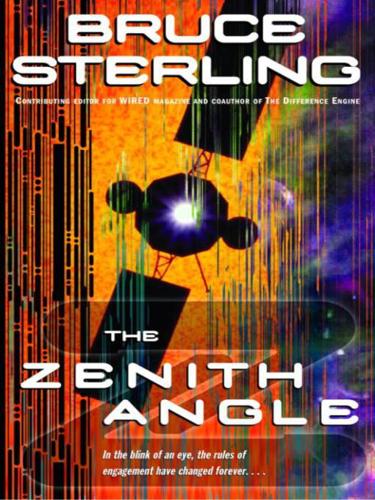
The Zenith Angle
by
Bruce Sterling
Published 27 Apr 2004
There was a bad scene on the TV, but he was prepared for it. He had been here before, in his imagination. In 1999, Mondiale had spent over 130 million dollars chasing down Y2K bugs, with many firm assurances from security experts that the planet would fall apart, otherwise. Van had believed it, too. He’d felt pretty bad about that belief, later. When computers hadn’t crashed worldwide and the world hadn’t transformed itself overnight into a dark Mad Max wasteland, that had been a personal humiliation for Van. At least the Y2K money had really helped a big crowd of old programmers who had never saved up for retirement. Van’s New Year’s resolution for the year 2001 had been to never panic over vaporware again.
…
The nooks and crannies of the Rocky Mountains had Space Force generals, and ancient hippies, and silver miners, and jack Mormons. “Out here in God’s country, we got ourselves some dropouts!” crowed Hickok, drunkenly pounding his leg with his rocklike fist. “The real off-the-grid people! Polygamists. Unabomber types. And there’s survivalists!” During the Y2K panics of 1999, Van had come to know quite a lot about survivalists. And what he knew, Van didn’t like. Survivalists were people of bad faith. Their faith was that civilization would break down, and ought to break down, and deserved to break down. That no one in charge should ever be trusted. That all authorities were useless, deluded, or evil.
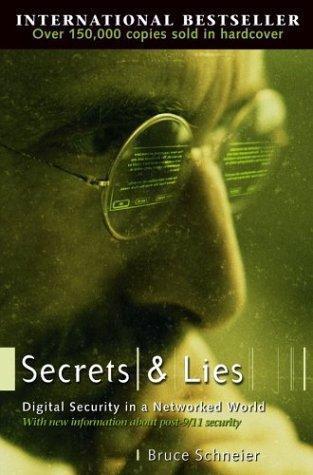
Secrets and Lies: Digital Security in a Networked World
by
Bruce Schneier
Published 1 Jan 2000
Remember that perfect solutions are not required, but systems that can be completely broken are unacceptable. And good security processes are essential to make products work. It is prudent to prepare for the worst. Attacks and attackers always get better, and systems fielded today could be in place 20 years from now. The real lesson of Y2K was the amount of ancient computer code out there: code that was updated for Y2K compliance rather than replaced. We’re still stuck with mistakes made in analog cellular systems decades ago, and digital cellular systems years ago. We’re still stuck with an insecure Internet, and insecure password-protected systems. But by the same token, we’re still stuck with insecure door locks, assailable financial systems, and an imperfect legal system.
…
In 1991, employees at Charles Schwab in San Francisco used the company’s e-mail system to buy and sell cocaine. A convicted child rapist working in a Boston-area hospital stole a co-worker’s password, paged through confidential patient records, and made obscene phone calls. Insiders are not necessarily employees. They can be consultants and contractors. During the Y2K scare, many companies hired programmers from China and India to update old software. Rampant xenophobia aside, any of those programmers could have attacked the systems as an insider. Most computer security measures—firewalls, intrusion detection systems, and so on—try to deal with the external attacker, but are pretty much powerless against insiders.
…
Denial-of-service attacks on a bank: Interfere with communications with customers or merchants. Physically damage or destroy the bank’s secure hardware. And systemwide denial-of-service attacks: Somehow force the system to upgrade itself, before anyone knows how to deal with it. (You can think of this attack as Y2K.) Deny service to many or all banks. Interfere with communications with customers or merchants. Destroy top-level certifying public key in PKI-based systems. We can also use criminal attacks to destabilize the system: Start mass-producing counterfeit cards. Use massive, widespread fraud to bring down system.

The Rational Optimist: How Prosperity Evolves
by
Matt Ridley
Published 17 May 2010
In my own adult lifetime, I have listened to implacable predictions of growing poverty, coming famines, expanding deserts, imminent plagues, impending water wars, inevitable oil exhaustion, mineral shortages, falling sperm counts, thinning ozone, acidifying rain, nuclear winters, mad-cow epidemics, Y2K computer bugs, killer bees, sex-change fish, global warming, ocean acidification and even asteroid impacts that would presently bring this happy interlude to a terrible end. I cannot recall a time when one or other of these scares was not solemnly espoused by sober, distinguished and serious elites and hysterically echoed by the media.
…
That does not make the optimists right, but the poor track record of pessimists should at least give one pause. After all, we have been here before. ‘I want to stress the urgency of the challenge,’ said Bill Clinton once: ‘This is not one of the summer movies where you can close your eyes during the scary parts.’ He was talking not about climate change but about Y2K: the possibility that all computers would crash at midnight on 31 December 1999. Decarbonising the economy In short, a warmer and richer world will be more likely to improve the well-being of both human beings and ecosystems than a cooler but poorer one. As Indur Goklany puts it, ‘neither on grounds of public health nor on ecological factors is climate change likely to be the most important problem facing the globe this century.’
…
Abbasids 161, 178 Abelard, Peter 358 aborigines (Australian): division of labour 62, 63, 76; farming 127; technological regress 78–84; trade 90–91, 92 abortion, compulsory 203 Abu Hureyra 127 Acapulco 184 accounting systems 160, 168, 196 Accra 189 Acemoglu, Daron 321 Ache people 61 Acheulean tools 48–9, 50, 275, 373 Achuar people 87 acid rain 280, 281, 304–6, 329, 339 acidification of oceans 280, 340–41 Adams, Henry 289 Aden 177 Adenauer, Konrad 289 Aegean sea 168, 170–71 Afghanistan 14, 208–9, 315, 353 Africa: agriculture 145, 148, 154–5, 326; AIDS epidemic 14, 307–8, 316, 319, 320, 322; colonialism 319–20, 321–2; demographic transition 210, 316, 328; economic growth 315, 326–8, 332, 347; international aid 317–19, 322, 328; lawlessness 293, 320; life expectancy 14, 316, 422; per capita income 14, 315, 317, 320; poverty 314–17, 319–20, 322, 325–6, 327–8; prehistoric 52–5, 65–6, 83, 123, 350; property rights 320, 321, 323–5; trade 187–8, 320, 322–3, 325, 326, 327–8; see also individual countries African-Americans 108 agricultural employment: decline in 42–3; hardships of 13, 219–20, 285–6 agriculture: early development of 122–30, 135–9, 352, 387, 388; fertilisers, development of 135, 139–41, 142, 146, 147, 337; genetically modified (GM) crops 28, 32, 148, 151–6, 283, 358; hybrids, development of 141–2, 146, 153; and trade 123, 126, 127–33, 159, 163–4; and urbanisation 128, 158–9, 163–4, 215; see also farming; food supply Agta people 61–2 aid, international 28, 141, 154, 203, 317–19, 328 AIDS 8, 14, 307–8, 310, 316, 319, 320, 322, 331, 353 AIG (insurance corporation) 115 air conditioning 17 air pollution 304–5 air travel: costs of 24, 37, 252, 253; speed of 253 aircraft 257, 261, 264, 266 Akkadian empire 161, 164–5 Al-Ghazali 357 Al-Khwarizmi, Muhammad ibn Musa 115 Al-Qaeda 296 Albania 187 Alcoa (corporation) 24 Alexander the Great 169, 171 Alexander, Gary 295 Alexandria 171, 175, 270 Algeria 53, 246, 345 alphabet, invention of 166, 396 Alps 122, 178 altruism 93–4, 97 aluminium 24, 213, 237, 303 Alyawarre aborigines 63 Amalfi 178 Amazon (corporation) 21, 259, 261 Amazonia 76, 138, 145, 250–51 amber 71, 92 ambition 45–6, 351 Ames, Bruce 298–9 Amish people 211 ammonia 140, 146 Amsterdam 115–16, 169, 259, 368 Amsterdam Exchange Bank 251 Anabaptists 211 Anatolia 127, 128, 164, 165, 166, 167 Ancoats, Manchester 214 Andaman islands 66–7, 78 Andes 123, 140, 163 Andrew, Deroi Kwesi 189 Angkor Wat 330 Angola 316 animal welfare 104, 145–6 animals: conservation 324, 339; extinctions 17, 43, 64, 68, 69–70, 243, 293, 302, 338–9; humans’ differences from other 1, 2–4, 6, 56, 58, 64 Annan, Kofi 337 Antarctica 334 anti-corporatism 110–111, 114 anti-slavery 104, 105–6, 214 antibiotics 6, 258, 271, 307 antimony 213 ants 75–6, 87–8, 192 apartheid 108 apes 56–7, 59–60, 62, 65, 88; see also chimpanzees; orang-utans ‘apocaholics’ 295, 301 Appalachia 239 Apple (corporation) 260, 261, 268 Aquinas, St Thomas 102 Arabia 66, 159, 176, 179 Arabian Sea 174 Arabs 89, 175, 176–7, 180, 209, 357 Aral Sea 240 Arcadia Biosciences (company) 31–2 Archimedes 256 Arctic Ocean 125, 130, 185, 334, 338–9 Argentina 15, 186, 187 Arikamedu 174 Aristotle 115, 250 Arizona 152, 246, 345 Arkwright, Sir Richard 227 Armenians 89 Arnolfini, Giovanni 179 art: cave paintings 2, 68, 73, 76–7; and commerce 115–16; symbolism in 136; as unique human trait 4 Ashur, Assyria 165 Asimov, Isaac 354 Asoka the Great 172–3 aspirin 258 asset price inflation 24, 30 Assyrian empire 161, 165–6, 167 asteroid impacts, risk of 280, 333 astronomy 221, 270, 357 Athabasca tar sands, Canada 238 Athens 115, 170, 171 Atlantic Monthly 293 Atlantic Ocean 125, 170 Attica 171 Augustus, Roman emperor 174 Augustus the Strong, Elector of Saxony 184–5 Australia: climate 127, 241, 300, 334; prehistoric 66, 67, 69–70, 127; trade 187; see also aborigines (Australian); Tasmania Austria 132 Ausubel, Jesse 239, 346, 409 automobiles see cars axes: copper 123, 131, 132, 136, 271; stone 2, 5, 48–9, 50, 51, 71, 81, 90–91, 92, 118–19, 271 Babylon 21, 161, 166, 240, 254, 289 Bacon, Francis 255 bacteria: cross fertilisation 271; and pest control 151; resistance to antibiotics 6, 258, 271, 307; symbiosis 75 Baghdad 115, 177, 178, 357 Baines, Edward 227 Baird, John Logie 38 baking 124, 130 ‘balance of nature’, belief in 250–51 Balazs, Etienne 183 bald eagles 17, 299 Bali 66 Baltic Sea 71, 128–9, 180, 185 Bamako 326 bananas 92, 126, 149, 154, 392 Bangladesh 204, 210, 426 Banks, Sir Joseph 221 Barigaza (Bharuch) 174 barley 32, 124, 151 barrels 176 bartering vii, 56–60, 65, 84, 91–2, 163, 356 Basalla, George 272 Basra 177 battery farming 104, 145–6 BBC 295 beads 53, 70, 71, 73, 81, 93, 162 beef 186, 224, 308; see also cattle bees, killer 280 Beijing 17 Beinhocker, Eric 112 Bell, Alexander Graham 38 Bengal famine (1943) 141 benzene 257 Berlin 299 Berlin, Sir Isaiah 288 Bernard of Clairvaux, St 358 Berners-Lee, Sir Tim 38, 273 Berra, Yogi 354 Besant, Annie 208 Bhutan 25–6 Bible 138, 168, 396 bicycles 248–9, 263, 269–70 bin Laden, Osama 110 biofuels 149, 236, 238, 239, 240–43, 246, 300, 339, 343, 344, 346, 393 Bird, Isabella 197–8 birds: effects of pollution on 17, 299; killed by wind turbines 239, 409; nests 51; sexual differences 64; songbirds 55; see also individual species bireme galleys 167 Birmingham 223 birth control see contraception birth rates: declining 204–212; and food supply 192, 208–9; and industrialisation 202; measurement of 205, 403; population control policies 202–4, 208; pre-industrial societies 135, 137; and television 234; and wealth 200–201, 204, 205–6, 209, 211, 212; see also population growth Black Death 181, 195–6, 197, 380 Black Sea 71, 128, 129, 170, 176, 180 blogging 257 Blombos Cave, South Africa 53, 83 blood circulation, discovery of 258 Blunt, John 29 boat-building 167, 168, 177; see also canoes; ship-building Boers 321, 322 Bohemia 222 Bolivia 315, 324 Bolsheviks 324 Borlaug, Norman 142–3, 146 Borneo 339 Bosch, Carl 140, 412 Botswana 15, 316, 320–22, 326 Bottger, Johann Friedrich 184–5 Boudreaux, Don 21, 214 Boulton, Matthew 221, 256, 413–14 bows and arrows 43, 62, 70, 82, 137, 251, 274 Boxgrove hominids 48, 50 Boyer, Stanley 222, 405 Boyle, Robert 256 Bradlaugh, Charles 208 brain size 3–4, 48–9, 51, 55 Bramah, Joseph 221 Branc, Slovakia 136 Brand, Stewart 154, 189, 205 Brando, Marlon 110 brass 223 Brazil 38, 87, 123, 190, 240, 242, 315, 358 bread 38, 124, 140, 158, 224, 286, 392 bridges, suspension 283 Brin, Sergey 221, 405 Britain: affluence 12, 16, 224–5, 236, 296–7; birth rates 195, 200–201, 206, 208, 227; British exceptionalism 200–202, 221–2; climate change policy 330–31; consumer prices 24, 224–5, 227, 228; copyright system 267; enclosure acts 226, 323, 406; energy use 22, 231–2, 232–3, 342–3, 368, 430; ‘glorious revolution’ (1688) 223; income equality 18–19, 218; industrial revolution 201–2, 216–17, 220–32, 255–6, 258–9; life expectancy 15, 17–18; National Food Service 268; National Health Service 111, 261; parliamentary reform 107; per capita income 16, 218, 227, 285, 404–5; productivity 112; property rights 223, 226, 323–4; state benefits 16; tariffs 185–6, 186–7, 223; see also England; Scotland; Wales British Empire 161, 322 bronze 164, 168, 177 Brosnan, Sarah 59 Brown, Lester 147–8, 281–2, 300–301 Brown, Louise 306 Bruges 179 Brunel, Sir Marc 221 Buddhism 2, 172, 357 Buddle, John 412 Buffett, Warren 106, 268 Bulgaria 320 Burkina Faso 154 Burma 66, 67, 209, 335 Bush, George W. 161 Butler, Eamonn 105, 249 Byblos 167 Byzantium 176, 177, 179 cabbages 298 ‘Caesarism’ 289 Cairo 323 Calcutta 190, 315 Calico Act (1722) 226 Califano, Joseph 202–3 California: agriculture 150; Chumash people 62, 92–3; development of credit card 251, 254; Mojave Desert 69; Silicon Valley 221–2, 224, 257, 258, 259, 268 Cambodia 14, 315 camels 135, 176–7 camera pills 270–71 Cameroon 57 Campania 174, 175 Canaanites 166, 396 Canada 141, 169, 202, 238, 304, 305 Canal du Midi 251 cancer 14, 18, 293, 297–9, 302, 308, 329 Cannae, battle of 170 canning 186, 258 canoes 66, 67, 79, 82 capitalism 23–4, 101–4, 110, 115, 133, 214, 258–62, 291–2, 311; see also corporations; markets ‘Captain Swing’ 283 capuchin monkeys 96–7, 375 Caral, Peru 162–3 carbon dioxide emissions 340–47; absorption of 217; and agriculture 130, 337–8; and biofuels 242; costs of 331; and economic growth 315, 332; and fossil fuels 237, 315; and local sourcing of goods 41–2; taxes 346, 356 Cardwell’s Law 411 Caribbean see West Indies Carnegie, Andrew 23 Carney, Thomas 173 carnivorism 51, 60, 62, 68–9, 147, 156, 241, 376 carrots 153, 156 cars: biofuel for 240, 241; costs of 24, 252; efficiency of 252; future production 282, 355; hybrid 245; invention of 189, 270, 271; pollution from 17, 242; sport-utility vehicles 45 The Rational Optimist 424 Carson, Rachel 152, 297–8 Carter, Jimmy 238 Carthage 169, 170, 173 Cartwright, Edmund 221, 263 Castro, Fidel 187 Catalhoyuk 127 catallaxy 56, 355–9 Catholicism 105, 208, 306 cattle 122, 132, 145, 147, 148, 150, 197, 321, 336; see also beef Caucasus 237 cave paintings 2, 68, 73, 76–7 Cavendish, Henry 221 cement 283 central heating 16, 37 cereals 124–5, 125–6, 130–31, 143–4, 146–7, 158, 163; global harvests 121 Champlain, Samuel 138–9 charcoal 131, 216, 229, 230, 346 charitable giving 92, 105, 106, 295, 318–19, 356 Charles V: king of Spain 30–31; Holy Roman Emperor 184 Charles, Prince of Wales 291, 332 Chauvet Cave, France 2, 68, 73, 76–7 Chernobyl 283, 308, 345, 421 Chicago World Fair (1893) 346 chickens 122–3, 145–6, 147, 148, 408 chickpeas 125 Childe, Gordon 162 children: child labour 104, 188, 218, 220, 292; child molestation 104; childcare 2, 62–3; childhood diseases 310; mortality rates 14, 15, 16, 208–9, 284 Chile 187 chimpanzees 2, 3, 4, 6, 29, 59–60, 87, 88, 97 China: agriculture 123, 126, 148, 152, 220; birth rate 15, 200–201; coal supplies 229–30; Cultural Revolution 14, 201; diet 241; economic growth and industrialisation 17, 109, 180–81, 187, 201, 219, 220, 281–2, 300, 322, 324–5, 328, 358; economic and technological regression 180, 181–2, 193, 229–30, 255, 321, 357–8; energy use 245; income equality 19; innovations 181, 251; life expectancy 15; Longshan culture 397; Maoism 16, 187, 296, 311; Ming empire 117, 181–4, 260, 311; per capita income 15, 180; prehistoric 68, 123, 126; serfdom 181–2; Shang dynasty 166; Song dynasty 180–81; trade 172, 174–5, 177, 179, 183–4, 187, 225, 228 chlorine 296 cholera 40, 310 Chomsky, Noam 291 Christianity 172, 357, 358, 396; see also Catholicism; Church of England; monasteries Christmas 134 Chumash people 62, 92–3 Church of England 194 Churchill, Sir Winston 288 Cicero 173 Cilicia 173 Cisco Systems (corporation) 268 Cistercians 215 civil rights movement 108, 109 Clairvaux Abbey 215 Clark, Colin 146, 227 Clark, Gregory 193, 201, 401, 404 Clarke, Arthur C. 354 climate change 328–47, 426–30; costs of mitigation measures 330–32, 333, 338, 342–4; death rates associated with 335–7; and ecological dynamism 250, 329–30, 335, 339; and economic growth 315, 331–3, 341–3, 347; effects on ecosystems 338–41; and food supply 337–8; and fossil fuels 243, 314, 342, 346, 426; historic 194, 195, 329, 334, 426–7; pessimism about 280, 281, 314–15, 328–9; prehistoric 54, 65, 125, 127, 130, 160, 329, 334, 339, 340, 352; scepticism about 111, 329–30, 426; solutions to 8, 315, 345–7 Clinton, Bill 341 Clippinger, John 99 cloth trade 75, 159, 160, 165, 172, 177, 180, 194, 196, 225, 225–9, 232 clothes: Britain 224, 225, 227; early homo sapiens 71, 73; Inuits 64; metal age 122; Tasmanian natives 78 clothing prices 20, 34, 37, 40, 227, 228 ‘Club of Rome’ 302–3 coal: and economic take-off 201, 202, 213, 214, 216–17; and generation of electricity 233, 237, 239, 240, 304, 344; and industrialisation 229–33, 236, 407; prices 230, 232, 237; supplies 302–3 coal mining 132, 230–31, 237, 239, 257, 343 Coalbrookdale 407 Cobb, Kelly 35 Coca-Cola (corporation) 111, 263 coffee 298–9, 392 Cohen, Mark 135 Cold War 299 collective intelligence 5, 38–9, 46, 56, 83, 350–52, 355–6 Collier, Paul 315, 316–17 colonialism 160, 161, 187, 321–2; see also imperialism Colorado 324 Columbus, Christopher 91, 184 combine harvesters 158, 392 combined-cycle turbines 244, 410 commerce see trade Commoner, Barry 402 communism 106, 336 Compaq (corporation) 259 computer games 273, 292 computers 2, 3, 5, 211, 252, 260, 261, 263–4, 268, 282; computing power costs 24; information storage capacities 276; silicon chips 245, 263, 267–8; software 99, 257, 272–3, 304, 356; Y2K bug 280, 290, 341; see also internet Confucius 2, 181 Congo 14–15, 28, 307, 316 Congreve, Sir William 221 Connelly, Matthew 204 conservation, nature 324, 339; see also wilderness land, expansion of conservatism 109 Constantinople 175, 177 consumer spending, average 39–40 containerisation 113, 253, 386 continental drift 274 contraception 208, 210; coerced 203–4 Cook, Captain James 91 cooking 4, 29, 38, 50, 51, 52, 55, 60–61, 64, 163, 337 copper 122, 123, 131–2, 160, 162, 164, 165, 168, 213, 223, 302, 303 copyright 264, 266–7, 326 coral reefs 250, 339–40, 429–30 Cordoba 177 corn laws 185–6 Cornwall 132 corporations 110–116, 355; research and development budgets 260, 262, 269 Cosmides, Leda 57 Costa Rica 338 cotton 37, 108, 149, 151–2, 162, 163, 171, 172, 202, 225–9, 230, 407; calico 225–6, 232; spinning and weaving 184, 214, 217, 219–20, 227–8, 232, 256, 258, 263, 283 Coughlin, Father Charles 109 Craigslist (website) 273, 356 Crapper, Thomas 38 Crathis river 171 creationists 358 creative destruction 114, 356 credit cards 251, 254 credit crunch (2008) 8–10, 28–9, 31, 100, 102, 316, 355, 399, 411 Cree Indians 62 Crete 167, 169 Crichton, Michael 254 Crick, Francis 412 crime: cyber-crime 99–100, 357; falling rates 106, 201; false convictions 19–20; homicide 14, 20, 85, 88, 106, 118, 201; illegal drugs 106, 186; pessimism about 288, 293 Crimea 171 crocodiles, deaths by 40 Crompton, Samuel 227 Crookes, Sir William 140, 141 cruelty 104, 106, 138–9, 146 crusades 358 Cuba 187, 299 ‘curse of resources’ 31, 320 cyber-crime 99–100, 357 Cyprus 132, 148, 167, 168 Cyrus the Great 169 Dalkon Shield (contraceptive device) 203 Dalton, John 221 Damascus 127 Damerham, Wiltshire 194 Danube, River 128, 132 Darby, Abraham 407 Darfur 302, 353 Dark Ages 164, 175–6, 215 Darwin, Charles 77, 81, 91–2, 105, 116, 350, 415 Darwin, Erasmus 256 Darwinism 5 Davy, Sir Humphry 221, 412 Dawkins, Richard 5, 51 DDT (pesticide) 297–8, 299 de Geer, Louis 184 de Soto, Hernando 323, 324, 325 de Waal, Frans 88 Dean, James 110 decimal system 173, 178 deer 32–3, 122 deflation 24 Defoe, Daniel 224 deforestation, predictions of 304–5, 339 Delhi 189 Dell (corporation) 268 Dell, Michael 264 demographic transition 206–212, 316, 328, 402 Denmark 200, 344, 366; National Academy of Sciences 280 Dennett, Dan 350 dentistry 45 depression (psychological) 8, 156 depressions (economic) 3, 31, 32, 186–7, 192, 289; see also economic crashes deserts, expanding 28, 280 Detroit 315, 355 Dhaka 189 diabetes 156, 274, 306 Diamond, Jared 293–4, 380 diamonds 320, 322 Dickens, Charles 220 Diesel, Rudolf 146 Digital Equipment Corporation 260, 282 digital photography 114, 386 Dimawe, battle of (1852) 321 Diocletian, Roman emperor 175, 184 Diodorus 169 diprotodons 69 discount merchandising 112–14 division of labour: Adam Smith on vii, 80; and catallaxy 56; and fragmented government 172; in insects 75–6, 87–8; and population growth 211; by sex 61–5, 136, 376; and specialisation 7, 33, 38, 46, 61, 76–7, 175; among strangers and enemies 87–9; and trust 100; and urbanisation 164 DNA: forensic use 20; gene transfer 153 dogs 43, 56, 61, 84, 125 Doll, Richard 298 Dolphin, HMS 169 dolphins 3, 87 Domesday Book 215 Doriot, Georges 261 ‘dot-communism’ 356 Dover Castle 197 droughts: modern 241, 300, 334; prehistoric 54, 65, 334 drug crime 106, 186 DuPont (corporation) 31 dyes 167, 225, 257, 263 dynamos 217, 233–4, 271–2, 289 dysentery 157, 353 eagles 17, 239, 299, 409 East India Company 225, 226 Easter Island 380 Easterbrook, Greg 294, 300, 370 Easterlin, Richard 26 Easterly, William 318, 411 eBay (corporation) 21, 99, 100, 114, 115 Ebla, Syria 164 Ebola virus 307 economic booms 9, 29, 216 economic crashes 7–8, 9, 193; credit crunch (2008) 8–10, 28–9, 31, 100, 102, 316, 355, 399, 411; see also depressions (economic) ecosystems, dynamism of 250–51, 303, 410 Ecuador 87 Edinburgh Review 285 Edison, Thomas 234, 246, 272, 412 education: Africa 320; Japan 16; measuring value of 117; and population control 209, 210; universal access 106, 235; women and 209, 210 Edwards, Robert 306 Eemian interglacial period 52–3 Egypt: ancient 161, 166, 167, 170, 171, 192, 193, 197, 270, 334; Mamluk 182; modern 142, 154, 192, 301, 323; prehistoric 44, 45, 125, 126; Roman 174, 175, 178 Ehrenreich, Barbara 291 Ehrlich, Anne 203, 301–2 Ehrlich, Paul 143, 190, 203, 207, 301–2, 303 electric motors 271–2, 283 electricity 233–5, 236, 237, 245–6, 337, 343–4; costs 23; dynamos 217, 233–4, 271–2, 289 elephants 51, 54, 69, 303, 321 Eliot, T.S. 289 email 292 emigration 199–200, 202; see also migrations empathy 94–8 empires, trading 160–61; see also imperialism enclosure acts 226, 323, 406 endocrine disruptors 293 Engels, Friedrich 107–8, 136 England: agriculture 194–6, 215; infant mortality 284; law 118; life expectancy 13, 284; medieval population 194–7; per capita income 196; scientific revolution 255–7; trade 75, 89, 104, 106, 118, 169, 194; see also Britain Enron (corporation) 29, 111, 385 Erie, Lake 17 Erie Canal 139, 283 ethanol 240–42, 300 Ethiopia 14, 316, 319; prehistoric 52, 53, 129 eugenics 288, 329 Euphrates river 127, 158, 161, 167, 177 evolution, biological 5, 6, 7, 49–50, 55–6, 75, 271, 350 Ewald, Paul 309 exchange: etiquette and ritual of 133–4; and innovation 71–2, 76, 119, 167–8, 251, 269–74; and pre-industrial economies 133–4; and property rights 324–5; and rule of law 116, 117–18; and sexual division of labour 65; and specialisation 7, 10, 33, 35, 37–8, 46, 56, 58, 75, 90, 132–3, 350–52, 355, 358–9; and trust 98–100, 103, 104; as unique human trait 56–60; and virtue 100–104; see also bartering; markets; trade executions 104 extinctions 17, 43, 64, 68, 69–70, 243, 293, 302, 338–9 Exxon (corporation) 111, 115 eye colour 129 Ezekiel 167, 168 Facebook (website) 262, 268, 356 factories 160, 214, 218, 219–20, 221, 223, 256, 258–9, 284–5 falcons 299 family formation 195, 209–210, 211, 227 famines: modern 141, 143, 154, 199, 203, 302; pessimism about 280, 281, 284, 290, 300–302, 314; pre-industrial 45, 139, 195, 197 Faraday, Michael 271–2 Fargione, Joseph 242 farming: battery 104, 145–6; free-range 146, 308; intensive 143–9; organic 147, 149–52, 393; slash-and-burn 87, 129, 130; subsidies 188, 328; subsistence 87, 138, 175–6, 189, 192, 199–200; see also agriculture; food supply fascism 289 Fauchart, Emmanuelle 264 fax machines 252 Feering, Essex 195 Fehr, Ernst 94–6 female emancipation 107, 108–9, 209 feminism 109 Ferguson, Adam 1 Ferguson, Niall 85 Fermat’s Last Theorem 275 fermenting 130, 241 Ferranti, Sebastian de 234 Fertile Crescent 126, 251 fertilisation, in-vitro 306 fertilisers 32, 129, 135, 139–41, 142, 143, 145, 146, 147, 148, 149–50, 152, 155, 200, 337 Fibonacci 178 figs 125, 129 filariasis 310 Finland 15, 35, 261 fire, invention of 4, 50, 51, 52, 60, 274 First World War 289, 309 fish, sex-change 280, 293 fish farming 148, 155 fishing 62, 63–4, 71, 78–9, 81–2, 125, 127, 129, 136, 159, 162, 163, 327 Fishman, Charles 113 Flanders 179, 181, 194 flight, powered 257, 261, 264, 266 Flinders Island 81, 84 floods 128, 250, 329, 331, 334, 335, 426 Florence 89, 103, 115, 178 flowers, cut 42, 327, 328 flu, pandemic 28, 145–6, 308–310 Flynn, James 19 Fontaine, Hippolyte 233–4 food aid 28, 141, 154, 203 food miles 41–2, 353, 392; see also local sourcing food preservation 139, 145, 258 food prices 20, 22, 23, 34, 39, 40, 42, 240, 241, 300 food processing 29–30, 60–61, 145; see also baking; cooking food retailing 36, 112, 148, 268; see also supermarkets food sharing 56, 59–60, 64 food supply: and biofuels 240–41, 243, 300; and climate change 337–8; and industrialisation 139, 201–2; pessimism about 280, 281, 284, 290, 300–302; and population growth 139, 141, 143–4, 146–7, 192, 206, 208–9, 300–302 Ford, Ford Maddox 188 Ford, Henry 24, 114, 189, 271 Forester, Jay 303 forests, fears of depletion 304–5, 339 fossil fuels: and ecology 237, 240, 304, 315, 342–3, 345–6; fertilisers 143, 150, 155, 237; and industrialisation 214, 216–17, 229–33, 352; and labour saving 236–7; and productivity 244–5; supplies 216–17, 229–30, 237–8, 245, 302–3; see also charcoal; coal; gas, natural; oil; peat Fourier analysis 283 FOXP2 (gene) 55, 375 fragmentation, political 170–73, 180–81, 184, 185 France: capital markets 259; famine 197; infant mortality 16; population growth 206, 208; revolution 324; trade 184, 186, 222 Franco, Francisco 186 Frank, Robert 95–6 Franken, Al 291 Franklin, Benjamin 107, 256 Franks 176 Fray Bentos 186 free choice 27–8, 107–110, 291–2 free-range farming 146, 308 French Revolution 324 Friedel, Robert 224 Friedman, Milton 111 Friend, Sir Richard 257 Friends of the Earth 154, 155 Fry, Art 261 Fuji (corporation) 114, 386 Fujian, China 89, 183 fur trade 169, 180 futurology 354–5 Gadir (Cadiz) 168–9, 170 Gaelic language 129 Galbraith, J.K. 16 Galdikas, Birute 60 Galilee, Sea of 124 Galileo 115 Gandhi, Indira 203, 204 Gandhi, Sanjay 203–4 Ganges, River 147, 172 gas, natural 235, 236, 237, 240, 302, 303, 337 Gates, Bill 106, 264, 268 GDP per capita (world), increases in 11, 349 Genentech (corporation) 259, 405 General Electric Company 261, 264 General Motors (corporation) 115 generosity 86–7, 94–5 genetic research 54, 151, 265, 306–7, 310, 356, 358 genetically modified (GM) crops 28, 32, 148, 151–6, 283, 358 Genghis Khan 182 Genoa 89, 169, 178, 180 genome sequencing 265 geothermal power 246, 344 Germany: Great Depression (1930s) 31; industrialisation 202; infant mortality 16; Nazism 109, 289; population growth 202; predicted deforestation 304, 305; prehistoric 70, 138; trade 179–80, 187; see also West Germany Ghana 187, 189, 316, 326 Gibraltar, Strait of 180 gift giving 87, 92, 133, 134 Gilbert, Daniel 4 Gilgamesh, King 159 Ginsberg, Allen 110 Gintis, Herb 86 Gladstone, William 237 Glaeser, Edward 190 Glasgow 315 glass 166, 174–5, 177, 259 glass fibre 303 Global Humanitarian Forum 337 global warming see climate change globalisation 290, 358 ‘glorious revolution’ (1688) 223 GM (genetically modified) crops 28, 148, 151–6, 283, 358 goats 122, 126, 144, 145, 197, 320 Goethe, Johann von 104 Goklany, Indur 143–4, 341, 426 gold 165, 177, 303 golden eagles 239, 409 golden toads 338 Goldsmith, Edward 291 Google (corporation) 21, 100, 114, 259, 260, 268, 355 Gore, Al 233, 291 Goths 175 Gott, Richard 294 Gramme, Zénobe Théophile 233–4 Grantham, George 401 gravity, discovery of 258 Gray, John 285, 291 Great Barrier Reef 250 Greece: ancient 115, 128, 161, 170–71, 173–4; modern 186 greenhouse gases 152, 155, 242, 329; see also carbon dioxide emissions Greenland: ice cap 125, 130, 313, 334, 339, 426; Inuits 61; Norse 380 Greenpeace 154, 155, 281, 385 Grottes des Pigeons, Morocco 53 Groves, Leslie 412 Growth is Good for the Poor (World Bank study) 317 guano 139–40, 302 Guatemala 209 Gujarat 162, 174 Gujaratis 89 Gustavus Adolphus, King of Sweden 184 Gutenberg, Johann 184, 253 Guth, Werner 86 habeas corpus 358 Haber, Fritz 140, 412 Hadza people 61, 63, 87 Haiti 14, 301, 315 Halaf people 130 Hall, Charles Martin 24 Halley, Edmond 256 HANPP (human appropriation of net primary productivity) number 144–5 Hanseatic merchants 89, 179–80, 196 Hansen, James 426 hanta virus 307 happiness 25–8, 191 Harappa, Indus valley 161–2 Hardin, Garrett 203 harems 136 Hargreaves, James 227, 256 Harlem, Holland 215–16 Harper’s Weekly 23 Harvey, William 256 hay 214–15, 216, 239, 408–9 Hayek, Friedrich 5, 19, 38, 56, 250, 280, 355 heart disease 18, 156, 295 ‘hedonic treadmill’ 27 height, average human 16, 18 Heller, Michael 265–6 Hellespont 128, 170 Henrich, Joe 77, 377 Henry II, King of England 118 Henry, Joseph 271, 272 Henry, William 221 Heraclitus 251 herbicides 145, 152, 153–4 herding 130–31 Hero of Alexandria 270 Herschel, Sir William 221 Hesiod 292 Hippel, Eric von 273 hippies 26, 110, 175 Hiroshima 283 Hitler, Adolf 16, 184, 296 Hittites 166, 167 HIV/AIDS 8, 14, 307–8, 310, 316, 319, 320, 322, 331, 353 Hiwi people 61 Hobbes, Thomas 96 Hock, Dee 254 Hohle Fels, Germany 70 Holdren, John 203, 207, 311 Holland: agriculture 153; golden age 185, 201, 215–16, 223; horticulture 42; industrialisation 215–16, 226; innovations 264; trade 31, 89, 104, 106, 185, 223, 328 Holy Roman Empire 178, 265–6 Homer 2, 102, 168 Homestead Act (1862) 323 homicide 14, 20, 85, 88, 106, 118, 201 Homo erectus 49, 68, 71, 373 Homo heidelbergensis 49, 50–52, 373 Homo sapiens, emergence of 52–3 Hong Kong 31, 83, 158, 169, 187, 219, 328 Hongwu, Chinese emperor 183 Hood, Leroy 222, 405 Hooke, Robert 256 horses 48, 68, 69, 129, 140, 197, 215, 282, 408–9; shoes and harnesses 176, 215 housing costs 20, 25, 34, 39–40, 234, 368 Hoxha, Enver 187 Hrdy, Sarah 88 Huber, Peter 244, 344 Hueper, Wilhelm 297 Huguenots 184 Huia (birds) 64 human sacrifice 104 Hume, David 96, 103, 104, 170 humour 2 Hunan 177 Hungary 222 Huns 175 hunter-gatherers: consumption and production patterns 29–30, 123; division of labour 61–5, 76, 136; famines 45, 139; limitations of band size 77; modern societies 66–7, 76, 77–8, 80, 87, 135–6, 136–7; nomadism 130; nostalgia for life of 43–5, 135, 137; permanent settlements 128; processing of food 29, 38, 61; technological regress 78–84; trade 72, 77–8, 81, 92–3, 123, 136–7; violence and warfare 27, 44–5, 136, 137 hunting 61–4, 68–70, 125–6, 130, 339 Huron Indians 138–9 hurricanes 329, 335, 337 Hurst, Blake 152 Hutterites 211 Huxley, Aldous 289, 354 hydroelectric power 236, 239, 343, 344, 409 hyenas 43, 50, 54 IBM (corporation) 260, 261, 282 Ibn Khaldun 182 ice ages 52, 127, 329, 335, 340, 388 ice caps 125, 130, 313, 314, 334, 338–9, 426 Iceland 324 Ichaboe island 140 ‘idea-agora’ 262 imitation 4, 5, 6, 50, 77, 80 imperialism 104, 162, 164, 166, 172, 182, 319–20, 357; see also colonialism in-vitro fertilisation 306 income, per capita: and economic freedom 117; equality 18–19, 218–19; increases in 14, 15, 16–17, 218–19, 285, 331–2 India: agriculture 126, 129, 141, 142–3, 147, 151–2, 156, 301; British rule 160; caste system 173; economic growth 187, 358; energy use 245; income equality 19; infant mortality 16; innovations 172–3, 251; Mauryan empire 172–3, 201, 357; mobile phone use 327; population growth 202, 203–4; prehistoric 66, 126, 129; trade 174–5, 175, 179, 186–7, 225, 228, 232; urbanisation 189 Indian Ocean 174, 175 Indonesia 66, 87, 89, 177 Indus river 167 Indus valley civilisation 161–2, 164 industrialisation: and capital investment 258–9; and end of slavery 197, 214; and food production 139, 201–2; and fossil fuels 214, 216–17, 229–33, 352; and innovation 38, 220–24, 227–8; and living standards 217–20, 226–7, 258; pessimistic views of 42, 102–3, 217–18, 284–5; and productivity 227–8, 230–31, 232, 235–6, 244–5; and science 255–8; and trade 224–6; and urbanisation 188, 226–7 infant mortality 14, 15, 16, 208–9, 284 inflation 24, 30, 169, 289 influenza see flu, pandemic Ingleheart, Ronald 27 innovation: and capital investment 258–62, 269; and exchange 71–2, 76, 119, 167–8, 251, 269–74; and government spending programmes 267–9; increasing returns of 248–55, 274–7, 346, 354, 358–9; and industrialisation 38, 220–24, 227–8; and intellectual property 262–7, 269; limitlessness 374–7; and population growth 252; and productivity 227–8; and science 255–8, 412; and specialisation 56, 71–2, 73–4, 76–7, 119, 251; and trade 168, 171 insect-resistant crops 154–5 insecticides 151–2 insects 75–6, 87–8 insulin 156, 274 Intel (corporation) 263, 268 intellectual property 262–7; see also copyright; patents intensive farming 143–9 Intergovernmental Panel on Climate Change (IPCC) 330, 331, 332, 333–4, 338, 342, 347, 425, 426, 427, 428 internal combustion engine 140, 146, 244 International Planned Parenthood Foundation 203 internet: access to 253, 268; blogging 257; and charitable giving 318–19, 356; cyber-crime 99–100, 357; development of 263, 268, 270, 356; email 292; free exchange 105, 272–3, 356; packet switching 263; problem-solving applications 261–2; search engines 245, 256, 267; shopping 37, 99, 107, 261; social networking websites 262, 268, 356; speed of 252, 253; trust among users 99–100, 356; World Wide Web 273, 356 Inuits 44, 61, 64, 126 IPCC (Intergovernmental Panel on Climate Change) 330, 331, 332, 333–4, 338, 342, 347, 349, 425, 426, 427, 428 IQ levels 19 Iran 162 Iraq 31, 158, 161 Ireland 24, 129, 199, 227 iron 166, 167, 169, 181, 184, 223, 229, 230, 302, 407 irradiated food 150–51 irrigation 136, 147–8, 159, 161, 163, 198, 242, 281 Isaac, Glyn 64 Isaiah 102, 168 Islam 176, 357, 358 Israel 53, 69, 124, 148 Israelites 168 Italy: birth rate 208; city states 178–9, 181, 196; fascism 289; Greek settlements 170–71, 173–4; infant mortality 15; innovations 196, 251; mercantilism 89, 103, 178–9, 180, 196; prehistoric 69 ivory 70, 71, 73, 167 Jacob, François 7 Jacobs, Jane 128 Jamaica 149 James II, King 223 Japan: agriculture 197–8; birth rates 212; dictatorship 109; economic development 103, 322, 332; economic and technological regression 193, 197–9, 202; education 16; happiness 27; industrialisation 219; life expectancy 17, 31; trade 31, 183, 184, 187, 197 Jarawa tribe 67 Java 187 jealousy 2, 351 Jebel Sahaba cemeteries, Egypt 44, 45 Jefferson, Thomas 247, 249, 269 Jenner, Edward 221 Jensen, Robert 327 Jericho 127, 138 Jevons, Stanley 213, 237, 245 Jews 89, 108, 177–8, 184 Jigme Singye Wangchuck, King of Bhutan 25–6 Jobs, Steve 221, 264, 405 John, King of England 118 Johnson, Lyndon 202–3 Jones, Rhys 79 Jordan 148, 167 Jordan river 127 Joyce, James 289 justice 19–20, 116, 320, 358 Kalahari desert 44, 61, 76 Kalkadoon aborigines 91 Kanesh, Anatolia 165 Kangaroo Island 81 kangaroos 62, 63, 69–70, 84, 127 Kant, Immanuel 96 Kaplan, Robert 293 Kay, John 184, 227 Kazakhstan 206 Kealey, Terence 172, 255, 411 Kelly, Kevin 356 Kelvin, William Thomson, 1st Baron 412 Kenya 42, 87, 155, 209, 316, 326, 336, 353 Kerala 327 Kerouac, Jack 110 Khoisan people 54, 61, 62, 67, 116, 321 Kim Il Sung 187 King, Gregory 218 Kingdon, Jonathan 67 Kinneret, Lake 124 Klasies River 83 Klein, Naomi 291 Kleiner Perkins Caufield & Byers (venture capitalists) 259 knowledge, increasing returns of 248–50, 274–7 Kodak (corporation) 114, 386 Kohler, Hans-Peter 212 Korea 184, 197, 300; see also North Korea; South Korea Kuhn, Steven 64, 69 kula (exchange system) 134 !
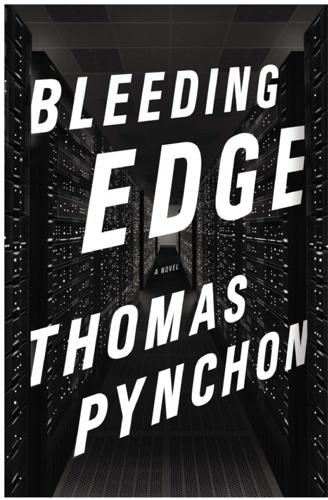
Bleeding Edge: A Novel
by
Thomas Pynchon
Published 16 Sep 2013
It soon becomes clear that everybody’s pretending for tonight that they’re still in the pre-crash fantasy years, dancing in the shadow of last year’s dreaded Y2K, now safely history, but according to this consensual delusion not quite upon them yet, with all here remaining freeze-framed back at the Cinderella moment of midnight of the millennium when in the next nanosecond the world’s computers will fail to increment the year correctly and bring down the Apocalypse. What passes for nostalgia in a time of widespread Attention Deficit Disorder. People have pulled their pre-millennial T-shirts back out of the archival plastic they’ve been idling in—Y2K IS NEAR, ARMAGEDDON EVE, Y2K COMPLIANT LOVE MACHINE, I SURVIVED . . .
…
Former and future nerdistocracy slowly, and to look at them you’d think reluctantly, filtering back out into the street, into the long September which has been with them in a virtual way since spring before last, continuing only to deepen. Putting their street faces back on for it. Faces already under silent assault, as if by something ahead, some Y2K of the workweek that no one is quite imagining, the crowds drifting slowly out into the little legendary streets, the highs beginning to dissipate, out into the casting-off of veils before the luminosities of dawn, a sea of T-shirts nobody’s reading, a clamor of messages nobody’s getting, as if it’s the true text history of nights in the Alley, outcries to be attended to and not be lost, the 3:00 AM kozmo deliveries to code sessions and all-night shredding parties, the bedfellows who came and went, the bands in the clubs, the songs whose hooks still wait to ambush an idle hour, the day jobs with meetings about meetings and bosses without clue, the unreal strings of zeros, the business models changing one minute to the next, the start-up parties every night of the week and more on Thursdays than you could keep track of, which of these faces so claimed by the time, the epoch whose end they’ve been celebrating all night—which of them can see ahead, among the microclimates of binary, tracking earthwide everywhere through dark fiber and twisted pairs and nowadays wirelessly through spaces private and public, anywhere among cybersweatshop needles flashing and never still, in that unquiet vastly stitched and unstitched tapestry they have all at some time sat growing crippled in the service of—to the shape of the day imminent, a procedure waiting execution, about to be revealed, a search result with no instructions on how to look for it?

The Code: Silicon Valley and the Remaking of America
by
Margaret O'Mara
Published 8 Jul 2019
Neukom quoted in David Lawsky, “Microsoft Urges Government to Drop Antitrust Case,” Reuters, reprinted in The Times of India, November 26, 1998, 15; also see Steve Lohr, “Microsoft Presses Its View About Rivals’ 3-Way Deal,” The New York Times, January 7, 1999, C2. 17. Lizette Alvarez, “High-Tech Industry, Long Shy of Politics, Is Now Belle of Ball,” The New York Times, December 26, 1999, 1. 18. Hiren Shah, “Y2K: The Bug of the Millennium,” The Times of India, October 19, 1998, 14; Stephen Barr, “Social Security Killed Y2K Bug, President Says,” The Washington Post, December 29, 1998, A2; Eric Lipton, “2-Digit Problem Means 9-Digit Bill for Local Governments,” The Washington Post, August 4, 1998, A1. 19. Abhi Raghunathan, “Thanks for Coming. Now Go,” The New York Times, July 15, 2001, NJ1. 20.
…
In a two-part deal announced soon after the case began, AOL acquired Netscape and then teamed up with Sun to build up an Internet software juggernaut that could keep up with Microsoft’s dominance of business and consumer markets. Microsoft counsel Bill Neukom cried foul—how could the DOJ call Microsoft a monopoly when its competitors were all banding together to take it on? The government was “five steps behind the industry.”16 Y2K While Microsoft was getting skewered, Silicon Valley was riding high—not just on a soaring Wall Street, but especially in Washington, where politicians flocked toward the combined allure of gee-whiz technology and new-economy wealth. Scandal and partisan intrigue ruled the day in Washington, as Clinton’s transgression with young White House intern Monica Lewinsky turned from titillating gossip to fodder for a special prosecutor to an impeachment vote by the GOP-led House.
…
India also had spent heftily on broadband infrastructure, meaning that cities like the high-tech hub of Bangalore had more reliable Internet connectivity than electricity, and its homegrown software services companies could easily take on the job of programming computers on the other side of the globe. The Y2K flurry also grew the already large numbers of engineers heading across the Pacific. Over 130,000 new H-1B visa holders came to the U.S. between the spring of 1998 and the summer of 1999. Forty percent of them were Indian computer specialists.19 PLAYING OFFENSE The ever-tightening friendship between John Doerr and the man he affectionately called “the commander-in-geek,” Al Gore, epitomized the warm relations between high-tech and political capitals in those waning days of the twentieth century.
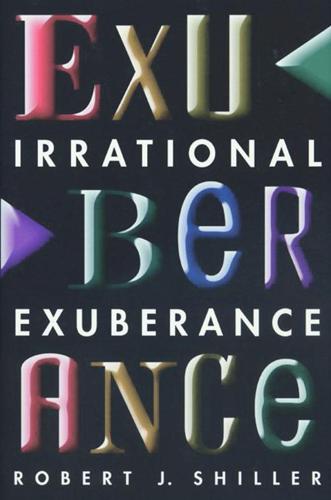
Irrational Exuberance: With a New Preface by the Author
by
Robert J. Shiller
Published 15 Feb 2000
Word-of-mouth communications, either positive or negative, are an essential part of the propagation of speculative bubbles, and the word-of-mouth potential of any event must be weighed in judging the likelihood of that event to lead to a speculative bubble. Thus, for example, the predictions of widespread computer problems due to the so-called Y2K bug was a classic word-of-mouth story because of its association with both the nation’s fascination with computers and the new millennium. Thus—although fears ultimately provided groundless—it was likely to have an exaggerated impact on the market when compared with other less vivid stories. A Pool of Conflicting Ideas Coexisting in the Human Mind One reason why the contagion of ideas can sometimes happen rapidly, and why public thinking can experience such abrupt turnarounds, is that the ideas in question are already in our minds.
…
We may list some of them, with no 210 A C ALL TO AC TION presumption that any of these is more or less likely at the present time: a decline in consumer demand, a dearth of new development opportunities, failures of major technological initiatives, heightened foreign competition, a resurgent labor movement, an oil crisis, a corporate tax increase, newly discovered problems with the longerrun consequences of downsizing and incentive-based compensation for employees, a decline in employee morale and productivity, a war (even one among foreign countries, which disrupts our own trade or destroys a stable environment for economic operations), a terrorist attack or even a new terrorist threat that hampers business activities, an industrial accident that suggests that certain technical processes are more dangerous than previously thought, heightened regulatory or antitrust activity, increased foreign tariffs or import quotas, a depression abroad, stricter environmental standards, class-action lawsuits against corporations, a suddenly erratic monetary policy, systemic problems due to a failure of major banks or financial institutions, a widespread computer system problem in the same vein as the once-predicted Y2K-related malfunctions or an unstoppable computer virus or communications satellite problems, large-scale weather problems, natural disasters, epidemics. . . . The list can never be complete. Indeed, some of the items on this list were virtually unknown a decade ago. With so many possible causes, we are left now, as always, with the daunting problem of assessing not only their various probabilities—each of them by itself small and hard to quantify—but also the probabilities of several of them happening together, which would make the combined effect all the more serious.
…
See Excess volatility VEFA (Albanian investment company), 66 Venezuela, 125–26 Videoconferencing systems, 157, 160 Vietnam War, 194 Viruses, 160 Vishny, Robert, 144 Vividness, 139 Volatility, 40, 42, 59; epidemics and, 161; excess, 183–90; policy toward, 232–33; quantitative anchors and, 138 Volume of sales, 59 Vortex effect, 127 Waite, Stephen, 28 Wall Street Journal, 54, 82, 83, 86, 93–94, 197 INDEX Wanniski, Jude, 84 Warburg, Paul M., 107 Warr, Richard, 240n30 Warther, Vincent, 240n27 Watson, James, 85 Wealth tax, 126 Weber, Steven, 113 Weiss, Allan, 230, 266–67n29–30 Welch, Ivo, 256n5 Wheel of fortune, 137 Whisper numbers, 239n20 Williams, Arlington, 244n22 Wilson, Timothy, 257n19 Winfrey, Oprah, 51 Winner stocks, 130 Womack, Kent, 239n18 Woodford, Michael, 244n22 Word-of-mouth communications, 98, 163, 228; epidemic models applied to, 157–62; information processing and, 153–54; media communications versus, 154–57 World Bank, 238n11 World War I, 194 World War II, 7, 107, 194 World Wide Web, 19, 212 Wurgler, Jeffrey, 237n1, 238n9, 258n14 Xerox, 177 Yale University, 264n7 Yen, 223 Y2K bug, 162 Zacks Investment Research, 30 Zaret, David, 245n1 Zeldes, Stephen, 265n15 Zemsky, Peter, 256n6 Zero earnings, 236n4 Zero era, 112–13 Zuckerman, Marvin, 254n7

American Gun: The True Story of the AR-15
by
Cameron McWhirter
and
Zusha Elinson
Published 25 Sep 2023
Americans grew concerned that a computer glitch in the storage of calendar data, labeled Y2K, would cause computers across the world to malfunction, ruining businesses and governments, throwing banks into chaos, causing widespread power outages and upending civilization. Doomsday preppers set up bunkers in remote locations, stocked up on food supplies, and bought weapons in anticipation of mayhem. Gunmakers capitalized. “During the panics there’s a lot of money to be made,” said Westrom, the head of ArmaLite. Bushmaster even made a special rifle for the computer-glitch crisis, inscribed with “Y2K Limited Edition” on the receiver. The gun sold out quickly, recalled John DeSantis, the company’s chief executive.
…
A trained engineer, DeSantis had worked for more established weapons firms and he brought that expertise to the little company. One of the first things he did to modernize Bushmaster was to ask Dyke to buy him a computer. DeSantis began to chart sales of the AR-15s down to the day. He noticed that spikes were correlated to events in the news such as the Y2K scare, a terrorist attack, or a mass shooting. “Hunting rifles, you have a season; shotguns, you have a season; AR15s, there’s no season,” DeSantis recalled. “You could put on the news in the morning and you could see that because of a certain event that business was crazy.” DeSantis reset Bushmaster’s business model—so supply would meet erratic demand.
…
Bushmaster Firearms (Bushmaster): AR-15 production in 2007; business model shift; Cerberus acquisition of; DeSantis leadership of; Dyke acquisition of; Dyke selling; Feinberg acquisition of; gun ban impact on; gun sales in 2008; liability lawsuits; Man Card ad campaign for; post-9/11 advertising; profits; Sandy Hook massacre and; XM-15 rifle; Y2K Limited Edition rifle by Cadillac Gage California: gang violence; gun control legislation in; red-flag law in; San Bernardino 2015 shooting in; San Diego 2019 synagogue shooting in; San Francisco 1993 shooting in; Stockton 1989 school shooting in; see also Los Angeles Call of Duty (video game) cannons Capitol riot (2021) Cardinal, Paul Carrillo, Steven Carson, David Carten, Frederick Howard cartridges: invention of; Remington Arms Cassidy, J.
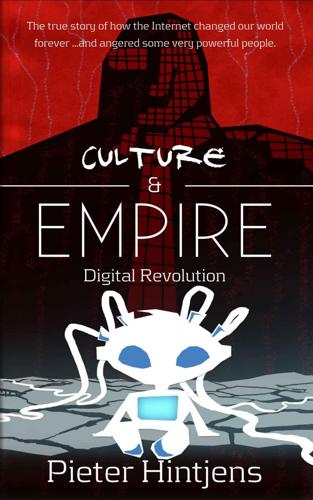
Culture & Empire: Digital Revolution
by
Pieter Hintjens
Published 11 Mar 2013
The dot-com boom bubbled in 1999, driven by the dream of cheap access to millions -- no, billions -- of consumers. Investors threw huge amounts of money at firms whose business plan typically went: "1. Give people something free. 2. ??? 3. Profit!" In 2000, the dot-com bubble burst, mainly because big firms had spent so much cash on solving the millennium Y2K "crisis" that they had to freeze all new IT spending for two or three years. Big IT firms' profits fell, investors panicked, the stock market collapsed, and so did most dot-com firms. Most of those companies' business plans were empty anyway. In 1999, Napster started to let people trade songs on line.
…
The dot-com crash seemed to prove that brick-and-mortar was still the real world and that "digital mindshare" was a hoax. From 1999 to 2004, huge swathes of the post-industrial service economy quietly continued to go digital. The fast fiber optic cable links from the US to India that were used in 1998-99 to do Y2K conversions became the portals for massive outsourcing. And as businesses quietly off-shored and reorganized around an ever cheaper global communications network that let them move help desks to Bangalore and insurance claims processing to Haiti, the second Internet boom, aka Web 2.0, exploded sometime around 2003-2004.
…
As with narcotics, the police are not the right tool for public health issues. Zombie Conspiracies There is one other global existential threat to our way of life, and I'm not talking about Hello Kitty. I am however talking about peak oil, and the risks it brings for our comfortable holiday society. Bear with me, I'm not a catastrophe fan (we made it through Y2K, so how bad can the future be, right?). However, that doesn't mean that other people are as optimistic as me. Though the industrial revolution started with coal, today's global economy owes its very existence to long-chain liquid hydrocarbons, aka "oil." Of the seven largest global businesses, six are oil and gas -- Exxon Mobil, Shell, Sinopec, BP, CNPC, Aramco -- plus Walmart in position three.
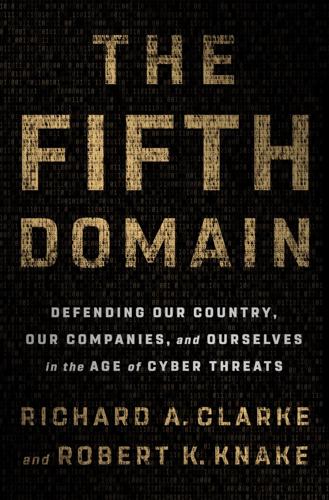
The Fifth Domain: Defending Our Country, Our Companies, and Ourselves in the Age of Cyber Threats
by
Richard A. Clarke
and
Robert K. Knake
Published 15 Jul 2019
In the meantime, banks and other commercial and private-sector organizations are going to have to shift from the encryption systems they use now to quantum-resistant systems. Whether that is two years away or ten is a matter of debate and conjecture, but there is a role for government to require that shift by a certain date through regulation and a new encryption standard. Think of it as Y2K for encryption: a time when everyone is forced to update their software to ensure that a hacker with access to a quantum computer cannot someday become a problem. It is not a dire or immediate threat quite yet, but it will arrive sooner than most realize. The Real Promise of Quantum Computing So, assuming Chad Rigetti, his giant corporate competitors, or the Chinese can get a real quantum computer to operate as more than a science experiment, what will we do with it?
…
Wiper: Sometimes rendered “wipr,” it is a software attack tool that erases all data found on a device or network in such a manner that the erased data is not recoverable. Wiperware may lurk on a network for days, waiting to be included in a network backup so that when the backup is mounted after an attack, the wiperware will activate and erase that too. Year Two Thousand (Y2K): Refers to an international effort prior to January 1, 2000, to modify computer software in order to avoid an expected malfunction on that date. There was a belief that failure to modify such software in time would result in widespread failure of software-controlled devices and machinery at 12:01 A.M. of 01/01/2000.
…
(Wu and Goldsmith), 208 WikiLeaks, 21, 24, 37 wipers, 18–19, 38, 188, 308 Wolff, Evan, 112 Workday, 152 World War I, 100–101, 183, 240 World War II, 73, 150, 183, 240 Wu, Tim, 208 Xanadu, 258–59 Xi Jinping, 26, 33–34, 241 Xu, Yanjun, 28 Yahoo, 209 Year Two Thousand (Y2K), 262, 208 YouTube, 232 Yu, Sounil, 65–67, 69–72, 82, 83 Zatko, Mudge, 78–79, 82, 119 Zatko, Sarah, 82 Zelvin, Larry, 73 zero-day vulnerability, 21–24, 36, 38, 46, 297, 308 Zuckerberg, Mark, 67 Zurich Insurance Group, 121 ABCDEFGHIJKLMNOPQRSTUVWXYZ About the Authors Richard A.
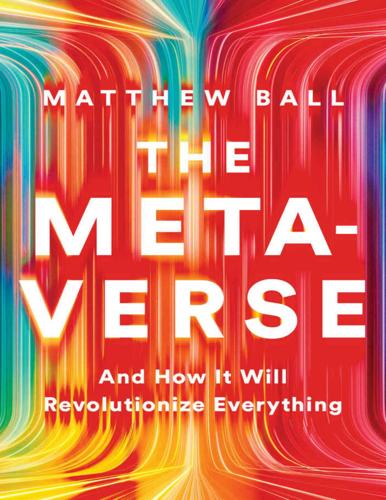
The Metaverse: And How It Will Revolutionize Everything
by
Matthew Ball
Published 18 Jul 2022
The internet carries a vast range of information resources and services, such as the inter-linked hypertext documents and applications of the World Wide Web (WWW), electronic mail, telephony, and file sharing.”11 Wikipedia’s summary addresses some of the internet’s underlying technical standards and describes its scope as well as some of its use cases. The average person can read it today and easily map it to their personal usage and probably recognize why it’s an effective definition. But even if you understood this definition in the 1990s—or even after Y2K—it didn’t clearly explain what the future might look like. Even experts struggled to understand what to build on the Internet, let alone when to do so or through which technologies. The internet’s potential and needs are obvious now, but at the time, almost no one had a cohesive, easily communicated, and correct vision of the future.
…
If it weren’t so late to building a popular gaming platform, would Facebook have really wanted to rely on OpenXR and WebXR? These points are fair, but they also ignore the many genuine (if undesirable) lessons learned by platform makers and developers over the past decades. And these two groups aren’t the only constituencies who are smarter today than in Y2K. As the “trustless” and “permissionless” nature of blockchain programming suggests, much of the Web3 movement stems from a dissatisfaction with the last 20 years of digital apps, platforms, and ecosystems. Yes, we received many great services for free during “Web 2.0,” such as Google Maps and Instagram, and many careers and businesses have been built on top of and through these services.
…
, 21, 35–36 sex and sex work, 261–62 “virtual reality applications” defined, 18–19n see also Oculus VR virtual worlds, 103–20 game engines and, 105–8 as not-quite metaverses, 113–20 persistence of, 44–48 see also integrated virtual world platforms (IVWPs); Metaverse, the Visa, 167, 172–73, 184–85, 188, 199–200, 203, 217, 231 voice chat, 9, 179 Vrbo, 129 VRChat, 115 Vrvana, 144 Wachowskis, Lana and Lilly, 6–7 Walking Dead: The Last M.I.L.E, The, 260 Wallace, Henry A., ix–x Wall Street Journal, 186, 309 Walmart, 166, 288 Warner Bros, 29–30, 139 Washington Post, 19, 264 Water Street redevelopment project, Florida, 266–67 wearables, 151–55 Apple Watch, 152, 161 bodysuits, 151, 152 electromyography, 153, 255, 261 smart gloves, 151 smart lenses, 154, 205 see also augmented reality (AR); virtual reality (VR) WebAssembly, 193 WebGL, 195–96, 203 WebGPU, 193 Web3, 58–59, 140, 233, 283, 288–89 Web 2.0, 233, 283, 287–89, 303, 309 Web World, 9 WebXR, 193, 287–88 Weinbaum, Stanley G., 5, 6 Wells Fargo, 9, 186 WhatsApp, 26, 61, 79, 274, 276 “Why Most Economists’ Predictions Are Wrong,” 24 Windows, 16, 25, 32, 60–61, 131, 133, 182, 275, 286 Edge browser, 286 hegemony of, 182–83, 205 Internet Explorer, 15–16, 275 see also Microsoft; Xbox gaming platform Windows Live, 275 Windows Mobile, 165 Windows Phone, 25 Wireless Application Protocol (WAP) standard, 240 wire payments, 168–72, 177, 188, 217, 296 Witham, Timothy, 268 Wood, Gavin, 210 Words with Friends, 82 “Worldcraft,” 5 World of Warcraft, 44, 48, 55, 687, 91, 179, 276, 305 World Wide Web, x, 22, 24, 38, 193, 295 Xbox gaming platform, 18 cloud game streaming, 98–99, 196, 198 consoles, 18, 32, 112, 132, 134, 143, 174 interoperability and, 132–35, 175 as part of Microsoft’s game strategy, 278–79, 281 payment rails and, 174–77, 286 real-time gaming chat in, 67 Xbox Game Studios, 73, 279 Xbox Live, 129, 135, 174–76, 286 X.com, 61 Xiaomi, 61 xkcd, 123 Ye, Josh, 128 YouTube, 12–13, 24–25, 34 in the Apple App Store, 197 latency and, 79–80 why content creators stay on, 298–99 “Yulai Problem,” 56 Y2K, 24, 288 Zed Run, 218, 260 Zoom, 15, 52–53, 120, 252, 259 Zuckerberg, Mark, xi–xii, 18–19, 20–21, 239, 245, 289–90 acquisition strategy of, 276 on Apple’s control over user data, 204–5 on Facebook’s iOS app, 26, 193–94 on 3D as more intuitive, 33 on VR devices, 18–19, 143, 146–47, 150–51, 205, 287 2012 Metaverse keynote, 57, 286–87 see also Facebook Further praise for The Metaverse “The Metaverse provides a clear and informed picture of what the Metaverse will be, and how and why it will emerge.
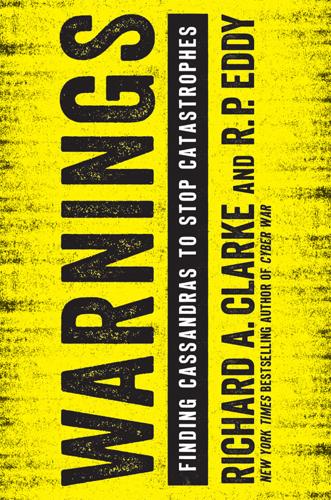
Warnings
by
Richard A. Clarke
Published 10 Apr 2017
They think that what he predicted will happen, just not yet. In any event, one clear lesson from the population-bomb case is that decision makers need to model how the overall system will adjust when it perceives the threat and whether that will delay the disaster or significantly reduce the problem. *Y2K: In 1984, Jerome and Marilyn Murray published a book, Computers in Crisis, which predicted that when 1999 rolled over into the year 2000, many software programs would malfunction. Although it initially gained little public attention, by the mid-1990s, software developers and computer scientists in general were in widespread agreement that there was a potentially serious problem.
…
He saw it as an issue whose solution required significant resources, an issue for which there was no partial solution, in which some of our critical systems would be allowed to fail. The downside of his being wrong, if that happened, was quite limited. The worst thing that would happen if he overreacted was that a lot of software would be updated and many software and service companies would be enriched. The lesson of the Y2K case study is that, if the Cassandra is right and averts the problem by action, there will be those who decry overreaction. One cannot always prove such critics wrong, but experiments and models can be used to demonstrate what might have happened in the absence of the response. If you decide to act in a big way to solve the alleged problem, it is, of course, less risky if the costs of your being wrong are limited and are clearly outweighed by the potential impact of not acting or doing so insufficiently.
…
O., 199 Winslow Meteor Crater, 305–6 Wired, 297 Wohlstetter, Roberta, 19, 21 Woolsey, James, 352 Woolsey, Jim, 32 World Bank, 88 World Health Organization (WHO), 217–18, 229 World War I, 9, 221 World War II, 10–11, 84, 221, 231, 275, 365 Worry (worrying), 379–80n Worst-case scenarios, 363–64 X-47B, 199, 200, 214 X-ray diffraction, 328 Yale University, 329 Year 2000 problem (Y2K), 193–95 Yemen, 59, 63, 65 Yeshiva University, 113 Your Government Failed You (Clarke), 8 Yudkowsky, Eliezer, 174, 202–16, 355 Zakaria, Fareed, 71 Zayed bin Sultan Al Nahyan, 28 Zeitoun (Eggers), 39 Zenko, Micha, 379n Zero population growth (ZPG), 192–93 Zika virus, 225, 233 Zuckerman, Mort, 101 ABOUT THE AUTHORS RICHARD A.

The Future of Technology
by
Tom Standage
Published 31 Aug 2005
The roots of India’s competitiveness in it reach back to the late 1980s, when American firms such as Texas Instruments and Motorola came to M 125 THE FUTURE OF TECHNOLOGY Bangalore for the local talent. Other American firms, such as HewlettPackard, American Express, Citibank and Dun & Bradstreet, followed these pioneers, setting up their own “captive” Indian it organisations in the 1990s. The Indian companies got their first big boost with the so-called “y2k crisis” at the turn of the millennium. it experts feared that because elderly software code allowed only two digits to record the year, some computer systems would read the year 2000 as 1900, causing mayhem as systems crashed. Big western it-services companies such as ibm, Accenture and eds ran out of engineers to check old code and subcontracted some of the work to Indian firms instead.
…
(Among other things, this involves analysing liquid-soap availability, tissue supply and waste management, explains a serious-looking Wipro official.) The claims of India’s marketing men tend to be a little ahead of reality. Amar Bhide of Columbia University, who has spent some time in Bangalore, is sceptical. The y2k crisis pushed “the grungiest it work on to India’s best software engineers,” says Mr Bhide. “It was like asking Oxford graduates to dig ditches. It created the impression that Indians were fantastic at programming.” Still, the outline of a distinct brand of Indian competitiveness – in performing carefully defined, rules-bound, repetitive white-collar business work – appears to be taking shape.
…
O’Neil, David 73 O’Neil, John 28, 30 OneSaf 197 online banks 37 online shopping viii, 37 open standards 7, 10, 22–7, 31, 38, 43, 85–7, 115, 118–19, 152 operating systems 9, 10, 23–5, 31, 38, 85, 101, 109 operators, mobile phones 157–61, 162–9 Opsware 8, 15 optical-character recognition 121 Oracle 5, 20–2, 33, 38, 39–40, 46, 56, 62, 86, 243 Orange 157–8 organic IT 13–16, 88 original design manufacturers (ODMs), mobile phones 156–7 O’Roarke, Brian 192 O’Roarke, John 96 Orr, Scott 187 orthogonal frequency-division multiplexing (OFDM) 212–13, 215–17 INDEX Otellini, Paul 11, 95 outshored developments, software 38, 115, 138–9 outsourcing viii, 9, 19–20, 22, 38, 68–9, 71, 72, 88–92, 112–46, 158–60 see also globalisation barriers 121–2, 143 concepts 112–46 costs 112–24, 131–5, 140–3 cultural issues 122, 142 Europe 140–6 historical background 119–20, 125–6, 133 India 38, 109, 112–15, 119–22, 125–35, 137–8, 140–6 legal agreements 121–4 mobile phones 155–6, 158–60 opportunities 144–6 protectionists 140–6 reasons 123–4, 143 services 113–30 social outsourcing 143 “overshoot” stage, industries 9, 10–11, 109 overview vii–x, 6–7 Ovi, Alessandro 275–6 Oxford GlycoSciences 243 P Pacific Cycle 140 Page, Larry 9 Pait, Rob 207 Palladium 74, 76 Palm Pilot 150 Palmisano, Samuel 22 Paltrow, Gwyneth 173 Panasonic 156 Papadopoulos, Greg 14, 78–9, 83–4, 91 Papadopoulos, Stelios 237 Parker, Andrew 143 Parks Associates 96, 203 Parr, Doug 319 particulate filters 296–7 passwords 53, 58–61, 67, 96–7 patents, nanotechnology 321–6, 329 Patriot Act, America 35 PCs 9–16, 78–81, 82–110, 151, 171–3, 202–18 see also digital homes; hardware commoditisation issues 9–16, 132–5, 203 complexity issues 78–81, 82–110 screen sizes 100–1 UWB 214–18 Wi-Fi 209–18 PDAs see personal digital assistants Peck, Art 203 PentaSafe Security 60 Pentium chips 199–200 PeopleSoft 39, 86, 119, 126, 132 Perez, Carlota 5–6, 134 performance issues see also processing power; returns cars 291–8 Cell chips 198–200 cost links 29–30 Perlegen 244 personal digital assistants (PDAs) 151, 277, 279 see also handheld computers personal video recorders (PVRs) 203, 205–6 perverse incentives, security issues 61–2 Pescatore, John 55 Pfizer 69, 240, 247, 312, 315 pharmaceutical companies 239–40, 241–50, 312 PHAs 260 Philippines 130 Philips 120, 217 “phishing” 76, 89 phonograph 82, 84 photo-voltaic cells 280 photos ix, 78, 95, 101, 179–83 Physiome 248 Picardi, Tony 79 Pick, Adam 156 Pink Floyd 225 Piper, H. 292 Pittsburgh convention centre 304 Pivotal 187 plasma screens 230–2 plastics 238–9, 259–64 PlayStation 191–2, 199–200, 206–7 plug-and-play devices 78 plug-in hybrid cars 295–6 Poland 120 police involvement, security breaches 72 polio 265 politics 32–5 see also governments Pollard, John 157 pollution 275, 296–7, 299–304, 319 Pop Idol (TV show) 225 Pope, Alexander 267 Porsche 292 “post-technology” period, IT industry vii, 5–7 Powell, Michael 98, 206 power grids 233, 285–90 PowerPoint presentations 4–5, 107 Predictive Networks 337 Presley, Elvis 225 prices, downward trends viii, 4–7 PricewaterhouseCoopers 38 printers 78, 96 privacy issues 27, 34, 42–8, 179–83 see also security... mobile phones 179–83 processing power see also computer chips 353 THE FUTURE OF TECHNOLOGY exponential growth 4–7, 8–14 Proctor, Donald 106 Prodi, Romano 274–5 profits, future prospects 7, 17–18, 37–40 proprietary technology 24, 26, 80, 86 protectionists, outsourcing 140–6 proteins, biotechnology 241–64 protocols, complexity issues 86 Proxim 210 Prozac 315 PSA Peugeot Citroën 293, 296–7 PSP, Sony 191–3 public accounts 44 Pullin, Graham 177–8 PVRs see personal video recorders Q Qualcomm 164 quantum dots 312, 317, 322, 325 R radiation fears, mobile phones 176 radio 34–5, 36, 39, 94–5, 108, 155–61, 164, 209–18, 223 see also wireless... chips 155–61, 164 “garbage bands” 209–10, 215 music industry 223 spectrum 34–5, 94–5, 209–18 UWB 96–7, 214–19 Radjou, Navi 333–4 railway age vii, 5, 7, 23, 36, 39, 134 Raleigh, Greg 211 RAND 195 rationalisation exercises 31 RCA 108–9, 206, 208, 220, 315 real-world skills, gaming comparisons 194–7 RealNetworks 203 rechargeable batteries 280–4 Recourse Technologies 62–3 Reed, Philip 177 regulations 35, 44, 209–10, 326–9 see also legal issues relational databases 101–2 reliability needs viii, 42–8 religion 19 renewable energy 275–6, 286, 289, 300, 310, 315 ReplayTV 205 Research in Motion (RIM) 152–3 resistance problems, employees 31 return on investment (ROI) 30–1 returns 20, 29–31, 329 see also performance issues risk 20, 30, 329 revenue streams biotechnology 237–8, 241–2 354 gaming 189–90, 191 GM 251–2 mobile phones 151, 154–5, 157, 162–3, 165–6, 174 nanotechnology 321–6 revolutionary ideas vii–viii, 5–7, 13–14, 36–40, 80–4, 107–10, 116, 134, 151–3, 198–200, 236–40, 326–9 RFID radio tags 39, 94–5 Rhapsody 203 Ricardo 296–7 Riley, James, Lieutenant-Colonel 195–7 RIM see Research in Motion ringtones 165–6 RISC chips 200 risk assessments 70–4, 76 attitudes 18 handling methods 71 insurance policies 71–3 management 70–4 mitigation 71–3 outsourced risk 71, 72, 88–92 returns 20, 30, 329 security issues 42–8, 49–69, 70–4 RNA molecules 241–2, 249–50, 265 Robinson, Shane 15–16 robotics x, 233, 316, 332–5 Roco, Mihail 309 Rodgers, T.J. 32 Rofheart, Martin 216–17 Rogers, Richard 300 ROI see return on investment Rolls, Steve 121 Romm, Joseph 298 Roomba 332, 334–5 “root kit” software 51 Rose, John 226 Roslin Institute 256 Roy, Raman 125–8 Russia 115, 130, 140, 142, 145, 319 Ryan, John 312 S S700 mobile phone 171 Saffo, Paul 83–4, 103, 182 Salesforce.com 19, 20, 84, 91–2, 109 Samsung 158–60, 181, 208, 217, 231, 277 Santa Fe Institute 39 SAP 22, 38, 86, 119, 126, 132 satellite television 205 Saudi Arabia 180 scandals 28 scanning tunnelling microscope (STM) 306 SCC see Sustainable Computing Consortium Schadler, Ted 95, 97 Schainker, Robert 285, 289 INDEX Scherf, Kurt 96–7 Schmelzer, Robert 91 Schmidt, Eric 9, 35, 36–8 Schmidt, Nathan 66 Schneider National 29–31 Schneier, Bruce 43, 58, 61–2, 65, 70, 73–4 schools, surveillance technology 181 Schwartz, John 46 Schwinn 140, 143 Scott, Tony 43, 68–9 screen sizes 100–1 screws 23–4 Seagate Technology 207 seamless computing 96–7 Sears, Roebuck & Co 36 Securities and Exchange Commission 321 security issues viii, 25–7, 32–5, 42–8, 49–74, 86–7 see also privacy... airport approach 68–9 anti-virus software 50–1, 60, 67–8 biometric systems 60, 64–5, 71, 74 breaches 43–4, 46, 49–52, 62, 72–3 civil liberties 74 concepts 42–74, 86–7 costs 45–6, 50–1, 62, 70–4 employees 58–63, 69 encryption 53–4 firewalls 51–3, 58, 60, 62, 66–8, 71, 86–7 hackers 4, 43, 47, 49, 51–3, 58–63 handheld computers 67–8 honeypot decoys 62–3 human factors 57–63, 69 identity management 69 IDSs 51, 53–4, 62, 87 impact assessments 70–1, 76 insider attacks 62–3 insurance policies 71–3 internet 35, 42–8, 49–57, 61–2, 66, 66–7, 71, 73–6, 179–83 job vacancies 46 joint ventures 67 major threats 35, 42, 43, 47, 49–63, 66–9 management approaches 60–3, 69 Microsoft 54–6, 72, 74, 76 misconceptions 46–8 networks 42–8, 49–65, 66–9 passwords 53, 58–61, 67, 96–7 patches 56–7, 76 perverse incentives 61–2 police involvement 72 risk assessments 70–4, 76 standards 71–3 terrorism 35, 42, 43, 50, 65, 74, 75–6, 265–6 tools 49–63, 86–7 viruses 45, 47, 49–56, 59–60, 67–8, 74, 86, 89 Wi-Fi 66–7, 93 sedimentation factors 8–9, 84 segmentation issues, mobile phones 167–9 self-configuration concepts 88–9 Sellers, William 23 Seminis 254 Sendo 160 Senegal 182 September 11th 2001 terrorist attacks 35, 42, 43, 50, 65, 75 servers 9–16, 37–8, 62–3, 85–7, 132–3, 203 services industry 14, 17–22, 25–7, 31, 36–40, 80, 88–92, 109, 113–35, 203 see also web services outsourcing 113–46 session initiation protocol (SIP) 104–6 sewing machines 82, 84 SG Cowen 237 shapes, mobile phones 170–6 Shapiro, Carl 24 Sharp 156, 231, 326 shelfware phenomenon 20 Shelley, Mary 267, 269 shipping costs 121 sick building syndrome 302 Siebel 86 Siemens 120, 130, 142, 156, 159, 170, 172, 174 SightSpeed 84, 98, 103 SilentRunner 62 Silicon Valley 9, 32–40, 45–6, 54, 69, 79, 96, 98, 101, 103, 152, 313–14, 321 silk 263, 269 Simon, Herbert 336 simplicity needs 78–81, 84, 87, 88–92, 98–110 SIP see session initiation protocol Sircam virus 45, 49 Sirkin, Hal 120, 140 “six sigma” methods 128 SK 169 Skidmore, Owings & Merrill 302 Sky 205 Skype 103–4, 110 Sloan School of Management, MIT 30 Slovakia 120 small screens 100 Smalley, Richard 311 smallpox 265–6 smart power grids 233, 285–90 smartcards 64, 69 smartphones 150–3, 157–61 see also mobile phones SMES devices 289 Smith Barney 37 Smith, George 307–8 Smith, Lamar 75 Smith, Vernon 17 SNP 243–4 SOAP 25–7 355 THE FUTURE OF TECHNOLOGY social issues mobile phones 177–8, 182–3 music players 220–1 social outsourcing 143 software see also information technology ASPs 19–20, 91–2, 109 bugs 20–1, 54–6 Cell chips 198–200 commoditisation issues 10–16, 25, 132–5, 159, 203 complexity issues 14–15, 78–81, 82–110, 117–22 firewalls 52–3, 58, 86–7 hackers 51–3, 58–63 Java programming language 21–2, 25, 86 management software 13–16, 21–2, 88, 117–18 mobile phones 158–9 natural-language search software 339–40 operating systems 9, 10, 23–5, 31, 38, 85, 101, 109 outsourcing 38, 115, 138–9 patches 56–7, 76 premature releases 20–1 shelfware phenomenon 20 viruses 45, 47, 49–56, 59–60, 67, 74, 89 solar power 275–6, 286, 289, 301–2, 310, 315, 325 Solectron 112–13, 119 solid-state storage media 204, 207, 219 SOMO... project, mobile phones 177–8 Sony 95, 108, 156, 191–3, 198–200, 203, 206–7, 217, 228, 231, 282–4, 332, 334, 338 Sony Ericsson 156, 158, 159–60, 171 Sony/BMG 222–3, 227, 229 Sood, Rahul 38 Sorrent 187 South Africa 309, 319, 334 South Korea 156, 158, 163–5, 167–9, 170–1, 181, 319 soyabean crops 252–4 spam 76, 89, 118 Spar, Debora 32–3 speculation vii speech recognition 102, 121, 336 SPH-V5400 mobile phone 208 Spider-Man 189–90 Spinks, David 60–1, 63 Spitzer, Eliot 223 Sprint 167–8, 180–1 SQL 53 @Stake 54 Standage, Ella 316 standards green buildings 300–4 open standards 7, 10, 22–7, 31, 38, 43, 85–7, 115, 118–19, 152 356 security issues 71–3 W-CDMA standard 163–4, 168 web services 90–1 Wi-Fi 210–13 Stanford University 82, 137 Star Wars (movie) 186 steam power ix, 5, 134 steel industry 134 steering committees 31 stem cells 268–9 Steven Winter Associates 302 Stewart, Martha 249 STM see scanning tunnelling microscope stop-start hybrid cars 293–4 storage problems, electricity 275–6, 289–90 StorageTek 85 strategy 30 stress-resistance, biotechnology 254 Studio Daniel Libeskind 302 Sturiale, Nick 45 Sun Microsystems 9, 13–15, 21–2, 25, 27, 37–8, 43, 56, 58, 78–9, 83, 85, 87, 91, 102 supercomputers 199–200 Superdome machines 21 supply chains 8, 37–40, 155 surveillance technology 35, 74, 179–83, 309 Sussex University 5, 220, 310 Sustainable Computing Consortium (SCC) 27 Sweden 109 Swiss Army-knife design, mobile phones 171–2 Swiss Re Tower, 30 St Mary Axe 299, 301–2, 304 swivel design, mobile phones 171 Symantec 39, 46, 50, 62–3, 67 Symbian 158 Symbol 210 synthetic materials 258–64, 317 systems analysts 137 T T-Mobile 167–8 Taiwan 156–7, 160 Talwar, Vikram 144 Taylor, Andy 226 Taylor, Carson 287 TCP/IP 25 TCS 132–5, 145–6 Teague, Clayton 314 TechNet 33 techniques, technology 17–18 techno-jewellery design, mobile phones 172–4 technology see also individual technologies concepts vii–x, 4–7, 17–18, 23–7, 32–3, 82–4, 134, 326–9 cultural issues 93–4, 142 INDEX geekiness problems 83–4 government links 7, 18, 27, 31–5, 43–8, 123–4, 179–83, 209–10 Luddites 327 surveillance technology 35, 74, 179–83, 309 Tehrani, Rich 105 telecommunications viii, 23, 26, 103–6, 134, 164–5 telegraph 32–3, 108 telephone systems 84, 103–6, 109–10, 212–13, 214 Telia 109 terrorism 35, 42, 43, 50, 65, 74, 75–6, 265–6 Tesco 168 Tetris 12 Texas Energy Centre 287 Texas Instruments 125–6, 217 text-messaging facilities 165, 167 Thelands, Mike 164 therapeutic antibodies 249–50, 256–7 Thiercy, Max 339–40 thin clients 102 third-generation mobile phone networks (3G) 151, 162–9, 212 Thomas, Jim 318 Thomson, Ken 59 Thornley, Tony 164 3G networks see third-generation mobile phone networks TIA see Total Information Awareness TiVo 203, 205–6 Tomb Raider (game/movie) 187–8 Toshiba 156, 198–200, 203 Total Information Awareness (TIA) 35 toxicity issues, nanotechnology 316–17, 319, 328–9 Toyota 291–5, 297, 300–1, 334 toys see also gaming robotics 334 transatlantic cable 36, 39 transistors 4–7, 8–12, 85–7, 109 see also computer chips Transmeta 313 Treat, Brad 84, 98 Tredennick, Nick 10–11 Treo 150, 153 “Trojan horse” software 51–2 True Crime (game) 187 TruSecure 52, 60, 63 TTPCom 155–6 Tuch, Bruce 210 TVs see also video recorders flat-panel displays ix, 94, 147, 202–3, 230–2, 311 hard disks 204–8 screens 202–3, 230–2 set-top boxes 203, 205–6 UWB 214–18 Wi-Fi 212–18 U UBS Warburg 31, 45, 80–1, 89, 170, 174 UDDI 25–7 ultrawideband (UWB) 96–7, 214–19 UMTS see W-CDMA standard “undershoot” stage, industries 9, 109 UNECE 332–4 Ungerman, Jerry 52 Unimate 332–3 United Airlines 27 Universal Music 222–3, 226–7 Unix 9, 25, 85, 108 USB ports 78 usernames 59 USGBC 300–2 utility companies, cyber-terrorism threats 75–6 utility factors 7, 16, 17, 19–22, 42–8 UWB see ultrawideband V V500 mobile phone 157 vaccines 265–6 Vadasz, Les 33 Vail, Tim 290 value added 5–7, 37–40, 133, 138–9 value transistors 11 van Nee, Richard 211 Varian, Hal 24 VC see venture capital Veeco Instruments 324 vendors complexity issues 84–110 consumer needs 94–7 Venter, Craig 262–3, 271 venture capital (VC) 12, 31, 45, 79, 92, 107, 126–7, 238, 308, 321–6 Verdia 254–5, 261 Veritas 39, 85 Vertex 247 vertical integration, mobile phones 156–61 Vertu brand 173–4 Viacom 224 video phone calls 84, 103–6, 164–5, 167–8 video recorders see also TVs DVRs 205–6 handheld video players 206 hard disks 204–8 PVRs 203, 205–6 Wi-Fi 212–13 video searches, Google 11 357 THE FUTURE OF TECHNOLOGY Video Voyeurism Prevention Act, America 180 video-game consoles see gaming Virgin 95, 160, 167–8 Virgin Mobile 160, 167–8 virtual private networks (VPNs) 54, 68, 86–7 virtual tissue, biotechnology 248 virtualisation concepts 15–16, 88–92 viruses 45, 47, 49–56, 59–60, 67–8, 74, 86, 89 anti-virus software 50–1, 60, 67–8 concepts 49–56, 59–60, 74 costs 50–1 double-clicking dangers 59–60 Vista Research 46, 62, 67 Vodafone 164–5 voice conversations internet 103–6 mobile phones 165–9, 171 voice mail 104–6 voice-over-internet protocol (VOIP) 103–6, 167 Vonage 104, 110 VPNs see virtual private networks W W3C see World Wide Web Consortium W-CDMA standard 163–4, 168 Waksal, Sam 249 Wal-Mart 95, 114–15, 131–2, 140, 224, 228 Walkman 192 warfare AI 338 biotechnology 265–6 gaming comparisons 195–7, 339 nanotechnology 319 Warner Music 222–3, 226–7 Watson, James 236, 247, 271 web services 21–2, 25–7, 31, 80, 88–92, 109, 203 see also internet; services... complexity issues 88–92, 109 standards 90–1 Webster, Mark 211 WECA see Wireless Ethernet Compatibility Alliance Weill, Peter 30 Welland, Mark 318 Western Union 33, 108 Westinghouse Electric 332 wheat 253 white page 99–100 Wi-Fi 34–5, 66–7, 93, 95–7, 153, 203, 209–18 concepts 209–18 forecasts 209, 212–13 historical background 209–13 hotspots 211–12 mobile phones 212 standards 210–13 358 threats 212–13 UWB 214–18 Wilkerson, John 237 Williams, Robbie 222, 226 Wilsdon, James 318 WiMax 212–13 WiMedia 213 Wimmer, Eckard 265 wind power 275–6, 286, 289–90, 302 Windows 15, 24–5, 55–6, 96, 101, 108, 152, 203 Windows Media Center 203 WinFS 101 Wipro 112, 115, 120–1, 125–9, 131–5, 138, 145–6 Wireless Ethernet Compatibility Alliance (WECA) 211 wireless technology ix, 11, 34–5, 39, 66–7, 93, 95–7, 109–10, 147, 150–3, 167, 168–9, 171–3, 203, 209–13, 334 see also Wi-Fi Bluetooth wireless links 171–2, 173, 214–15, 218 concepts 209–13, 334 historical background 209–13 Wladawsky-Berger, Irving vii, 5, 19, 22, 25, 38–9 Wolfe, Josh 323 Wong, Leonard 195 Wood, Ben 156–7, 160, 174 Woodcock, Steven 338–9 Word 84, 107 work-life balance 80–1, 94 see also employees World Wide Web Consortium (W3C) 25 worm viruses 49–50, 59, 86, 89 Wright, Myles 118 “ws splat” 90–1 WSDL 25–7 X x-ray crystallography 247–8 Xbox 189, 206–7 Xelibri mobile phones 170, 172, 174 Xerox 108–9 XML see extensible markup language XtremeSpectrum 216 Y Y2K crisis 76, 126, 128 Yagan, Sam 229 Yanagi, Soetsu 84 Yurek, Greg 288 Z ZapThink 91

But What if We're Wrong? Thinking About the Present as if It Were the Past
by
Chuck Klosterman
Published 6 Jun 2016
It is far, far easier for me to catalog the various things I’ve been wrong about: My insistence that I would never own a cell phone. The time I wagered $100—against $1—that Barack Obama would never become president (or even receive the Democratic nomination). My three-week obsession over the looming Y2K crisis, prompting me to hide bundles of cash, bottled water, and Oreo cookies throughout my one-bedroom apartment. At this point, my wrongness doesn’t even surprise me. I almost anticipate it. Whenever people tell me I’m wrong about something, I might disagree with them in conversation, but—in my mind—I assume their accusation is justified, even when I’m relatively certain they’re wrong, too.
…
(Nagel), 254 Whiplash (film), 188–89 Williams, Hank, 70 Williams, Robin, 255 Wine, April, 60 Winfrey, Oprah, 182 Witten, Edward, 224–25, 236 World War I, 9 wrestling, pro, 234–35 Wright, Frank Lloyd, 90–92 Wright, Lawrence, 52 writers bloggers as, 231–32 changing tastes of readers, 93–94 cult, 53–54 poets, 93–94 pyramid analogy, 51–56 “quietly unrated,” 54–55 ranking the best, 22–28, 30–39, 49–50, 92–94 recognizing diverse, 25–27 “vocally unrated,” 52–53 writing that represents life, 43–47 Y2K crisis, 1–2 “Young Love” (song), 79 “You’re doing it wrong” argument, 242, 243, 250 Zero Dark Thirty (film), 152 Zinn, Howard, 40 Zlotnick, Susan, 45 Zuckerman, Mort, 246 1 This means that gravity might just be a manifestation of other forces—not a force itself, but the peripheral result of something else.
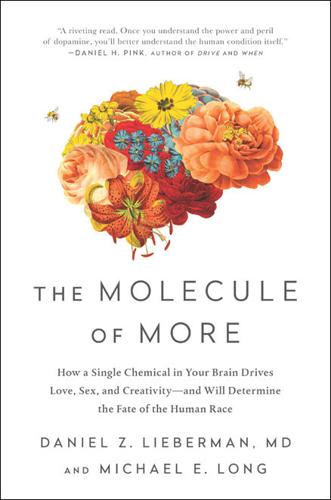
The Molecule of More: How a Single Chemical in Your Brain Drives Love, Sex, and Creativityand Will Det Ermine the Fate of the Human Race
by
Daniel Z. Lieberman
and
Michael E. Long
Published 13 Aug 2018
Computer programmers had developed the habit of abbreviating years by using only the last two digits (e.g., 99 for 1999) in order to conserve then-expensive memory space (and a few keystrokes). The programmers weren’t thinking ahead to the next millennium, when 99 might mean 2099. Thousands of programs were at risk of crashing; not just web browsers and word processors, but also software that controlled airplanes, dams, and nuclear power plants. The Y2K problem, as it was known, affected so many systems that there weren’t enough computer programmers to fix them all. By some reports, a few companies recruited out-of-work musicians because they were able to learn programming so easily. WHY GENIUSES ARE JERKS Music and math go together because elevated levels of dopamine often come as a package deal: if you are highly dopaminergic in one area, you’re likely to be highly dopaminergic in others.
…
See also adolescents ADHD, 80–83 creating things, importance of, 221 demographic trends, 206–208 obesity, 82–83 citalopram, 168–169 climate change, 203–204 Clinton, Bill, 76 cocaine, 3–4, 38, 40–44, 46, 69, 191 cognitive behavioral therapy (CBT), 100–102, 124 The Committee of Sleep (Barrett), 132 companionate love, 16–18, 21, 23–24, 136, 149, 158 compulsive shopping, 48 computers evolutionary computing, 204 human desires, fulfilling, 208 and multitasking, 218 and pornography, 51–53 superintelligent, 204–205 video games, 53–56 Y2K problem, 135 concrete thinking, 172–173 conservatives altruism, 146, 155, 157 and change, 148, 171, 197 charitable giving, 155–157 empathy, 146, 155, 173 and genetics, 154 goals of, 177–178 government, views on, 174–176 happiness, 159 immigration, views on, 169–171, 173 influencing to become more liberal, 171–173 intelligence, 150–152 liberal views, difficulty understanding, 177–178 loss aversion, 166–167 marriage and sex, 158–160 personality traits, 145–146, 148, 157, 161 political views, 148, 155–157, 161 pornography, use of, 160 progressive conservatives, 160–161 sex and marriage trends, 158–160 Tea Party, 176 and threat, 167–168 Coppola, Francis Ford, 190 Costanza, George, 14–15 creativity and abstract thinking, 135, 148 art and science, 134–135 and bipolar disorder, 190 and bipolar spectrum, 194 brain activity, regions of, 126 creative genius dopaminergic personality type, 136–137 and dopamine, 63, 128, 139, 141 dopamine and H&N neurotransmitters, need for balancing, 219–222 and dopaminergic drugs, 128 and dreams, 128–134 group trends versus individuals, 153–154 and Here and Now neurotransmitters (H&Ns), 140, 219–222 liberals, 148–150, 161.

Advances in Artificial General Intelligence: Concepts, Architectures and Algorithms: Proceedings of the Agi Workshop 2006
by
Ben Goertzel
and
Pei Wang
Published 1 Jan 2007
Furthermore, it has well-known difficulties with the assignment of probabilities to unique events that are not readily thought of as elements of ensembles. For instance, what was the probability, in 1999, of the statement S holding that “A great depression will be brought about by the Y2K problem”? Yes, this probability can be cast in terms of relative frequencies in various ways. For instance, one can define it as a relative frequency across a set of hypothetical “possible worlds”: across all possible worlds similar to our own, in how many of them did the Y2K problem bring about a great depression? But it’s not particularly natural to assume that this is what an intelligence must do in order to assign a probability to S.
…
For decomposable statements, plausibility values may be regarded as the means of probability distributions, where the distributions may be derived via subsampling (sampling subsets C of {B1,...,Bn}, calculating P(A|C) for each subset, and taking the distribution of these values; as in the statistical technique known as bootstrapping). In the case of the “Y2K” statement and other similar statements regarding unique instances, one option is to think about decomposability across possible worlds, which is conceptually controversial. 2.1. Indefinite Probability We concur with the subjectivist maxim that a probability can usefully be interpreted as an estimate of the plausibility of a statement, made by some observer.
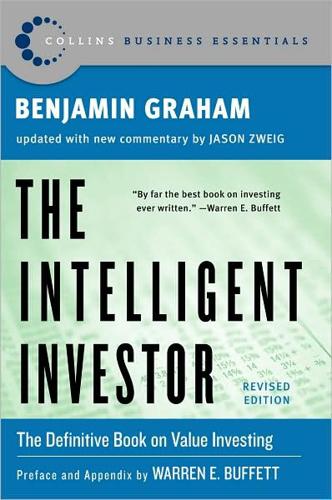
The Intelligent Investor (Collins Business Essentials)
by
Benjamin Graham
and
Jason Zweig
Published 1 Jan 1949
So while it’s hard to predictwhether these things are overpriced, there’s such a major change taking place that if you could find the winners today—and I certainly think EMC is one of those people—you’ll be well rewarded in the future.” 3 The “Y2K bug” or the “Year 2000 Problem” was the belief that millions of computers worldwide would stop functioning at one second past midnight on the morning of January 1, 2000, because programmers in the 1960s and 1970s had not thought to allow for the possibility of any date past 12/31/1999 in their operating code. U.S. companies spent billions of dollars in 1999 to ensure that their computers would be “Y2K-compliant.” In the end, at 12:00:01 A.M. on January 1, 2000, everything worked just fine. 4 For more on the folly of stock splits, see Jason Zweig, “Splitsville,” Money, March, 2001, pp. 55–56. 5 Posting no. 3622, December 7, 1999, at the Exodus Communications message board on the Raging Bull website (http://ragingbull.lycos.com/ mboard/boards.cgi?
…
Simply by subtracting the extra revenues brought in from Data General, we can see that the volume of EMC’s existing businesses grew from $5.4 billion in 1998 to just $5.6 billion in 1999, a rise of only 3.6%. In other words, EMC’s true growth rate was almost nil—even in a year when the scare over the “Y2K” computer bug had led many companies to spend record amounts on new technology.3 A Simple Twist of Freight Unlike EMC, Expeditors International hadn’t yet learned to levitate. Although the firm’s shares had risen 30% annually in the 1990s, much of that big gain had come at the very end, as the stock raced to a 109.1% return in 1999.
…
Williams Communications, Wilshire indexes Winstar Communications wireless stocks Woolworth Company (F. W.) working capital: and aggressive investors; and defensive investors; and dividends; and security analysis “workouts,” WorldCom Worthington Steel W. R. Grace Wyeth Xerox Corp. Xilinx Inc Y2K bug Yahoo! Inc. yield: and aggressive investors; and convertible issues and warrants; and defensive investors; fluctuations in; and history and forecasting of stock market; and inflation; and speculation. See also dividends; interest; performance; return; type of security Yum! Brands, Inc. Zenith Radio Ziv, Amir ZZZZ Best About the Authors BENJAMIN GRAHAM (1894-1976), the father of value investing, has been an inspiration for many of today’s most successful businesspeople.

Birth of the Euro
by
Otmar Issing
Published 20 Oct 2008
The principles referred to above under the heading of the ‘operational framework’ (equal treatment of credit institutions, etc.) have all been fulfilled. Both individually and in combination, the instruments have worked in an efficient and highly flexible way, as evidenced both in ‘routine’ operation and in exceptional circumstances. For example, the ECB was able to master the ‘Y2K’ problem (the year 2000 software problem), which gave rise to widespread concerns at the time, without major difficulties through (moderate) recourse to fine-tuning measures, while other central banks had to add special instruments to their armoury. The strains on bank liquidity in the wake of the terrorist acts of 11 September 2001 were overcome without any problems by means of fine-tuning operations.99 Through various adjustments, such as the switch from fixed to variable rate tenders or the shortening of the maturity from two weeks to one, the ECB has adapted the specific features of the main refinancing operations in the light of changing conditions. 99 A swap agreement concluded with the US central bank enabled a short-term gap in dollar liquidity to be overcome. 130 • The ECB and the foundations of monetary policy The ECB meets the bulk of credit institutions’ demand for central bank money through its main refinancing operations, supplemented by the longer-term refinancing.
…
I. 191 liquidity of banks, ECB control by open-market operations 120–1, 124–6 Lisbon agenda (2000) 235, 241 Lithuania 75, 221 living standards per capita GDP 43–6 table 3 differences in 17, 209–10 euro area compared with USA 43 London, as financial centre 176 Lucas, Robert 79 Luxembourg 14, 15, 16, 26 conversion rates 20 per capita GDP 44–7 Maastricht summit (1991), decision on EMU Stage III 9–13 Maastricht Treaty 33, 37–8, 146 (Article 111) 170–1 (Articles 105ff.) 52–4, 60–1, 97, 100, 118–19 convergence criteria 11–12, 13–17 exclusion of liability 194 fiscal policy rules 192–6 and national legislation 223 ‘opt-out clauses’ 25 prohibition on monetary financing 54–5, 192, 194, 234 ratified in European law 234–5 McKinnon, Ronald 48 macroeconomic policy asymmetry in 200–3 stability 206 macroeconomic projections 109–11 Madrid summit (1995) 232 Malta 67, 220 Index • 255 marginal lending facility 126–7, 130, 134 market economy, vs. central planning 61–2, 75, 222 media and ECB communication policy 157–8, 188 pessimism about transition 135, 136 Members of the European Parliament (MEPs) criticism of non-disclosure of ECB voting records 160–3 questions to Issing 34–43 minimum reserves 119, 120–2, 127–8 Mitterrand, François 11 model uncertainty 81 Modigliani, Franco 40 ‘monetarist’ position 5–6, 11–12 monetary financing, prohibition of 54–5, 192, 194, 234 monetary pillar, and economic pillar 99–100, 105–11, 112, 116 monetary policy autonomy 7, 8–9 centralized and decentralized fiscal policy 30, 38–9 communitisation of 9, 10 credibility 57, 65 cross-checking and communication 111–14, 116 data for 54 decision-making by committee or individual 147–9 ECB in EMU framework 191–236 in ECB Governing Council 149–56 economic theory and the practice of 184–90 and exchange rate 169–76 and fiscal policy relationship 192, 200–7 implementation of ECB 122–4, 128–30 instruments of ECB 118–30 limits to 205–6 medium-term orientation 103–4 the nature of 41 and price stability 35, 61–3, 203 prior experience and preliminary considerations 119–22 ‘regime shift’ and 79, 82–4, 94 review of ECB strategy (2002/3) 115–18 rules versus authorities 87–9 stability-oriented for the ECB 97–100 fig. 7 success of 141–6 transmission mechanism 189 trust in 33, 57 under a floating exchange regime 171–4 under uncertainty 77–9 see also single monetary policy monetary targeting 90–6 Monetary Transmission Network 189 monetary union conditions for 11–12, 13–17 consequences of 32–3 EU countries outside 75 and European Union 219–22 ‘opt-out clause’ 25 and political union 12–13, 192, 227–36 political will for 25–6 road to 3–9 start of 11–13 without political union 227–36 see also European Economic and Monetary Union (EMU) money reference value 97, 98, 106–8, 116, 118 role in ECB monetary policy strategy 98, 99, 106–7, 115, 117 as unit of account and store of value 102 use of electronic 128 256 • Index money market rate 127 fig. 8; 128–30 and interest rates (1999–2006) 141 fig. 10 and interest rates at beginning of monetary union 138–40 fig. 9 money supply defined (M3) 107 growth and inflation 92–3, 105–6 fig. 6 increase for circulation 55 ‘k-per cent rule’ 88 and price levels 39–40, 96, 105, 112 Montenegro 180 moral hazard 193–4, 196, 202 Mundell, Robert 48 nation states autonomy 196 and ECB 191–2 economic policy coordination 38–9 legislation compatibility with EMU 13, 223 responsibility of national policy 215–19 and supranational institution 2, 20–1 national central banks consensus procedures 134 control of liquidity by ECB 120–1, 124–6 cooperation with ECB 110, 131–3 and credit institutions 119 and the ESCB 52–4 and the Eurosystem 53–4, 76, 110, 119–20 independence of (Article 108) 55–60, 223 interest rates reduction 133–4 mandate 165 minimum reserves 120–2 ‘overcapacity’ problems 150 powers of 118–19 rotation and voting rights of governors on ECB Governing Council 224–5 table 8 shift to single monetary policy 82–4, 131–5 stability-oriented policy 138 transparency 164–5 national currencies 48 conversion rates with euro 20 former 1, 20–5 linkages with euro 239 transition to the euro 77, 82–4, 135–6 Netherlands, the 14, 15, 16, 26, 156 conversion rates 20 current account balance 214 neutrality 120, 183, 206 New Zealand, Reserve Bank of 90 Nice, Treaty of, enabling clause 171, 223 North, D. 234 Noyer, Christian 27, 70, 244 oil prices 138–9, 143, 208 declining (1990s) 14, 138 shocks first ((1970s) 6, 57 second (1979/80) 6 old age provision 197, 238 open-market operations 120, 124–6 fine-tuning operations 126, 129, 130 fixed rate and variable rate tenders 125–6, 129, 140 longer-term refinancing operations 126 main refinancing operation 124–6, 129–30, 134, 138–40 structural operations 126 optimum currency area, criteria 48–9, 219 Österreichische Nationalbank 74 Padoa-Schioppa, Tommaso 27, 28 parameter uncertainty 81 Index • 257 Party of European Socialists 34, 35, 37, 38, 40, 41–2 Pax Romana 4, 32 pensions 197, 238 Pöhl, Karl Otto 9 Poland 220 policy coordination in EMU 38–9, 200–7 assignment of responsibility and implicit 203–7 ex ante 200–3 political economy 201–2 political pressure on ECB 137, 162, 174, 202–3 on fiscal policy 206–7 on monetary policy decision-making 148–9 political risks 230–4 political union and common currency 4 in conflict with EMU scenario 242–4 conflict-free extension scenario 242 and economic union 47–51 and monetary union 12–13, 192, 227–36 monetary union without 227–36 political will 25–6, 230 poorer countries 17 population, euro area 43–4 table 2 portfolio diversification 214 Portugal 14, 15, 16, 26 conversion rates 20 current account balance 214, 215 per capita GDP 46 pound sterling 176, 240 press conferences, European Central Bank 157–8, 167, 168 price stability 7, 8, 30, 31, 33, 34–5, 39 below 2 per cent 97, 98, 103, 115, 117 and budget stabilisers 195 convergence criterion 220–1 ECB definition 97–8 ECB monetary policy and 96–118, 170–1, 203 effects of lack of 143–6 in euro area 150–1 and exchange rates 90–3, 170, 172–4 the importance of 61–3, 234 medium-term orientation 103–5, 115 primacy for European Central Bank 60–6, 168 quantitative definition 97, 98, 100–5, 115, 145, 221 trade-off with other objectives 63–6 prices, differentials (Balassa-Samuelson effect) 210–11, 216 Pro-DM party 21 Protocol on the Statute of the European System of Central Banks 26, 52, 119 psychology, in acceptance of euro 24–5, 33, 36 public debt 15–16 fig. 3, 17–18, 193, 236, 239 ceiling for 197 exchange rate risk 194–5 levels 238 public debt instruments, prohibition on direct purchase of 55 public finance, sound condition for EMU participation 13, 19–20, 25, 236 public sector prohibition on provision of credit to 55 relationship with private sector 204 share in euro area 46 purchasing power per capita GDP 210–11 fig. 16 Randzio-Plath, Christa 32, 37 real-estate prices 217–18 reference value, for monetary growth 97, 98, 106–8, 116, 118 258 • Index refinancing see open-market operations ‘regime shift’, and monetary policy 79, 82–4, 94 responsibility assignment of policy 203–7, 217 transfer of national to Europe scenario 242 revenue sharing 218–19 Rich, Georg 85 risk-sharing 214–15 Roman Empire 4, 32 Romania 76 Rueff, Jacques 229 Russia 181 economic crisis (1998) 138 San Marino 180 sanctions 197 savings 36 scepticism 42–3, 50, 68, 76, 84, 135, 207, 229, 243 Schiller, Karl 6 Second World War, and Germany 22–3, 38 securities euro-denominated 239 public and private sector 123–4 ‘tier one assets’ 123–4 ‘tier two assets’ 124 Simons, Henry 87 single monetary policy 47, 54, 68 causes of divergence 207–12 and the ECB 223–7 ECB preparations for 76–85 ‘one size fits all’ issue 207–19, 231, 241 price stability 97 real interest rates, real exchange rate, risk-sharing 212–15 shift of national central banks to 82–4, 131–5, 218–19 and social union 231, 238, 241, 242, 243 single money market 47 Slovenia 67, 75, 210 social rights 238, 243 social union 231, 238, 241, 242, 243 Solans, Eugenio Domingo 27, 28, 70 Solow, Robert 39–40 sovereignty and the Bundesbank 8–9 and economic policy coordination 38–9 and national central banks 150 and supranational institution 2, 20–1, 170, 230, 236 Spain 14, 15, 16, 26, 210, 213 conversion rates 20 current account balance 214, 215 stability consensus on 14 of currency 177, 184, 238, 244 of currency and scarcity of metal 4 of demand for money 117 ECB monetary policy strategy 96–118, 205 of euro 1–2, 33, 141–6 of euro in ECB monetary policy 131–90 exchange rates 6 monetary and society 191 Stability and Growth Pact 15, 17, 25, 55, 196–200, 202, 204, 217, 221, 237 evaluation 198–200, 235 non-compliance 222, 236, 241 standing facilities 126–7, 134–5 statistical data, conversion to a common base 82–4 Statistical Office of the European Communities see Eurostat Statute of the European System of Central Banks 26, 52–66, 87, 119, 223, 234, 239, 241 Article 10 and amendments 223–6 subsidiarity principle 234 supranational institution central bank as a 9, 122–4, 200, 232 Index • 259 and national sovereignty 2, 20–1, 170, 230, 236 Survey of Professional Forecasters 152 Sweden 75 Swiss National Bank 85 tax system increase in indirect rates 143, 204 redistribution effect 62 Taylor rule 89–90 terrorism (11 September 2001) 151 effects on bank liquidity 129 Thygesen, Niels 10 Tietmeyer, Hans 29, 69 Tinbergen Rule 65 Torres Marques, Helena 41–2 trade, usefulness of common currency to 3 trade unions 144, 202 transfer payments, in welfare state 230–1, 238, 243 transmission mechanism 189 transparency 164–5 of ECB 31, 33, 42–3, 60, 84, 87, 97, 99, 113, 163–9 travel, without having to change money 36 Treaty on European Union (1992) see Maastricht Treaty Trichet, Jean-Claude 26 trust 33, 42, 238, 242 uncertainty about the state of the economy 80–1, 82–4 about the structure of the economy 81, 84–5 the elements of 79–82 monetary policy under 77–9, 189 and price instability 63 strategic 81–2, 84–5 ‘uneasy triangle’ theory 7–9 unemployment 33, 34–5, 41, 144, 217 euro area compared with USA 47 and inflation 39–40 structural 238 unit labour costs, and current account balances 215–16 fig. 19 United Kingdom (UK) 4, 75 Chancellor of the Exchequer 58, 147 exchange rate intervention 175 opted out 25, 240 presidency of European Council (1998) 25 reservations on ECB 59 see also Bank of England United States of America (USA) euro area compared with 43, 46–7, 83, 190, 209–10, 212 exchange rate intervention 175 US Federal Open Market Committee (FOMC) 147 US Federal Reserve 76, 140 organizational structure 85 Vatican State 180 voting collegial 70 consensus principle 153–6 ECB Governing Council model 150, 153–5 majority 68, 171 no disclosure of records 160–3 ‘one person – one vote’ 67–8, 226 rights of national central bank governors in ECB Governing Council 224–7 wage policy 14, 138, 201 national 200, 202, 204 Waigel, Theo 28–9 wealth effect, and asset price trends 109 Weizsäcker, Richard von 230 welfare issues 202, 230–1, 238 welfare state, European transfer payments 230–1, 243 260 • Index Werner Group report (1970) 5 world economy, effects of decline in euro exchange rate on 175–6 ‘Y2K’ problem 129 Zweig, Stefan 22, 62
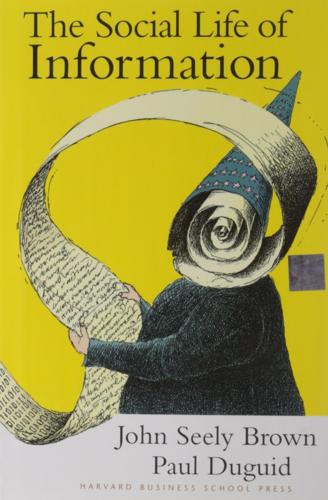
Social Life of Information
by
John Seely Brown
and
Paul Duguid
Published 2 Feb 2000
The notion of the "third wave" comes from the futurist Alvin Toffler's (1980) book of the same name. Page 255 4. Indeed, the degree to which we complain about such technologies when they do go wrong indicates the extent to which we have all become dependent on them to go right. The apprehension about the Y2K bug, which some predict may allow tiny embedded chips to bring huge social institutions to a halt, is itself a sign of how deeply enmeshed these things are in our lives. 5. Sometime around 2012, it has been predicted, Moore's Law will come up against the physical limitations of current microchip components, though by then solid-state components may well have been replaced. 6.
…
It is Page 262 the component of knowledge which does not appear in the form of rules and which, therefore, cannot be resolved into information or itemized in the manner characteristic of information. (p. 167) 29. Humphrys, 1997. 30. Jennings et al., 1996. 31. This may turn out to be the biggest challenge in adjusting Y2K problems. 32. These quotations also come from the IBM intelligent agent research (see note 7). 33. Quoted in Quittner, 1995. 34. Those who are unhappy, by contrast, can express their rage by posting messages to the microsoft.crash.crash.crash or microsoft. sucks newsgroups. 35. The car, by the way, found a buyer within a week. 36.

Losing Control: The Emerging Threats to Western Prosperity
by
Stephen D. King
Published 14 Jun 2010
The Federal Reserve added fuel to the fire by keeping policy rates relatively low, because of the unjustified fears of global recession stemming from the Asian crisis and, later on, the concerns associated with computer failures linked to the new millennium (although why monetary policy had to play a role in the Y2K threat is, to say the least, puzzling). The decision to keep interest rates low after the Asian crisis is understandable but, in hindsight, was based on a misinterpretation of the effects of the crisis. Economic models are mostly driven by real, rather than financial, flows: changes in the value of exports and imports, not changes in the value of holdings of financial assets.
…
(i) Wills Moody, Helen (i) Wimbledon (i), (ii), (iii) Winder, Robert (i) wine (i), (ii), (iii) WIR see World Investment Report Wolf, Martin (i) women’s vote (i) wool industry (i), (ii) workers see also labour nationalism (i) running out of workers (i) command over limited resources (i) demographic dividends and deficits (i) demographic dynamics (i) infant mortality (i) Japan: an early lesson in ageing (i) not the time to close the borders (i) pensions and healthcare (i) a renewed look at migration (i) scarcity (i) working-age population (i), (ii), (iii), (iv), (v), (vi) World Bank (i), (ii), (iii), (iv), (v) WorldCom (i) World Development Indicators (i) World Economic Forum (i), (ii) World Economic Outlook (i) World Financial Center, Shanghai (i) World Investment Report (WIR) (i) World Trade Organization (WTO) (i), (ii), (iii) Wright Brothers (i) The Writing on the Wall (Hutton) (i), (ii) WTO see World Trade Organization Wu, Ximing (i), (ii) xenophobia (i), (ii), (iii), (iv), (v) Y2K threat (i) yen (i), (ii), (iii) Yom Kippur War (i) Yugoslavia (i) Yu Zhu (i) Zaidi, S. (i) Zheng He (i)
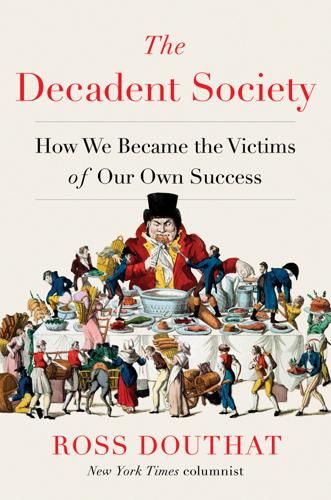
The Decadent Society: How We Became the Victims of Our Own Success
by
Ross Douthat
Published 25 Feb 2020
Our planes and trains and automobiles create endless vectors for deadly diseases to move more swiftly between societies than ever before. Our way of life depends on a technological infrastructure that various disasters could put to an existential test. And the longer the time horizon for sustainable decadence, the more likely it becomes that the whole thing accidentally goes bang—in a Y2K-type meltdown, in a nuclear exchange that happens because the early warning systems misfire and some nuclear line officer fails to keep his cool, in a Stephen King-esque Captain Trips outbreak, or the Skynet endgame feared in Palo Alto. Or, of course, the meteor. Were the dinosaurs decadent? Alas, their books have not survived.
…
The Writing On the Wall If this is how the story of our decadence ends, there will be a morality-play element to it after all, a sense in which our fall fits the Durant quote and the Gibson vision strangely well. Because climate change and population imbalances and mass migration are not problems dropping like European microbes out of a clear blue Mesoamerican sky, nor are they accidental Y2K or nuclear-launch disasters that can be feared but not exactly predicted. Instead, they are challenges that follow from long-term technological and economic trends, long-term patterns of human behavior—which in turn means that they’re the kinds of trends that a vigorous, nondecadent, advanced civilization should have been able to cope with and head off before they led to some dégringolade.

Scary Smart: The Future of Artificial Intelligence and How You Can Save Our World
by
Mo Gawdat
Published 29 Sep 2021
I assure you those kinds of human errors are being coded into AI today and will remain and propagate for years to come. Other errors that we’ve included in our code are sometimes the result of not being able to forecast what the demands of the future will be at the time of writing the code. There’s no better example of this than the Y2K bug. Software developers, yours truly included, never thought that the code we wrote in the 1900s would continue to run into the new millennium. And because computer storage was extremely expensive at the time, coding the year in the format 19xx was an unnecessary repetition of the constant 19 and a waste of disk storage capacity.
…
Well, none of these things happened, although some small incidents were reported – some parking meters failed in Spain, the French meteorological institute published on its website the weather for 1 January 1900 and some bus-ticket validation machines crashed in Australia. Leading up to the year 2000, though, the Y2K bug did cost billions of dollars through the upgrade of computer systems worldwide. Will there be similarly unforeseen events that we did not take into account when we wrote the original AI code for something? Absolutely. Will we evade the possible resulting catastrophes or limit the global costs to billions?
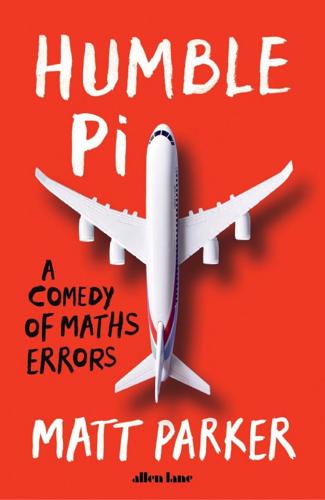
Humble Pi: A Comedy of Maths Errors
by
Matt Parker
Published 7 Mar 2019
There are also processors in my washing machine, dishwasher and car, and I have no idea how to update those. It’s easy to write this off as a second coming of the Y2K ‘millennium bug’ that wasn’t. That was a case of higher level software storing the year as a two-digit number, which would run out after ninety-nine. Through a massive effort, almost everything was updated. But a disaster averted does not mean it was never a threat in the first place. It’s risky to be complacent because Y2K was handled so well. Y2K38 will require updating far more fundamental computer code and, in some cases, the computers themselves. See for yourself If you want to see the Y2K38 bug in action for yourself, find an iPhone.
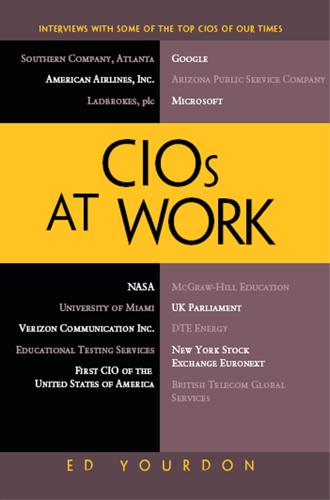
CIOs at Work
by
Ed Yourdon
Published 19 Jul 2011
The things I don’t know and you know are things that I try to discover. And then there are things you don’t know and I don’t know. That’s what worries me. Yourdon: Okay, that’s what Donald Rumsfeld called the “unknown unknowns.” Bohlen: Yes. Yourdon: We used to have a lot of conversations about that sort of thing when we were planning for Y2K ten years ago. There are the known knowns and the known unknowns and so on. Okay, so you’re concerned about the things we’re not even aware that we should be worrying about. Bohlen: It primarily comes from my work in the Department of Defense days, and you’re familiar with the war games. But there are some people out there trying to destroy our way of life.
…
Index A AdKnow ledge, Inc., 87 Agile development methodology, 62 Amazon, 314, 319 America COMPETES Act, 304 American Airlines, 47, 72 American Defense Department, 84 American Marketing Society, 113 American Production Inventory Control Society, 211 Ames, 320 AMR Corp, 47 Android, 43 Annapolis, 340 Apple, 97, 101, 217, 242, 295 Computer, 35 Genius Bar, 8 Archipelago Holdings Inc., 87 Arizona Public Service (APS) Company, 66, 211, 223 Arizona State University, 227 ARPANET, 19, 117, 135 Art of Computer Programming, 2 Atlanta-based Southern Company, 191 AT&T, 191, 249 B Ballmer, Steve, 39 Bank of Boston, 47 Baylor-Grapevine Board of Trustees, 47 Bedrock foundation, 249 Bell Atlantic Mobile, 231 Bell Labs, 2, 249 BlackBerry, 60, 96, 116, 121, 171, 184, 246, 261, 296, 317 Blalock, Becky, 182, 191, 215 adaptability, 192 Air Force brat, 191, 192 Atlanta-based Southern Company, 191 banking industry, 203 Boucher, Marie, 196 brainstorm, 202 24/7 business, 199 business intelligence, 204 cloud computing, 205 cognitive surplus, 206 cognitive time, 206 Coker, Dave, 196 communication and education, 200 Community and Economic Development, 194 consumer market, 202 cybersecurity, 207, 209 data analytics, 204, 205 disaster recovery, 209 distributed generation, 204 distribution organization, 201 Egypt revolution, 198 farming technology, 206 finance backgrounds/marketing, 200, 209 Franklin, Alan, 193 Georgia Power, 191 Georgia Power Management Council, 193 global society, 206 Google, 198 incredible technology, 195 Industrial Age, 206 Information Age, 206 InformationWeek's, 196 infrastructure, 202 intellectual property, 196 intelligence and redundancy, 207 Internet, 198, 206 leapfrog innovations, 205 mainframe system, 207 marketing and customer service, 193, 200 MBA, finance, 192 microfiche, 207 microwave tower, 207 mobile devices, 203 mobility and business analytics, 205 Moore's Law, 205 new generation digital natives, 197 flexible and adaptable, 199 innovation and creativity, 199 superficial fashion, 198 Olympic sponsor, 193 out pushing technology, 202 reinforcement, 201 sense of integrity, 200 Southern Company, 194, 198, 201, 207 teamwork survey, 201 technology lab, 202 undergraduate degree, marketing, 192 virtualization, 205 VRU, 203 Ward, Eileen, 196 wire business, 201 world-class customer service, 203 Bohlen, Ken, 211 American Production Inventory Control Society, 211 Apple, 217 APS, 211, 223 ASU, 227 benchmarking company, 216 chief innovation officer, 229 Citrix, 217 cloud computing, 218, 219 cognitive surplus, 220 DECnet, 212 Department of Defense, 222 distributed computing, 217 energy industry, 214 gizmo/whiz-bang show, 216 GoodLink, 217 hard-line manufacturing, 218 home computing, 219 home entertainment, 219 Honeywell, 219 HR generalists, 215 information technology department, 211 Intel machines, 217 John Deere, 213 just say yes program, 223 Lean Six Sigma improvement process, 211 Linux, 220 MBA program, 214 mentors, 213 national alerts, 224 North American universities, 228 paradigm shifts, 218, 220 PDP minicomputers, 212 Peopleware, 226 prefigurative culture, 221 R&D companies, 218 Rhode Island, 226 role models, 213 San Diego Fire Department, 224 security/privacy issues, 217 skip levels, 223 smart home concepts, 219 smartphone, 217 social media, 225 Stead, Jerry, 214 Stevie Award, 211 Storefront engineering, 212 traditional management, 219, 226 Twitter, 224 vocabulary, 221 Waterloo operations, 213 Web 2.0 companies, 227 Web infrastructure, 215 wikipedia, 220 Y2K, 222 Botnets, 23 Brian's and Rob Pike's, 2 Bristol-Myers Squibb, 33 Broadband networks, 241 Brown, 227 Bryant, 227 BT Global Services, 253 BT Innovate & Design (BTI&D), 253 Bumblebee tuna, 130 C Career writing technology, 67 CASE tools, 232 Cash, Jim, 50 Christensen, Clyde, 212 Chrome, 14, 18 Chrysler Corporation, 175 Citibank, 337 Citicorp, 313 Citrix, 217 Client-server-type applications, 59 Cloud computing, 218, 219, 239, 240, 261, 262, 310, 311, 313 Cloud technology, 62 CNN, 54 COBOL, 250 Cognitive surplus, 20, 79, 206, 291 College of Engineering, University of Miami, 113 Columbia University, 1 Community and Economic Development, 194 Computer Sciences Corporation, 35 Computerworld magazine, 196 Consumer-oriented technology, 22 Content management system, 133 Corporate information management (CIM) program, 309 Corporate Management Information Systems, 87 Corvus disk drive, 36 Customer Advisory Boards of Oracle, 191 Customer-relationship management (CRM), 56 Cutter Business Technology Council, 173 D Dallas Children's Medical Center Development Board, 48 DARPA, 19 DDoS attacks and security, 81 DECnet, 212 Dell Platinum Council, 113 DeMarco, Tom, 16, 226 Department of Defense, 222, 329, 332 Detroit Energy, 252 Digital books, 30 Digital Equipment, 48 Distributed computing, 217 Dodge, 189 Dogfooding, 11, 37, 38, 236 DTE Energy, 173 DuPont Dow Elastomers, 151 E Educational Testing Service (ETS), 151 E-government, 282, 285 Electrical distribution grid, 182 Elementary and Secondary Education Strategic Business Unit, 151 Elements of Programming Style, 2 Ellyn, Lynne, 173 advanced technology software planning, 175 Amazon, 184 artificial intelligence group, 175 Association for Women in Computing, 173 benchmark, 180, 181 BlackBerries, 184 Burns, Ursula, 175 Chrysler, 176 Cisco, 186 cloud computing, 183, 184 component-based architecture, 186 corporate communications customer service, 185 Crain's Detroit Business, 173 cyber security threats, 177 degree of competence, 187 diversity and sophistication, 182 DTE Energy, 173 energy trading, 176 engineering and science programs, 188 enterprise business systems policy, 186 executive MBA program, 176 Facebook, 185 fresh-out-of-the-university, 187 General Electric, 174 Google, 184 Grace Hopper, 174 grid re-automation, 182 Henry Ford Hospital, 174 internal social media, 185 International Coaching Federation, 178 iPads, 184 IP electrical grids, 182 iPod applications, 182 IT budgets, 186 IT responsibilities, 176 Java, 186 level of sophistication, 179 lobbying efforts, 181 medical computing, 175 Miller, Joan, 174 Mulcahey, Anne, 175 Netscape, 175 neuroscience leadership, 189 object-oriented programming, 186 Oracle, 186 peer-level people, 179 people system, 177 policies and strategies, 180 Radio Shack, 180 remote access capacity, 189 security tool and patch, 183 sense of community, 180 Shipley, Jim, 174 smart grid, 177, 182 smart meters, 182 smart phone applications, 183 swarming, 179 technical competence, 178, 179 Thomas, Marlo, 174 Twitter, 185 UNITE, 181 vendor community, 186 virtualization, 183, 184 Xerox, 175 E-mail, 9 Employee-relationship management (ERM), 56 Encyclopedia, 115 Encyclopedia Britannica, 292 ERP, 123 F Facebook, 244 Ellyn, Lynne, 185 Sridhara, Mittu, 73, 84 Temares, Lewis, 116, 121, 131 Wakeman, Dan, 169 Federal information technology investments, 299 Flex, 236 Ford, 102 Ford, Monte, 47 agile computing, 59 agile development, 62, 66 airplanes, 51 American Airlines, 47 Arizona Public Services, 66 Bank of Boston, 47 Baylor-Grapevine Board of Trustees, 47 BlackBerry, 60 board of Chubb, 51 board of Tandy, 51 business organizations, 63 business school, dean, 50 career writing technology, 67 client-server-type applications, 59 cloud technology, 62 CNN, 54 common-sense functionality, 49 consumer-based technology, 60 CRM, 56 Dallas Children's Medical Center Development Board, 48 Digital Equipment, 48 ERM, 56 financial expert, 69 frequent-flier program, 57 frontal lobotomy, 57 Harvard Business Review, 50 HR policies, 65 IBM, 48 information technology, 47, 52 Internet, 54 Internet-based protocol, 59 iPhone, 52 IT stuff, 58 Knight Ridder, 51 legacy apps, 59 mainframe-like applications, 59 management training program, 64 marketing and technical jobs, 48 Maynard, Massachusetts mill, 48 MBA program, 50 mentors, 49 Microsoft, 50 mobile computing, 62 New York Times, 53 operations center, 54 PDP-5, 49 PDP-6, 49 Radio Shack, 51 revenue management, 57 role models, 49 security paradigms, 62 self-service machine, 57 Silicon Valley companies, 68 smartphones, 54 social networking, 51, 53, 56, 58 stateful applications, 59 techie department, 48 The Associates First Capital Corporation, 47 transmission and distribution companies, 47 wireless network, 59 YouTube, 65 Fort Worth, 226 Free software foundation, 19 Fried, Benjamin, 1, 241 agile development, 25 agile methodologies, 26 Apple Genius Bar, 8 ARPANET, 19 Art of Computer Programming, 2 Bell Labs, 2 books and records, accuracy, 25 botnets, 23 Brian's and Rob Pike's, 2 cash-like principles, 29 CFO, 4 check writers, 18 chrome, 14, 18 classic computer science text, 1 cognitive surplus, 20 Columbia University, 1 compensation management, 7 competitive advantage, 9, 18 computer science degree, 1 computer scientists, 6 consumer-driven computing, 12 consumer-driven software-as-a-service offerings, 12 consumer-driven technology, 12 consumer-oriented technology, 14, 22 corporate leadership, 25 cost centers, 4 DARPA, 19 decision makers, 17 decision making, 13 360-degree performance management, 7 detroit energy, 30 digital books, 30 document workbench, 2 dogfooding, 11 e-books, 29 Elements of Programming Style, 2 e-mail, 9 end-user support, 7 engineering executive group, 4 European vendors, 6 file servers and print servers, 17 Folger Library editions, 30 free software foundation, 19 German company, 13 German engineering, 13 Gmail, 15 Godot, 26 Google, 1 books, 29 products, 5, 10 software engineers, 6 hiring managers, 6 HR processes and technologies, 6 IBM model, 13 instant messaging, 9 Internet age, 6 interviewers, training, 6 iPad, 29 iPhone, 29 IPO, 3 IT, engineering and computer science parts, 4 Knuth's books, 2 Linux machine, 8 Linux software, 19 machine running Windows, 8 Macintosh, 8 Mac OS, 9 macro factors, 11 Managing Director, 1 mentors, 1 microcomputers, 18 Microsoft, 5 Minds for Sale, 20 Morgan Stanley, 1–3, 5, 16 nonacademic UNIX license, 2 nontechnical skills, 5 oil exploration office, 17 open-source phone operating system, 20 outlook, 15 PARC, 19 performance review cycles, 7 personal computer equipment, 15 post-Sarbanes-Oxley world, 25 project manager, 13 quants, 24 rapid-release cycle, 26 R&D cycle, 24 regression testing, 27 role models, 1 shrink-wrapped software, 14 signature-based anti-virus, 22 smartphone, 20, 27 social contract, 8 society trails technology, 21 software engineering tool, 13 software installation, 14 supply chain and inventory and asset management, 10 SVP, 4 telephony, 17 ten things, 13 TMRC, 19 TROFF, 2 typesetter workbench, 2 UI designer, 14 university computing center, 28 videoconferencing, 12 Visicalc, 24 Wall Street, 23 Walmart, 6 waterfall approach, 25 XYZ widget company, 5 YouTube video, 20 G Gates, Bill, 39, 50 General Electric, 134 General Foods, 309, 326–328 General Motors, 33, 321, 329, 332 George Mason School of Information Technology, 309 Georgia Power Company, 191–193, 196 Georgia Power Management Council, 193 German company, 13 German engineering, 13 German manufacturing company, 232 Gizmo/whiz-bang show, 216 Gmail, 15 GoodLink, 217 Google, 1, 84, 85, 117, 217, 219, 220, 222, 235, 241, 263, 302, 319 apps, 314 books, 29 commercial products, 10 model, 293 Government Accountability Office (GAO), 305 4G program, 250 4G smartphone, 235 GTE, 231 Gupta, Ashish aspiration, organization, 256 bandwidth and network infrastructure, 267 BlackBerry, 261 business and customer outcomes, 274 capital investment forums, 269 career progression, 255 cloud-based shared infrastructure model, 263 cloud computing, 261, 262 collaboration, 272 communications infrastructure, 258 compute-utility-based model, 262 control and integrity, 268 core competency, 255 core network infrastructure, 267 core strengths, 256 cost per unit of bandwidth, 267 customer demands, 268 data protection, 261, 262 decision-making bodies, 269 demographics, 272, 273 device convergence, 263 dogfooding, 259 employee flexibility, 260, 264 engagement and governance, 269 enterprise market segment, 261 equipment management, 260 executive MBA, 256 fourth-generation LTE networks, 267 functional service departments, 270 Global Services, distributed organization, 257 Google, 263, 275 Google Apps, 266 handheld devices, 265 hastily formed networks, 258 IMF, 266 innovation and application development, 265 iPad, 257, 260, 261, 266,267 iPhone, 266 Japan, 257, 258 London Business School, 253 management functions, 257 management sales functions, 257 market segments, 259 MBA, General Management, 253 measurements, 271 messaging with voice capability, 264 mini-microcomputer model, 261 mobile communications network, 258 mobile-enabling voice, 259 mobile phone network, 260 mobile traffic explosion, 265 network infrastructures, 265 network IT services, 254 network quality, 257 new generation digital natives, 271 disadvantages, 273 Google, 273 opportunities, 273 Olympics, 263 opportunities, 275 organizational construct, 272 outsourced network IT services, 259 outsourcing, 271 per-use-based model, 262 portfolio and business alignment, 274 Portfolio & Service Design (P&SD), 253 primary marketing thrust, 264 product development thrust, 264 product management team, 259 project and program management, 255 resource balance, 270 scalability, 262 security, 262 Selley, Clive, 254, 255 service delivery organization, 254 single-device model, 264 smart devices, 267 smart phones, 266 telecommunications capability, 259 upward-based apps, 264 virtualization, 261 voice-over-IP connections, 258 Windows platform, 261 Gurnani, Roger, 231 accounting/finance department, 233 analog cellular networks, 250 AT&T, 249 bedrock foundation, 249 Bell Atlantic Mobile, 231 Bell Labs, 249 blogs, 244 broadband networks, 241 business benefits, 237 business device, 240 business executives, 238 business leaders, 248, 249 business relationship management, 248 buzzword, 239 CASE tools, 232 cloud computing, 239, 240 COBOL, 250 consumer and business products, 231 consumer electronics devices, 241 consumer telecom business, 233 customer-engagement channel, 244 customer forums, 244 customer support operations, 251 customer-touching channels, 236 degree of control, 246 distribution channel, 250 dogfooding, 236 ecosystem, 243, 249 enterprise business, 233 ERP systems, 236 face-to-face communications, 244 FiOS product, 235 flex, 236 "follow the sun" model, 239 German manufacturing company, 232 4G program, 250 4G smartphone, 235 hardware/software vendors, 247 information assets, 245 information technology strategy, 231 intellectual property rights, 244 Internet, 235, 239 iPhone, 243 Ivan, 232 Lowell, 232 LTE technology-based smartphone, 235 marketing, 251 MIT, 246 mobile technology, 234 Moore's law, 242 MP3 file, 235 network-based services, 240 Nynex Mobile, 233 P&L responsibility, 251 PDA, 238 personal computing, 235 product development, 234, 251 role models, 232 sales channels, 251 smartphones, 238 state-level regulatory issues, 251 state-of-the-art networks, 243 telecom career, 232 telephone company, Phoenix, 234 Verizon Communication, 231, 232 virtual corporations, 241 Web 2.0, 244 Williams Companies, 232, 233 WillTell, 233 wireless business, 233 H Hackers, 19 Harmon, Jay, 213 Harvard Business Review, 50 Harvard Business School, 331 Heller, Martha, 171 Henry Ford Hospital, 174 Hewlett-Packard piece, 129 Home computing, 219 Honda, 102 Honeywell, 219 Houghton Mifflin, 134, 136 I IBM, 48, 250 manpower, 311 model, 13 Indian IT outsourcing company, 255 Information technology, 52 Intel machines, 217 International Coaching Federation, 178 Internet, 9, 44, 54, 117, 235, 239, 316, 322 Internet-based protocol, 59 Interoperability, 341 iPads, 2, 94, 97, 184, 257, 260, 264, 267, 288, 289, 295, 296 IP electrical grids, 182 iPhones, 43, 52, 96, 101, 170, 181, 260, 264,296 iPod, 101 IT lifecycle management process, 37 Ivan, 232 J John Deere, 213 K Kansas, 226 Kernigan, Brian, 2 Knight Ridder, 51 Knuth, Donald, 2, 29 Kraft Foods Inc, 309 Krist, Nicholas, 28 Kundra, Vivek Clever Commute, 305 cognitive surplus, 303 command and control systems, 301 consumerization, 302 consumption-based model, 300 cyber-warfare, 301 Darwinian pressure, 302 desktop core configuration, 306 digital-borne content, 301 digital oil, 300, 307 digital public square, 304 enterprise software, 303 entrepreneurial startup model, 306 frugal engineering, 306 Google, 302 government business, 302 innovator's dilemma, 307 iPad, 302 IT dashboard, 302 leapfrog technology, 306 massive consumerization, 301 megatrends, 301 parameter security, 302 Patent Office, 305 pharmaceutical industry, 304 phishing attacks, 301 policy and strategic planning, 299 security and privacy, 301 server utilization, 300 social media and technology, 300, 306 storage utilization, 300 Trademark Office, 305 Wikipedia, 303 L LAN, 259 Lean Six Sigma improvement process, 211 Levy, Steven (Hackers), 19 Linux, 220 machine, 8 open-source software, 19 Lister, Tim, 226 London Business School, 73, 253, 256 Long-term evolution (LTE), 235 Lowell, 232 M MacArthur's intelligence officer, 327 Macintosh, 8 Mainframe computers, 118 Mainframe-like applications, 59 Marriott's Great America, 35 McDade, 327 McGraw-Hill Education, 133, 147, 150 Mead, Margaret, 221 Mendel, 311 Microcomputers, 18 Microsoft Corporation, 5, 11, 33, 36, 38, 41, 44, 46, 50, 156, 217, 223, 236, 250, 293 Microsoft Higher Education Advisory Group, 113 Microsoft's operational enterprise risk management, 33 Middlesex University, 189 Miller, Joan Apple products, 295 authority and accuracy, 292 award-winning ICT programs and services, 277 back locked-down information, 289 big-scale text issues, 294 big-time computing, 279 BlackBerry, 296 business management training, 281 business skills, 281 central government, 283 cognitive surplus, 291 community care project, 278 community development programs, 277, 278 computers, constituency office, 294 confidential information, 284 data management, 281 decision making, 286 democratic process, 288 economics degree, 278 e-government, 282, 285 electronic communication, 289 electronic-enabled public voice, 286 electronic information, 288 electronic media, 286 electronic records, 280, 284 electronic services, 294 e-mail, 289, 290, 295 forgiving technology, 296 front-office service, 282, 283 Google, 292 Google's cloud service, 290 Government 2, 287 Health and Social Care, 284 House business, 294 House of Lords, 288 ICT strategy, 289, 290 information management, 278 insurance company, 278 Internet information, 285 iPad, 288, 289, 296 IT data management, 279 management principle, 280 local government, 283 mainframe environment, 289 member-led activity, 287 messages, 289 Microsoft, 293 Microsoft's cloud service, 290 mobile electronic information, 284 mobile technology, 289 national organization, 284 network perimeters, 290 official government information, 285 on-the-job training, 281 organizational planning, 278 Parliamentary ICT, 277 project management, 279 public sector, 282 public transportation, 285 quango-type organizations, 283 representational democracy, 286 security, 290, 291 social care organization, 279 social care services, Essex, 278 social care systems, 284 social networking, 285 sovereignty, 291 sustainability and growth, 293 technical language, 294 technology skills, 281 transactional services, 285 transferability, 291 Web-based services, 285 Wikipedia, 291, 292 X-factor, 286 Minds for Sale, 20 Mitchell & Co, 333 MIT Media Labs, 149 Mobile computing, 62 Mobile technology, 234 Mooney, Mark, 133 artificial intelligence, 134 back-office legacy, 136 balancing standpoint, 145 BBC, 140 Bermuda Triangle, 135 BlackBerry shop, 142 Bureau of National Standards, 136 business model, 140 career spectrum, 144 cloud computing, 148 competitive intelligence and knowledge, 143 Connect, 141 customer-facing and product development, 135 customer-facing product space, 137 customer space and product development, 136 digital products development, 144 digital space and product, 146 educational and reference content, 139 educational products, 141 entrepreneur, 150 General Electric, 134 GradeGuru, 140 handheld devices, 142 hard-core technical standpoint, 146 hardware servers, 142 Houghton Mifflin, 134, 136 HTML, 138 industrial-strength product, 141 intellectual content, 148 Internet, 148 iPad, 138, 139, 142 iPhone, 142, 143 iTunes, 138 Klein, Joel, 147 learning management systems, 137 long-term production system, 141 Marine Corps, 134 McGraw-Hill Education, 133, 147 media development, 144 media space, 138, 142 mobile computing, 139 MOUSE, 150 online technology, 138 open-source capabilities, 142 Oracle quota-management system, 143 people's roles and responsibilities, 137 Phoenix, 149 product development, 149 publishing companies, 142 publishing systems, 137 Reed Elsevier, 133, 136 Salesforce.com, 144, 149 scalability testing, 145 senior business leaders, 146 social network, 148 soft discipline guidelines, 141 solar energy, 149 Strassmann, Paul, 135 technical skill set, 143, 144 testing systems integration, 145 The Shallows, 139 transactional systems, 142 trust and integrity, 145 TTS, QuickPro, and ACL, 144 Vivendi Universal, 134 War and Peace today, 139 Moore's law, 242 Morgan Stanley, 2, 3, 16 N NASA, 309, 333, 334 National Institute of Standards and Technology (NIST), 173 Naval Postgraduate School, 134 Netscape, 175 New Brunswick model, 282 News Corp., 147 New York Stock Exchange (NYSE), 87, 116, 223, 278 New York Times, 53 North American universities, 228 NSA/CIA software, 134 Nynex Mobile, 233 O Oil exploration office, 17 Open-source phone operating system, 20 Outlook, 15 P Pacer Software, 135 Paradigm shifts, 218, 220 Parks and Recreation Department, 126 PDP minicomputers, 212 Peopleware, 226 Personal computing, 235 Personal digital assistant (PDA), 238 Petri dish, 44 Phoenix, 211 Plauger, Bill, 2 Q Quants, 24 R Radio Shack, 51 Reed Elsevier, 133, 136 Reed, John, 335 Rubinow, Steve, 87 AdKnowledge, Inc., 87 agile development, 110 Agile Manifesto, 110 Archipelago Holdings Inc., 87 attributes, 108 capital market community, 91 cash/actual trading business, 88 channel marketing departments, 92 cloud computing, 97 CNBC, 89 collaborative technology, 95 collective intelligence, 95 communication skills, 102, 106 conference organizations, 99 consumer marketplace, 94 data center, 90 decision making, 105, 108 economy standpoint, 100 e-mail, 100 Fidelity Investments, 105 financial services, 92 IEEE, 101 innovative impression, 94 Internet, 98 iPad, 97 iPod device, 91 labor laws, 110 listening skills, 106 logical progression, 104 Mac, 96 mainframe, 104 management and leadership, 104, 105 market data system, 89 micro-second response time, 89 mobile applications, 94 multidisciplinary approach, 103 multimedia, 97 multi-national projects, 110 multiprocessing options, 99 network operating system, 103 NYSE Euronext, 87 open outside system, 88 parallel programming models, 99 personal satisfaction, 109 PR function, 106 proclaimed workaholic, 109 real estate business, 88 regulatory and security standpoint, 96 Rolodex, 94 Rubin, Howard, 99 server department, 97 software development, 89 sophisticated technology, 101 technology business, 88 technology integration, 91 trading engines, 90 typewriter ribbon, 94 virtualization, 98 Windows 7, 96 younger generation video games, 93 visual interfaces, 93 Rumsfeld, Donald, 222 S San Diego Fire Department, 224 Santa Clara University, 36 SAS programs, 131 Scott, Tony, 10, 33, 236 Android, 43 Apple Computer, 35 architectural flaw, 44 BASIC and Pascal, 35 Bristol-Myers Squibb, 33 Bunch, Rick (role model), 34 business groups, 42 COO, 39 Corporate Vice President, 33 Corvus disk drive, 36 CSC, 35 Defense department, 45 dogfooding, 37, 38 games and arcades, 35 General Motors, 33 IBM's role, 37 information systems management, 36 integrity factor, 40 Internet, 44 iPhone, 43 IT lifecycle management process, 37 leadership capability, 40 leisure studies, 34 macro-architectural threats, 44 Marriott's Great America, 35 math models, 36 Microsoft Corporation, 33, 36, 38, 41, 44, 46 Microsoft's operational enterprise risk management, 33 parks and recreation, 34 Petri dish, 44 playground leader, 42 product groups, 42 quality and business excellence team, 33 Santa Clara University, 36 Senior Vice President, 33 smartphone, 43 social computing, 38 Sun Microsystems, 36 theme park industry, 35 University of Illinois, 34 University of San Francisco, 36 value-added business, 33 Walt Disney Company, 33 Senior Leadership Technology and Product Marketing, 71 Shakespeare, 30 Shirky, Clay, 220 Sierra Ventures, 191 Silicon Valley companies, 68 Silicon Valley software factories, 323 Skype, 118 Smart Grid Advisory Committee, 177 Smartphones, 20, 27, 43, 54, 217, 238 Social care computer electronic record system, 279 Social computing, 38, 320 Social networking, 51, 53, 56, 58 Society trails technology, 21 SPSS programs, 131 Sridhara, Mittu, 71 Amazon, 76 American Airlines, 72 back-end computation and presentation, 80 banking, 77 B2B and B2C, 85 business/product departments, 82 business work context, 74 buzzword, 77 career aspiration, 73 career spans, 73 coders, 72 cognitive surplus, 79 competitive differentiation, 74 computing power, 78 contribution and energy, 85 convergence, 75 CPU cycles, 78 cross-channel digital business, 71 cultural and geographic implementation, 72 customer experience, 84, 85 customer profile, 76 data visualization, 79, 80 DDoS protection, 81 economies of scale, 77 elements of technology, 72 encryption, 82 end customer, 83 entertainment, 75 ERP system, 72 Facebook, 84 finance and accounting, 73 foster innovation and open culture, 81 friends/mentors/role models, 74 FSA, 76 gambling acts, 81 games, 79 gaming machines, 80 GDS, 72 global organization, 71 Google, 75, 84, 85 Group CIO, Ladbrokes PLC, 71 industry-standard technologies, 77 integrity and competence, 83 IT, 74, 82 KickOff app, 71 land-based casinos, 79 live streaming, 78 London Business School, 73 mobile computing, 78 multimedia, 84 new generation, 84 on-the-job training, 73 open-source computing, 79 opportunity, 80, 83 PCA-compliant, 81 personalization, 76 real-time systems, 74 re-evaluation, 81 reliability and availability, 77 security threats, 80 smart mobile device, 75 technology-intense customer, 85 top-line revenue, 74 trader apps, 82 true context, 73 underpinning business process, 76 virtualization, 78 Visa/MasterCard transactions, 78 Web 3.0 business, 76 web-emerging web channel, 76 Wikipedia, 79, 85 Word documents and e-mail, 82 work-life balance, 84 young body with high miles, 72 Zuckerberg, Mark, 73 Stead, Jerry, 214 Storefront engineering, 212 Strassmann, Paul, 228, 309 agile development, 340 Amazon EC2, 314 America information processors, 322 Annapolis, 340 AT&T, 332 backstabbing culture, 339 BlackBerry, 317 block houses, 319 CFO/CEO position, 337 CIM program, 309 Citibank, 337 Citicorp, 313, 339 cloud computing, 310, 311, 313 coding infrastructure, 341 communication infrastructure, 341 corporate information management, 329 Corporate Information Officer, 309 counterintelligence, 320 cyber-operations, 338 Dell server, 314 Department of Defense, 329, 332 Director of Defense Information, 309 employee-owned technology, 316 enterprise architecture, 316 exfiltration, 313 financial organizations, 320 firewalls and antiviruses, 312 General Foods, 309, 326–328 General Motors, 321, 329, 332 George Mason School of Information Technology, 309 Google apps, 314 government-supported activities, 326 Harvard Business School, 331 HR-related issues, 331 IBM manpower, 311 infiltration, 313 Internet, 316, 322 interoperability, 315, 317, 341 Kraft Foods Inc, 309 MacArthur's intelligence officer, 327 Machiavellian view, 327 mash-up, 316 military service, 331 NASA, 309, 333, 334 police department, economics, 312 powerpoint slides, 324 Radio Shack, 319 senior executive position, 334 service-oriented architecture, 316 Silicon Valley software factories, 323 social computing, 320 Strassmann's concentration camp, 318 structured methodologies, 342 U.S.
…
Navy, 318 Virginia Tech, 323 virtualization, 310, 311 VMware, 311 Web 2.0, 325 WikiLeaks, 320 Windows machine, 317 Xerox Corporation, 309, 326, 330, 338 Xerox video center, 318 Sun Microsystems, 36 Supply-demand organization, 157 T Tech Mahindra, 253, 255 Tech Model Railroad Club (TMRC), 19 Telephony, 17 Temares, Lewis, 113 adaptability, 128 American Marketing Society, 113 Apple device, 116 ARPANET and Internet, 117 BBA, 126 camera, 124 CIO responsibilities and duties, 127 classroom information, 119 client and terminal, 124 College of Engineering, University of Miami, 113 combination of degrees, 125 communication and business skills, 126 computer conference, 116 customer service, 130 cyber security, 121 day-to-day administration, 128 digital device, 125 document management, 129 electronic hospital record, 115 encyclopedia and Wikipedia, 115 entrepreneurial characteristics, 114 ERP, 123 Facebook, 116, 121 faculty members, 121 financial industry, 123 Fortune 500 commercial land, 114 Google, 117 GPS technology, 117 grocery store, 130 Hewlett-Packard piece, 129 higher education, 114, 122 high-performance computing, 119 IBM data center, 124 independent entrepreneurs, 114 Information Technology (IT), 113, 118 Jones, Sam, 131 leading-edge technology, 119 mainframe computers, 118 marketing, 122 matchmaker.com, 131 matchmakerexecs.com, 131 MBA, 126 MIT and Berkeley, 120 mobile technology, 115 New-Age, technology-savvy kids, 115 online degree, 121 passion, 128 personal computer, 117 philanthropism, 123 presentation skills, 128 project management, 126 rainmaker.com, 131 retail industry, 123 revenue producer, 123 RIM device, 116, 121, 124 Skype, 118 social media, 115, 116 SPSS and SAS programs, 131 telecommunications, 120 telemedicine, 118 TRS-80s, 129 Twitter, 116 up-to-date technology, 119 video entertainment, 116 voice/data integration, 117 Web 2.0 industry, 132 wireless computers, 115 yellow notepaper, 115 YouTube, 120 Texas, 226 The Associates First Capital Corporation, 47 Toyota, 102 Tracy, Michael, 212 Transmission and distribution companies, 47 Turner, Kevin, 39 Twitter, 244 Ellyn, Lynne, 185 Temares, Lewis, 116 U University computing center, 28 University of Chicago, 104 University of Florida, 139 University of Illinois, 34 University of San Francisco, 36 Utilities Telecom Council, 177 V Verizon Communications, 231, 232 Videoconferencing, 12 Virtual corporations, 241 Virtualization, 310, 311 Visicalc, 24 Vivendi Universal, 134 VMware, 311 Vodafone AirTouch, 231 voice capability, 259 Voice-response unit (VRU), 203 W Wakeman, Dan, 151 advanced placement program, 168 back-end systems, 154, 155 business maxims, 159 business peers, 160, 161 cloud computing, 168 collaborative environment, 160 Computer Choice, 170, 171 consumerization, 166, 170 credibility, 160 decision making, 152 defect-free code, 164 demand-supply model, 157 digital nation, 169 disaster recovery, 154 education business, 160 ElastomerSolutions.com, 151 ETS, 151 mission, 162, 163 packaging and selling information, 163 EXP program, 159 Facebook, 169 fair value and reliable assessments, 159 for-profit business, 152 Gartner CIO Academy, 157 Gen-Xer stuff, 169 Google, 170, 172 Heller, Martha, 171 intellectual property, 171 iPad, 169 IT core competency, 172 engine, 163 industry, 156 skills, 154 ITIL version 3, 158 judgment, 162 leadership and personal integrity, 161 McGenesis, Steve, 155 mentor, 155, 156 metrics and quantitative benchmarking, 166 on-demand services, 168 operational excellence, 163 operations and maintenance, 166 Salesforce, 154 scorecard, 164, 165 security budget, 167 security organization, 167 services and packaging, 171 Six Sigma, 164 smart phones, 170 standardization, 164 Taylor, John, 154–156 virtualization and cloud computing, 167, 168 Wallington, Pat, 175 Wall Street, 23 Wall Street Journal, 168 Walmart, 6, 50 Walt Disney Company, 33 WAN, 259 Web 2.0, 244, 325 Web 3.0 business, 76 Web 2.0 companies, 227 Web infrastructure, 215 Wichita, 226 WikiLeaks, 320 Wikipedia, 79, 85, 115, 185, 220, 291, 292, 303 Williams Companies, 232, 233 WillTell, 233 Wilson, Carl, 225, 228, 229 Wilson, Joe, 338 Wireless network, 59 World Wide Web, 266 X Xerox Corporation, 175, 326, 330, 338 Xerox video center, 318 Y Y2K, 222 YouTube, 20, 65
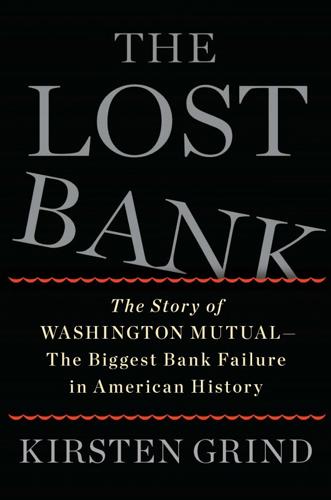
The Lost Bank: The Story of Washington Mutual-The Biggest Bank Failure in American History
by
Kirsten Grind
Published 11 Jun 2012
Occasionally he explained his reasoning: “We’re just too big.” When Killinger finally presented the structural change at a board of directors meeting in the summer of 1999, Wilson saw she had lost the battle. She told Killinger she would retire. He did not want her to leave and convinced her to stay, at least until the company completed its dreaded Y2K technology conversion. She stayed a strained two years, seeing many of her fears play out. Around the time of Wilson’s departure, Craig Tall was working out at a hotel gym in Tampa, Florida. He and Craig Chapman had spent the day driving around the city, visiting the offices of Aristar, the hard money lending division that WaMu had inherited several years earlier.
…
Senate, 318, 329–31, 334 Perrin, Michele, 130–33, 146, 168–70 Perry, Michael, 207 Pioneer Savings Bank, 38 PNC Bank, 84, 282n Polakoff, Scott, 4, 5, 250, 263, 273–74, 282 “The Power of Yes” campaign, 68–69, 73, 85, 100, 111, 125 prepayment penalties, 74 President’s Club, 68–69, 139–44, 145, 159–61, 188 Project West, JPM’s, 231–38, 246, 266, 283, 291, 292, 298 See also Scharf, Charlie Providian Bank, 154 Puget Sound Business Journal, 20, 159, 193 Puget Sound Savings and Loan Association, 211 Pugh Capital Management, 163 Pugh, Mary, 20, 163, 188, 191–93, 194 Ramirez, Tom, 142–44, 145, 154, 332 ratings, WaMu Bair and, 249, 250–52, 262, 263 CAMELS, 176, 228, 248, 262, 300 FDIC and, 248–50, 262, 274, 281–82 liquidity and, 286 Moody’s, 237, 261, 264–66, 264n, 286, 290–91, 292 OTS and, 176, 228, 248–50, 262, 263, 267, 274, 281–82 real estate agents, 143, 152 redlining, 64 Reed, William, 164 refinancing of mortgages, 85, 99, 101, 114, 116, 145, 153, 156, 162, 266 regulators/regulation Fishman-Frank meeting with, 254 guidelines for high-risk loans and, 151 JPM meetings with, 232–34 liquidity ratio and, 215 of mortgage brokers, 223 Reich’s views about, 222 Rotella and, 255 run on WaMu and, 213 Schumer’s IndyMac letter to media and, 207–8 and underwriting guidelines for Option ARMs, 222–23 WaMu liquidity and, 210, 215 See also specific regulator Reich, John appointment as OTC director of, 221 Bair and, 222–23, 248, 249, 250–52, 263, 270, 275, 287 Citigroup case and, 318 closure of WaMu and, 299, 300 congressional testimonies of, 318 criticisms of, 221 expansion of OTS by, 221–22 and Fishman-Frank letter to save WaMu, 295–96 Fishman/WaMu meeting with, 273–74 JPM and, 233–34, 283 Killinger discussions with, 227, 235, 245, 247 Killinger-FDIC meeting with, 244–45 liquidity of WaMu and, 287 Option ARMs and, 222–23 OTS-FDIC relationship and, 227–28, 248 personal and professional background of, 221 personality and character of, 221 politics and, 221 ratings for WaMu and, 249, 263 regulation views of, 222 retirement of, 317 sale of WaMu and, 282 Schumer’s IndyMac letter to media and, 208 self-image of, 221 subprime mortgages and, 223–24 views about WaMu of, 227–28 WaMu capital raise and, 294 WaMu enforcement order and, 258–59 WaMu-OTS relationship and, 222 WaMu as political threat to, 227, 244 See also Office of Thrift Services representations, 74 reunions, WaMu, 307–9, 311 Rinehart, Charlie, 42, 46–47, 48, 51, 53 risk analysts’ pressures on WaMu and, 122 banking industry and, 122n CAMELS ratings and, 176 decline in housing market and, 138 fixed-rate mortgages and, 122n Killinger’s “higher-risk lending strategy” and, 122–23 Longbrake’s warnings about housing market and, 162 of mortgage-backed securities, 74, 75, 120 and off-loading of risky loans, 154, 157–58, 161, 173 of Option ARMs, 138, 139 Pepper’s concerns about, 134 of subprime mortgages, 153–54 Vanasek concerns about, 150 WaMu pressures to sell mortgages and, 153–54 WaMu purchasing of subprime mortgages and, 129–30 See also Risk Management Group, WaMu Risk Management Group, WaMu Cathcart as head of, 150 Killinger-Rotella relationship and, 202 Longbrake and, 98 organization and structure of WaMu and, 98, 150–51 problems facing, 135 tracking of complex data and, 165–66 turnover in, 200 underwriting guidelines and, 126 WaMu five-year plans and, 126 See also Vanasek, Jim Robinson, John, 4–5, 272, 273–74, 301–2 The Rocky Horror Picture Show, 68–69 Rotary Club (Seattle): Killinger at, 238–41 Rotella, Esther, 1, 287, 333 Rotella, Steve appearance of, 105 appraisals issue and, 180, 181n Baker e-mail about housing to, 152 bank run and, 2, 213, 280 Bank Secrecy Act and, 202 blog of, 280, 302, 305 branch tour by, 109 Casey’s relationship with, 107 Chapman (Craig) and, 128 Chapman (Fay)-Killinger relationship and, 181, 182 Chapman’s (Fay) relationship with, 180 closure/seizure of WaMu and, 5, 301–2, 303, 305 compensation for, 174 congressional testimonies of, 144n, 329–30, 331 demands for resignation of, 205 FDIC lawsuit against, 333–34 Fishman’s appointment as successor to Killinger and, 255 Fishman’s attempts to sell WaMu and, 1–5, 287 Fishman’s relationship with, 259 Golon comments about, 197, 197n high-risk loans and, 331 higher-risk marketing strategy and, 180 hiring of JPM people by, 107, 128 home equity loans and, 331 Home Loans Group and, 109–10, 128, 137, 180, 192, 255 JPM departure of, 105, 197, 197n JPM severance of, 321 JPM-WaMu direct negotiations and, 232–33 Killinger concerns of, 201–2 Killinger defended by, 195–96 Killinger hiring of, 104–5, 106 as Killinger’s potential successor, 175, 202, 239 Killinger’s relationship with, 106, 137–38, 175, 180, 202, 205, 241–42, 329–30 liquidity of WaMu and, 286 Long Beach Mortgage concerns of, 109–10, 128, 137–38 management style of, 107–8 McKinsey review and, 241–42 minority lending and, 143 Moody’s meeting and, 265 off-loading of risky loans and, 157 Option ARMs and, 143, 197n OTS and, 180 Pepper’s relationship with, 149 personal and professional backgroud of, 104, 105 personality of, 105 as president and COO, 106 at President’s Club meetings, 141–42, 143 regulators and, 255 reputation of, 104, 255 resentment against, 107 responsibilities of, 175, 202, 280 as “savior,” 107 shareholder lawsuits against, 178 shareholders and, 193, 195–96, 197 subprime loans and, 197n, 331 tensions within WaMu and, 107, 180 underwriting standards and, 192 WaMu board and, 202, 239 WaMu future of, 175 in The WaMu Way video, 147 Russia: debt crisis in, 62 Ryder, Lynn hiring of, 19 Killinger–five emissaries meeting and, 203–6 at WaMu reunion, 307 sale of WaMu bid-rigging allegations concerning, 282n employees reactions to, 302–3, 305 FDIC approval of JPM bid for, 300 FDIC bidding process for, 290, 316–17 Fishman’s attempts to sell WaMu, 2–5, 262, 269–73, 279–80, 282–83, 284, 287–88, 293–97, 301 as “government assistance” transaction, 246 impact on Seattle of, 324 and JPM acquisition of WaMu, 3, 4, 6, 7, 300, 321–22 JPM first buyout offer for, 189 JPM profits on, 328–29 JPM-WaMu direct negotiations for, 189, 195, 229–38, 238n official reviews of, 315–17 Pepper’s consideration of, 25, 27 shareholders and, 283, 290 and WaMu as distressed asset, 273, 284 See also Federal Deposit Insurance Corporation, WaMu and; JPMorgan Chase, WaMu and; Office of Thrift Services, WaMu and; specific person salespeople/managers compensation for, 140, 166–67 competition among banks and lenders for, 139–40 at Long Beach Mortgage, 166 Option ARMs and, 116–18 at President’s Club, 139–44 pressures on, 129 underwriting guidelines and, 137 WaMu purchasing of subprime mortgages and, 129–30 Salomon Brothers, 25–26 Sanchez, Alberto, 288 Santander Bank, 3, 229, 271, 282–83, 282n, 287, 288, 290, 297 savings and loan banks end of, 318 regulators of, 220–21 Savings and Loan Crisis (1989), 6, 25, 30, 39, 199, 220, 221, 248–49 Scharf, Charlie Bair’s meeting with, 266, 316 FDIC sale of WaMu and, 274, 283–84, 289–90, 290n FDIC sharing in losses of WaMu Option ARMs and, 246, 266 and government-assisted acquisition of WaMu, 266 independent examination of WaMu failure and, 316 JPM conversion of WaMu and, 320–21, 325 JPM lack of interest in acquisition of WaMu and, 271–72 JPM-WaMu direct negotiations and, 231–33, 234, 235, 236–37, 246, 271–72 Moody’s downgrade of WaMu and, 290n proposals for JPM acquisition of WaMu and, 235–38, 295 report to JPM board of, 283–84 Rotella at JPM and, 105 WaMu online data room and, 271–72, 291 Schneider, David Baker e-mail about housing to, 152 Chapman’s (Fay) concerns about housing market and, 179 Community Fulfillment Centers and, 159 Cuomo investigation and, 180–81 FDIC lawsuit against, 333–34 fraud reports and, 144, 144n, 180–81 high-margin products strategy of, 150, 151 hiring of, 128 as Home Loans Group head, 128 Jenne documentary on high-risk lending and, 172 JPM conversion of WaMu and, 321 Long Beach Management and, 137, 166 off-loading of risky loans and, 157 personality and character of, 128 at President’s Club, 140–41 professional background of, 128 Ramirez sales and, 143 reputation of, 128 shareholder lawsuits against, 178 shareholder relations and, 186 subprime commitment of, 159 underwriting standards and, 192 Schumer, Chuck, 207–8, 260 Seattle Art Museum, 2, 95, 324, 327–28 Seattle Post-Intelligencer, 247–48 The Seattle Times, 197n, 256, 281, 309 Seattle, Washington Dimon’s speech in, 325, 326–28 fireworks in, 326–27 impact of WaMu sale on, 324, 326–27 second-home buyers, 134 second lien investors, 157 secondary market blame for WaMu problems and, 241 Killinger’s views about, 330 losses in, 173 Option ARMs and, 112, 120 “originate-to-sell” concept and, 112 Perrin’s views about, 132 selling of subprime mortgage-backed securities to, 57, 58, 63, 73–75, 120 Securities and Exchange Commission (SEC), 186n, 247 Senate Banking Committee Bernanke testimony before, 167 Gaspard discussion with, 284 Paulson-TARP discussion at, 293 September 11, 2001, 264 shareholders/investors, WaMu ads concerning, 88 capital raise and, 188–90, 191, 199, 202, 205, 245–46 closure of WaMu and, 5–7, 317 concerns and upset of, 176–77, 187, 188, 193–200, 206 Dimon’s comments about, 326 dividend cuts and, 175, 178, 185, 199 executive compensation and, 187–88 FDIC calls about WaMu failure from, 311–14 Glaze’s relations with, 176–77 Great Western acquisition and, 44 happiness of, 88 institutional, 206 JPM buyout offers and, 189, 245–46 Killinger’s relationship with, 47, 55, 81–82, 102, 173, 188, 189–91, 193–200 lawsuits against WaMu by, 102, 177–78, 195 and Pepper taking WaMu public, 16 Pugh and, 193 Rotella and, 193, 195–96, 197 sale of WaMu and, 283, 290 2008 meeting of, 184–86, 187, 189–91, 193–200, 206 WaMu board concerns of, 188, 194 short selling, maked, 247–48, 330 Silver Lake State Bank, 13–14 Simpson, Thacher & Bartlett: WaMu executives’ meetings at, 269–70, 287–88, 293–94, 295, 301 Smith Barney, 47 Smith, Orin, 163, 252 soccer field meeting, Dunnell-Baker, 124–25 software programs layoff monitoring and, 323 problems with mortgage data, 99, 101, 108, 164–65, 165n WaMu bank run and, 213 Y2K technology conversion and, 96 Sovereign Bancorp, 255, 283 Standard & Poor’s, 264n, 290 State of the Group meetings, WaMu, 146–48, 162 Steel, Bob, 233, 234, 265 Stever, James, 188 subprime lenders Bair’s concerns about, 218 expansion of, 58–59 fraud and, 71–73 Russian debt crisis and, 62 WaMu interest in acquisition of, 58, 59 See also Long Beach Mortgage subprime loans/mortgages Bair’s concerns about, 218, 223 Baker e-mail about housing and, 152 benefits of, 61 Chapman’s (Fay) concerns about, 179 collapse of market for, 167 compensation and, 128, 197 criticisms and warnings about, 64 decline in housing prices and, 153–54 defaults and delinquencies on, 161, 173, 225 definition of, 179 Dimon and, 230–31 early problems with, 152, 153 exit strategy for selling, 167–68 expansion of offerings of, 64, 70–71 foreclosures and, 77, 161 fraud and, 71–73, 164 as high-margin product, 150 “higher-risk lending strategy” and, 122 increase in sales of, 136–37 at IndyMac, 207 interest rates for, 58, 63, 66, 121–22 Jenne-Home Loans Group meeting about, 167–68 JPM losses on, 325 Killinger’s views about, 122, 137–38, 159, 241 lack of documentation for, 126 Lannoye opposition to, 197–98 Long Beach Mortgage reputation and, 176 losses from, 153, 161, 167 marketing of, 167–68 minorities and, 64 off-loading of, 154, 161 OTS criticism of WaMu for lending on, 122 OTS review of WaMu and, 224 ownership of, 77 plans to save WaMu and, 228 ratings on, 167 rebranding of, 167 risk and, 58, 153–54 Rotella and, 137–38, 197n, 331 secondary market and, 120 shareholder criticisms of WaMu board and, 194 at Superior Bank, 225 underwriting guidelines and, 126 Vanasek’s views about, 123 WaMu commitment to sale of, 158–59 WaMu goals and, 150 WaMu purchasing of, 129–30 WaMu stops making, 176 See also Long Beach Mortgage; mortgage-backed securities Summit Savings Bank, 39 Suntrust, 282n Superior Bank, 225 “systemic risk” exceptions, 314, 318 Tall, Craig Ahmanson acquisition and, 53 Chapman (Craig) hiring by, 61 and concerns about mortgage company acquisitions, 97 Countrywide-WaMu competition and, 127 Great Western acquisition and, 32, 33, 40, 41–42, 48 health of, 96–97 hiring of, 27 Killinger management style defended by, 55 Killinger’s appearance comment of, 88 Killinger’s relationship with, 97, 98, 203 Long Beach Mortgage acquisition and, 58, 59 merger and acquisitions responsibilities of, 38, 48, 49, 58, 59 NYSE bell ringing and, 54 personality and character of, 38 resignation of, 98 role at WaMu of, 97 TARP (Troubled Asset Relief Program), 2, 285, 288, 291, 295, 313, 314–15, 319, 328 Taylor, Bean & Whitaker, 130 TD Bank, 271, 283, 289, 292, 294 Term Auction Facility (TAF), 285–86, 300 Texas: complaints against WaMu in, 99–100 Thousand Oaks, California: WaMu branch in, 6 too big to fail, 26, 309–10 Toscafund Asset Management, 297 Towers, Mike: Killinger–five emissaries meeting and, 203–6 TPG, 6, 189, 235, 237, 238, 245, 246, 257, 265–66, 279, 290, 319 tranches, 74 Treasury Department, U.S., 217, 218, 220, 225, 233, 234, 285, 288, 291, 294, 317 Troubled Asset Relief Program (TARP), 2, 285, 288, 291, 295, 313, 314–15, 319, 328 troubled bank list, FDIC, 3, 248–49, 262, 273 21st Century Mortgage, 72 UBS, 152 U.S.
…
(book), 131 Wholesale Division, WaMu, 129–30, 170 Wigand, Jim, 284, 289–90, 290n, 291 Williams, Robert, 175, 178, 244, 245, 265 Wilson, Liane acquisitions of WaMu and, 44 hiring of, 17–18, 19 Killinger–five emissaries meeting and, 203–6 Killinger’s marital problems and, 80–81 Long Beach Mortgage acquisition and, 60 mergers and acquisitions and, 49, 50–51 NYSE bell ringing and, 54 personality of, 50 resignation of, 95–96, 108 responsibilities of, 49, 95–96 software programs at WaMu and, 99 structure and organization of WaMu and, 96 at WaMu reunion, 307 Wisdorf, Doug, 206, 308, 309, 310, 319 women: Pepper’s hiring of, 19–20 World Economic Forum (Davos, Switzerland), 174 World Savings Bank, 119 Worldcom, 91 Y2K technology conversion, 96 We hope you enjoyed reading this Simon & Schuster eBook. Sign up for our newsletter and receive special offers, access to bonus content, and info on the latest new releases and other great eBooks from Simon & Schuster. or visit us online to sign up at eBookNews.SimonandSchuster.com * Many executives and directors held multiple positions over the years.
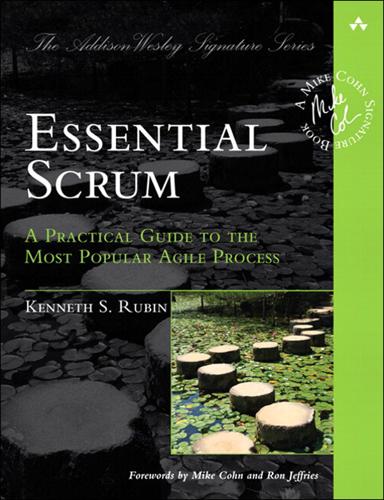
Essential Scrum: A Practical Guide to the Most Popular Agile Process
by
Kenneth S. Rubin
Published 19 Jul 2012
First, in many organizations, increasing a budget once development has begun isn’t very easy or likely. Second, in my experience, this approach locks down two variables that are very difficult to predefine. And, in practice, even if we start off believing we have a fixed-scope-and-date release, one of them will give. Take the Y2K issue as an example. Many organizations working on mitigating the Y2K issues had a fixed set of applications that needed to be updated no later than December 31, 1999. Many fixed time and scope; the budget was their variable. In the end, however, they knew that no matter how much they increased their budget, they still weren’t going to complete all the work by the hard deadline of December 31.
…
However, a new standard, ICD-10-CM, will replace ICD-9-CM on October 1, 2013. At that time, organizations that are subject to U.S. HIPPA (Health Insurance Portability and Accountability Act of 1996) regulations must comply with ICD-10-CM. Many such organizations have a portfolio of products that need remediation—in a fashion strikingly similar to the Year 2000 (Y2K) problem at the turn of the millennium. Because all products in the remediation portfolio have a fixed-date cost-of-delay profile (as shown in Figure 16.3), to rationally sequence the remediation work, these organizations need to consider what the cost of the delay (in lifecycle profits) would be for each product if the remediation work on that product is not completed by October 1, 2013.
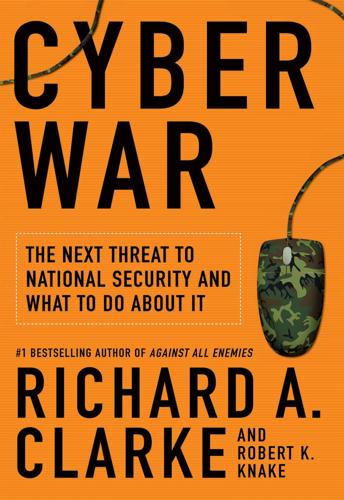
Cyber War: The Next Threat to National Security and What to Do About It
by
Richard A. Clarke
and
Robert Knake
Published 15 Dec 2010
No regulation and no decision-making authority meant little potential for results. Nonetheless, we set off to work with the private sector and with government agencies. The more I worked on the issue, the more concerned I became. Marsh had not really been alarmist, I came to appreciate; he and his commission had actually understated the problem. Our work on the Y2K computer glitch (the fact that most software could not roll over from 1999 to 2000 and might, therefore simply freeze up) greatly added to my understanding of just how much everything was rapidly becoming dependent upon computer-controlled systems and networks connected in some way to the Internet.
…
The two deeply disturbing aspects of this were that the computer security specialists could not stop the data from being stolen, even when they knew about the problem, and no one was really sure where it all was going (although some people later publicly attributed the attack to Russians). Every time new defenses were put in place, the attacker beat them. Then, one day, the attacks stopped. Or, more likely, they started attacking in a way we could not see. Early in 2000, when we were still glowing from our success in avoiding a Y2K problem, a number of the new Internet commerce sites (AOL, Yahoo, Amazon, E-Trade) crashed from what I was told was a DDOS, a term new to most people in 2000. This was the first “big one,” hitting numerous companies simultaneously and knocking them down. The motive was hard to discern. There were no monetary demands, nor was there a real political message.

The Second Machine Age: Work, Progress, and Prosperity in a Time of Brilliant Technologies
by
Erik Brynjolfsson
and
Andrew McAfee
Published 20 Jan 2014
They not only made it possible to increase sales from $1 billion a week in 1993 to $1 billion every thirty-six hours in 2001, but also helped drive dramatic increases in the entire retailing and distribution industries, accounting for much of the additional productivity growth nationwide during this period.11 IT investment soared in the 1990s, peaking with a surge of investment in the latter half of the decade as many companies upgraded their systems to take advantage of the Internet, implement large enterprise systems, and avoid the much-hyped Y2K bug. At the same time, innovation in semiconductors took gigantic leaps, so the surging spending on IT delivered even more rapidly increasing levels of computer power. A decade after the computer productivity paradox was popularized, Harvard’s Dale Jorgenson, working with Kevin Stiroh at the New York Federal Reserve Bank did a careful growth accounting and concluded, “A consensus has emerged that a large portion of the acceleration through 2000 can be traced to the sectors of the economy that produce information technology or use IT equipment and software most intensively.”12 But it’s not just the computer-producing sectors that are doing well.
…
Watt, James wavelength division multiplexing (WDM) Waze Weitzman, Martin West, Darrell West, Martin wheelchairs, AI technology in When Work Disappears (Wilson) Why Nations Fail (Acemoglu and Robinson) Why the West Rules—For Now (Morris) Wikipedia Wilson, William Julius “winner-take-all” markets Winner-Take-All Society, The (Frank and Cook) Winship, Scott Woessmann, Ludger Wolff, Ed Wordsworth, William World Bank World Wide Web see also global digital network; Internet Wright, Gavin writing: by computers development of Wu, Lynn Xbox Y2K bug Yang, Shinkyu Yelp YouTube Zara More Praise for The Second Machine Age “Brynjolfsson and McAfee are right: we are on the cusp of a dramatically different world brought on by technology. The Second Machine Age is the book for anyone who wants to thrive in it. I’ll encourage all of our entrepreneurs to read it, and hope their competitors don’t.”
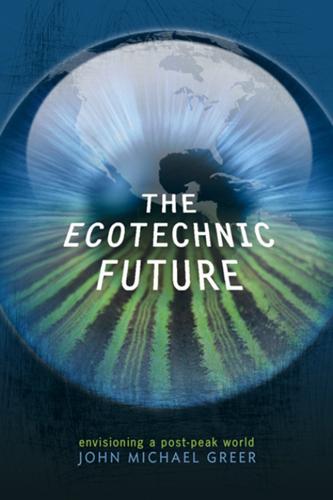
The Ecotechnic Future: Envisioning a Post-Peak World
by
John Michael Greer
Published 30 Sep 2009
On the other end of the spectrum are those who have no idea what the world of the future will look like but cling to an unshakable faith that it will have to be better than the world of today. A good friend of mine once recounted a conversation he had in the last days of 1999 with someone who confessed she was deeply worried about the Y2K problem. He assumed that she meant she was worried about the struggle for survival in the aftermath of the massive systems collapse some people were still predicting at that point, but she quickly set him right. Her job was unsatisfying, her marriage was on the rocks and her life was at a standstill.
…
R., 50 Toynbee, Arnold, 194–197, 204–205, 232 Transcendentalists, 201 Transition Town movement, 185 transportation networks, 104–105, 147–8 U urban-agrarian ecologies, 7 urine as fertilizer, 113–114 V Vacca, Roberto, 192 Vico, Giambattista, 231–232 village farming ecologies, 7 Völkerwanderung, 44 W Warhol, Andy, 225 Welsh language, 47 wild foods, 102 Wounded Knee, 63 Wright, Frank Lloyd, 121–123 Y Y2K problem, 81 Z Ziarek, Ewa, 96 269 About the Author S ince coming of age in the energy crises of the 1970s, John Michael Greer has devoted three decades to the philosophy and practice of a renewed balance between humanity and nature. His previous book on the future of the industrial age, The Long Descent (New Society, 2008) and his weekly blog, “The Archdruid Report,” have made him one of the most influential voices in today’s peak oil scene.
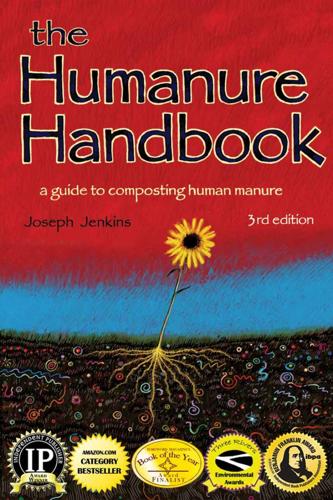
The Humanure Handbook: A Guide to Composting Human Manure
by
Joseph Jenkins
Published 10 Nov 2017
Often through direct exposition at our farm. Many thanks for your noble work of art and contribution to this stinky species of ape.” R.T. in CT From a Public Radio Commentary “People are saying that the Year 2000 computer problem could foul up a lot of stuff we usually depend on, all at once. I thought I’d give this Y2K Practice Day a try. Turn off the heat, lights, water and phones. Just for 24 hours. The day before Practice Day, I complained to Larry, telling him that I was bitterly disappointed not to try out an emergency toilet. This complaining really paid off. Larry, who’s also a writer researching Year 2000 emergency preparedness, phoned a man named Joe Jenkins, author of a book called the Humanure Handbook.
…
.: 48 Wales: 229 Ward, Barbara: 101 waste: 6 waste disposal systems: 83 waste production: 6 waste stabilization ponds: 92 pathogens in: 144 transmission of pathogens through: 143 wastewater treatment plants: 18, 91, 142 costs of maintenance and upkeep: 100 chlorine use in: 94 transmission of pathogens through: 142, 143 water: 16 (see also “drinking”) agricultural pollution of: 20 amount Americans use: 16 amount used by nuclear reactors: 16 appliance use: 208 bacterial analyses of: 136 cleanliness standards: 18 depletion: 20 drinking: 16 people currently lacking access to: 16, 19 drugs in: 19 EPA recreational water cleanliness standards: 18 flushing: 15 fun facts: 16 nitrate polluted: 19 per capita usage: 16, 20 pharmaceutical drugs in: 18 polluted: 17, 18 agricultural: 20 impacts: 17 number of people who die each year from: 19 U.S. coastal waters: 17 replacement rates: 20 swimming in: 17, 18 tons needed to flush: 20, 101 quantity used: 16 using it up: 20 water softeners: 207 water tables: 3 water use of appliances: 208 Watson Wick: 212 weed seeds: 62 Westerberg: 45 wetland: 213 wetland plants: 217 illustrated: 218 whipworm: 132, 149 White, Andrew D.: 77 Wiley: 45 witches: 78 wood ashes: 53 wood chips: 66 wood preservatives: 36 Woods End Laboratory: 65, 117 Woods End Agricultural Institute: 117 Woods End Europe: 117 World Scientists Warning to Humanity: 1 worm boxes: 66 worm castings: 66 worms, parasitic: 121, 132 Y Y2K: 187 yeasts: 27 Yersinia: 130 Yersiniosis: 130 Yucatan: 83, 203 Yonkers: 17 Z zooplankton: 92
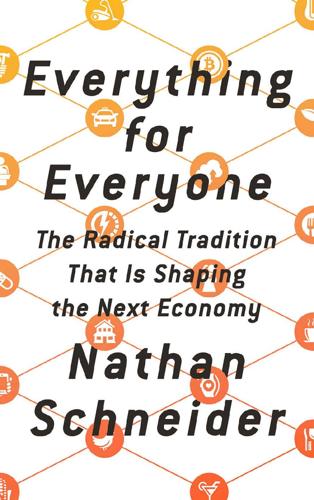
Everything for Everyone: The Radical Tradition That Is Shaping the Next Economy
by
Nathan Schneider
Published 10 Sep 2018
He turned his attention to larger injustices in his early twenties, when he read Erich Fromm’s diagnosis of materialist society and Henry David Thoreau’s call to disobedience. This was the late 1990s, high times for what is alternately called the global-justice or anti-globalization movement. The Zapatistas had set up autonomous zones in southern Mexico, and just weeks before Y2K, activists with limbs locked together and faces in masks shut down the World Trade Organization meeting in Seattle. According to Northeastern University anthropologist Jeffrey Juris, in Barcelona “Enric was at the center of organizing everything.”12 People called him el hombre conectado. Duran helped organize the Catalan contingent for protests at the 2000 World Bank and International Monetary Fund meetings in Prague; a cop there whacked him on the head in the streets.
…
Consider Paul Allen—not the billionaire who co-founded Microsoft, but the one who brought the world Ancestry.com, the genealogy platform. Allen and his co-founder started with CD-ROMs in 1990 and then started making websites later that decade. They owned nearly the whole company and were soon turning a profit. They raised millions of dollars from investors, moved the headquarters from Utah to San Francisco, and by Y2K, they were edging toward being one of the top ten web properties in the world. Then there was an aborted public offering and a sequence of deals—deals that Allen now admits he didn’t fully understand. The slice of shares he owned grew smaller, and he finally left the company and its board in 2002, watching as Ancestry endured the vicissitudes of various private-equity buyers and sellers.
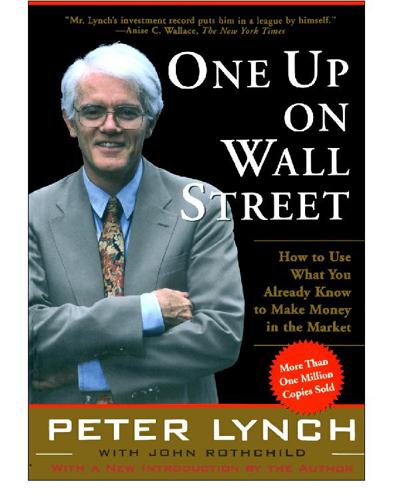
One Up on Wall Street
by
Peter Lynch
Published 11 May 2012
The obituary for this bull market has been written countless times going back to its start in 1982. Among the likely causes: Japan’s sick economy, our trade deficit with China and the world, the bond market collapse of 1994, the emerging market collapse of 1997, global warming, ozone depletion, deflation, the Gulf war, consumer debt, and the latest, Y2K. The day after New Year’s, we discovered that Y2K was the most overrated scare since Godzilla’s last movie. “Stocks are overpriced,” has been the bears’ rallying cry for several years. To some, stocks looked too expensive in 1989, at Dow 2,600. To others, they looked extravagant in 1992, above Dow 3,000. A chorus of naysayers surfaced in 1995, above Dow 4,000.
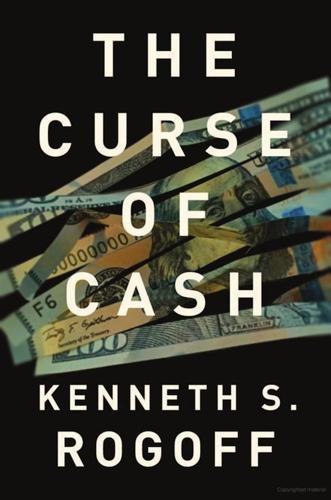
The Curse of Cash
by
Kenneth S Rogoff
Published 29 Aug 2016
One practical problem that came up very quickly is that many bank computer systems were designed with the idea that interest rates can never go below zero. This might sound ridiculous to young people familiar with modern database programs, but financial firms try hard to avoid changing software systems too often, and some of the systems are surprisingly antiquated. One only has to recall the “Y2K” computer problem that arose at the turn of the century. In the run-up to New Year’s Day in January 2000, software engineers around the world scrambled to patch software, because many legacy computer systems defined years by two digits instead of four, making it impossible for the year 2000 to be distinguished from the year 1900.
…
(A bit like when Romanian gymnast Nadia Comaneci scored the first perfect 10.00 in the 1976 Olympics, but the crowd was momentarily silenced when the scoreboard registered her majestic performance as only 1.00. The scoreboard had just three digits instead of four, because it had never occurred to its Swiss designers that anyone might ever achieve a perfect score.) In a sense, Y2K for negative interest rates has already come and gone. When Denmark’s central bank, Danmarks Nationalbank, implemented negative interest rates in July 2012, many private financial institutions were forced to enter negative rate trades manually, because they were totally unprepared, as their systems were not ready.
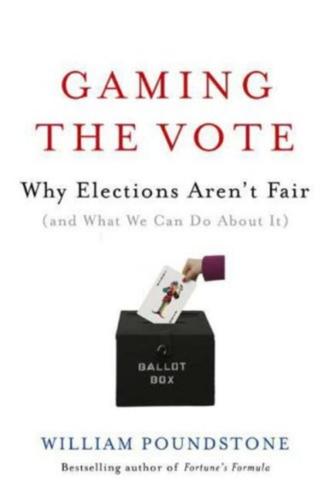
Gaming the Vote: Why Elections Aren't Fair (And What We Can Do About It)
by
William Poundstone
Published 5 Feb 2008
.• the Prius of voting systems· heretics· zealots • a one-word answer no one understands· regret in Peru· a car with Kennedy and Nixon bumper stickers· minimal coalitions· third parties· nursery effect· moderates· the universal political fantasy· a mission from God ,; Contents 279 17. Blue Man Coup Karma - George Allen - YouTube - Glenda Parker's vacation money - the Blue Man from Bozeman - Y2K· the Heimlich maneuver - Smurfs -little microchips inserted in our brains - conspiracy theories Glossary 285 Addresses Notes 291 293 Sources 313 Acknowledgments 325 327 Index ," GAMING THE VOTE Prologue: The Wizard and the Lizard Even when he was Grand Wizard of the Ku Klux Klan, David Duke felt he was destined for something bigger.
…
Allen then would have won and prevented a Democratic takeover of the Senate. Guess how much Parker spent on her campaign? "Less than $600" in contributions, she told a reporter, plus several years' worth of her own vacation money. Then there's the Blue Man from Bozeman. In 1999, Stan Jones began drinking colloidal silver, a supposed ('natural" antibiotic. He feared that Y2K computer crashes would lead to societal collapse. That, in turn, would mean no antibiotics for the marauding bands of postapocalyptic survivors. The silver potion has the side effect of turning the skin a slatey blue. When Jones first ran for U.S. Senate in 2002, his complexion was a hue that might otherwise signal a dinner compan- 280 Blue Man Coup ion's desperate need for the Heimlich maneuver.

Let's Pretend This Never Happened (A Mostly True Memoir)
by
Jenny Lawson
Published 5 Mar 2013
There’s No Place Like Home After we were married, I started working in HR. Victor worked in computers. We bought a small seventies house in San Angelo, the same town outside Wall where we’d gone to college. The house quickly grew full of memories. It was the house we were in when I became convinced that Y2K was basically the end of the world, and so on New Year’s Eve of 1999 I filled up the bathtub with water, so we’d have something to drink when the water from the tap turned into blood, but my cat didn’t realize it was full and fell in it, contaminating the whole thing. Then Victor laughed at my distress, which really pissed me off, because, Hello?
…
And then he abandoned me at a quarter to midnight to go check on the computers at work, and he wouldn’t even load the riot gun for me before he drove off. When he came back a few hours later, I’d barred the doors with couches to keep out the looters. I was too tired to move all the furniture, so I just told him that doors didn’t work anymore because of Y2K, and that he should just go sleep under his car. Eventually he convinced me that there were no looters, and so I opened a window for him to climb through. These were the happy memories I was holding on to a month later when Victor took a job offer in Houston, and left me behind to sell our house. He found us a new place to live, and he expected me to come to Houston within a week or two, but as soon as I had an opportunity to leave the small country area I’d always wanted to escape, I suddenly realized how much I didn’t want to leave.
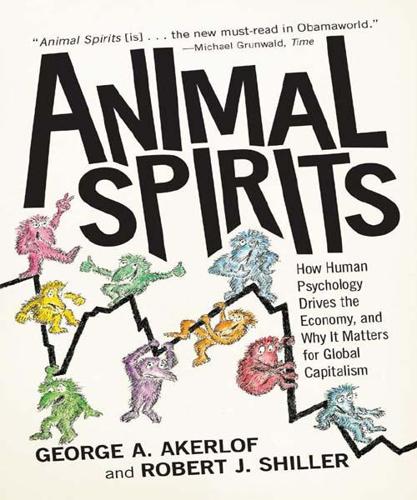
Animal Spirits: How Human Psychology Drives the Economy, and Why It Matters for Global Capitalism
by
George A. Akerlof
and
Robert J. Shiller
Published 1 Jan 2009
The discount rate, which had been 6% in the last half of 2000, was brought down to only 0.75% by November 2002.3 There is every reason to believe that both of these measures were effective. The economy rebounded.4 The reduction in interest rates appears to have had the intended effect. The previous boom had been top-heavy in expenditures on capital equipment.5 Investment in equipment and software had been especially high just prior to the Y2K scare. In this new boom the stimulus came from housing. In the four short years from 2001 to 2005 expenditures on housing increased by 33.1%, while GDP growth was only 11.2%.6 But then, as we have already recounted, odd things began to happen. These are the types of things that happen in booms as overconfidence takes hold.
…
(Dougherty), 177n1 Wilson, Beth Anne, 183n14 Wilson, William Julius, 162, 196n3, 196n14 Wilson, Woodrow, 64 Wise, David A., 188n3,4, 191n1 Wizard of Oz, The (Baum), 64 Wolk, Carel, 181n7 World War II, xxi, 4, 70, 72, 139, 145 Wurgler, Jeffrey, 191n3, 195n36 Yahata Steel Company, 194n23 Yale University, 109 Yamamoto, Isamu, 183n14 Yellen, Janet, 117, 188n1,2,10,11, 189n16 Yellow Pages, explaining to Muscovites, 26 Yom Kippur War, 141 Young, Roy A., 64, 185n17 Youngman, Anna P., 72, 186n38 Y2K scare, 169 Zandi, Mark, 196n14 Zeckhauser, Richard, 188n3,4 Zenji, 139 Zillman, Dolf, 179n3
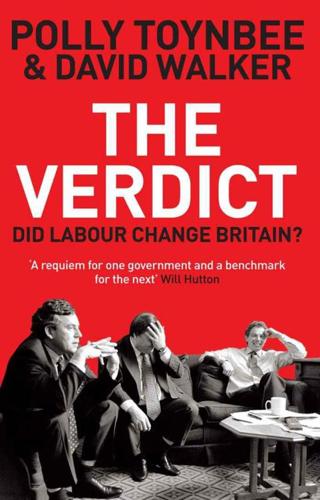
The Verdict: Did Labour Change Britain?
by
Polly Toynbee
and
David Walker
Published 6 Oct 2011
The courts had already discarded it; after the BBC broadcast Jerry Springer: The Opera in January 2005, the fundamentalist group Christian Voice failed to persuade the judges to convict. And on such religious totems as abortion and stem cell research, rationalism ruled OK among Labour ministers. The worldwide scare over the Y2K millennium bug has become a classic of media hype and public gullibility – there was panicky talk of machines stopping and planes falling out of the sky. Ministers kept their cool and in October 1999, a couple of months before the witching hour, the NAO reported that the non-profit company Action 2000 set up by Whitehall to check IT systems had flashed only a couple of amber risks.
…
Index 9/11 attacks, 1, 2, 3, 4, 5, 6, 7, 8, 9 A levels, 1 Aberdeen, 1 abortion, 1, 2, 3 Abuhamza, Junaid, 1 AC Milan, 1 Acme Whistles, 1 Action for Children, 1 Adams, Douglas, 1 Adonis, Andrew, 1 Advisory, Conciliation and Arbitration Service, 1 Afghanistan, 1, 2, 3, 4, 5, 6, 7, 8, 9 Helmand province, 1, 2, 3, 4, 5, 6 Africa, 1, 2, 3 after-school clubs, 1, 2, 3 Age of Stupid, 1, 2 Ahern, Bertie, 1 Ahmadinejad, Mahmoud, 1 Ainsworth, Bob, 1 aircraft-carriers, 1 Al Qaeda, 1, 2, 3, 4 Albania, 1 alcohol consumption, 1, 2 and crime, 1, 2, 3 Alexander, Professor Robin, 1 Alzheimer’s disease, 1 Amritsar massacre, 1 Amsterdam summit, 1, 2 Anderson, Lance Corporal George, 1 animal welfare, 1, 2 anti-social behaviour orders (Asbos), 1, 2, 3 apprenticeships, 1, 2 Arafat, Yasser, 1 archaeological artefacts, 1 Arctic Monkeys, 1 Armistice Day, 1 arms trade, 1, 2 Armstrong, Franny, 1 arts budget, 1 Ashmolean Museum, 1 asthma, 1, 2 asylum seekers, 1, 2, 3, 4 Attenborough, Richard, 1 Attlee, Clement, 1 August, Kathy, 1 Austin, Richard, 1 Australia, 1, 2, 3 Austria, 1 autism, 1 aviation, 1 Aylesbury, 1 Baghdad, 1 Baker, Mike, 1 Bakewell, Joan, 1 Bali, 1 Balls, Ed, 1, 2, 3 Bank of England, 1, 2 Barber, Sir Michael, 1 Barker, Kate, 1 Barnardo’s, 1 Barnet Hospital, 1 Barton, Geoff, 1 Basildon and Thurrock Hospital, 1 Basra, 1, 2, 3 Bean, Richard, 1 Beattie, Captain Doug, 1 Beckham, David, 1 Belarus, 1 Belfast, 1, 2, 3 Belgium, 1 Belize, 1 Benn, Hilary, 1, 2 Bennett, Alan, 1 Berlusconi, Silvio, 1 Beveridge, William, 1 Bichard, Sir Michael, 1 Big Brother, 1, 2 Bilbao, 1 Billington, Michael, 1 bin Laden, Osama, 1, 2 Bingham, Lord, 1 Birk, Andy, 1, 2, 3 Birmingham, 1, 2, 3, 4, 5 Aston, 1, 2, 3 Longbridge car plant, 1 and transport policy, 1, 2 birth rate, 1 Black Wednesday, 1 Blackburn, 1, 2 Blackpool, 1 Blair, Cherie, 1 Blair, Tony, 1, 2 and asylum seekers, 1, 2 and child poverty, 1, 2, 3, 4 and climate change, 1, 2 and constitutional reform, 1, 2 and crime, 1, 2, 3 and cultural policies, 1, 2, 3, 4, 5 and economic policies, 1, 2, 3, 4, 5 and education, 1, 2, 3, 4, 5, 6 and Europe, 1 and fairness, 1, 2, 3 foreign policy and Iraq war, 1, 2, 3, 4, 5, 6, 7, 8 and health, 1, 2, 3, 4, 5 and Northern Ireland, 1 and Princess Diana, 1, 2 public apologies, 1 and public sector reform, 1, 2 and religion, 1 and ‘respect’ agenda, 1 style of government, 1 technophobia, 1, 2 and transport, 1, 2 Blears, Hazel, 1, 2 Bloody Sunday inquiry, 1 Bloomberg, Michael, 1 Bloxham, Tom, 1 Blunkett, David, 1, 2 and crime, 1, 2, 3, 4 and education, 1, 2, 3, 4, 5, 6 and migration, 1 BMW, 1 Bobbitt, Philip, 1 Boddingtons’ brewery, 1 Bolton, 1 Boothroyd, Betty, 1 Bosnia, 1 Boston, Lincolnshire, 1, 2, 3, 4 Bowman, Philip, 1 Boyle, Danny, 1 Bradford, 1, 2, 3, 4, 5 Bradford and Bingley, 1 Bradshaw, Ben, 1 Branson, Richard, 1 Brassed Off, 1 Brazil, 1 breastfeeding, 1, 2 Brent, 1 Brighton, 1, 2 Brindle, David, 1 Bristol, 1 Bristol Royal Infirmary, 1 Britain’s Got Talent, 1 British Airways strikes, 1 British Association of Aesthetic Plastic Surgeons, 1 British Energy, 1 British Film Institute, 1 British Medical Association, 1, 2 British Museum, 1 British National Party (BNP), 1, 2, 3 Brixton, 1 broadband services, 1 Brown, Gordon, 1, 2, 3, 4 and climate change, 1, 2, 3 and constitutional reform, 1 and crime, 1, 2, 3 and cultural policies, 1, 2, 3, 4, 5, 6 and defence policy, 1 and economic policies, 1, 2, 3, 4, 5, 6, 7, 8, 9 and education, 1, 2 and Europe, 1 and fairness, 1 and foreign policy, 1, 2, 3, 4, 5, 6, 7 and G20 summit, 1, 2 and health, 1 and pensions, 1, 2 and PFI, 1 and public sector reform, 1 style of government, 1, 2 and tax credits, 1, 2 and transport, 1 Bruges, 1 Brussels, 1, 2, 3, 4, 5 Bryant, Chris, 1 BSE (mad cow disease), 1, 2 Buffini, Damon, 1 Bulgaria, 1 Bulger, Jamie, 1 Buncefield explosion, 1 Burgess, Graham, 1 Burma, 1, 2 Burnham, Andy, 1 buses, 1, 2 Bush, George W., 1, 2, 3, 4 business, 1 company governance, 1 competition policy, 1 see also manufacturing Business Links, 1, 2 Cable, Vince, 1 Cadbury, 1 Caine, Judy, 1 Callaghan, James, 1 Cameron, David, 1, 2, 3, 4 Campaign for Real Ale, 1 Campbell, Alastair, 1, 2 Campbell, Naomi, 1 Canada, 1 cancer research, 1 cannabis, 1, 2 Cannock Chase Hospital, 1 Capel Manor College, 1 Carbon Trust, 1 Cardiff, 1, 2 Millennium Stadium, 1 see also Welsh assembly Care Quality Commission, 1, 2, 3 carers, 1 Carousel children’s centre, 1 Casey, Louise, 1, 2 casinos, 1 Castle, Barbara, 1 cataracts, 1, 2 Cator Park School, 1 CCTV, 1, 2, 3 celebrity culture, 1 Central Office of Information, 1 Ceuta, 1 Charity Commission, 1 Charleroi, 1 Chase Farm Hospital, 1, 2, 3 Cheltenham, 1 Cheney, Dick, 1 Chicago, 1 Chilcot inquiry, 1, 2, 3, 4 Child Maintenance and Enforcement Commission, 1 child poverty, 1, 2, 3, 4, 5, 6, 7, 8, 9, 10, 11 Child Support Agency, 1 child trafficking, 1 Child Trust Funds, 1, 2 childcare, 1, 2, 3, 4, 5, 6 children, 1 in care, 1 and crime, 1, 2 and pre-school education, 1 and reading, 1, 2 and safety, 1 and targets, 1 children’s centres, 1, 2, 3 Chile, 1 China, 1, 2, 3, 4, 5, 6, 7 and foreign policy, 1, 2, 3, 4 Chinese cockle pickers, 1 Christian Voice, 1 Chumbawamba, 1 Church of England, 1 Churchill, Winston, 1 cigarette smoking, 1, 2, 3, 4, 5, 6 see also smoking ban citizenship curriculum, 1 City of London, 1, 2, 3, 4, 5, 6, 7 City of London police, 1 civil partnerships, 1 civil service, 1 Clapham Common, 1 Clapham Park estate, 1, 2 Clarke, Charles, 1 Clarke, Ken, 1, 2 Clarke, Michael, 1 Clarkson, Jeremy, 1, 2 ‘clean technologies’, 1 Cleveland Way, 1 climate change, 1, 2, 3, 4, 5 and transport and energy policies, 1 Climbié, Victoria, 1 Clinton, Bill, 1, 2, 3 Clitheroe, 1 cloning, 1 coal, 1 coalition government, 1, 2, 3, 4, 5 Cockermouth, 1 Cohen, Sir Ronnie, 1 Cole, Vanessa, 1 Collins, Colonel Tim, 1 Comer, Beryl, 1, 2, 3, 4 Common Agricultural Policy, 1, 2 community sentences, 1 Confederation of British Industry (CBI), 1, 2, 3, 4, 5, 6 conflict diamonds, 1 Congo, 1 Connelly, Peter (Baby P), 1 Connexions, 1, 2 Contactpoint database, 1 Cook, Robin, 1, 2 Cool Britannia, 1, 2 Cooper, Robert, 1 Cooper, Yvette, 1 Copenhagen summit, 1, 2, 3, 4, 5, 6 Corby, 1, 2 Corn Laws, repeal of, 1 Cornwall, 1, 2 Coronation Street, 1 coroners, 1 Corus, 1 Countryside Alliance, 1, 2 County Durham, 1 Coventry, 1, 2, 3 Cowley, Philip, 1 Cox, Brian, 1 Crawford, Texas, 1 creative industries, 1, 2 credit card debt, 1 Crewe and Nantwich by-election, 1 Crick, Bernard, 1 cricket, 1 Crime and Disorder Reduction Partnerships, 1 crime, 1 car crime, 1 cyber-crime, 1 and demography, 1, 2 and drugs, 1 gun crime, 1, 2 juvenile crime, 1, 2, 3 knife crime, 1, 2 organized crime, 1, 2, 3 street crime, 1 Criminal Records Bureau, 1 Cruddas, Jon, 1 Cullen, Janet, 1, 2, 3, 4 Cumner-Price, George, 1 cycling, 1, 2, 3 Cyprus, 1, 2 Daily Mail, 1, 2, 3, 4, 5 Daily Telegraph, 1 Darfur, 1 Darling, Alistair, 1, 2, 3 Darwen, 1, 2 Darzi, Lord (Ara), 1 Data Protection Act, 1, 2 Davies, Norman, 1 Davies, Ron, 1 Davis, David, 1 Dearlove, Sir Richard, 1 defence policy, 1, 2, 3, 4, 5 Delhi, 1 dementia, 1 demonstrations, policing of, 1 Demos, 1 Denham, John, 1 Denison, Steve, 1 Denmark, 1, 2 dentistry, 1 depression, 1 Derby, 1 devolution, 1, 2, 3, 4, 5, 6, 7 Dewar, Donald, 1, 2 diabetes, 1 Diana, Princess of Wales, 1, 2, 3 Dilnot, Andrew, 1 disabilities, 1, 2, 3, 4, 5 disarmament, 1 divorce rate, 1 DNA database, 1 Dobson, Frank, 1, 2 doctors consultants, 1 GPs, 1, 2, 3 night and weekend cover, 1 pay, 1, 2, 3 working hours, 1 domestic violence, 1, 2, 3, 4 Doncaster, 1, 2, 3 Dongworth, Averil, 1 Dorling, Professor Danny, 1, 2, 3 Drayson, Paul, 1 drones, 1 drug dealers, 1, 2 drugs, 1, 2, 3 Dublin, 1 Duffy, Bobby, 1 Dundee, 1 Dunn, John, 1 Dunwoody, Gwyneth, 1 EastEnders, 1 Ecclestone, Bernie, 1 ‘eco towns’, 1 ecstasy, 1 Edinburgh, 1, 2, 3 see also Scottish parliament Edlington, 1 education, 1 further education and training, 1, 2, 3, 4 higher education, 1, 2, 3, 4, 5, 6 nursery education, 1 productivity in, 1 pre-school education, 1 and selection, 1, 2 and social class, 1, 2 spending on, 1, 2 and targets, 1, 2, 3 Welsh Assembly and, 1 see also schools education action zones, 1 Education Maintenance Allowance, 1, 2, 3 e-government, 1, 2 Egypt, 1 electoral reform, 1, 2, 3 electricity generation, 1, 2 Elgar, Edward, 1 Elgin marbles, 1 Elizabeth, Queen, the Queen Mother, 1 Elizabeth II, Queen, 1, 2, 3 employee buy-outs, 1 employment, 1 flexible, and migration, 1 part-time, 1, 2 state and ‘parastate’, 1, 2 women and, 1, 2 working hours, 1, 2 energy policies, 1 English for Speakers of Other Languages, 1 English Heritage, 1 Enron, 1 Environment Agency, 1, 2 equalities legislation, 1, 2, 3 Equality and Human Rights Commission, 1, 2, 3 Ericsson, 1 ethnic minorities, 1 euro, 1, 2 Eurofighter, 1 European Court of Human Rights, 1 European Union, 1, 2 European Union Emission Trading Scheme, 1 Eurostar, 1 Exeter, 1 Fairtrade products, 1 Falconer, Charlie, 1 Falklands War, 1 Family Intervention Projects (FIPs), 1 Farlow, Andrew, 1 farmers, 1, 2 fashion, 1 Feinstein, Professor Leon, 1, 2 Financial Services Authority, 1 financial services, 1, 2, 3 Financial Times, 1 Finland, 1 fire and rescue service, 1 fiscal stimulus, 1 floods, 1, 2, 3, 4 Florence, 1 flu, 1, 2 swine flu, 1, 2 Folkestone, 1 food and drink, 1, 2 foot-and-mouth disease, 1, 2 football, 1, 2, 3 Football Association, 1 forced marriages, 1 foreign policy, 1, 2, 3 France, 1, 2, 3, 4 economy and business, 1, 2 and education, 1, 2 and health, 1, 2, 3 Frankfurt am Main, 1 Franklin, Tom, 1 Frears, Stephen, 1 free speech, 1, 2 freedom of information, 1, 2, 3, 4, 5, 6 Freud, Lord, 1 Full Monty, The, 1 Future Jobs Fund, 1 G20 summit, 1, 2, 3 Gainsborough, 1 Galbraith, J.K., 1 Gallagher, Liam, 1 Gallagher, Noel, 1 gambling, 1 gangmasters, 1, 2 gas, 1 Gates, Bill, 1 Gateshead, 1 Gaza, 1 GCHQ, 1 GCSEs, 1, 2, 3, 4 Gehry, Frank, 1 Geldof, Bob, 1 gender reassignment, 1 General Teaching Council, 1 genetically modified crops, 1 Germany, 1, 2, 3, 4, 5, 6, 7 economy and business, 1, 2, 3, 4 and education, 1, 2 and health, 1, 2 Ghana, 1 Ghandi’s curry house, 1 Ghent, 1 Gladstone, William Ewart, 1, 2 Glaister, Professor Stephen, 1 Glasgow, 1, 2, 3, 4 Gleneagles summit, 1, 2, 3, 4, 5 globalization, 1, 2, 3, 4, 5, 6, 7 and crime, 1 and foreign policy, 1, 2, 3 and inequality, 1 and migration, 1, 2 Gloucester, 1 Goldacre, Ben, 1 Good Friday agreement, 1 Goodwin, Sir Fred, 1 Goody, Jade, 1 Gormley, Antony, 1 Gould, Philip, 1 grandparents, and childcare, 1 Gray, Simon, 1 Great Yarmouth, 1 Greater London Authority, 1, 2 Greater London Council, 1 green spaces, 1 Greenberg, Stan, 1 Greengrass, Paul, 1 Greenspan, Alan, 1, 2 Greenwich, 1 Gregg, Paul, 1 Guardian, 1, 2, 3 Guizot, François, 1 Gulf of Mexico oil spill, 1 Gummer, John, 1 Gurkhas, 1 Guthrie of Craigiebank, Lord, 1 Guy’s and St Thomas’s Hospital, 1 habeas corpus, suspension of, 1 Hacienda Club, 1 Hackney, 1 Hale, Baroness Brenda, 1 Hallé Orchestra, 1 Ham, Professor Chris, 1 Hamilton, Lewis, 1 Hammersmith Hospital, 1 Hammond, Richard, 1 Hardie, Keir, 1 Hardy, Thea, 1 Haringey, 1, 2 Harman, Harriet, 1 Harris of Peckham, Lord, 1 Harrison, PC Dawn, 1, 2 Harrow School, 1 Hartlepool, 1, 2 Hastings, 1, 2 Hatfield rail crash, 1 Hatt family, 1, 2, 3, 4 health, 1 and private sector, 1, 2 and social class, 1 spending on, 1, 2 Health Action Zones, 1 Health and Safety Executive, 1 Heathcote, Paul, 1 Heathrow airport, 1, 2, 3, 4 Hellawell, Keith, 1 Hennessy, Professor Peter, 1 Henry, Donna Charmaine, 1, 2, 3 heroin, 1 Hewitt, Patricia, 1, 2 Higgs, Sir Derek, 1 Hills, Professor John, 1, 2, 3 Hirst, Damien, 1 HMRC, 1, 2, 3 Hogg, John, 1, 2, 3 Hoggart, Richard, 1 Holly, Graham, 1 homelessness, 1, 2 Homerton Hospital, 1 homosexuality, 1, 2, 3 ‘honour’ killings, 1 Hoon, Geoff, 1 hospital-acquired infections, 1 hospitals and clinics, 1, 2, 3, 4 A&E units, 1, 2 closures, 1, 2, 3 foundation trusts, 1, 2, 3, 4, 5 and PFI, 1 House of Commons reforms, 1, 2 House of Lords reforms, 1, 2, 3, 4 housing market, 1, 2, 3 housing policies, 1, 2, 3, 4, 5 Howe, Elspeth, 1 Hoxton, 1 Huddersfield, 1 Hudson, Joseph, 1 Hull, 1, 2, 3 Human Rights Act, 1, 2, 3, 4, 5, 6, 7, 8, 9, 10 Humber Bridge, 1 hunting ban, 1 Hussein, Saddam, 1, 2, 3, 4 Hutton, John, 1 Hutton, Will, 1, 2 identity cards, 1, 2 If (Kipling), 1 Imperial War Museum North, 1 income inequalities, 1, 2, 3 gender pay gap, 1, 2 and high earners, 1 and social class, 1 Independent Police Complaints Commission (IPCC), 1 Independent Safeguarding Authority, 1 independent-sector treatment centres (ISTCs), 1 Index of Multiple Deprivation, 1 India, 1, 2, 3, 4, 5, 6 individual learning accounts, 1 inflation, 1 and housing market, 1, 2 International Criminal Court, 1 International Monetary Fund (IMF), 1, 2, 3 internet, 1, 2, 3 and crime, 1 and cyber-bullying, 1 file sharing, 1 gambling, 1 and sex crimes, 1 Iran, 1, 2, 3 Iraq, 1, 2, 3, 4, 5, 6, 7, 8, 9, 10, 11, 12, 13, 14, 15, 16 arms supplies, 1 Chilcot inquiry, 1, 2, 3, 4 and Territorial Army, 1 and WMD, 1 Ireland, 1, 2, 3 Irish famine, 1 Irvine of Lairg, Lord, 1, 2 Ishaq, Khyra, 1 Islamabad, 1 Isle of Man, 1 Isle of Wight, 1, 2 Israel, 1 Italy, 1, 2, 3 and football, 1 Ivory Coast, 1 Japan, 1, 2, 3, 4 Jenkins, Roy, 1, 2 Jerry Springer: The Opera, 1 Jobcentre Plus, 1, 2 John Lewis Partnership, 1, 2 Johnson, Alan, 1, 2, 3, 4 Johnson, Boris, 1, 2 Judge, Lord (Igor), 1 Judge, Professor Ken, 1 Julius, DeAnne, 1 jury trials, 1, 2 Kabul, 1 Kapoor, Anish, 1, 2 Karachi, 1 Karadžic, Radovan, 1 Kashmir, 1 Kaufman, Gerald, 1 Keegan, William, 1 Keep Britain Tidy, 1 Kelvingrove Art Gallery and Museum, 1 Kensit, Patsy, 1 Keynes, John Maynard, 1 Keys, Kenton, 1 Kidderminster Hospital, 1 King, Sir David, 1, 2 King, Mervyn, 1 King Edward VI School, 1 King’s College Hospital, 1 Kingsnorth power station, 1 Kirklees, 1 Knight, Jim, 1 knighthoods, 1 knowledge economy, 1 Kosovo, 1, 2, 3, 4 Kynaston, David, 1 Kyoto summit and protocols, 1, 2, 3 Labour Party membership, 1 Lacey, David, 1 Ladbroke Grove rail crash, 1 Lamb, General Sir Graeme, 1 Lambert, Richard, 1 landmines, 1 Lansley, Andrew, 1 lapdancing, 1 Las Vegas, 1 Lawrence, Stephen, 1 Lawson, Mark, 1 Layard, Professor Richard, 1 Le Grand, Professor Julian, 1 Lea, Ruth, 1 Lea Valley High School, 1, 2, 3, 4, 5, 6 Leahy, Sir Terry, 1, 2 learndirect, 1 Learning and Skills Council, 1 learning difficulties, 1, 2 learning mentors, 1 Leeds, 1, 2, 3, 4 legal reforms, 1 Leigh, Mike, 1 Lenon, Barnaby, 1 Lewes, 1 Lewisham, 1 Liberty, 1 licensing laws, 1, 2 life expectancy, 1, 2, 3, 4, 5 Life on Mars, 1 Lincoln, 1 Lindsell, Tracy, 1, 2 Lindsey oil refinery, 1 Lisbon Treaty, 1 Liverpool, 1, 2, 3, 4, 5, 6 Liverpool FC, 1 living standards, 1, 2 living wage campaign, 1, 2 Livingstone, Ken, 1, 2, 3, 4, 5 Livni, Tzipi, 1 Loaded magazine, 1 local government, 1, 2, 3 and elected mayors, 1 Lockerbie bomber, 1 London, 1, 2, 3, 4, 5, 6 bombings, 1, 2 congestion charge, 1, 2 detention of foreign leaders, 1 G20 protests, 1 Iraq war protests, 1, 2 mayoral election, 1, 2 and transport policy, 1, 2, 3 London Array wind farm, 1 Longannet, 1 Longfield, Anne, 1 Lord-Marchionne, Sacha, 1 Lorenzetti, Ambrogio, 1 lorry protests, 1, 2 Lowry Museum, 1 Lumley, Joanna, 1 Luton, 1, 2, 3, 4 Lyons, Sir Michael, 1 Macfadden, Julia, 1 Machin, Professor Stephen, 1, 2 Maclean, David, 1 Macmillan, Harold, 1 Macmillan, James, 1 McNulty, Tony, 1 Macpherson, Sir Nick, 1 Macpherson, Sir William, 1 McQueen, Alexander, 1 Madrid, 1, 2, 3 Major, John, 1, 2, 3, 4, 5, 6 Malaya, 1 Malloch Brown, Mark, 1 Manchester, 1, 2, 3, 4, 5, 6 club scene, 1, 2 and crime, 1, 2 Gorton, 1, 2, 3, 4, 5, 6 and local government, 1 and transport policy, 1, 2, 3 Manchester Academy, 1 Manchester United FC, 1, 2 Manchester University, 1 Mandelson, Peter, 1, 2 Manpower Services Commission, 1 manufacturing, 1, 2, 3 Margate, 1 ‘market for talent’ myth, 1 marriage rate, 1 Martin, Michael, 1 maternity and paternity leave, 1, 2 Mayfield, Charlie, 1 Medical Research Council, 1 mental health, 1, 2, 3, 4 mephedrone, 1 Metcalf, Professor David, 1 Metropolitan Police, 1, 2, 3 Mexico, 1, 2 MG Rover, 1 Michael, Alun, 1 Middlesbrough College, 1, 2 migration, 1, 2, 3, 4, 5, 6, 7, 8, 9, 10, 11 Milburn, Alan, 1, 2, 3, 4, 5 Miliband, David, 1, 2, 3, 4, 5, 6 Miliband, Ed, 1, 2, 3 Millennium Cohort Study, 1, 2 Millennium Dome, 1, 2, 3 Miloševic, Slobodan, 1 Milton Keynes, 1 minimum wage, 1, 2, 3, 4, 5, 6, 7 Mitchell, Senator George, 1 modern art, 1 Mohamed, Binyam, 1 Monbiot, George, 1 Moray, 1 Morecambe, 1, 2 Morecambe Bay cockle pickers, 1 Morgan, Piers, 1 Morgan, Rhodri, 1 mortgage interest relief, 1 Mosley, Max, 1 motor racing, 1 Mowlam, Mo, 1 Mozambique, 1 MPs’ expenses, 1, 2, 3, 4, 5 MRSA, 1 Mugabe, Robert, 1 Muijen, Matt, 1 Mulgan, Geoff, 1 Mullin, Chris, 1 Murdoch, Rupert, 1, 2, 3 Murphy, Richard, 1 museums and galleries, 1, 2, 3 music licensing, 1 Muslims, 1, 2, 3, 4, 5 mutualism, 1 Myners, Paul, 1 nanotechnology, 1, 2, 3 National Air Traffic Control System, 1 National Care Service, 1 national curriculum, 1 national debt, 1 National Forest, 1 National Health Service (NHS) cancer plan, 1 drugs teams, 1 and employment, 1, 2 internal market, 1 IT system, 1 league tables, 1 managers, 1, 2 NHS direct, 1 primary care, 1 productivity, 1, 2 and public satisfaction, 1 staff numbers and pay, 1 and targets, 1, 2, 3 waiting times, 1, 2, 3, 4, 5, 6, 7, 8 National Heart Forum, 1 National Institute for Health and Clinical Excellence (NICE), 1, 2 National Insurance, 1, 2, 3, 4, 5 National Lottery, 1, 2, 3 National Offender Management Service, 1 National Savings, 1 National Theatre, 1 Natural England, 1, 2 Nazio, Tiziana, 1 Neighbourhood Watch, 1 Netherlands, 1, 2 neurosurgery, 1 New Deal, 1, 2, 3, 4, 5, 6, 7 New Deal for Communities, 1, 2 New Forest, 1 Newcastle upon Tyne, 1, 2 Newham, 1, 2 newspapers, 1, 2, 3, 4, 5 Nigeria, 1 Nightingale, Florence, 1 non-doms, 1 North Korea, 1 North Middlesex Hospital, 1 North Sea oil and gas, 1 Northern Ireland, 1, 2, 3, 4, 5, 6, 7 Northern Rock, 1, 2, 3, 4, 5 Norway, 1 Nottingham, 1, 2 NSPCC, 1 nuclear power, 1 Number Ten Delivery Unit, 1 nurses, 1, 2, 3, 4 Nutt, Professor David, 1 NVQs, 1 O2 arena, 1 Oakthorpe primary school, 1, 2 Oates, Tim, 1 Obama, Barack, 1, 2 obesity, 1, 2 Octagon consortium, 1 Office for National Statistics, 1, 2 Office of Security and Counter Terrorism, 1 Ofsted, 1, 2, 3, 4, 5 Ofwat, 1 Oldham, 1, 2, 3, 4 O’Leary, Michael, 1 Oliver, Jamie, 1, 2 Olympic Games, 1, 2, 3 Open University, 1 O’Reilly, Damien, 1, 2 orthopaedics, 1 Orwell, George, 1, 2 outsourcing, 1, 2, 3, 4 overseas aid, 1, 2 Oxford University, 1 paedophiles, 1, 2, 3 Page, Ben, 1, 2 Pakistan, 1, 2, 3, 4, 5, 6, 7 Palestine, 1, 2 parenting, 1 absent parents, 1 lone parents, 1, 2 teenage parents, 1 Paris, 1, 2 Park Lane, 1 Parkinson, Professor Michael, 1 particle physics, 1 party funding, 1, 2, 3 passport fraud, 1 Passport Office, 1 Patch, Harry, 1 Payne, Sarah, 1, 2 Peach, Blair, 1 Pearce, Nick, 1 Peckham, 1, 2 Aylesbury estate, 1 Peel, Sir Robert, 1 pensioner poverty, 1, 2 pensions, 1, 2 occupational pensions, 1, 2 pension funds, 1, 2 private pensions, 1 public-sector pensions, 1 state pension, 1, 2 Persian Gulf, 1 personal, social and health education, 1 Peterborough, 1 Peugeot, 1 Philips, Helen, 1 Phillips, Lord (Nicholas), 1, 2 Phillips, Trevor, 1 Pilkington, Fiona, 1 Pimlico, 1 Pinochet, Augusto, 1 Plymouth, 1, 2 Poland, 1, 2 police, 1 and demonstrations, 1 numbers, 1, 2, 3 in schools, 1, 2, 3 pornography, 1 Portsmouth FC, 1, 2 Portugal, 1 post offices, 1 Postlethwaite, Pete, 1 poverty, 1, 2, 3 see also child poverty; pensioner poverty Premier League, 1 Prescott, John, 1, 2, 3, 4, 5 press officers, 1 Preston, 1 Prevent strategy, 1 Primary Care Trusts (PCTs), 1, 2 prisons, 1, 2 Private Finance Initiative (PFI), 1, 2 probation, 1, 2 property ownership, 1 prostitution, 1, 2, 3 Public Accounts Committee, 1 public sector reform, 1, 2 public service agreements, 1 public spending, 1, 2, 3 and the arts, 1 and science, 1 Pugh, Martin, 1 Pullman, Philip, 1 QinetiQ, 1 Quality and Outcomes Framework, 1 quangos, 1, 2 Queen, The, 1 Quentin, Lieutenant Pete, 1, 2 race relations legislation, 1 racism, 1, 2 RAF, 1, 2, 3 RAF Brize Norton, 1 railways, 1 Rand, Ayn, 1 Rawmarsh School, 1 Raynsford, Nick, 1 Reckitt Benckiser, 1 recycling, 1 Redcar, 1 regional assemblies, 1, 2 regional development agencies (RDAs), 1, 2, 3 regional policy, 1 Reid, John, 1 Reid, Richard, 1 religion, 1, 2 retirement age, 1, 2 right to roam, 1 Rimington, Stella, 1 Rio Earth summit, 1 road transport, 1 Rochdale, 1, 2 Roche, Barbara, 1 Rogers, Richard, 1 Romania, 1, 2 Rome, 1 Rooney, Wayne, 1 Roosevelt, Franklin D., 1 Rosetta Stone, 1 Rosyth, 1 Rotherham, 1, 2, 3 Royal Opera House, 1 Royal Shakespeare Company, 1 Royal Society for the Protection of Birds, 1 Rugby, 1 rugby union, 1 Rumsfeld, Donald, 1 rural affairs, 1, 2 Rushdie, Salman, 1 Russia, 1, 2 Rwanda, 1 Ryanair, 1, 2 Sainsbury, Lord David, 1 St Austell, 1 St Bartholomew’s Hospital, 1, 2 St Pancras International station, 1 Salford, 1, 2, 3, 4 Sanchez, Tia, 1 Sandwell, 1 Sarkozy, Nicolas, 1, 2 Savill, Superintendent Paul, 1 Saville, Lord, 1 savings ratio, 1 Scandinavia, 1, 2, 3 Scholar, Sir Michael, 1 school meals, 1, 2 school uniforms, 1 school-leaving age, 1 schools academies, 1, 2, 3, 4 building, 1 class sizes, 1 comprehensive schools, 1, 2 faith schools, 1, 2, 3, 4 grammar schools, 1, 2, 3 and inequality, 1 nursery schools, 1 and PFI, 1, 2, 3 police in, 1, 2, 3 primary schools, 1, 2, 3, 4, 5 private schools, 1, 2 secondary schools, 1, 2, 3 in special measures, 1 special schools, 1 specialist schools, 1 and sport, 1 science, 1, 2, 3, 4, 5 Scotland, 1, 2, 3, 4, 5, 6, 7, 8, 9 and children, 1 devolution, 1 electricity generation, 1 and health, 1, 2, 3, 4, 5 Scottish parliament, 1, 2 Section 1, 2 security services, 1 MI5, 1, 2, 3 Sedley, Stephen, 1 segregation, 1 self-employment, 1 Sellafield, 1 Serious Organized Crime Agency, 1 sex crimes, 1 Sex Discrimination Act, 1 Shankly, Bill, 1 Sharkey, Feargal, 1 Shaw, Liz, 1 Sheen, Michael, 1 Sheffield, 1, 2, 3, 4, 5, 6 Sheringham, 1 Shetty, Shilpa, 1 Shipman, Harold, 1 shopping, 1 Short, Clare, 1 Siemens, 1 Siena, 1 Sierra Leone, 1, 2 Skeet, Mavis, 1 skills councils, 1 slavery, 1 Slough, 1 Smith, Adam, 1 Smith, Chris, 1 Smith, Jacqui, 1, 2 Smith, John, 1, 2 Smithers, Professor Alan, 1, 2 smoking ban, 1, 2 Snowden, Philip, 1 social care, 1, 2, 3 Social Chapter opt-out, 1 social exclusion, 1, 2 Social Fund, 1 social mobility, 1, 2 social sciences, 1 social workers, 1 Soham murders, 1, 2, 3, 4 Solihull, 1, 2 Somalia, 1, 2 Souter, Brian, 1 South Africa, 1 South Downs, 1 Spain, 1, 2, 3 special advisers, 1 speed cameras, 1 Speenhamland, 1 Spelman, Caroline, 1 Spence, Laura, 1 sport, 1, 2 see also football; Olympic Games Sri Lanka, 1, 2 Stafford Hospital, 1 Staffordshire University, 1 Standard Assessment Tests (Sats), 1, 2, 3 Standards Board for England, 1 statins, 1, 2, 3 stem cell research, 1 STEM subjects, 1 Stephenson, Sir Paul, 1 Stern, Sir Nicholas, 1, 2 Stevenson, Lord (Dennis), 1 Stevenson, Wilf, 1 Steyn, Lord, 1 Stiglitz, Joseph, 1 Stockport, 1 Stonehenge, 1 Stoppard, Tom, 1 Straw, Jack, 1, 2, 3, 4, 5 student fees, 1 Stuff Happens, 1 Sudan, 1, 2 Sugar, Alan, 1 suicide bombing, 1 suicides, 1 Sun, 1, 2 Sunday Times, 1, 2 Sunderland, 1, 2 supermarkets, 1, 2 Supreme Court, 1, 2 Sure Start, 1, 2, 3, 4, 5, 6, 7, 8, 9, 10 surveillance, 1, 2 Sutherland, Lord (Stewart), 1 Swansea, 1 Sweden, 1, 2, 3, 4, 5 Swindon, 1 Taliban, 1, 2 Tallinn, 1 Tanzania, 1 Tate Modern, 1 Taunton, 1 tax avoidance, 1, 2, 3 tax credits, 1, 2, 3, 4, 5, 6, 7, 8 council tax credit, 1 pension credit, 1, 2, 3 R&D credits, 1 taxation, 1, 2 10p tax rate, 1 capital gains tax, 1, 2 corporation tax, 1, 2, 3, 4 council tax, 1, 2 fuel duty, 1, 2, 3 green taxes, 1, 2 and income inequalities, 1 income tax, 1, 2, 3, 4 inheritance tax, 1, 2 poll tax, 1 stamp duty, 1, 2, 3 vehicle excise duty, 1 windfall tax, 1, 2, 3 see also National Insurance; VAT Taylor, Damilola, 1 Taylor, Robert, 1 teachers, 1, 2, 3 head teachers, 1, 2 salaries, 1, 2 teaching assistants, 1, 2 teenage pregnancy, 1, 2, 3 Teesside University, 1 television and crime, 1 and gambling, 1 talent shows, 1 television licence, 1, 2, 3 Territorial Army, 1 terrorism, 1, 2, 3, 4, 5, 6, 7 Terry, John, 1 Tesco, 1, 2, 3, 4 Tewkesbury, 1 Thames Gateway, 1 Thameswey, 1 Thatcher, Margaret, 1, 2, 3, 4, 5, 6, 7, 8, 9, 10, 11, 12, 13, 14 Thatcherism, 1, 2, 3 theatre, 1 Thornhill, Dorothy, 1 Thorp, John, 1 Tibet, 1 Tilbury, 1 Times, The, 1 Times Educational Supplement, 1, 2 Timmins, Nick, 1 Titanic, 1 Tomlinson, Mike, 1 Topman, Simon, 1, 2 torture, 1, 2 trade unions, 1, 2, 3 Trades Union Congress (TUC), 1, 2, 3 tramways, 1 transport policies, 1, 2 Trident missiles, 1, 2, 3 Triesman, Lord, 1 Turkey, 1, 2 Turnbull, Lord (Andrew), 1 Turner, Lord (Adair), 1, 2, 3 Tweedy, Colin, 1 Tyneside Metro, 1 Uganda, 1 UK Film Council, 1 UK Sport, 1 UK Statistics Authority, 1 unemployment, 1, 2, 3, 4, 5, 6, 7 United Nations, 1, 2, 3 United States of America, 1, 2 Anglo-American relationship, 1, 2, 3, 4, 5, 6, 7 and child poverty, 1 and clean technologies, 1 economy and business, 1, 2, 3 and education, 1, 2, 3 and healthcare, 1, 2 and income inequalities, 1 and internet gambling, 1 and minimum wage, 1 universities, 1, 2, 3, 4, 5 and migration, 1 and terrorism, 1 tuition fees, 1 University College London Hospitals, 1 University for Industry, 1 University of East Anglia, 1 University of Lincoln, 1 Urban Splash, 1, 2 Vanity Fair, 1 VAT, 1, 2, 3 Vauxhall, 1 Venables, Jon, 1 Vestas wind turbines, 1 Victoria and Albert Museum, 1 Waitrose, 1 Waldfogel, Jane, 1 Wales, 1, 2, 3, 4, 5, 6, 7, 8, 9 and children, 1 devolution, 1 Walker, Sir David, 1 walking, 1, 2 Walsall, 1 Wanless, Sir Derek, 1 Wanstead, 1 Warm Front scheme, 1 Warner, Lord Norman, 1 Warsaw, 1 Warwick accord, 1 water utilities, 1 Watford, 1 welfare benefits child benefit, 1, 2 Employment Support Allowance, 1 and fraud, 1, 2, 3, 4 housing benefit, 1 incapacity benefit, 1, 2 Income Support, 1 Jobseeker’s Allowance, 1, 2, 3 and work, 1, 2 Welsh assembly, 1, 2 Wembley Stadium, 1 Westfield shopping mall, 1 Wetherspoons, 1 White, Marco Pierre, 1 Whittington Hospital, 1 Wiles, Paul, 1 Wilkinson, Richard, and Kate Pickett, 1 Williams, Professor Karel, 1 Williams, Raymond, 1 Williams, Rowan, 1 Wilson, Harold, 1, 2, 3, 4, 5, 6, 7 Wilson, Sir Richard, 1 wind turbines, 1, 2 Winslet, Kate, 1 winter fuel payments, 1 Wire, The, 1 Woking, 1, 2 Wolverhampton, 1 Woolf, Lord, 1 Wootton Bassett, 1, 2 working-class culture, 1 working hours, 1, 2 World Bank, 1 Wrexham, 1 Wright Robinson School, 1, 2, 3 xenophobia, 1 Y2K millennium bug, 1 Yarlswood detention centre, 1 Yeovil, 1 Yiewsley, 1 York, 1, 2, 3, 4 Young Person’s Guarantee, 1 Youth Justice Board, 1 Zimbabwe, 1, 2 About the Author Polly Toynbee is the Guardian’s social and political commentator. Previously she was the BBC’s Social Affairs Editor and columnist for the Independent and the Observer.

Becoming Bulletproof: Protect Yourself, Read People, Influence Situations, and Live Fearlessly
by
Evy Poumpouras
Published 20 Apr 2020
In the 1970s, it was the foreign oil crisis, the political upheaval with the impeachment of President Nixon, and the skyrocketing of crime throughout the United States. In the 1980s, it was the fear of external threats against the United States, particularly with Iran and the Soviet Union. In the 1990s it was the Y2K scare, fearing that all life and technology would cease once the calendar year hit 2000. The early 2000s ushered in a global threat unlike anything before it—terrorism. Today we have mass shootings. A 2018 Pew Research Center study found that more than 50 percent of teenagers were concerned that a shooting would happen in their school, with 25 percent of them being “very worried.”
…
,” 172–73 Wi-Fi, 89 William Esper Studies, 189 windows, 95–97, 116, 119–20 Wintour, Anna, 184 Wolz, Birgit, 274 women voice of, 191, 193, 195 See also gender words and detecting deception, 199–201 and influence, 16, 209–11 interrupting, 200 power of, 209–10 purpose of, 210 rate of, 248 and reading people, 149 See also speech/verbal behavior; voice workplace: confrontation in, 67–68 World Trade Center bombing of, 1–11, 71, 72 choices during, 297 and fear, 296, 297, 298 finding meaning in, 71 and helping others, 71 impact on Poumpouras of, 71, 72 lack of cell phone service at, 83 and post-9/11 world, 14–15 and roof of World Trade Center, 97 search-and-rescue effort at, 10–11, 71 WrestleMania (MetLife Stadium): Poumpouras at, 83, 84 X X: getting off the, 56–58 Y Y2K scare, 27 yawning, 158 you and controlling your image, 181–83 as hero, 299 how others influence, 265–76 mirroring, 184 others reading, 137, 181–86 people who are like, 258–59 should know better, 171 sound just like me, 247–48 what others think of, 271–73 See also self; standing your ground “You talkin’ to me?”
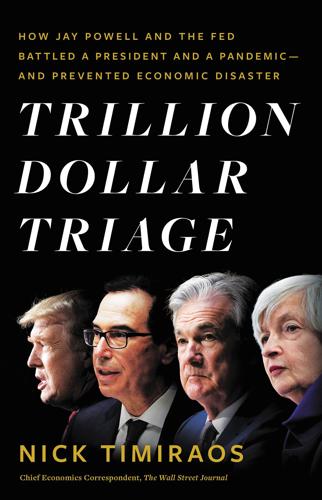
Trillion Dollar Triage: How Jay Powell and the Fed Battled a President and a Pandemic---And Prevented Economic Disaster
by
Nick Timiraos
Published 1 Mar 2022
After talking to a friend who was a National Basketball Association executive, Powell wondered if there would be any professional games in three weeks. Powell imagined an increasingly likely scenario: desolate shopping malls, kids home from school early, the TV playing reruns of past NBA finals. This was looking less like Y2K—the classic example of the government over-preparing for a calamity that never materialized—and more like a significant and sustained shock to the economy. The Fed was facing two distinct economic problems. As workplaces shuttered and global supply chains became squeezed, the first was a jolt to the economy’s capacity to produce goods and services, or its supply side.
…
The Fed prepares for these kinds of surges in demand. In March the amount of paper currency circulating in the economy increased by $70 billion, or around 2.5 percent. The Fed was getting the equivalent of 700 million hundred-dollar banknotes into the economy in a matter of weeks, a magnitude not seen since the run-up to the Y2K scare before January 1, 2000—an event for which officials had months to get ready. Kashkari, a veteran of the 2008 crisis, urged calm in a 60 Minutes interview he taped that day. “If everybody gets scared at the same time and they demand their money back, that’s why the Federal Reserve is here,” he said.
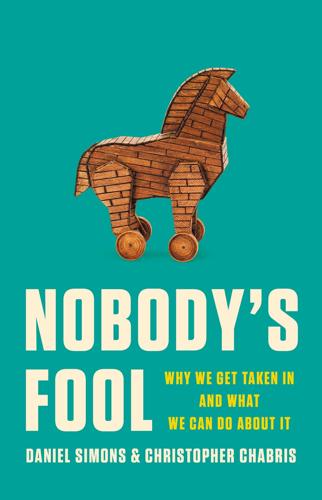
Nobody's Fool: Why We Get Taken in and What We Can Do About It
by
Daniel Simons
and
Christopher Chabris
Published 10 Jul 2023
This sort of mistake is especially likely when using an older system that was designed when greater capacities or limits were unanticipated or were too expensive to accommodate. The “Y2K bug,” which was caused by old software allocating just two digits rather than four to represent the year in a date value, cost governments and private organizations in the United States alone an estimated $100 billion to fix. See R. Chandrasekaran, “Y2K Repair Bill: $100 Billion,” Washington Post, November 18, 1999 [https://www.washingtonpost.com/wp-srv/WPcap/1999-11/18/077r-111899-idx.html]. Chris Groskopf has created an excellent guide with red flags that your dataset might have problems of this sort.
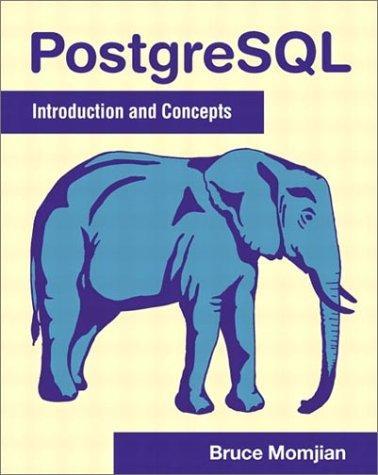
PostgreSQL: introduction and concepts
by
Bruce Momjian
Published 15 Jan 2001
1.3) What Unix platforms does POSTGRESQL run on? 1.4) What non-Unix ports are available? 1.5) Where can I get POSTGRESQL? 1.6) Where can I get support? 1.7) What is the latest release? 1.8) What documentation is available? 1.9) How do I find out about known bugs or missing features? 1.10) How can I learn SQL? 1.11) Is POSTGRESQL Y2K compliant? 1.12) How do I join the development team? 1.13) How do I submit a bug report? 1.14) How does POSTGRESQL compare to other DBMS’s? User Client Questions 2.1) Are there ODBC drivers for POSTGRESQL? 2.2) What tools are available for hooking POSTGRESQL to Web pages? 2.3) Does POSTGRESQL have a graphical user interface?
…
Another one is Teach Yourself SQL in 21 Days, Second Edition at: http://members.tripod.com/er4ebus/sql/index.htm 240 APPENDIX A. ADDITIONAL RESOURCES Many of our users like The Practical SQL Handbook, Bowman, Judith S., et al., Addison–Wesley. Others like The Complete Reference SQL, Groff et al., McGraw–Hill. 1.11) Is POSTGRESQL Y2K compliant? Yes, we easily handle dates past the year 2000AD, and before 2000BC. 1.12) How do I join the development team? First, download the latest source and read the POSTGRESQL Developers documentation on our Web site, or in the distribution. Second, subscribe to the pgsql-hackers and pgsql-patches mailing lists.
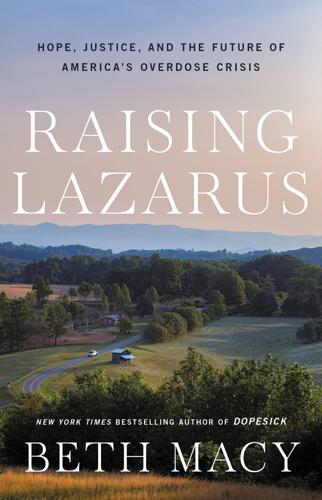
Raising Lazarus: Hope, Justice, and the Future of America’s Overdose Crisis
by
Beth Macy
Published 15 Aug 2022
To inspire him in the Cleveland-based Multidistrict Litigation and for use as props, Hanly displayed several Purdue marketing items in his Manhattan office—an OxyContin plush gorilla, a small calculator flogging Purdue’s record-breaking sales figures, and Maureen Sara’s Employee of the Year award—for her diligent work at Purdue on Y2K preparedness. He also held on to the memory of deposing Richard Sackler. “I’ve taken 500 depositions in my career, and I have never deposed a person whose ability to exhibit empathy is zero,” Hanly told me. “Compared to Sackler, Donald Trump looks like Jesus Christ.” When the Sackler family finalized its first offering to Mike Moore and his co-counsel in the fall of 2019, it pledged $3 billion to 4.5 billion of their cash to the settlement and agreed to relinquish Purdue to a creditor trust—an offer estimated at roughly $10 billion over several years, the bulk of it from future sales of both OxyContin and anti-addiction drugs.
…
“we are screwed”: Barry Meier, Pain Killer: An Empire of Deceit and the Origin of America’s Opioid Epidemic, 2d ed. (New York: Penguin Random House, 2018), 163, footnoting a secret prosecution memo from the 2007 federal case. Meier has reported on the memo but has not publicly released it, saying it would be illegal to do so. an award-winning employee: Sara won a service award from Purdue for Y2K preparedness, according to Hanly, who kept the award on his desk. Her description of the company’s inner workings: Maureen Sara deposition, May 19, 2004, in the US District Court for the Northern District of Alabama, Western Division: Jerry Bodie v. The Purdue Pharma Company. Hanly shared the deposition with me, saying it wasn’t under seal.

The End of Wall Street
by
Roger Lowenstein
Published 15 Jan 2010
Neither was sure how one might arise, and predicting such events is nearly impossible. In 1998, the one-two punch of Russia’s debt default and the collapse of the hedge fund LTCM had caught markets and ministers by surprise. Yet the following year, when Greenspan had injected liquidity into the market to ease the much ballyhooed fear of a Y2K computer collapse, no crisis manifested. Still, there is a logic to why crises strike financial markets. Markets function on credit, and when investors become concerned about a cessation of credit, they are liable to panic.m Even a single investor’s panic can have a bearing on the group. Each investor worries whether the fear will be contagious and naturally considers taking preemptive action (i.e., selling).
…
See short selling short-term paper diet of statistical modeling and stock prices of firms on See also specific firms war with hedge funds Wall Street Journal Walsh, Mark Warsh, Kevin Washington Mutual bondholders concern over JPMorgan Chase and lack of risk control by leadership change at mortgage bubble and mortgage practices of shareholders stock price of subprime mortgages and Weil, Gotshal & Manges Weill, Sanford I. (Sandy) Wells Fargo Wen Jiabao Whitney, Meredith Wilkinson, Jim Willumstad, Robert Wilson, Kendrick Winkelried, Jon Winters, Bill WorldCom Wriston, Walter Y2K computer collapse Zandi, Mark Zubrow, Barry ABOUT THE AUTHOR Roger Lowenstein, the author of four previous books, reported for The Wall Street Journal for more than a decade. He is now a contributing writer for The New York Times Magazine and other publications, and a columnist for Bloomberg.
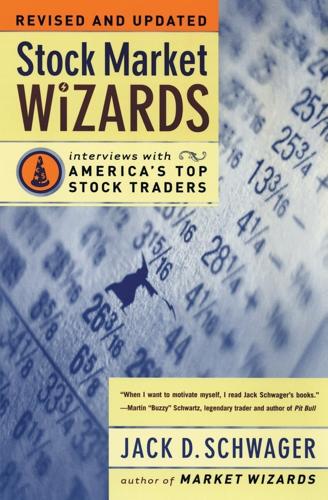
Stock Market Wizards: Interviews With America's Top Stock Traders
by
Jack D. Schwager
Published 1 Jan 2001
It's a one-product company. [Looking at the screen, Cohen comments] I think the market may go a little higher, but I'm actually turning very negative. Why is that? The big caps are moving higher, but the rally has no breadth. The market is moving up on light volume. Also, people will start to get more concerned about Y2K as we get closer to the end of the year. A Fed announcement concerning interest rates is scheduled for the day I am visiting. As we approach within fifteen minutes of the announcement, Cohen begins entering a slew of buy and sell orders well removed from the prevailing market prices. "In case the market does something stupid," he explains.
…
The remainder of the interview, with the exception of the final section, is conducted in the more sedate environs of Cohen's office. short ahead of (he report. I was bearish because a lot of computer and software companies were missing t h e i r numbers [reporting lower- than-expecled earnings] due to Y2K issues. Customers were delaying the installation of new systems because w i t h the year 2000 just around the corner, they figured that they might as well stick with their existing systems. 1 went short the slock at $169. The earnings came out. and they were just: phenomenal—-a complete blowout! I got out sharply higher When did you first become aware that there was a stock market?

Geek Heresy: Rescuing Social Change From the Cult of Technology
by
Kentaro Toyama
Published 25 May 2015
Others note how Indian technology companies got a boost from the Y2K scare. Corporations worldwide worried that their computer systems would reach the year ’00 and mistake it for 1900, not 2000. The fix – to upgrade to four-digit years – was technically straightforward but tedious. Indian companies filled the demand with low-cost engineering. Still others mention that educated Indians – unlike their Chinese peers – speak English, and so they can readily communicate with American firms. But none of these explanations satisfied the Pakistani professionals I met. Pakistan, too, had been open to foreign investment since at least 1991. The Y2K crisis was worldwide, and Pakistani companies could have risen to the opportunity.
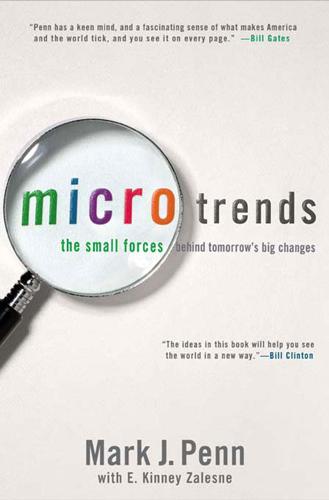
Microtrends: The Small Forces Behind Tomorrow's Big Changes
by
Mark Penn
and
E. Kinney Zalesne
Published 5 Sep 2007
They scare us, almost as much as public speaking. At the same time they fascinate us. Many of us have a healthy mistrust of numbers, because some people, in an effort to advance an agenda, misuse them. Do you remember the Y2K scare? Every computer-user on earth worried that their files were in jeopardy as the millennium turned over. In fact, only one-third of the world’s computers were ever even susceptible to Y2K errors—and in those, hardly any problems materialized. Or avian flu. In late 2005, it sped around the world that out of 140 or so human cases of avian flu reported in Southeast Asia, more than half had resulted in death.
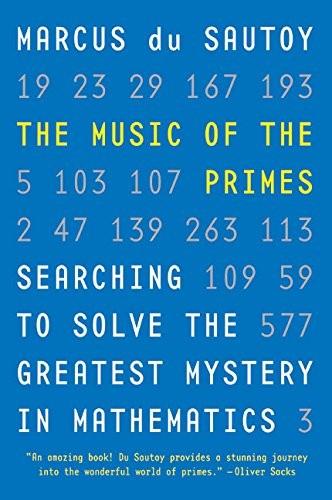
The Music of the Primes
by
Marcus Du Sautoy
Published 26 Apr 2004
However, such security breaches, though serious for the company involved, pose no threat to the whole fabric of Internet business. This is what gives a film like Sneakers an edge. Although the probability of a breakthrough in cracking numbers is small, the risk is still there and the result would be globally devastating. It could become the Y2K of e-business, bringing the whole house of emails crumbling to the ground. We think that cracking numbers is inherently difficult, but we can’t prove it. It would be a weight off a lot of executives’ minds if we could assure them that it is impossible to find a fast program that can factorise numbers.
…
Most mathematicians would not compare the challenge of cracking numbers to the prospect of uncovering some longstanding mystery such as the Riemann Hypothesis. Although solutions of the Riemann Hypothesis and the P versus NP problem might both have implications for RSA, it was another of the Millennium Problems that almost caused the Y2K of e-business. Early in 1999 rumours were rapidly circulating that something called the Birch—Swinnerton-Dyer Conjecture, a problem about things called elliptic curves, might expose the Achilles’ heel of Internet security. In January 1999, The Times ran a front-page article under the headline TEENAGER CRACKS EMAIL CODE.
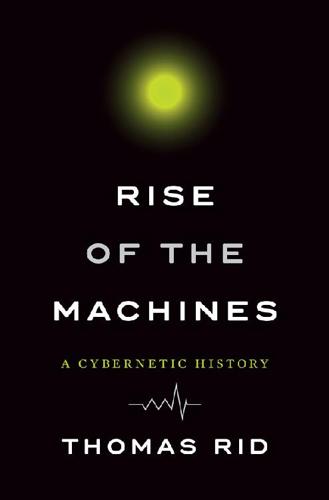
Rise of the Machines: A Cybernetic History
by
Thomas Rid
Published 27 Jun 2016
The company had five sturdy gray relay racks with blue plugs at the top, with space for forty-five servers. But it managed to put in and rent out only a dozen machines. The company never successfully raised sufficient seed money, not even in the bullish market of the New Economy before the crash. And the budget quickly ran thin. One of HavenCo’s main investors, Avi Friedman, was worried about the Y2K problem, so he withdrew about $2 million in cash, in $100 bills, and kept the cash at home. He doled out $1,500 at a time, to make minimum payments. Lackey started using his own credit cards, spending ever more money that he didn’t have. Businesses did not flock to the data haven as expected. By the summer of 2000, two of the three founders had jumped ship and left the start-up.
…
One politically minded White House staffer reviewing the document spotted it. He scribbled in the margin, “Do we really want to say that a single person can potentially paralyze a government?” The statement carried two risks. One was that there was no evidence, let alone a precedent, that one individual alone could take down the government by cyber attack. Y2K had just passed without incident, as Bill Clinton would point out in this very speech. But even if it could not be done, having the president of the United States announce such a monumental vulnerability would certainly inspire potential attackers to try. “I’ll defer to Dick et al on this,” the staffer added.113 Richard Clarke, then in charge of infrastructure protection and counterterrorism in the National Security Council, left the statement in the speech.
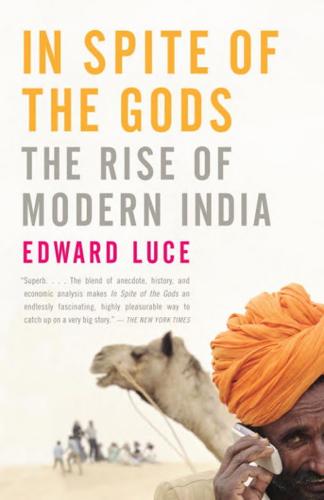
In Spite of the Gods: The Rise of Modern India
by
Edward Luce
Published 23 Aug 2006
Rising prices from the deteriorating situation in Iraq following the U.S.-led invasion sent India’s oil bill shooting upward again in 2004 and 2005. But it had minimal impact on India’s balance of payments situation. Having kept a straight face in the late 1990s while it profited from the West’s paranoia about the Y2K computer bug, which provided the liftoff for India’s software companies, India’s IT and IT-enabled sector also reached a visibility that was changing the face of the country’s urban economy. The employment of hundreds of thousands of young engineers, scientists, and economics and English graduates, on pay scales that often exceeded those of their parents nearing retirement age, created a new generation of consumers with little time for India’s traditional pace of life.
…
To James’s colleagues, the number identifies the twenty-nine-year-old as among the lucky first few thousand people to get a job at Infosys, which is India’s best-known software company. James was hired in 1998, when Infosys was starting to win large contracts to sweep Western computer systems for the much-feared millennium Y2K bug. People at Infosys worried the boom might end in the hangover after millennium eve. Instead it accelerated. India’s software sector barely skipped a beat when the United States dot-com bubble burst in 2001. By 2006 Infosys had expanded more than tenfold from when James had been hired as part of a workforce of more than 50,000 employees.
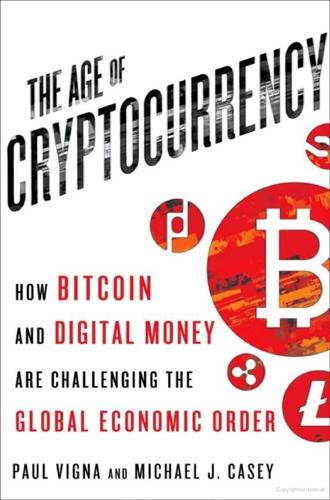
The Age of Cryptocurrency: How Bitcoin and Digital Money Are Challenging the Global Economic Order
by
Paul Vigna
and
Michael J. Casey
Published 27 Jan 2015
Neighborhood pet stores weren’t killed by Pets.com, no more than wedding planners were made redundant by OurBeginning.com, whose representatives joined Pets.com’s talking sock puppet among a host of overhyped Super Bowl XXXIV ads in 2000, but whose domain name has since passed to a Seattle day-care center. Remember also the Y2K threat, which reached its anticlimax weeks before that Super Bowl. We’ll never know whether it amounted to nothing because computer consulting firms successfully convinced everyone to upgrade their mainframes or whether they just brilliantly hyped a nonevent. Well before then history was littered with other failed tech ideas: the Apple Newton, digital audiotapes, and the Betamax video format, to name a few that our generation might remember.
…
Gox and trust industries Turing Festival 20Mission Twitter Uber U-Haul Ulbricht, Ross Ultimate Frisbee unbanked people Unenumerated Unfair Trade, The (Casey) UnionPay Union Square Partners United Kingdom Utah utilities value: of bitcoins of coins of cryptocurrencies of dollar of gold intrinsic of money van der Laan, Wladimir Vaurum venture capitalists (VCs) Ver, Roger Verisign Verizon Vessenes, Peter VHS Virgin Group VirtEx Visa Vodafone Volabit Volcker, Paul Voltaire Voorhees, Erik voting Wall Street Wall Street Journal Walmart Washington State wealth bitcoin and Wealth of Nations, The (Smith) Web Designs WeChat Wedbush Securities Weill, Sanford Wei Dai Weimar Republic welfare state Wells Fargo Western Union Whelan, Jason Whelan, John WikiLeaks Wikipedia Willard, Rik William III, King Williams, Mark T. Wilson, Cody Wilson, Fred Winklevoss, Cameron and Tyler Wise, Josh Women’s Annex Wood, Gavin work World Bank Wright, Frank Lloyd Wuille, Pieter Xapo XIPH Foundation Xpert Financial XRP Y2K threat Yahoo Yang, Jerry Yap Y Combinator Yellen, Janet Yermack, David YouTube YTCracker Yunus, Muhammad ZeroBlock Zhang, Ng Zimbabwe Zimmerman, Phil Zobro, Jonathan Zoosk Zuckerberg, Mark Zug Also by Michael J. Casey The Unfair Trade Che’s Afterlife ABOUT THE AUTHORS Paul Vigna is a markets reporter for The Wall Street Journal, covering equities and the economy.

The Contrarian: Peter Thiel and Silicon Valley's Pursuit of Power
by
Max Chafkin
Published 14 Sep 2021
All of that collided and made an ungodly emotional stew. You had some people who were supremely confident they would prevail, and others who thought they were going to lose everything.” It was a new millennium, but it didn’t feel like it. Al Gore seemed poised for a third term of the Clinton presidency, and Y2K—the fear that a glitch in the way that computers coded dates would crash networks around the world and bring on an apocalypse—had been proven alarmist. The ball dropped—and nothing bad happened. PayPal, which raised another $23 million in January of that year, was hot. Nine thousand or so users, mostly eBay buyers and sellers, were joining every day, claiming their free $10, and then referring a few more new users to take advantage of the $10 per new user referral bonus.
…
H., 25 white supremacists, white nationalists, xiv, 14, 139, 203, 231 Unite the Right rally of, 272 Whitman, Meg, 84–85, 88–91, 147, 236 Whole Earth Catalog, 335 Wikileaks, 150 Willey, Kathleen, 243 Wingfield, Nick, 295–96 Wired, 84, 95–96, 137, 189, 263 Wolfe, Tom, 144, 162 Wolfe Schiff, Alexandra, 162, 312 women voters, 140, 141, 192, 202 Woodstock, 145 Woolway, Mark, xvi working-class white voters, 225 World War I, 327 World War II, 144, 266, 327 Wright, N. T., 327 Wylie, Christopher, 220 X.com, 56–60, 63, 70, 85, 86, 274 PayPal merger with, 65–67, 70–73 Xi Jinping, 299 Y2K, 63 Yahoo, 56, 57, 65, 133, 291 Yarvin, Curtis (Mencius Moldbug), 175–77, 182, 192–93, 204–5, 209, 247, 253, 278, 287, 288, 320, 322 Y Combinator, 166, 209, 269–70 Yee, Michelle, 280 Yelp, xiii, 232, 274, 276, 280 Yiannopoulos, Milo, 203–4, 231 Yoga Food, 102 Yoo, John, 199 Young Americans for Freedom, 60 Young America’s Foundation, 42 Youth for Western Civilization, 203 YouTube, xiii, 105, 276, 278 Zero to One (Thiel), xiv, 172, 187, 190–91, 277, 314 Zip2, 56–57 Zito, Salena, 244 Zoom, 308–9 Zuckerberg, Mark, vii–xii, xviii, 76, 106–9, 112, 135, 159, 160, 205, 236, 245, 263–64, 276–77, 291–304, 309 Cambridge Analytica scandal and, 219, 220 Zuckerman, Gregory, 132 A B C D E F G H I J K L M N O P Q R S T U V W X Y Z ABOUT THE AUTHOR Max Chafkin is a features editor and a tech reporter at Bloomberg Businessweek.
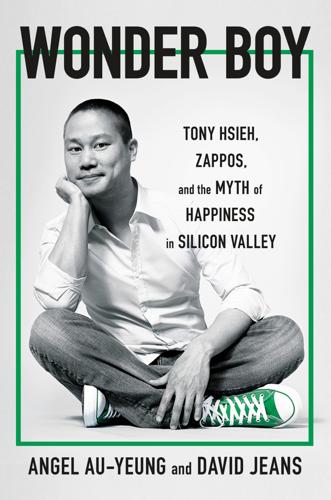
Wonder Boy: Tony Hsieh, Zappos, and the Myth of Happiness in Silicon Valley
by
Angel Au-Yeung
and
David Jeans
Published 25 Apr 2023
And despite his nonstop social calendar and two dozen other companies to think about, he was starting to miss the grind, the highs and lows of being part of a burgeoning startup. He wanted to start building again. * * * Anticipation hung in the air in December 1999. It was the last month of the millennium, and the invisible threat of Y2K—the shorthand term for the year 2000—was upon humankind. It was also the holidays, and Tony’s birthday was coming up. For months, Tony had been planning two massive parties at Club BIO—one for his twenty-sixth birthday on December 12, and another party for New Year’s Eve. These were potentially the last parties that Club BIO would host.
…
See nitrous oxide WHISKY (Warehouse Inventory System in Kentucky) “Who Will Save Your Soul” (song) Wilke, Jeff William Morris Endeavor Williams, Elissa Williams, Evan Williams, Tyler Winfrey, Oprah Winter Camp Wired Wolfington, Ryan Women Who Work (Ivanka Trump) Woodbridge, James World War II World Wide Web Xanax XTR studio Y2K Yahoo Yale University Yang, Andrew Yang, Jerry Y Combinator Yeh, Connie Yosemite camping trip Young, Natalie Zappos Alfred Lin departs from Amazon buys Burning Man and corporate culture of customer service and death of Tony and Downtown Project and Elissa Williams discovers, in Vegas extranet created for “FAT” (Fred Mossler, Alfred Lin, and Tony) leadership team of financial crisis of 2008 and founding of, and early growth founding of, idea pitched by Nick Swinmurn Fred departs from Fred joins, as shoe guy Holacracy and Jewel’s Whole Human program for Kanye West and Las Vegas headquarters in old City Hall market-based dynamics and Mark Guadagnoli hired to train staff of meetings and Michelle D’Attilio and mini-promotions and moves to Henderson, Las Vegas suburb moves to Las Vegas downtown name created parties and events at Simon Sinek’s message to StyleTread mimics Sundance Film Festival and Tony as CEO of Tony asks Victor Oviedo to join Tony dates employees at Tony decides to go all in on Tony hires, then lets go, brothers Andy and Dave at Tony’s drug problems and decline and Tony seen as cult leader at Tony’s resignation from Tyler informs leadership of Tony’s breakdown Tyler Williams hired by Van Ness Avenue complex and warehouse and shoe stores bought by Wells Fargo loans of 2003 and WHISKY and Zappos Insights Zappos Monopoly Zappos University Zappos yearbook ZDTV (cable channel) Zech, Ava Zhitomirskiy, Ilya Zipline (formerly Romotive) Zynga ABOUT THE AUTHORS Angel Au-Yeung is a reporter for the Wall Street Journal and a former staff writer for Forbes.
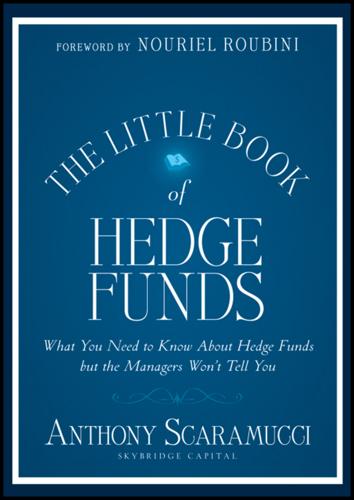
The Little Book of Hedge Funds
by
Anthony Scaramucci
Published 30 Apr 2012
As the ball was about to drop in Times Square, cynics prophesized that the new millennium would usher in a technological crisis so catastrophic that it would rival Noah’s devastating flood. So serious was this supposed crisis that Federal Reserve Chairman Alan Greenspan spent New Year’s Eve in a government crisis center. Yet, Dick Clark rang in 2000 without the smallest glitch. However, the true Y2K crisis affected the long/short equity managers, many of whom were long low P/E stocks and short high P/E Internet stocks. Robertson was one of those short selling managers. Fed up with the market’s irrationality, he closed his fund in late March 2000. In a letter to investors that year, the then-67-year-old blamed the fund’s shortfall on the Internet bubble.
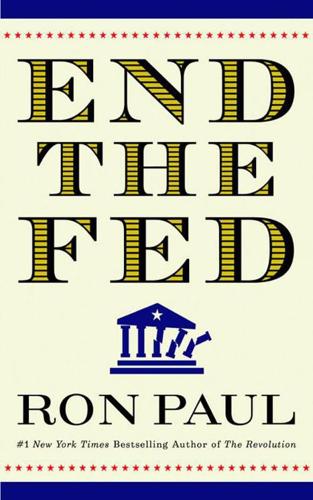
End the Fed
by
Ron Paul
Published 5 Feb 2011
But our recessions, the Asian crisis, as well as the Russian crisis were papered over with more inflation. Even the failure of Long-Term Capital Management in 1999 was barely a blip on the economic radar screen. By the year 2000, the imbalances were more than could be contained. The massive injection of credit for Y2K softened the blow of the 2000 recession, but it was clear by then that the “Big One” was at our doorstep. And I suspect that Greenspan knew it. He energetically contributed to the already very large housing bubble by driving down and holding interest rates very low for several more years. He bought time for himself and the institution he represented.
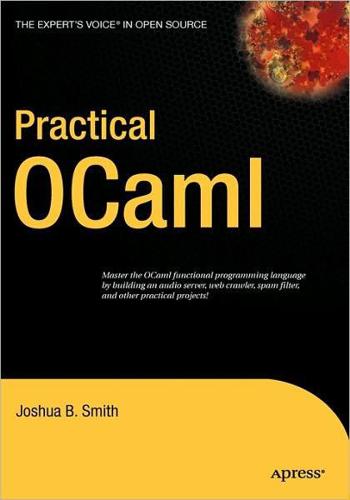
Practical OCaml
by
Joshua B. Smith
Published 30 Sep 2006
"; corp_location = "Chicago, IL, USA"}; title = "Unix Systems Administrator"; job_type=FullTime; description = "Made sure the server room was free from dust."; 441 620Xch30final.qxd 442 9/22/06 12:23 AM Page 442 CHAPTER 30 ■ CONCLUSION b_points = [ {acc_level=1; acc_descr = "Used Ping a great deal."}; {acc_level=1; acc_descr = "Install Nethack on SunOS 4.13 systems and verified they were Y2K compliant."}]}] let acc_filter_level = 1 let degrees = [{ad_dates=new job_date({month=2;year=2003}, {month=8;year=2005}); degree="MBA"; institution = {corp_name="Lake Forest Graduate School of Management"; corp_location = "Chicago, IL, USA" }}; {ad_dates=new job_date({month=8;year=1992}, {month=6;year=1996}); degree="BA (English)"; institution = {corp_name = "Denison University"; corp_location = "Granville, OH, USA" }}] let publications = [{pub_date={month=8;year=2006}; pub_title="Practical Ocaml"; publisher={corp_name = "Apress, Inc
…
. * Introduced people to Ocaml. * Wrote very little software, and a whole lot of documentation. * Frequently got coffee for people. 1998 - 2000 |Another Big Corp. | Unix Systems Administrator Made sure the server room was free from dust. * Used Ping a great deal. * Install Nethack on SunOS 4.13 systems and verified they were Y2K compliant. -------------------------------------------------------------------------------Academic History -------------------------------------------------------------------------------2003 - 2005 MBA Lake Forest Graduate School of Management 1992 - 1996 BA (English) Denison University -------------------------------------------------------------------------------Publications -------------------------------------------------------------------------------10/2006 [Practical Ocaml] Apress, Inc.
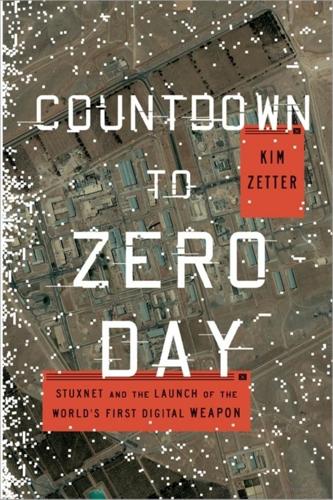
Countdown to Zero Day: Stuxnet and the Launch of the World's First Digital Weapon
by
Kim Zetter
Published 11 Nov 2014
A nuclear engineer by training, he was working for the Electric Power Research Institute when the Y2K issue arose. Armageddon warnings in the press predicted dystopian meltdowns when computer clocks struck midnight on New Year’s Eve because of a programming error that failed to anticipate the millennial rollover to triple zeroes on January 1, 2000. Weiss began to wonder: if such a minor thing as a change of date could threaten to bring control systems to a halt, what would more serious issues do? More important, if Y2K could accidentally cause huge problems, what might an intentional attack from hackers do?
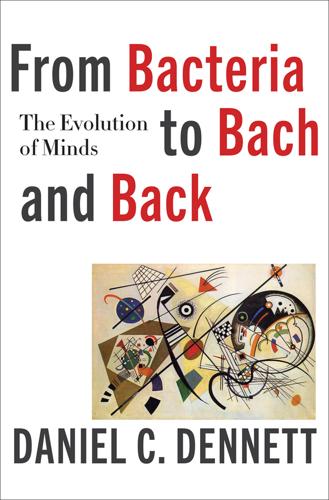
From Bacteria to Bach and Back: The Evolution of Minds
by
Daniel C. Dennett
Published 7 Feb 2017
A thinko is like a typo—a typographical error—but at a higher, semantic level—misthinking not miswriting. Typing “PRITN” instead of “PRINT” is a typo; forgetting to put the brackets or asterisks (or whatever the programming language calls for) around a comment is a thinko, and so is defining a three-place function where you need a four-place function. The notorious Y2K bug, which didn’t leave room in data structures for dates that didn’t begin with “19,” was no typo; it was a thinko. A thinko is a clear mistake in any endeavor where the assumed goals of the enterprise require certain identifiable “best practices.” “Bugs” in computer programs may be attributable to typos in the source code, but more often they are thinkos.
…
“how come” question, 38–39, 48 Wiener, Norbert, 136, 157 Wilde, Oscar, 316, 317–18 Wiles, Andrew, 376–77 Wilson, David Sloan, 212, 216–17 Wilson, Deirdre, 289, 293 Wilson, Robert Anton, 113 Wimsatt, William, 324 witticisms, R&D in, 317–18 women: biological differences between men and, 328–29 cultural repression of, 329 genius in, 23–24, 328–29 as intelligent designers, 328–29 words: as affordances, 198, 204 as autonomous, 188, 189 chimpanzees and, 203–4 as continuances, 187 Darwinian Space for, 146, 208 DNA compared to, 202–3 domestication of, 198, 294, 296 etymologies of, 180, 182 evolution of, 212–13, 296 genes compared to, 224–25 horizontal transfer of, 182 human dependence on, 178–79 as informational structures, 188–89 as key element of cultural evolution, 177, 179, 208 Lamarckian view of, 245–46 manifest images and, 202, 203, 205, 273, 287 meaning-concept-thing constructs and, 272–74 as memes, 193, 194, 205–6, 207, 224–26, 263, 412 private vs. public tokens for, 185–86, 189–90 as pronounceable memes, 176, 191, 193, 194, 205–6, 207, 224–25, 269–70 salience of, 207 words selfishness of, 189 as spoken vs. silent tokens, 183–86 stages of, 187 as striving to reproduce, 5, 412 as synanthropic, 197–98, 199 as thinking tools, 292, 389 transmission errors and, 234–35 type/token distinction of, 182–83, 186–87, 189, 245–46 viruses compared to, 189, 190, 245 words, evolution of, 176–82, 187–90 Chomskyan disparagement of, 187, 188 horizonatal transfer of, 180–81 natural selection in, 197 reproduction in, 189–204, 412 see also language, evolution of word stem completion paradigm, 396–97 world knowledge, 73 World War II, 70–72 Wright, Robert, 223, 224 writing: advantages over speech of, 236 variations in size and shape in, 201 Y2K bug, 229 Ziock, Hans, 119n, 125n, 133 ABOUT THE AUTHOR Daniel C. Dennett is University Professor and Co-director of the Center for Cognitive Studies at Tufts University. For over fifty years he has conducted research on human consciousness, contributing to advances in psychology, neuroscience, evolutionary biology, artificial intelligence, and robotics, as well as writing on such traditional philosophical topics as free will, ethics, epistemology, and metaphysics.

Track Changes
by
Matthew G. Kirschenbaum
Published 1 May 2016
Perhaps Hollywood had simply grown more sophisticated in its portrayal of computers on the big screen in the intervening decade and a half; a writer using a word processor in a mainstream movie was now expected to behave believably. But it is also possible to view the contrast between the final scenes in the two films as a reflection of our changing relationship to digital content and digital culture. Whereas in the mid-1980s the ghostly green text was vulnerable to disappearing in a flash, by the year 2000—Y2K notwithstanding—we had grown accustomed to thinking of digital media as possessed of its own idiosyncratic forms of resilience, not an inscrutable or ephemeral black box but just another technology, subject to our manipulation and control. Grady Tripp had found a life worth living, and he entrusted it to his PowerBook without a second thought.
…
Infante also explicitly identifies Brathwaite’s writing as “electronic poetry” (despite the fact that readers always encounter it printed on paper); similarly, Cynthia James aligns Brathwaite’s work with hypertext, a digital form usually associated with white Western authors. See James, “Caliban in Y2K? Hypertext and New Pathways,” in For the Geography of a Soul: Emerging Perspectives on Kamau Brathwaite, ed. Timothy J. Reiss (Trenton, NJ: Africa World Press, 2001), 351–361. 63. Brathwaite also sometimes identifies his computer as Stark, which doubles as the name of Caliban’s sister in his writings.
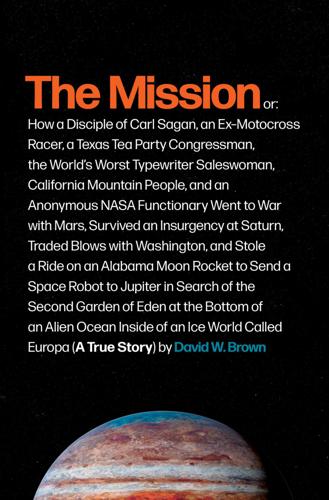
The Mission: A True Story
by
David W. Brown
Published 26 Jan 2021
When Louise asked Bob to meet her at the 1999 American Geophysical Union conference in San Francisco about something she had discovered in the Galileo data, he was hesitant; they hadn’t really spoken in months. The conversation went something like this: —Bob, I think I found something. —Whatever.233 But he agreed to meet with her. It was the cusp of Y2K, and maybe all the world’s computers would stop working and the apertures capping nuclear silos would open and end the dreams of our ancestors. Or maybe not—it was in the hands of COBOL developers now—and meanwhile, the annual geology conference went on as normal. (Geology played the long game, after all, would survive doomsday in any event.)
…
And then a journey into tomorrow, a journey to another planet: a manned mission to Mars.” This was the first serious presidential commitment to deep space exploration since Kennedy’s “We Choose to Go to the Moon” speech. The details would follow. There would be a long-term increase in NASA’s budget—it would be double by Y2K. In ten years’ time, space station Freedom would fly. In twenty years, astronauts would set up a permanent base on the moon. In thirty years—by the fiftieth anniversary of the One Giant Leap—boot prints on Mars. In a sense, it was the same program laid out by Wernher von Braun decades earlier. Regardless, it did not succeed in placing humans on the moon or Mars.
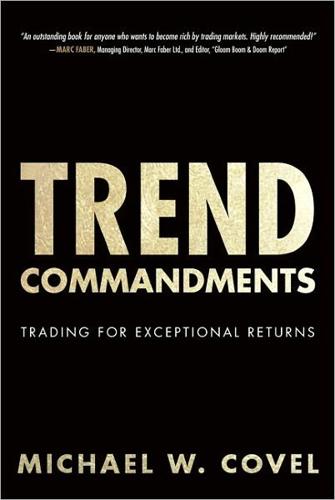
Trend Commandments: Trading for Exceptional Returns
by
Michael W. Covel
Published 14 Jun 2011
That said, some will spend a lifetime trying to avoid any loss even though its impossible…as Chart 8 shows. 70 Tre n d C o m m a n d m e n t s Chart 8: Trend Following Trader Sunrise Capital Compared to Largest Quarterly S&P Drawdowns Time Period Event S&P 500 Index Performance Sunrise Performance 1987 2002 2001 1990 2002 2001 1998 2008 2008 2000 1999 1994 2007 1990 2003 Black Monday WorldCom Scandal 9-11 Iraq Invades Kuwait Dot.Com Bubble Tech Bear Market Russian Default/LTCM Credit Crisis Credit Crisis/Bailout Dot.Com Bubble Burst Y2K Anxiety Fed Rate Hikes Credit Crisis Recession/Oil Spike Second Gulf War –23.23% –17.63% –14.99% –14.52% –13.73% –12.11% –10.30% –9.92% –8.88% –8.09% –6.56% –4.43% –3.82% –3.81% –3.60% 55.37% 8.90% 8.29% 41.21% 18.19% 11.22% 12.02% 15.12% –3.79% 16.02% –0.98% –4.55% 13.46% 13.54% 7.48% Q4 Q3 Q3 Q3 Q2 Q1 Q3 Q1 Q3 Q4 Q3 Q1 Q4 Q1 Q1 This page intentionally left blank Process versus outcome: Do you want to be right or rich?

Player One
by
Douglas Coupland
Published 30 Jun 2011
Fancy a bit of chit-chat? Doubtful. She’d most likely text him, even if they were riding together in a crashing car — and she’d be fluent in seventeen software programs and fully versed in the ability to conceal hourly visits to gruesome military photo streams. She probably wouldn’t remember 9/11 or the Y2K virus, and she’ll never bother to learn a new language because a machine will translate the world for her in 0.034 seconds. But most of all, this cool Hitchcock blonde is a living, breathing, luscious, and terrifying terminal punctuation mark on Luke’s existence, a punctuation mark along the lines of This is the New Normal, Luke, and guess what — it’s left you in the weeds, and you, pastor, reverend, good sir, have outlived your cultural purpose and you, father, forgive me, are a chunk of cultural scrap metal, not even recyclable at that.

Understanding Exposure, Fourth Edition: How to Shoot Great Photographs With Any Camera
by
Bryan Peterson
Published 15 Mar 2016
It seems that a couple of those “big” photography forum Web sites have unleashed some really old news that when a lens is set to the smaller apertures, such as f/16 and f/22, lens diffraction is more noticeable (in layman’s terms, lens diffraction means a loss of contrast and sharpness). I want to set the record straight about lens diffraction and share what thousands of commercial freelance photographers all over the world know: shooting at f/22 can be a great idea, and any worries about loss of sharpness and contrast are just as overblown as the Y2K fears were! In over 35 years of shooting commercially, I can’t remember a time when a client said, “Bryan, whatever you do, don’t shoot at f/22.” Nor can I remember a single instance when either Getty or Corbis (the two largest stock photo agencies in the world) called me to say, “Bryan, don’t send us any of your pictures for our stock files if they were shot at f/22.”

Palo Alto: A History of California, Capitalism, and the World
by
Malcolm Harris
Published 14 Feb 2023
No less an informed observer than Michael Malone published a definitive 600-page book on the rise and fall of Apple… in 1999.1 Despite how narratively convenient it would have been, Silicon Valley didn’t learn its lesson in the years following the dot-com bust, and neither did the capitalists who inflated the bubble in the first place. As we’ve seen, post-pop heavyweights like Amazon and Google picked up the broken pieces and made the best of them. The Y2K bubble looks like a great cautionary tale, but any capitalist who kept taking their investment cues from the collapse of Pets.com missed out on a lot of money. The growth that leading firms have accomplished since then has almost fully obscured the Y2K bubble on the stock chart, reducing it to mere first-night jitters. The 2008 housing crisis demonstrated the perils of confusing advertising with innovation, and blending up risky subprime home loans didn’t actually improve the quality of the underlying assets.
…
To kill a site like Pets.com, investors didn’t have to lose faith entirely; a mere pause in the momentum was enough. A robust business can handle a negative readjustment in expectations, but these were not robust businesses—they were gambles. And gambles pay off or they don’t, one or zero. By the end of 2000, Pets.com was the latter, and a whole cohort of start-ups followed it off a cliff. The Y2K bubble was overdetermined; it had more causes than it needed. One was that technology hedge funds bid up stock prices with a plan to jump out at the high and leave less sophisticated capital holding the heavy bag. That strategy worked well enough, and the funds mostly came out of the experience surprisingly whole.57 But if Pets.com brought global investors to their senses and tanked the NASDAQ as capital shifted out of technology stocks, then perhaps the coked-up sock puppy did some good, stopping people before they threw more money down the dog-food-delivery garbage chute and wising everyone up for the next time.
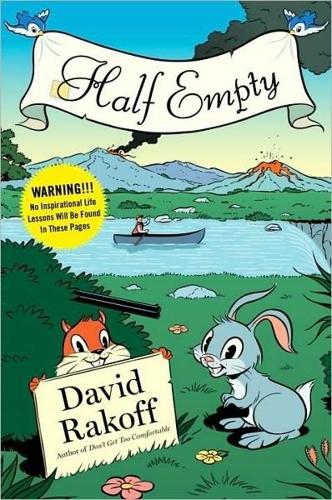
Half Empty
by
David Rakoff
Published 20 Sep 2010
Although it was briefly marvelous and strange to see a car parked outside an office, the wide hallway used like a street, many stories above the city. The millennium had turned. The planes had not fallen from the sky, the trains had not careened off the tracks. Neither had the heart monitors, prenatal incubators, nor the iron lungs reset themselves to some suicidal zero hour to self-destruct in a lethal kablooey of Y2K shrapnel, as feared. And most important, the ATMs continued to dispense money, and what money it was. I was off to see some of it. Like Edith Wharton’s Gilded Age Buccaneers, when titled but cash-poor Europeans joined in wedlock with wealthy American girls in the market for pedigree, there were mutually abusive marriages popping up all over the city between un-moneyed creatives with ethereal Web-based schemes and the financiers who, desperate to get in on the action, bankrolled them.
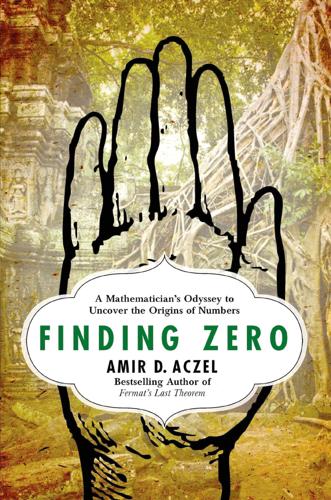
Finding Zero: A Mathematician's Odyssey to Uncover the Origins of Numbers
by
Amir D. Aczel
Published 6 Jan 2015
The Mayan calendars, and the predominantly vigesimal Mayan number system with zero, are some of the most intriguing discoveries in the history of science. In 2012 there was worldwide panic in some circles of society fearing the end of the world because one of the Mayan calendars reset itself to zero. Of course, nothing happened; our planet continued to revolve around the sun, and this fear turned out to be as unfounded as the similar Y2K worry of a dozen years earlier. But the Mayan system was isolated from the rest of the world, and it used glyphs—written or carved symbolic signs—that were not suitable for economy of notation. Their signs grew in number as the numbers they represented got larger, in a manner similar to that of the Roman system.
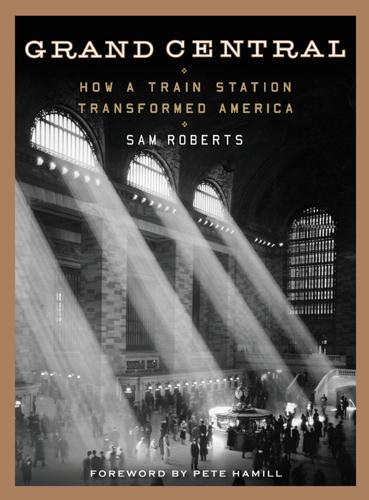
Grand Central: How a Train Station Transformed America
by
Sam Roberts
Published 22 Jan 2013
Instead, they would ring in each hour simultaneously, even if the hour would be different in each time zone. In New York, they would strike noon approximately 3 minutes, 58 seconds, and 38 one-hundredths of a second earlier than they had the day before. All over the country, Americans greeted the change with Y2K trepidation and with not a little resentment that the railroads were once again impinging on their daily routines. A local prophet in Charleston, South Carolina, warned that toying with time would provoke divine displeasure (sure enough, a major earthquake struck there three years later). Pittsburgh, Cleveland, and Detroit refused to comply, and Cincinnati delayed adoption of standard time for seven years.

The Best Interface Is No Interface: The Simple Path to Brilliant Technology (Voices That Matter)
by
Golden Krishna
Published 10 Feb 2015
Use candles, because if you rely on the government’s bureaucratically created electrical grid to automatically deploy to you just the right amount of electricity, well, I don’t know what to tell you my friend, you’re living in a dreamland. What would you do if it ran out? If it stopped working? If it failed? Then what would you do? You’d be a running-water-loving, cold-food-eating, electricity-hogging idiot! Those dated thoughts may sound insane to you now, but in more modern times we’ve had our fears. Y2K: Oh no, two digits! Online banking: My money in cyberspace!? Leaping into the unknown is scary. And relying on a new means of getting things done means the fear of failure will be prevalent. Examining that fear of failure—a consideration of edge cases—can be limiting and often unproductive during early production ideation, but it is essential to consider when putting together the final stages of anything.
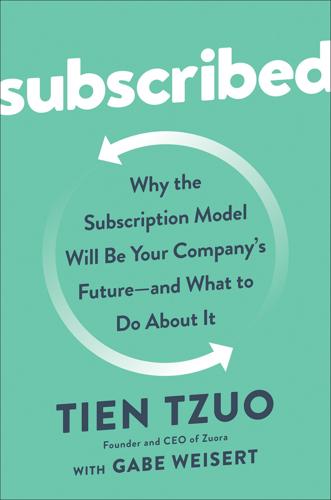
Subscribed: Why the Subscription Model Will Be Your Company's Future - and What to Do About It
by
Tien Tzuo
and
Gabe Weisert
Published 4 Jun 2018
All of us early folks at Salesforce came out of the traditional, on-premise software industry. We were all pretty fed up with it. We thought that companies like Oracle, Siebel, and others were creating a needlessly complicated product that was sold by a mercenary sales force and promoted by a parasitic systems integration industry. The Y2K scare was in full force. Sales reps outnumbered developers ten to one. Half the installations would never see the light of day, and even those that were deemed a “success” were hated by the end users. The industry had completely lost sight of its customers: who they were, what they did on a daily basis, what they liked about their work systems, and what made them angry.
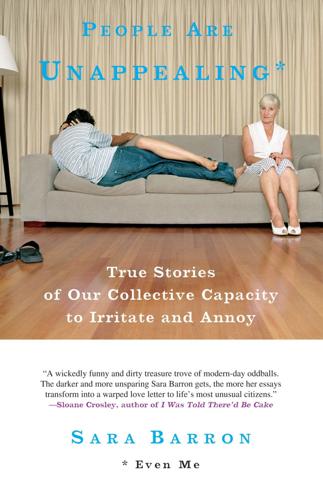
People Are Unappealing: Even Me
by
Sara Barron
Published 10 Mar 2009
And on the nights that my most pressing fear—not of death but of dying alone—looms large, it's the call that Maggie makes to say, “No. I won't allow that.” Coming from someone as crazily candid as she, I have no choice but to buy it. 7 the prophet needs the boys’ room At the turn of the millennium, while others worried about Y2K and the possible end of the world, I obsessed over more important matters: Maggie had dared me to ask Elijah on a date. I told her my front-runner of a come-on line. “Ingenious,” she said. “‘Would you like to lay your chocolate skin beside my white vagina?’ Honestly, I'm jealous that I didn't think of that myself.”

Thank You for Being Late: An Optimist's Guide to Thriving in the Age of Accelerations
by
Thomas L. Friedman
Published 22 Nov 2016
The early stages of modern digital globalization tended to be all about “outsourcing,” another name for American and European companies leveraging the fact that connectivity was becoming fast, free, easy for you, and ubiquitous, so they could hire enormous numbers of relatively cheap engineers anywhere in the world to solve American problems. When this first became possible at scale in the late 1990s, the big problem most people wanted solving was Y2K—the fear that many computers would stop working because of a bug that would kick in on their internal clocks on January 1, 2000. Millions of computer systems needed to be remediated, and India had hundreds of thousands of low-wage engineers to do it. Presto, problem solved. What happened, though, with the emergence of the supernova, when complexity became fast, free, easy for you, and invisible, and globalization meant that everyone anywhere with an Internet connection could access the digital flows, was something very exciting: Indian, Mexican, Pakistani, Indonesian, and Ukrainian engineers, and many others, began tapping in to solve their problems.
…
David Time Time Division Multiple Access (TDMA) Tipirneni, Ashok Tocqueville, Alexis de topsoil “topsoil of trust” Torvalds, Linus Toynbee, Arnold Transatlantic Trade and Investment Partnership (TTIP) translation software Trans-Pacific Partnership (TPP) transparency, in workplace Transparent (TV series) Trestman, Marc tribalism Tropic of Chaos (Parenti) Truman, Harry Trump, Donald trust: community and; financial flows and; as human quality; politics and; sharing economy and; as social capital; social technologies and Trust (Fukuyama) truth, live video and Tunisia TurboTax Turki, Karim Turner, Adair 24/7 Customer Twenty-Fourth Marine Expeditionary Unit Twin Cities Business Twin Cities Metropolitan Council Twitter 2G wireless networks typewriters Uber; surge pricing algorithms of Udacity Uganda, population growth in Ukraine; 2014 uprising in unemployment, political instability and Unesco United Bearing United Nations; Human Development Report Office of; Intergovernmental Panel on Climate Change of; Office for Coordination of Humanitarian Affairs of; Population Division of; Refugee Agency (UNHCR) of United Press International (UPI) United States: China’s relations with; global dependence on; illegal immigration into; immigrant entrepreneurs in; Madagascar and; Middle East policy of; population growth in; post–Cold War hegemony of; Russia’s relations with UPS USA Today value sets: of author; community and; cultural identity and; in opinion writing; sustainable vs. situational; see also ethics, innovation in van Agtmael, Antoine Vedantam, Shankar Venezuela Venmo Ventura, Jesse Veritas Genetics Verizon version control systems Vestberg, Hans video, live, empathy and video games Vietnam Vietnam War Visa Vital Signs of the Planet (NASA report) voice prints Volkswagen Beetle Vox.com wage insurance Wakefield Research Walensky, Norm Walker, Robert Wall Street Journal Walmart, online operations of Wanamaker, John Wanstrath, Chris Warburg, Bettina Waryan, Don Washington Post Waters, Colin water scarcity Watson, Thomas Watson (computer) Watson (software): medical applications of weak signals, detection of weak states: in age of accelerations; biodiversity loss in; breakers and; building stability in; civil wars in; climate change and; in Cold War era; contrived borders of; dwindling foreign aid to; global flows and; infrastructure in; Internet and; population growth in; risk to interdependent world of We Are All Khaled Said (Facebook page) Webster University WeChat Weekend Edition (radio show) Weiner, Jeff Weisman, Alan Welby, Justin Wells, Lin Welsh, Tim West Africa; Ebola outbreak in; migration from WhatIs.com WhatsApp “When and Why Nationalism Beats Globalism” (Haidt) White House, 2015 drone crash at White House Council of Economic Advisers (CEA) Whitman, Meg “Why ‘Keep Your Paddle in the Water’ Is Bad Advice for Beginners” (Levesque) “Why What You Learned in Preschool Is Crucial at Work” (Miller) Wieseltier, Leon Wikipedia Williams, Jake Wilson, Dan wind energy Windows Wired wireless networks wisdom, patience and Wolf, Frank women: education of; empowerment of WomenNewsNetwork.net workforce, innovation in; accelerated pace of; blending of technical and interpersonal skills in; computerization and; connectivity and; disruption in; education and; empowerment in; high-wage, middle-skilled jobs in; intelligent assistance in, see intelligent assistance; intelligent assistants and; lifelong learning and; mentors in; middle class and; new social contracts in; on-demand jobs in; retraining in; self-motivation and; self-reinvention and; skill sets and, see skill sets; technological change and; transparency and; see also job seekers World Bank World Cup (2014) World Is Flat, The (Friedman) World of Disorder World of Order World Parks Congress, Sydney “World Population Prospects: The 2015 Revision” (U.N.) World Trade Center World Trade Organization worldview; see also Machine, the World War I World War II World Wide Web; search engines and World Wildlife Fund “wound collectors” Wujec, Tom X (Google research lab) Xerox PARC research center Y2K Yahoo Yassin, Israa Yaun, David Years of Living Dangerously (TV show) Yelp Yemen Yeni Medya (New Media Inc.) Yeo, George Yildiz, Sadik YouTube; advertising/ISIS video controversy and Zambrano, Patricio Zedillo, Ernesto Zelle, Charlie Zika virus ALSO BY THOMAS L. FRIEDMAN From Beirut to Jerusalem (1989) The Lexus and the Olive Tree (1999) Longitudes and Attitudes (2002) The World Is Flat (2005) Hot, Flat, and Crowded (2008) That Used to Be Us (with Michael Mandelbaum, 2011) A Note About the Author Thomas L.
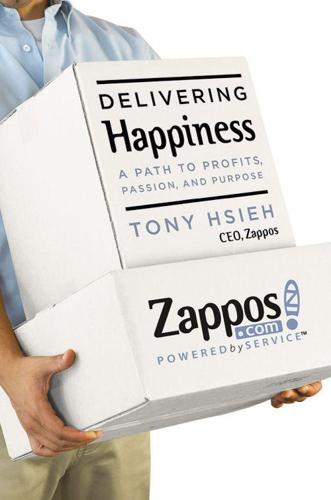
Delivering Happiness: A Path to Profits, Passion, and Purpose
by
Tony Hsieh
Published 6 Jun 2010
“Yeah, I don’t think other residents living here are going to be too happy with me when they find out why they had to evacuate the building in the middle of the night,” I said. “They’re probably going to remember this night forever as well.” She laughed. “Oh, don’t worry about it. It was an accident. You can blame it on the Y2K bug or something. I can see the headlines now: Fog Machines Gone Awry!” I smiled at her. “Can you believe that this whole place is going to be converted to an office in a few days?” She gazed into my eyes. I could still hear the music in the background, but the rest of the world seemed to disappear.
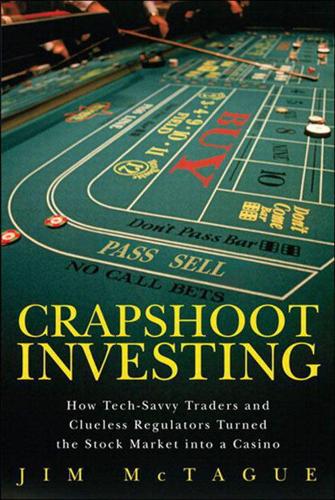
Crapshoot Investing: How Tech-Savvy Traders and Clueless Regulators Turned the Stock Market Into a Casino
by
Jim McTague
Published 1 Mar 2011
“Many of these arrangements do not have any pre-trade risk controls since these clients demand the fastest speed. Due to the fully electronic nature of the equity markets today, one keypunch error could wreak havoc. Nothing would be able to stop a market destroying order once the button was pressed,” they wrote. Once again, few people paid attention. It sounded shrill and far-fetched, like the Y2K scare that had predicted a meltdown of computers worldwide on January 1, 2000 because twentieth-century computer programs would not recognize dates after 1999. This apathy about their white paper would begin to evaporate days later as a result of a quasi-comic confluence of events involving the FBI, short-tempered Wall Street bankers, a Bulgarian-born blogger, and a preening U.S. senator.

Free as in Freedom
by
Sam Williams
Published 16 Nov 2015
This time around, however, the comments fail to make much of a media dent. Midway through the week, Red Hat, Inc., a prominent GNU/ Linux vendor, goes public. The news merely confirms what many reporters such as myself already suspect: "Linux" has become a Wall Street buzzword, much like "e-commerce" and "dot-com" before it. With the 55 stock market approaching the Y2K rollover like a hyperbola approaching its vertical asymptote, all talk of free software or open source as a political phenomenon falls by the wayside. Maybe that's why, when LinuxWorld follows up its first two shows with a third LinuxWorld show in August, 2000, Stallman is conspicuously absent. My second encounter with Stallman and his trademark gaze comes shortly after that third LinuxWorld show.

Choose Yourself!
by
James Altucher
Published 14 Sep 2013
Hmmm… What could we do now? Internet stock market boom. Suddenly, everything would cost nothing (since it’s all digital!) and there were no taxes on Internet sales. So Wall Street took every company public, creating enormous paper wealth. The Federal Reserve helped out by pretending to be nervous about Y2K and printing an enormous amount of money to keep things going, which led to a housing boom. Then Wall Street joined in by coming up with creative ways to bundle the housing loans to create more paper wealth for everyone. I have no political agenda in saying this. Nor am I blaming anyone. Everyone was looking out for their own interests: the spenders on Main Street, the government, Wall Street, and all the bureaucrats, lobbyists, bloated corporations, media, and everybody in between.
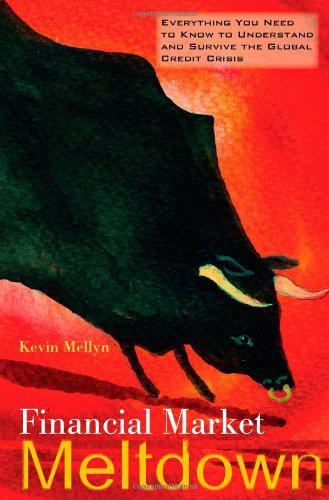
Financial Market Meltdown: Everything You Need to Know to Understand and Survive the Global Credit Crisis
by
Kevin Mellyn
Published 30 Sep 2009
It engineered a bail-out of Mexico in 1994, and with the International Monetary Fund helped stopped a global market panic after the Asian currency crisis of 1997. It flooded the markets with cheap money after the dot. com bubble bust at the end of 2000 and again after September 11, 2001. The Fed even pumped money into the system to prevent the phony crisis of Y2K, the idea that the world’s computers would go wacky when the calendar rolled over into the New Millennium on January 1, 2000. By and large, all these actions were successful. Nobody could really ask if they were proper or necessary because of the record of success. Over time, the Great Moderation began to take the fear out of the equation for financial market players.
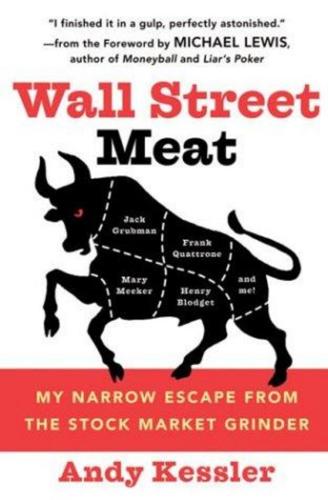
Wall Street Meat
by
Andy Kessler
Published 17 Mar 2003
My guess is that is a relief to him. As a boxer, he knows how to get up from a knockout punch. · · · There are plenty of smoking guns to blame for the Internet and Telecom and Technology Bubble. None are very satisfying. Fed Chairman Alan Greenspan pumped the money supply to stave off a banking crisis based on Y2K computer problems and the excess money went into the stock market. Or how about excessive stock options led greedy management to fudge earnings numbers to pump up their stock. Yeah, maybe. It was structural problems on Wall Street that created the bubble, though excess money supply and corrupt management certainly contributed lots of the hot air.
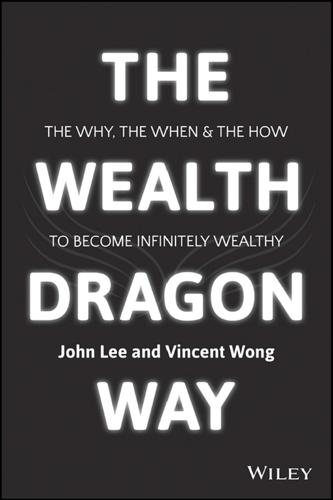
The Wealth Dragon Way: The Why, the When and the How to Become Infinitely Wealthy
by
John Lee
Published 13 Apr 2015
The reality was that it had taught me how to be a good business manager, not how to be a good business owner, and I was about to learn the hard way what a huge difference there can be between the two. As the new millennium kicked off—and everyone got used to the fact that the world's computers had not all gone up in smoke because of the Y2K bug—the dot-com bubble was reaching its peak. Inspired by all the über-successful start-ups, such as Last Minute and Yahoo!, I—like so many others—decided I needed to start a dot-com of my own. I thought it would be the perfect start-up business for me since it wouldn't require a huge amount of investment capital.

Uncanny Valley: A Memoir
by
Anna Wiener
Published 14 Jan 2020
I drank coffee with my mother until the coffee ran out or ran cold; visited my grandparents in apartments that hadn’t changed for decades. I tried to clear out the storage space in the basement, unearthing old bomber jackets with hand-sewn patches, undergraduate writing, a jar of peeled potatoes stockpiled fifteen years prior in preparation for Y2K. Banal activities, but they felt so good. I felt myself returning to myself. It was strange to be back, but with tech money. I invited friends to dinner at restaurants I knew about from my boss at the literary agency, opened bar tabs, took cabs home after midnight instead of waiting for the train.

Company of One: Why Staying Small Is the Next Big Thing for Business
by
Paul Jarvis
Published 1 Jan 2019
In business, conditions are, of course, never perfect. In fact, they’re typically less than ideal, with changing markets, differing trends, and consumer demand often flip-flopping. Specialists in the corporate world can thrive during certain surges. For instance, COBOL programmers were in demand in 1999 as Y2K approached—but then that need quickly diminished on January 1, 2000. In contrast, generalist programmers, who can write code in any language, have been in demand since computers started to become mainstream in the 1980s, and they have continued to see demand for their varied skill set. According to Carter Phipps, author of Evolutionaries, generalists will continue to thrive in business as it becomes increasingly valuable to know “a little bit about a lot.”
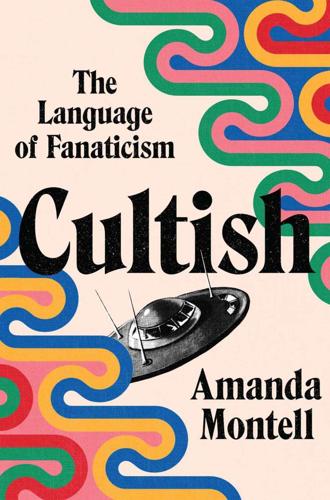
Cultish: The Language of Fanaticism
by
Amanda Montell
Published 14 Jun 2021
The idea to mix the physical and the metaphysical was still about as far from people’s minds as crossing a doughnut with a croissant. Which is to say, it was coming, and it was going to be huge, but the recipe hadn’t come together quite yet. But then . . . the twenty-first century happened. Not long after the stroke of midnight on Y2K, every piece of American fitness history seemed to fuse and detonate, kicking off the “cult fitness” industry as we know it. In 2000, we got the Bar Method, the studio that catalyzed America’s fixation with the ballet-inspired fitness craze. The same year we got CrossFit, which catered to a very different demographic than barre, but whose “boxes” had an equally boutique-y, anti-gym vibe.
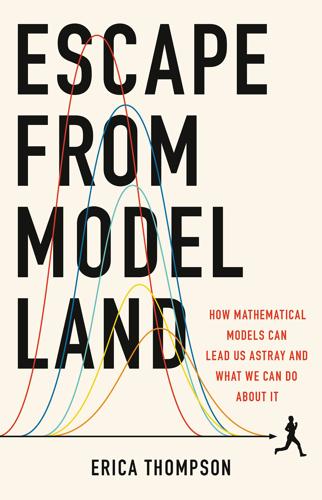
Escape From Model Land: How Mathematical Models Can Lead Us Astray and What We Can Do About It
by
Erica Thompson
Published 6 Dec 2022
Examples include forecasts of the unrestricted spread of Covid-19 in the spring of 2020, which motivated lockdown and social-distancing policies that reduced the spread and therefore ensured that the worst-case outcome did not happen. Counter-performative models of this kind tend to suffer from bad press and be accused of exaggeration or overhyping the problem. Widespread predictions that the date format used by mission-critical computing systems would cause devastating failures on the Y2K rollover from 31 December 1999 to 1 January 2000 were proved entirely wrong, at least in part because of the efforts of many system administrators to ensure that important systems were unaffected or patched. Counter-performativity is evidently much harder to identify in practice, because although we can create counterfactual scenarios, we can never be sure what would have happened.
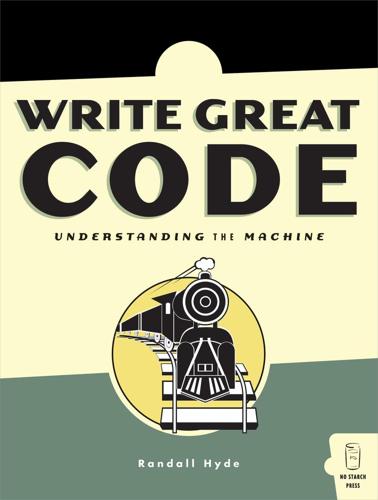
Write Great Code, Volume 1
by
Randall Hyde
Published 6 Aug 2012
program dateDemo; #include( "stdlib.hhf" ) static day: uns8; month: uns8; year: uns8; packedDate: word; begin dateDemo; stdout.put( "Enter the current month, day, and year: " ); stdin.get( month, day, year ); // Pack the data into the following bits: // // 15 14 13 12 11 10 9 8 7 6 5 4 3 2 1 0 // m m m m d d d d d y y y y y y y mov( 0, ax ); mov( ax, packedDate ); //Just in case there is an error. if( month > 12 ) then stdout.put( "Month value is too large", nl ); elseif( month = 0 ) then stdout.put( "Month value must be in the range 1..12", nl ); elseif( day > 31 ) then stdout.put( "Day value is too large", nl ); elseif( day = 0 ) then stdout.put( "Day value must be in the range 1..31", nl ); elseif( year > 99 ) then stdout.put( "Year value must be in the range 0..99", nl ); else mov( month, al ); shl( 5, ax ); or( day, al ); shl( 7, ax ); or( year, al ); mov( ax, packedDate ); endif; // Okay, display the packed value: stdout.put( "Packed data = $", packedDate, nl ); // Unpack the date: mov( packedDate, ax ); and( $7f, al ); // Retrieve the year value. mov( al, year ); mov( packedDate, ax ); // Retrieve the day value. shr( 7, ax ); and( %1_1111, al ); mov( al, day ); mov( packedDate, ax ); // Retrieve the month value. rol( 4, ax ); and( %1111, al ); mov( al, month ); stdout.put( "The date is ", month, "/", day, "/", year, nl ); end dateDemo; Keeping in mind the Y2K[9] problem, adopting a date format that only supports a two-digit year is rather foolish. So consider a better date format, shown in Figure 3-7. Figure 3-7. Long packed date format (32 bits) Because there are more bits in a 32-bit variable than are needed to hold the date, even accounting for years in the range 0–65,535, this format allots a full byte for the month and day fields.
…
rational representation of fractional, 2.11 Scaled Numeric Formats representable with bit strings, 2.4.2 Bit Strings scale, 10.4.1 Encoding Instruction Operands signed integer, 2.4.2 Bit Strings special floating-point, 4.4 Rounding subtracting binary, 3.1.1 Adding Binary Values unnormalized, 4.3 Normalization and Denormalized Values unsigned integer, 2.4.2 Bit Strings variable, 6.5.2 The Indirect Addressing Mode, 6.5.2 The Indirect Addressing Mode, 7.1.2 Pointers and Dynamic Memory Allocation, 7.2.1 Array Declarations, 8.2 Boolean Functions and Truth Tables, 8.5.3 Product of Maxterms Canonical Form, 11.9.6 The Heap Section and Dynamic Memory Allocation accessing pointer, 6.5.2 The Indirect Addressing Mode anonymous, 7.1.2 Pointers and Dynamic Memory Allocation, 11.9.6 The Heap Section and Dynamic Memory Allocation automatic, 7.2.1 Array Declarations OR truth table for two, 8.5.3 Product of Maxterms Canonical Form truth table format for function of three, 8.2 Boolean Functions and Truth Tables variable section, static, 11.9.1 Static and Dynamic Objects, Binding, and Lifetime variable-length instructions, 10.2.1 Choosing Opcode Length variant records, 6.3 Big Endian Versus Little Endian Organization very long instruction word (VLIW) architecture, 9.4.8 Register Renaming virtual address, 11.5 Virtual Memory, Protection, and Paging virtual memory, 11.1 The Memory Hierarchy, 11.4.7 Cache Use and Software, 11.5 Virtual Memory, Protection, and Paging, 12.18 RAM Disks and Semiconductor Disks protection and paging, 11.4.7 Cache Use and Software subsystem, swap storage for a, 12.18 RAM Disks and Semiconductor Disks Virtual Sound Canvas, 12.26.2 The Audio and MIDI File Formats virtual synthesizers, 12.26.2 The Audio and MIDI File Formats Visual Basic, 2.2.4 The Hexadecimal Numbering System, 3.3 Logical Operations on Binary Numbers and Bit Strings, 3.3 Logical Operations on Binary Numbers and Bit Strings bitwise operators, 3.3 Logical Operations on Binary Numbers and Bit Strings hexadecimal representation, 2.2.4 The Hexadecimal Numbering System VLIW (very long instruction word), 9.4.8 Register Renaming von Neumann machine, 6.1 The Basic System Components von Neumann, John, 6.1 The Basic System Components W wait state, 6.4.1 Memory Access and the System Clock, 6.4.2 Wait States, 6.4.3 Cache Memory and memory read operation, 6.4.2 Wait States average, 6.4.3 Cache Memory WAV files, 12.26.1 How Audio Interface Peripherals Produce Sound wave table synthesis, 12.26.1 How Audio Interface Peripherals Produce Sound wide buses, 9.4.2 Conditions That Hinder the Performance of the Prefetch Queue Wide SCSI, 12.19 SCSI Devices and Controllers Windows port access, 12.9 Interrupts and Polled I/O Windows run-time memory, 11.8 Writing Software That Is Cognizant of the Memory Hierarchy word, 2.4.2 Bit Strings, 2.4.2 Bit Strings, 6.2 Physical Organization of Memory, 6.2.1 8-Bit Data Buses, 6.2.2 16-Bit Data Buses, 6.2.2 16-Bit Data Buses, 6.2.5 Small Accesses on Non-80x86 Processors, 6.3 Big Endian Versus Little Endian Organization, 6.3 Big Endian Versus Little Endian Organization alternate byte layout, 6.2.5 Small Accesses on Non-80x86 Processors at arbitrary addresses, 6.2.1 8-Bit Data Buses at odd addresses, accessing, 6.2.2 16-Bit Data Buses composition of, 2.4.2 Bit Strings endian conversion, 6.3 Big Endian Versus Little Endian Organization in byte-addressable memory, 6.2 Physical Organization of Memory stored at odd addresses, 6.2.2 16-Bit Data Buses two bytes in, 2.4.2 Bit Strings working sets, 11.5 Virtual Memory, Protection, and Paging workstations, diskless, 12.15 Disk Drives WORM (write-once, read many), 12.15.6 CD-ROM, CD-R, CR-R/W, DVD, DVD-R, DVD-RAM, and DVD-R/W Drives write control line, 6.1.3 The Control Bus write cycle, 6.4.1 Memory Access and the System Clock write lifetime, 12.17 Flash Storage write operation, 6.2 Physical Organization of Memory, 6.4.1 Memory Access and the System Clock, 6.4.1 Memory Access and the System Clock memory, 6.2 Physical Organization of Memory on the bus, 6.4.1 Memory Access and the System Clock write policy, 11.4.5 Cache Line Replacement Policies, 11.4.5 Cache Line Replacement Policies, 11.4.6 Writing Data to Memory write-back cache, 11.4.5 Cache Line Replacement Policies write-through cache, 11.4.5 Cache Line Replacement Policies write-only output ports, 12.1 Connecting a CPU to the Outside World write-only ports, 12.1 Connecting a CPU to the Outside World writing to memory, 6.1.3 The Control Bus X x86-64 processors, AMD, 6.1.1.1 The Data Bus XOR, 3.2 Logical Operations on Bits, 3.2 Logical Operations on Bits, 3.2 Logical Operations on Bits operation, 3.2 Logical Operations on Bits truth table, 3.2 Logical Operations on Bits Y Y2K problem, 3.6 Bit Fields and Packed Data Y86, 10.2.4 Assigning Opcodes to Instructions, 10.3 The Y86 Hypothetical Processor, 10.3 The Y86 Hypothetical Processor, 10.3.1 Y86 Limitations, 10.3.2.2 Arithmetic and Logical Instructions, 10.3.2.2 Arithmetic and Logical Instructions, 10.3.2.2 Arithmetic and Logical Instructions, 10.3.2.2 Arithmetic and Logical Instructions, 10.3.2.2 Arithmetic and Logical Instructions, 10.3.2.2 Arithmetic and Logical Instructions, 10.3.2.2 Arithmetic and Logical Instructions, 10.3.2.2 Arithmetic and Logical Instructions, 10.3.2.2 Arithmetic and Logical Instructions, 10.3.2.2 Arithmetic and Logical Instructions, 10.3.2.2 Arithmetic and Logical Instructions, 10.3.2.3 Control Transfer Instructions, 10.3.2.3 Control Transfer Instructions, 10.3.2.3 Control Transfer Instructions, 10.3.2.3 Control Transfer Instructions, 10.3.2.3 Control Transfer Instructions, 10.3.2.3 Control Transfer Instructions, 10.3.2.3 Control Transfer Instructions, 10.3.3 Addressing Modes on the Y86, 10.3.3 Addressing Modes on the Y86, 10.3.4 Encoding Y86 Instructions, 10.3.4.1 Eight Generic Y86 Instructions, 10.3.4.2 Using the Special Expansion Opcode, 10.3.4.2 Using the Special Expansion Opcode, 10.3.5.1 The add Instruction, 10.3.5.1 The add Instruction, 10.3.5.1 The add Instruction, 10.3.5.1 The add Instruction, 10.3.5.1 The add Instruction, 10.3.5.3 The not Instruction, 10.3.6 Extending the Y86 Instruction Set conditional jumps, 10.3.4.2 Using the Special Expansion Opcode expansion opcodes, 10.3.4.1 Eight Generic Y86 Instructions hypothetical processor, 10.2.4 Assigning Opcodes to Instructions instruction set, 10.3.6 Extending the Y86 Instruction Set instructions, 10.3 The Y86 Hypothetical Processor, 10.3.1 Y86 Limitations, 10.3.2.2 Arithmetic and Logical Instructions, 10.3.2.2 Arithmetic and Logical Instructions, 10.3.2.2 Arithmetic and Logical Instructions, 10.3.2.2 Arithmetic and Logical Instructions, 10.3.2.2 Arithmetic and Logical Instructions, 10.3.2.2 Arithmetic and Logical Instructions, 10.3.2.2 Arithmetic and Logical Instructions, 10.3.2.2 Arithmetic and Logical Instructions, 10.3.2.2 Arithmetic and Logical Instructions, 10.3.2.2 Arithmetic and Logical Instructions, 10.3.2.2 Arithmetic and Logical Instructions, 10.3.2.3 Control Transfer Instructions, 10.3.2.3 Control Transfer Instructions, 10.3.2.3 Control Transfer Instructions, 10.3.2.3 Control Transfer Instructions, 10.3.4 Encoding Y86 Instructions, 10.3.5.1 The add Instruction, 10.3.5.1 The add Instruction, 10.3.5.1 The add Instruction, 10.3.5.1 The add Instruction, 10.3.5.1 The add Instruction, 10.3.5.3 The not Instruction cmp, 10.3.2.2 Arithmetic and Logical Instructions, 10.3.5.1 The add Instruction control transfer, 10.3.2.3 Control Transfer Instructions encoding, 10.3.4 Encoding Y86 Instructions get, 10.3.2.3 Control Transfer Instructions halt, 10.3.2.3 Control Transfer Instructions ja, 10.3.2.2 Arithmetic and Logical Instructions jae, 10.3.2.2 Arithmetic and Logical Instructions jb, 10.3.2.2 Arithmetic and Logical Instructions jbe, 10.3.2.2 Arithmetic and Logical Instructions je, 10.3.2.2 Arithmetic and Logical Instructions jmp, 10.3.2.2 Arithmetic and Logical Instructions jne, 10.3.2.2 Arithmetic and Logical Instructions jump, 10.3.5.3 The not Instruction mov, 10.3 The Y86 Hypothetical Processor, 10.3.5.1 The add Instruction not, 10.3.2.2 Arithmetic and Logical Instructions, 10.3.5.1 The add Instruction or, 10.3.2.2 Arithmetic and Logical Instructions, 10.3.5.1 The add Instruction put, 10.3.2.3 Control Transfer Instructions sub, 10.3.2.2 Arithmetic and Logical Instructions, 10.3.5.1 The add Instruction limitations, 10.3 The Y86 Hypothetical Processor modes, 10.3.2.3 Control Transfer Instructions, 10.3.2.3 Control Transfer Instructions, 10.3.2.3 Control Transfer Instructions, 10.3.3 Addressing Modes on the Y86, 10.3.3 Addressing Modes on the Y86 addressing modes, 10.3.3 Addressing Modes on the Y86 direct addressing mode, 10.3.2.3 Control Transfer Instructions indexed addressing, 10.3.2.3 Control Transfer Instructions indirect addressing, 10.3.2.3 Control Transfer Instructions Y86 hypothetical processor, 10.2.4 Assigning Opcodes to Instructions Z zero, 2.6 Some Useful Properties of Binary Numbers, 3.3 Logical Operations on Binary Numbers and Bit Strings, 3.3 Logical Operations on Binary Numbers and Bit Strings, 4.5 Special Floating-Point Values, 4.6 Floating-Point Exceptions, 9.3 Executing Instructions, Step by Step division by, 4.6 Floating-Point Exceptions extension, 2.6 Some Useful Properties of Binary Numbers flag, 9.3 Executing Instructions, Step by Step forcing bits to, 3.3 Logical Operations on Binary Numbers and Bit Strings testing bits for, 3.3 Logical Operations on Binary Numbers and Bit Strings zero-operand, 10.3.4.2 Using the Special Expansion Opcode, 10.3.4.2 Using the Special Expansion Opcode, 10.3.5.4 The Jump Instructions instruction encodings, 10.3.4.2 Using the Special Expansion Opcode instructions, 10.3.5.4 The Jump Instructions zero-terminated string, 5.2.1.1 Zero-Terminated Strings zero/not zero, using and testing for, 3.4.1 Testing Bits in a Bit String Using AND Zip drives, 12.15.3 RAID Systems Write Great Code, Volume 1 Randall Hyde Editor William Pollock Copyright © 2012 All rights reserved.
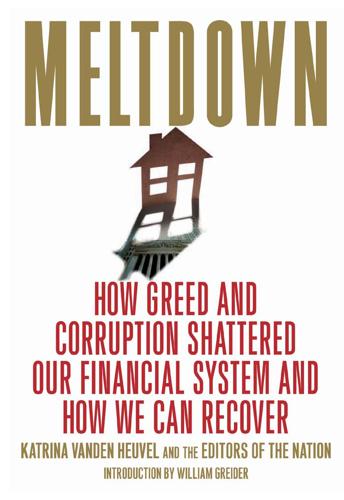
Meltdown: How Greed and Corruption Shattered Our Financial System and How We Can Recover
by
Katrina Vanden Heuvel
and
William Greider
Published 9 Jan 2009
The 1998 collapse of Long Term Capital Management was interpreted as threatening the safety of the financial system, so the Fed stepped in (what happened to the therapeutic effects of market discipline?). Likewise, the Fed reacted aggressively to the Russian debt crisis that year and the jitters over the “Y2K crisis” of 2000, and Greenspan provided quick liquidity or interest-rate cuts to calm other financial-market upsets. Greenspan did not formally try to deregulate the banking system, but simply declined to use the Fed’s regulatory powers to enforce regular order or discipline fraudulent behavior. In the name of greater efficiency he engineered legal approval for new megabanks like Citigroup even before Congress changed the law.

Nomadland: Surviving America in the Twenty-First Century
by
Jessica Bruder
Published 18 Sep 2017
On January 1, 2002, Ghost Dancer was parked outside a McDonald’s on Highway 41 in Vincennes, Indiana, in his home, a brown 1989 Ford F150 pickup. He’d heard that the changeover deadline for message boards was the end of the day. He worried: Were his new friends, already scattered across the country, about to lose their clubhouse on the internet? Not knowing what would happen was eating him up, like the buildup to Y2K writ small. Yet he had done nothing to prepare. When the solution came, it seemed obvious: Why not create a new gathering place before the old one went dark? To do this, Ghost Dancer couldn’t just stroll into McDonald’s with a laptop. For starters, he didn’t own a laptop, and WiFi hotspots wouldn’t be ubiquitous for another a few years.
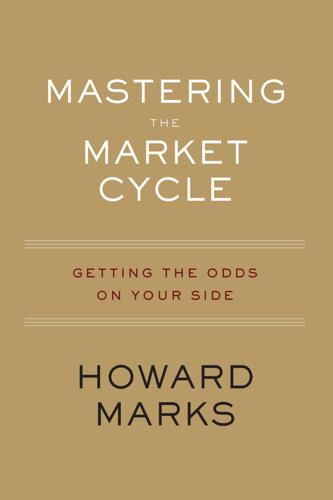
Mastering the Market Cycle: Getting the Odds on Your Side
by
Howard Marks
Published 30 Sep 2018
In retrospect it was easy . . . although it never seems as easy in real time. All you really had to do in 2005–07 was make the following general observations: the Fed had reduced the base rate of interest to very low levels in order to ward off the depressing effects of the tech bubble’s bursting, as well as concern over Y2K; because of the low yields available on Treasurys and high grade bonds, as well as the disenchantment with equities that had resulted from their three-year decline in 2000–02, investors were eager to put money into alternative instruments; investors had shrugged off the pain of the collapse of the tech bubble in 2000 and the telecom meltdown and corporate scandals of 2001–02; thus little risk aversion was present (especially in areas other than equities, which remained out of favor), rendering investors generally eager for investments in exotic, structured and synthetic instruments; and as a result of all the above, the markets were wide open for the issuance of low-quality debt, poorly structured instruments and untested alternatives.
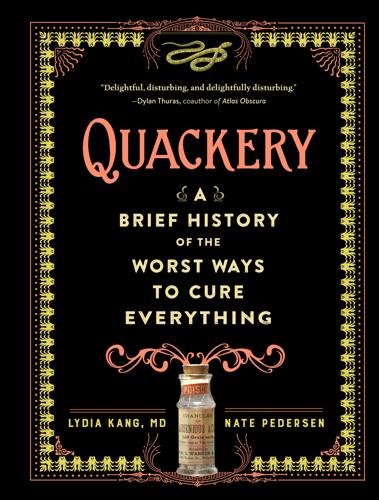
Quackery: A Brief History of the Worst Ways to Cure Everything
by
Lydia Kang
and
Nate Pedersen
Published 16 Oct 2017
Like silver lovers of yore, some proponents today consume so much silver to prevent infections that it’s turned their skin blue (a condition known as argyria). Stan Jones, a Libertarian politician who unsuccessfully ran for Senate and Montana governor twice between 2000 and 2006, had developed a severe case of argyria after drinking large amounts of colloidal silver to prepare for Y2K, thinking there would be an antibiotic shortage. Speaking to reporters about his gray-blue skin, he said, “People ask me if it’s permanent and if I’m dead. I tell them I’m practicing for Halloween.” Or a Smurf parade, perhaps. A true blue Libertarian. The Modern Gilded Age Nowadays, people would be surprised to hear that gold actually does have a legitimate place in the medical toolbox.
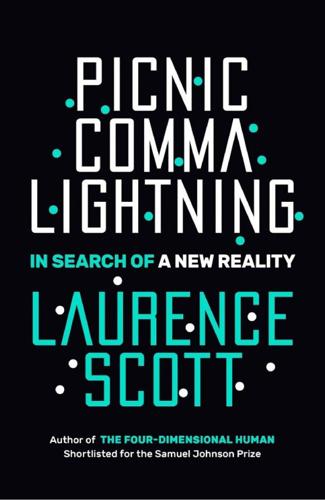
Picnic Comma Lightning: In Search of a New Reality
by
Laurence Scott
Published 11 Jul 2018
This caricature mockingly suggests that there is no real sentience at the helm of British political life, just a broken machine caught in a faulty loop. In America, Trump’s rise to power was for many a sublime event. The Trump presidency was predicted by an episode of The Simpsons from the turn of the millennium, as if the true Y2K bug, all along, was a terrible idea with a long incubation phase. So many of our largest anxieties have this retrospective, fictionalised quality to them, a dated twentieth-century kitschness that can make them feel somehow unbelievable. In circulation are Cold War pictures of Fifties children crouched under school desks.
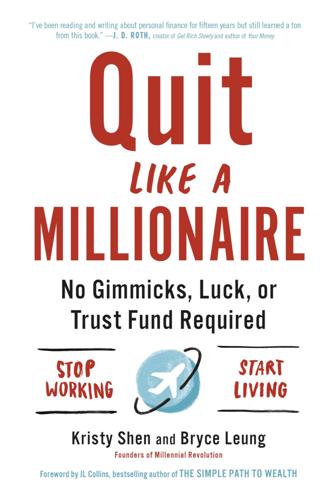
Quit Like a Millionaire: No Gimmicks, Luck, or Trust Fund Required
by
Kristy Shen
and
Bryce Leung
Published 8 Jul 2019
I couldn’t risk graduating without being able to find a job. My degree had to help me become independent as quickly as possible. I didn’t want to end up like my mom. WHY I DIDN’T FOLLOW MY PASSION The year was 2000. The Backstreet Boys were on top of the charts, the world hadn’t blown up from Y2K, and for most people, a degree was just a means to an end—getting a job. In fact, even though it seems like it’s been around forever, the phrase “follow your passion” is relatively new. According to Benjamin Todd, CEO and founder of 80000Hours.org, the phrase spiked around 2005, when Steve Jobs gave a commencement speech at Stanford, in which he said, “There’s no reason not to follow your heart.”1 Nowadays, we hear that advice over and over again, drawing young graduates like moths to a flame.

Restarting the Future: How to Fix the Intangible Economy
by
Jonathan Haskel
and
Stian Westlake
Published 4 Apr 2022
At first, the shortcuts, architectural compromises, and workarounds can be lived with, but over time their costs increase, and eventually the system fails if the debt is not paid down. Technical debt rarely intrudes into the public consciousness—perhaps the most famous example is the Millennium or Y2K Bug, which cost hundreds of billions of dollars to fix—but it lurks in countless pieces of software on which we all rely daily. The growing importance of intangibles has created a bigger and more pervasive version of technical debt that we call institutional debt. Paying Down Our Institutional Debt In the second half of this book, we look at four areas where our institutional debt is greatest, holding back future intangible investment and exacerbating the problematic effects of the intangible investment that already takes place.
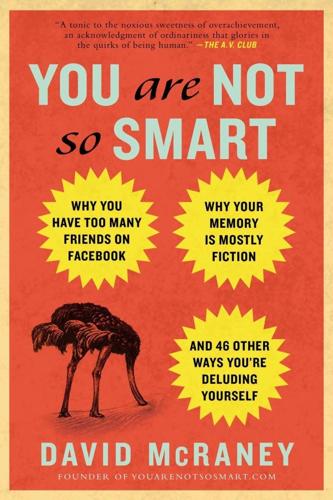
You Are Not So Smart
by
David McRaney
Published 20 Sep 2011
Global climate change, peak oil, obesity epidemics, and stock market crashes are good examples of larger, more complex events in which people fail to act because it is difficult to imagine just how abnormal life could become if the predictions are true. Regular media over-hyping and panic-building over issues like Y2K, swine flu, SARS, and the like help fuel normalcy bias on a global scale. Pundits on both sides of politics warn of crises that can be averted only by voting one way or the other. With so much crying wolf, it can be difficult to determine in the frenzied information landscape when to be alarmed, when it really is not a drill.
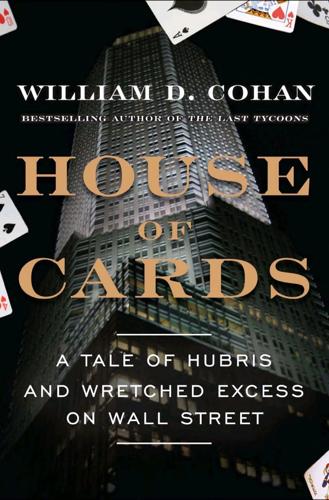
House of Cards: A Tale of Hubris and Wretched Excess on Wall Street
by
William D. Cohan
Published 15 Nov 2009
And assuming Cayne and the other top executives could make progress in building the firm's investment banking business (still relatively tiny), its presence in Europe (still negligible at best), and its asset management business (with about $15 billion of assets under management, a peanut compared to around $600 billion of assets under management at Merrill Lynch), there appeared to be a fair amount of upside potential in the earning power of the firm, assuming markets stayed favorable and the management could execute. That potential helped explain Spector's decision to convert most of his compensation into the firm's stock. And then in early 2000—just after everyone recovered from the specter of Y2K damaging Wall Street computers—the game of consolidation on Wall Street took a quantum leap forward. At first the deals were relatively small. In September 1999, Chase Manhattan Bank bought Hambrecht & Quist, a technology investment bank in San Francisco, for $1.3 billion as a way to try to participate in the Internet underwriting boom.
…
But, Friedman said, there were few recommendations to increase revenues. “They come in and all they do is cut costs,” he said, “and we did almost nothing on the revenue side. They cut the IT budget by hundreds of millions of dollars, some of which was needed, because it had swelled after the whole fear over Y2K. We fired a thousand people, and at the same time we were building this beautiful building. We cut a lot of costs, which just meant that when you cut your IT investment, you're mortgaging the future, which we did. We cut hundreds of clerks. We took nothing out of the executive committee compensation pool.
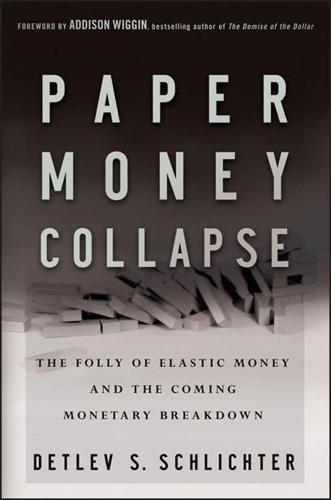
Paper Money Collapse: The Folly of Elastic Money and the Coming Monetary Breakdown
by
Detlev S. Schlichter
Published 21 Sep 2011
Since the late 1990s the Fed has on various occasions successfully extended the credit boom: in 1998, when the collapse of the Long Term Capital Management hedge fund and the default of Russia threatened to kick off a wave of international deleveraging; toward the end of 1999, when the Fed injected substantial amounts of money prohibitively out of concern about potential computer problems related to Y2K; between 2001 and 2004, after the Enron and WorldCom corporate failures and the bursting of the NASDAQ bubble, when the Fed left interest rates at 1 percent for three years. As one should expect, and as is now abundantly clear, the credit excesses and mispricing of assets have reached phenomenal proportions.
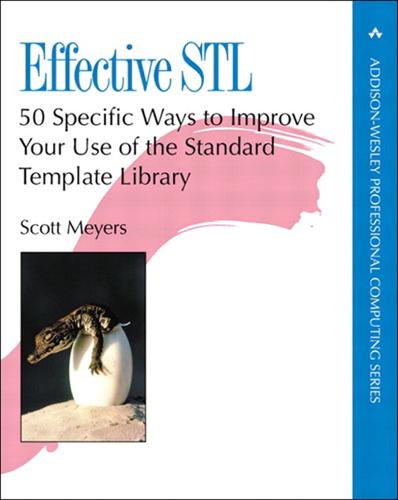
Effective STL: 50 Specific Ways to Improve Your Use of the Standard Template Library
by
Scott Meyers
Published 16 Jun 2001
If speed is a concern, you should write the function object to avoid repeated calls of expensive facet operations. Correct case-insensitive comparison takes a fair amount of machinery, but you only have to write it once. You probably don’t want to think about locales; most people don’t. (Who wanted to think about Y2K bugs in 1990?) You stand a better chance of being able to ignore locales if you get locale-dependent code right, though, than if you write code that glosses over the dependencies. Appendix B. Remarks on Microsoft’s STL Platforms In the opening pages of this book, I introduced the term STL platform to refer to the combination of a particular compiler and a particular implementation of the Standard Template Library.
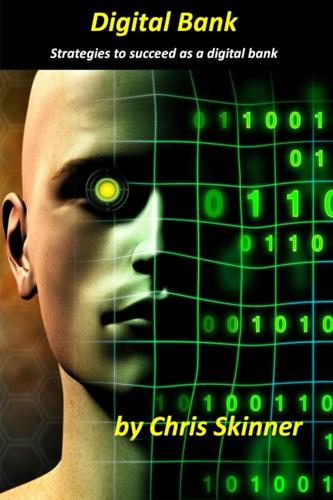
Digital Bank: Strategies for Launching or Becoming a Digital Bank
by
Chris Skinner
Published 27 Aug 2013
The systems were then added to layer by layer, as new requirements came along. ATMs were added, call centres and then internet banking, and the core systems just about kept up. This process is less true in the investment world - where many systems were replaced lock, stock and barrel for that old bugbear Y2K - but the retail bank world let their core systems become so ingrained and embedded that changing, replacing or removing them became sacrosanct. Then the world moved on, and technology became a rapid fire world of consumer focused technologies. Add to this the regulatory regime change, which would force banks to respond more and more rapidly to new requirements, and the old technologies could not keep up.

The Age of Stagnation: Why Perpetual Growth Is Unattainable and the Global Economy Is in Peril
by
Satyajit Das
Published 9 Feb 2016
Emerging nations combined their cheap labor and local or imported resources with foreign technology or capital to manufacture and export goods and services to developed countries. Improvements in technology, telecommunications, and transport allowed cheaper emerging nations to compete with advanced economies. One-off events were important. The Y2K software problems fueled the development of India's software industry. The new economy was centered on China, now the world's factory, exporting around 50 percent of its output. It imported resources and parts that were then assembled or processed and shipped out again. Smaller emerging economies, especially in Asia, became integrated into new Sino-centric global supply chains.
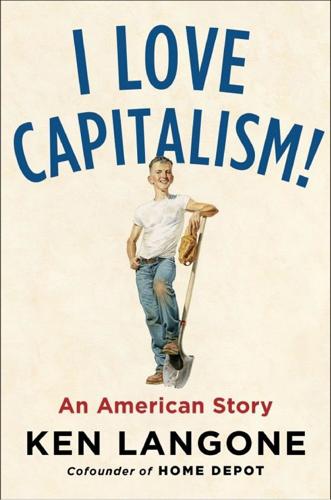
I Love Capitalism!: An American Story
by
Ken Langone
Published 14 May 2018
Again he went the extra mile—visiting institutional investors, visiting the head of Merrill Lynch—to pitch for order flow and the transparency of buying and selling shares on the floor of the exchange versus over the counter. And the market share held, but that wasn’t Grasso’s only challenge that year. In 1999, as we were about to flip the calendar to the new millennium, there was great angst on the exchange about Y2K. What would happen if someplace in our behemoth computer system we forgot to ratchet 1999 over to 2000? We spent a billion dollars on crash-prevention hardware that year; we paid $80 million in sales tax on the hardware we bought! We had backup systems for backup systems for backup systems. And then, when the clock ticked over to 1/1/2000 . . . nothing happened.
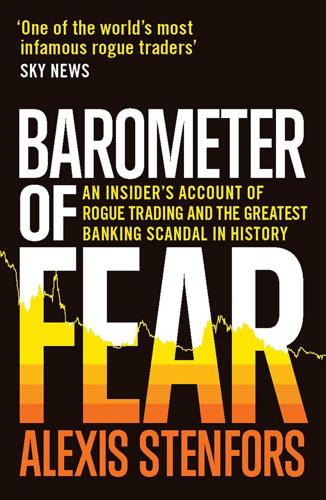
Barometer of Fear: An Insider's Account of Rogue Trading and the Greatest Banking Scandal in History
by
Alexis Stenfors
Published 14 May 2017
Considering that the Federal Reserve often tended to cut or raise interest rates in 25 basis points at a time, and rarely changed them more than a few times per year, 86 basis points represented a remarkably large move. Banks had spent billions on system upgrades and contingency plans relating to the Y2K software problem. What would happen if we arrived in the office after the New Year’s celebrations to find that the date was 1 January 1900, rather than 1 January 2000? A collapse of the banking system and a return to the Stone Age, it was thought. Therefore, banks borrowed money as a precaution and LIBOR shot up.

JPod
by
Douglas Coupland
Published 30 Apr 2007
Brain freeze Milk products Nestle Mineral-deficient baby formula Switzerland Corporations Globalization Milkshakes everywhere Even India Dairy products Cows Confusion Ancestors Apu from the Kwik-E-Mart Donuts The Fox Network Five thousand channels Heather Locklear Healthy, shimmering hair Computer-generated hair Pixar cartoon frames in a render farm First weekend box office DVD sales Home entertainment systems Karaoke Fear of Karaoke Abandoning the party Driving Shitty old car Rain Car commercials Money Never enough Coupland's business thing with Kam Rage Raging Bull 1970s films Al Pacino Eyes like Woody Woodpecker Cartoons of the 1940s Ultraviolence A Clockwork Orange Heaven 17 Pop hits of the 1980s Pet Shop Boys London Plagues Ebola Y2K Hype Lies . . . and so on. Kwantlen College Learning Annex Course 3072-A Assignment: Discuss Your Job with Somebody Who Probably Doesn't Care about It "Flog the Dead Donkey" by Kaitlin Anna Boyd Joyce Jim Jarlewski is my boyfriend's father. He's a fifty something former financial consultant turned agricultural entrepreneur, a ballroom dance legend and a movie acting extra.
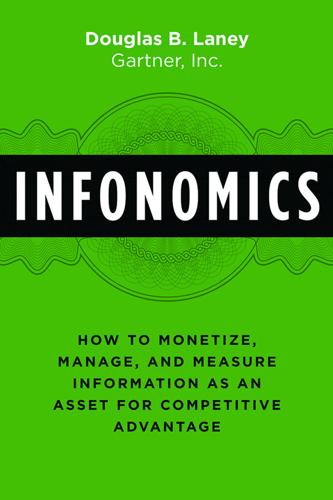
Infonomics: How to Monetize, Manage, and Measure Information as an Asset for Competitive Advantage
by
Douglas B. Laney
Published 4 Sep 2017
While many clients were lamenting and many vendors were seizing the opportunity of these fast-growing data stores, I also realized that something else was going on. Sea changes in the speed at which data was flowing mainly due to electronic commerce—along with the increasing breadth of data sources, structures, and formats due to the Y2K-centered ERP application boom—were as or more challenging to data management teams than was the increasing quantity of data. I defined these three-dimensional challenges as a confluence of a rising volume of data, increasing velocity of data, and widening variety of data.7 These “three Vs,” as they’re known, formed the basis for understanding and defining what today is known as “Big Data.”8 While most information management professionals and nearly all vendors obsess over the size (volume) of information, this represents only one facet of magnitude (i.e., bigness).

Possible Minds: Twenty-Five Ways of Looking at AI
by
John Brockman
Published 19 Feb 2019
In the debate about AI risk, he argues against prophecies of doom and gloom, noting that they spring from the worst of our psychological biases—exemplified particularly by media reports: “Disaster scenarios are cheap to play out in the probability-free zone of our imaginations, and they can always find a worried, technophobic, or morbidly fascinated audience.” Hence, over the centuries: Pandora, Faust, the Sorcerer’s Apprentice, Frankenstein, the population bomb, resource depletion, HAL, suitcase nukes, the Y2K bug, and engulfment by nanotechnological grey goo. “A characteristic of AI dystopias,” he points out, “is that they project a parochial alpha-male psychology onto the concept of intelligence. . . . History does turn up the occasional megalomaniacal despot or psychopathic serial killer, but these are products of a history of natural selection shaping testosterone-sensitive circuits in a certain species of primate, not an inevitable feature of intelligent systems.”

Hiding in Plain Sight: The Invention of Donald Trump and the Erosion of America
by
Sarah Kendzior
Published 6 Apr 2020
This was the era before smartphones and we hadn’t turned on the TV, so we spent the early morning oblivious to the outside world. We were driving on a country road when we turned on the radio and heard Dan Rather saying that the World Trade Center had collapsed. Our first thought was that this was a delayed Y2K joke that had gotten on the air by mistake. Within minutes we knew the news report was no lapsed parody. We could hear the anguish in Rather’s voice as he announced the estimated casualty count to be in the tens of thousands. I remember screaming, “It’s real, it’s real, turn around!” and crying as we raced back to the house, where we spent all day watching the one channel the TV could pick up while calling our friends to see if they were alive.
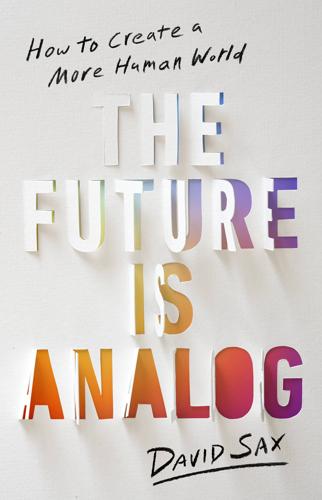
The Future Is Analog: How to Create a More Human World
by
David Sax
Published 15 Jan 2022
Creating trust was work that happened one conversation at a time, neighbor to neighbor, often over the course of years. Steve (not his real name) is one example of this. He grew up in a very conservative Christian family in Missouri, led by a father who subscribed to every conspiracy theory about the end of the world, from Y2K and martial law to solar flares and comet strikes. The family moved to a farm, preserved food, stockpiled guns, and tested Steve and his siblings on all sorts of doomsday scenarios. A lot of this was fed by fringe books, magazines, and conservative AM radio, but once Steve’s father got a smartphone, he truly plunged into the abyss.
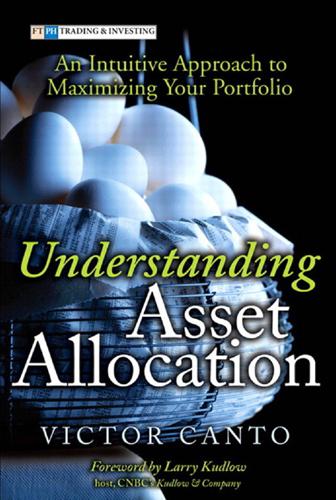
Understanding Asset Allocation: An Intuitive Approach to Maximizing Your Portfolio
by
Victor A. Canto
Published 2 Jan 2005
The Clinton administration tax hikes were not as large as the president had hoped for, but if you weigh-in the threat of Hillary Clinton’s massive health-care plan, the small-cap effect becomes more understandable. In 1995, the Republicans took over Congress, and the gridlock that followed was good for the market as far as taxes and regulations were concerned. The small-cap effect would, for a time, expire. Then, in 1999, Federal Reserve Chairman Alan Greenspan began to worry about the ersatz Year 2000 (Y2K) 238 UNDERSTANDING ASSET ALLOCATION effect. He proceeded to flood the financial system with cash, only to abruptly pull the liquidity out of the system in 2000. Credit in this environment became tougher, and with the advent of the accounting scandals, the regulatory burden increased once again.
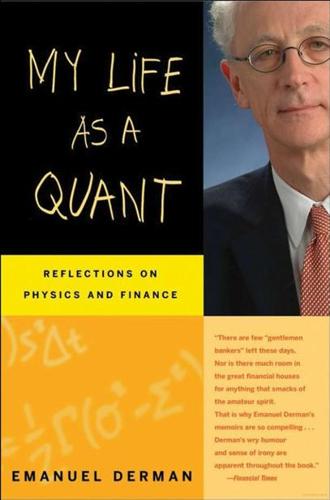
My Life as a Quant: Reflections on Physics and Finance
by
Emanuel Derman
Published 1 Jan 2004
Programs were therefore error-prone as well as hard for humans to understand and modify-implicitly, they were written for the computers that would mechanically execute their commands. Hard to create, programs tended to have surprisingly long subsequent lifetimes during which they required expensive maintenance, modification, and enhancement. This was the set of circumstances that caused the anxiety behind Y2K. What are you doing when you program? You are trying to use a language to specify an imagined world and its details as accurately as possible. You are trying to create this world on a machine that can understand and execute only simple commands. You do this solely by writing precise instructions, often many hundreds of thousands of lines long.Your sequence of instructions must be executed without ambiguity, by an uncomprehending automaton, the computer, and yet, in parallel, must be read, comprehended, remembered and modified by you and other programmers.
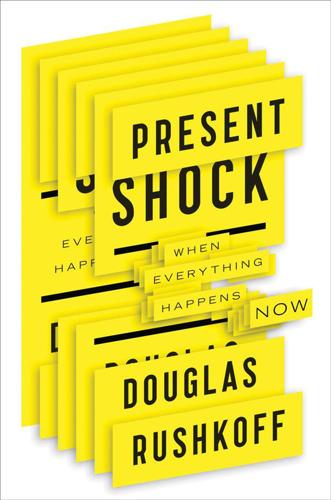
Present Shock: When Everything Happens Now
by
Douglas Rushkoff
Published 21 Mar 2013
The roaring, net-amplified, long boom of the 1990s seemed defined by this leaning forward, this ache toward conclusion, this push toward 2000 and the ultimate calendar flip into the next millennium. Though technically still in the twentieth century, the year 2000 was a good enough marker to stand in for millennial transformation. So we anticipated the change like messianic cultists preparing for the second coming. For most of us, it took the less religious form of anticipating a Y2K computer bug where systems that had always registered years with just two digits would prove incapable of rolling over to 00. Elevators would stop, planes would fall out of the sky, nuclear plants would cease to cool their reactor cores, and the world as we know it would end. Of course, if the changeover didn’t get us, the terrorists would.
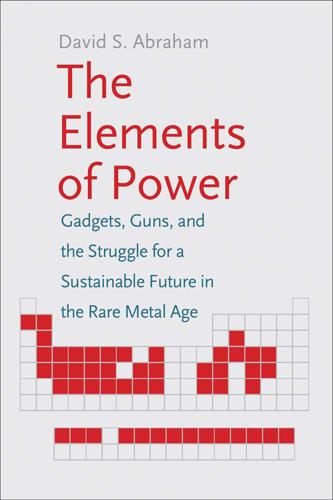
The Elements of Power: Gadgets, Guns, and the Struggle for a Sustainable Future in the Rare Metal Age
by
David S. Abraham
Published 27 Oct 2015
That is a lifetime ago for the tech field where many of these metals go. It’s hard to imagine that the executives who were producing material for 2015 had any concept of the smartphone or many of the products their materials are used in. At the time, they were focused on the potential fallout from the Y2K bug. Today, we are asking for tremendous technological foresight of our mining executives, especially those of junior mining companies, because they identify and evaluate new mineral deposits. They are the ones who should know where their materials will be sold in fifteen years.26 The challenge is that junior mining companies are like biotech start-ups; most, even those with the most promising projects, will fail.
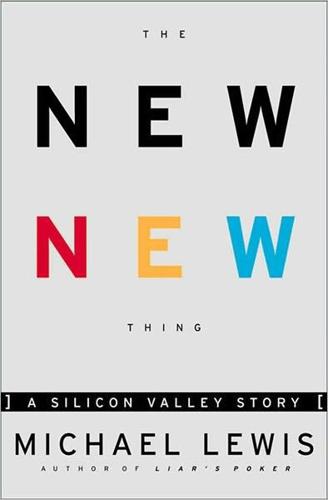
The New New Thing: A Silicon Valley Story
by
Michael Lewis
Published 29 Sep 1999
The owner of the New Zealand boat, an Atlanta real estate man, figured he could suffer the inconvenience of waiting until low tide to pass through the canal for a year. After the canal became Panamanian in 2000, he could pass through anytime he pleased. Standing on one end of what was now clearly only temporarily the world's longest mast, Clark thought about his own private Y2K problem. He asked Wolter what he thought about adding an extension to the mast. Wolter muttered that he did not think it was a good idea. Finally, Clark turned to Allan, his captain, and said, "I think we should challenge this Atlanta guy to a sailboat race." Clark's life always had a topsy-turvy quality, but from the moment Netscape went public and he became Silicon Valley's newest billionaire it grew more reversed than ever.
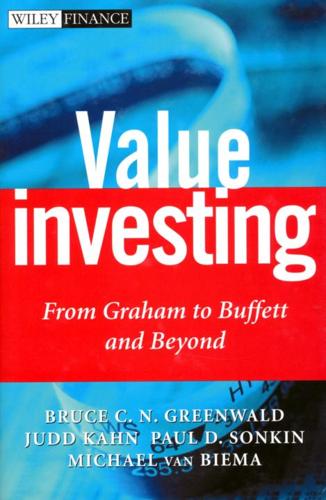
Value Investing: From Graham to Buffett and Beyond
by
Bruce C. N. Greenwald
,
Judd Kahn
,
Paul D. Sonkin
and
Michael van Biema
Published 26 Jan 2004
Sonkin redid his intrinsic value calculation, factoring in the business bought from Intel and the cash and shares paid. Expecting the stock to rise in price once the news was digested, Sonkin bought some at the open at $4.63. By noon it was up to $5.00. He left the office for an appointment, and when he returned around 1:30 P.M. the stock had climbed to $9. At first he thought it was a Y2K bug arriving a day or two early, but a call to the trader disabused him of that thought. The $9 was real. Mr. Market was hungry again, and he had eaten up most of the margin of safety. So in the last two days of the year, Sonkin sold 60 percent of his position, at an average price of around $9.00. Table 16.3 Centennial Technologies Intrinsic Value with Intel Acquisition This story has several more legs.
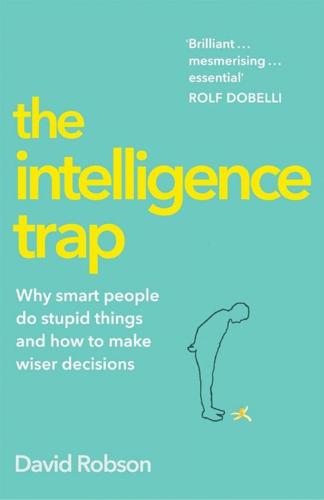
The Intelligence Trap: Revolutionise Your Thinking and Make Wiser Decisions
by
David Robson
Published 7 Mar 2019
Soon Ang, a professor of management at the Nanyang Technological University in Singapore, has pioneered much of this work. In the late 1990s, she was acting as a consultant to several multinational companies who asked her to pull together team of programmers, from many different countries, to help them cope with the ‘Y2K bug’. The programmers were undeniably intelligent and experienced, but Ang observed that they were disappointingly ineffective at working together: she found that Indian and Filipino programmers would appear to agree on a solution to a problem, for instance, only for the members to then implement it in different and incompatible ways.

Falter: Has the Human Game Begun to Play Itself Out?
by
Bill McKibben
Published 15 Apr 2019
“It is hard to overestimate what it will be able to do, and impossible to know what it will think,” James Barrat writes in a book with the telling title Our Final Invention. “It does not have to hate us before choosing to use our molecules for a purpose other than keeping us alive.” As he points out, we don’t particularly hate field mice, but every hour of every day we plow under millions of their dens to make sure we have supper.27 This isn’t like, say, Y2K, where grizzled old programmers could emerge out of their retirement communities to save the day with some code. “If I tried to pull the plug on it, it’s smart enough that it’s figured out a way of stopping me,” Anders Sandberg said of his paper clip AI. “Because if I pull the plug, there will be fewer paper clips in the world and that’s bad.”28 You’ll be pleased to know that not everyone is worried.
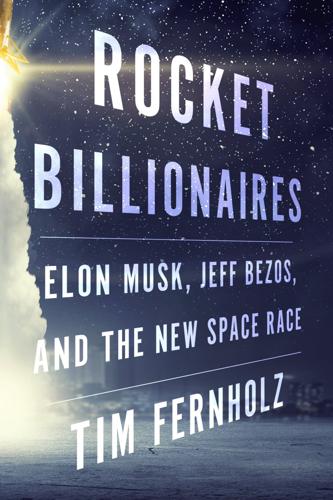
Rocket Billionaires: Elon Musk, Jeff Bezos, and the New Space Race
by
Tim Fernholz
Published 20 Mar 2018
I’d do that stuff on the side, then go into work and say, ‘Hey, look what I’ve done. Can I get some [R&D] money?’ I found it was easier to build it in my garage and just keep going than to go and spend the time to try and lobby and get the funds internally. I may as well just do it myself.” Garvey left Boeing in 2000—“after Y2K,” as he put it—and set up a small space consultancy to keep building small rockets, seeking out contracts and advisory jobs. His timing was good, because Silicon Valley had finally come calling. One of the first jobs he landed was with a company called BlastOff, set up by a couple of wealthy Silicon Valley investors named Bill and Larry Gross.
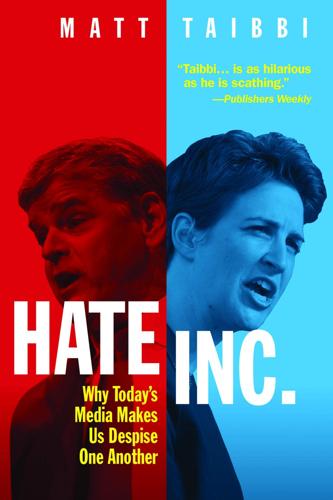
Hate Inc.: Why Today’s Media Makes Us Despise One Another
by
Matt Taibbi
Published 7 Oct 2019
It would be impossible to calculate how many unnecessary years in jail have been handed out to dealers and users thanks to blunt moral-panic stunts like George H. W. Bush holding up a bag of crack supposedly bought outside the White House (the offender had actually been lured from across town). We’ve had terrors over Y2K, SARS, Bioterror/Anthrax, day care molesters, and countless other devils. There was even a hoax scare over teens using a Zambian hallucinogen called jenkem—brewed from fermented human waste—that turned out not to have any confirmed American cases. But it made for good copy. “Jenkem: Stay Alert or Call it a Hoax?”
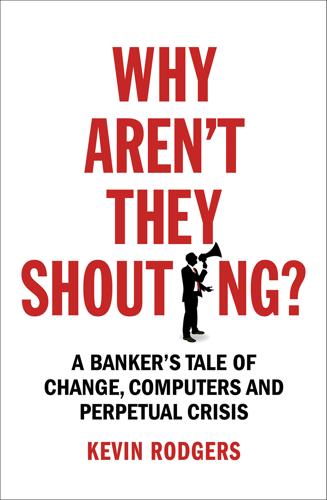
Why Aren't They Shouting?: A Banker’s Tale of Change, Computers and Perpetual Crisis
by
Kevin Rodgers
Published 13 Jul 2016
One small example that we all could identify quickly: all the screens that Autobahn provided to customers to allow them to click and deal showed rates to four decimal places with the last two, the pips, in larger font than the others. But much more subtle manifestations of the four-digit assumption undoubtedly lay hidden in the millions of lines of code that made up our systems. We’d have to find them all. ‘Wonderful,’ said Mark the IT guru laconically. ‘It’s like Barclays have just given us our very own Y2K bug.’ We concluded the meeting by giving Mark’s team an urgent task to figure out what would need to be done to decimalise our systems; then we all braced ourselves to see what impact Barclays’ move would have. The cause of our discomfort was a forceful Australian named Ivan, the head of FX at Barclays.
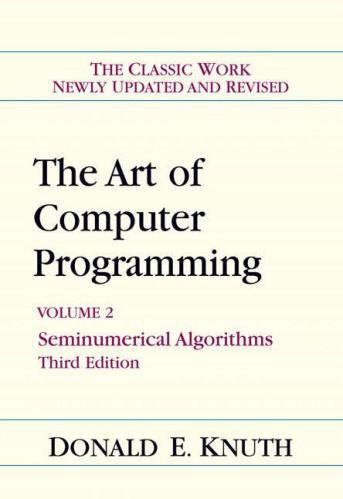
The Art of Computer Programming
by
Donald Ervin Knuth
Published 15 Jan 2001
In an infinite field we save a factor of logiV. [This result is due to Bini and Schonhage, 1979.] 64. We have Efc(/fc0)+E^fc 9jAu)) = u2Ei<lj,fc<3 XHV'jkZkz+O^(u3), when fk(u) = + U2Xk2)(V2k + U2yik)Zkk + (Zfcl + U2Xk3)V3k((l + U)zkk - U(zkl + Zk2 + Zk2,)) ~ 2k + V3k)(zki + zk2 + zk3) and 9jfc(u) = (xki + u2Xj2)(y2k - uyij)(zkj - uzjk) + + u2Xj3)(y2k + uyij)zkj- [The best upper bound known for rank(TC, 3,3)) is 23; see the answer to exercise 12. The border rank of TB, 2, 2) remains unknown.] 65. The polynomial in the hint is u2 YL?=\ YJj^i^Vj^j + XijYijZ) + O(u3). Let Xij and Yij be indeterminates for 1 < i < m and 1 < j' < n; also set Xin = Ymj = 0, Xm:/ = — EI^T1 -^*i' ^iTl = ~~ YT=l Yij- Thus with ran + 1 multiplications of polynomials in the indeterminates we can compute xiyj for each i and j and also EI^i E^i XijYij = Y.TJilYTjZlxi3Yi3- [SICOMP 10 A981), 434-455.
…
times the probability that max(Vi,..., Vk) < h(X), namely h(X)k/k\; hence the probability that K = k is h{X)k-x/{k - 1)! - h{X)k/kl, and the probability that K is odd is ( Therefore we reject X and try again if K is even; we accept X as a random variable with density B0) if K is odd. We usually won't have to generate many V's in order to determine K, since the average value of K (given X) is Y2k>o Fv(K > fe) = Efc>o h{X)k/k\ = eh(X) < e. Forsythe realized some years later that this approach leads to an efficient method for calculating normal deviates, without the need for any auxiliary routines to calculate square roots or logarithms as in Algorithms P and M. His procedure, with an improved choice of intervals [a.. b) due to J.
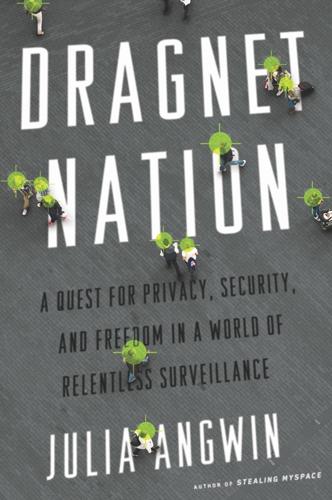
Dragnet Nation: A Quest for Privacy, Security, and Freedom in a World of Relentless Surveillance
by
Julia Angwin
Published 25 Feb 2014
Some of that is good advice—backing up files and being wary of public Wi-Fi networks, in particular—but most people who aren’t computer professionals have a hard time sorting out the necessary from the unnecessary. One reason for all the confusion: the computer security industry has to get us really scared in order to convince us to pay for their products. It is in their interest to exaggerate the threats. Remember the Y2K worldwide computer meltdown that didn’t occur? An interesting data point: most of the computer security professionals I know do not rely on antivirus software. Instead, they keep their software up to date, and they are choosy about what software they install. Most important, they do not click on links or open documents if they are not entirely sure of their origin.
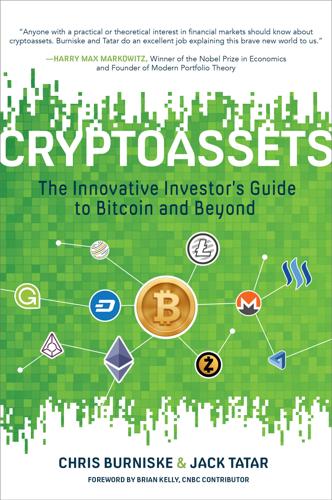
Cryptoassets: The Innovative Investor's Guide to Bitcoin and Beyond: The Innovative Investor's Guide to Bitcoin and Beyond
by
Chris Burniske
and
Jack Tatar
Published 19 Oct 2017
These private systems came about after Bitcoin did, when enterprises and businesses realized they liked the utility of Bitcoin’s blockchain, but weren’t comfortable or legally allowed to be as open with the information propagated among public entities. These private blockchains have thus far been most widely embraced by the financial services as a means to update IT architecture that hasn’t had a major facelift since preparation for the Y2K bug. Within financial services, these private blockchains are largely solutions by incumbents in a fight to remain incumbents. While there is merit to many of these solutions, some claim the greatest revolution has been getting large and secretive entities to work together, sharing information and best practices, which will ultimately lower the cost of services to the end consumer.5 We believe that over time the implementation of private blockchains will erode the position held by centralized powerhouses because of the tendency toward open networks.
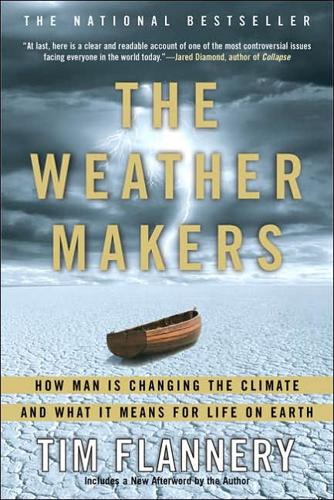
The Weather Makers: How Man Is Changing the Climate and What It Means for Life on Earth
by
Tim Flannery
Published 10 Jan 2001
In my own country of Australia rising salt was threatening to destroy the most fertile soils, while overgrazing, degradation of waterways and the logging of forests all threatened precious ecosystems and biodiversity. To me these were the truly pressing issues. Whether we are crossing the road or paying the bills, it is the big, fastmoving things that command our attention. But seemingly large issues sometimes turn out to be a sideshow. The Y2K bug is one such example. Around the globe many governments and companies spent billions to prepare themselves against the threat, while others spent nothing; and yet 1999 gave way to 2000 with barely a hiccough, let alone an apocalypse. A sceptical eye is our greatest asset in dealing with this type of ‘problem’.

The AI Economy: Work, Wealth and Welfare in the Robot Age
by
Roger Bootle
Published 4 Sep 2019
Economic contraction is pretty much inevitable, and it will get so serious that something will have to be done.3 Similar views have been expressed by leading tech entrepreneurs, including Bill Gates, the founder of Microsoft, and distinguished scientists such as the late Sir Stephen Hawking, the discoverer of black holes and much else besides.4 Yet some cynics, admittedly mostly from outside the ranks of the AI experts, seem to think that this is all overhyped and that in essence the economic and social changes that we face as a result of the spread of robots and AI will either be nugatory, or a continuation of the sort of thing that we have experienced pretty much continuously since the Industrial Revolution and, as such, will be profoundly beneficial to humanity. Some see the specters unleashed by fetid speculation about the implications of AI as reminiscent of the gigantic fuss about the Y2K computer bug which, in the end, came to naught. Five visions of the future So, to put it mildly, this is a far from settled issue. The conflicting views about our fate in a robot-and AI-dominated future can be pithily summarized as follows: • Nothing different. • Radically bad. • Radically good
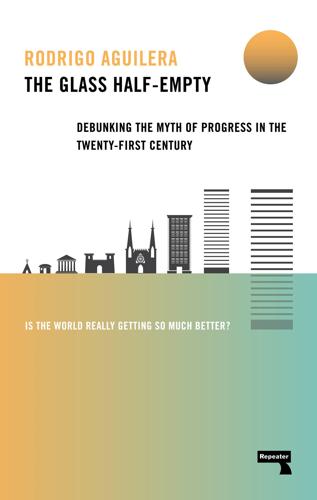
The Glass Half-Empty: Debunking the Myth of Progress in the Twenty-First Century
by
Rodrigo Aguilera
Published 10 Mar 2020
Nothing exemplified the supreme victory of Western ideals in almost all spheres of life better than US political scientist Francis Fukuyama’s seminal 1989 essay “The End of History”, best known for its bold forecast about the future of humanity: What we may be witnessing is not just the end of the Cold War, or the passing of a particular period of post-war history, but the end of history as such … That is, the end point of mankind’s ideological evolution and the universalization of Western liberal democracy as the final form of human government.5 It is certainly true that doomsday predictions like Malthusian overpopulation and Y2K have a terrible track record. But unfortunately for Fukuyama, so do utopian ones. Relief over the collapse of Moscow’s “Evil Empire” soon gave way to concerns over Washington’s new Pax Americana and the unchallenged geopolitical might of the world’s sole remaining superpower. Even as the threat of nuclear war receded, the proliferation of rogue states, regional conflicts, and other menaces to global security like terrorism didn’t lend much weight to the argument that the world was now a safer place.
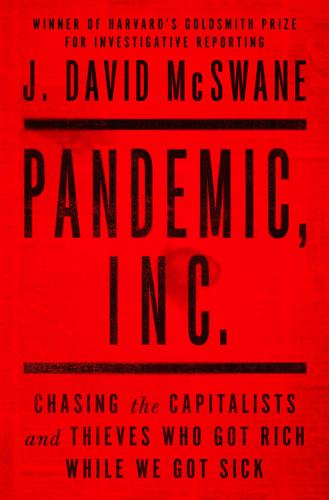
Pandemic, Inc.: Chasing the Capitalists and Thieves Who Got Rich While We Got Sick
by
J. David McSwane
Published 11 Apr 2022
It was born of science fiction, inspired at least in part by former president Bill Clinton’s reading of a Richard Preston novel in the late 1990s about a terrifying virus that vexed scientists. Clinton had sought the counsel of real-life scientists, who advised it was a good idea to prepare for outbreaks of a novel virus or biological attack. Nature has all sort of untold terrors lying in wait. The stockpile’s earliest work involved building an inventory of “push packs” ahead of the Y2K scare, supplies that could be dispatched anywhere in the country in twelve hours to respond to a crisis somehow wrought by a bunch of ones and zeros. The stockpile played a small role in the response to the September 11, 2001, terrorist attacks and the subsequent anthrax letter attacks, events that sent its funding upward amid rising fears of biological terrorism.

They All Came to Barneys: A Personal History of the World's Greatest Store
by
Gene Pressman
Published 2 Sep 2025
The first iMac—the personal computer as design object and fashion statement, with its translucent plastic cover in pop colors—arrived in 1998. Two grad students in computer science founded a company called Google that same year. The millennium was approaching—before long, everyone would be panicking about a phenomenon called “Y2K,” when the computers would reportedly short-circuit and pandemonium would ensue—and I was gung ho on the possibilities of the digital age. I dreamed of a new kind of store, one where digital video would allow customers down the block or across the country to check out merchandise virtually and—with the digital camera as personal shopper—either order it remotely or come to the store to see it, a hybrid model.
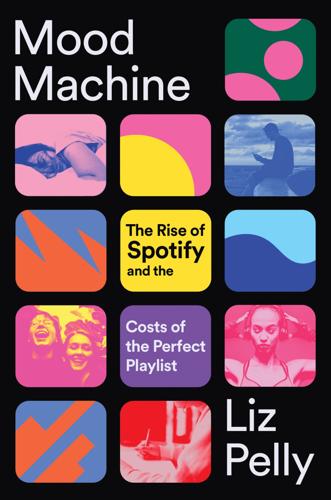
Mood Machine: The Rise of Spotify and the Costs of the Perfect Playlist
by
Liz Pelly
Published 7 Jan 2025
It was less of a genre and more of a creative impulse, a tendency within electronic music, and at times a friend group on Twitter or SoundCloud. Hyperpop was a shorthand for a post-SOPHIE, post−PC Music internet aesthetic, a more queer and trans alternative to mainstream experimental electronic music culture, often with pitch-shifted vocals, drawing influence from vaporwave, nightcore, chiptune, J-pop, y2k pop, hip-hop, and all sorts of dance music. Especially crucial was the sonic variety of it all.6 Then, something curious happened. In August 2019, as a direct response to the viral rise of 100 gecs across TikTok, Spotify rebranded its “Neon Party” playlist, which featured PC Music artists, into a new playlist, “hyperpop.”
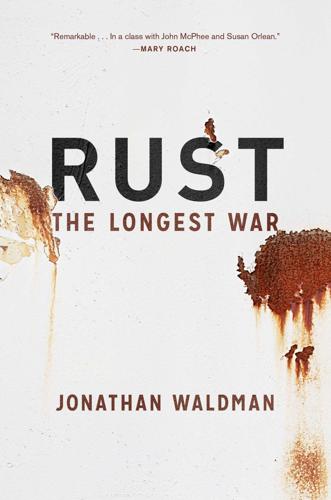
Rust: The Longest War
by
Jonathan Waldman
Published 10 Mar 2015
The cost of maintaining those bridges also had much to do with the DOT’s funding of the 2001 study of the nationwide cost of corrosion, which made the cost of salt look like peanuts. Thanks to better design (eliminating areas that hold mud and moisture), galvanized parts, improved primers and paints, and tests in salt mist facilities—giant steam ovens for cars—auto manufacturers got a handle on corrosion more or less around Y2K. Bridges haven’t caught up. As a result, few other agencies are pulled in directions so opposite with such force as the DOT. Yet there are limits to how far it may be stretched. A new car, the agency figures, you can afford; a new plane, it figures, you cannot. At airports, the Federal Aviation Administration prohibits the use of standard chloride-containing highway salts.
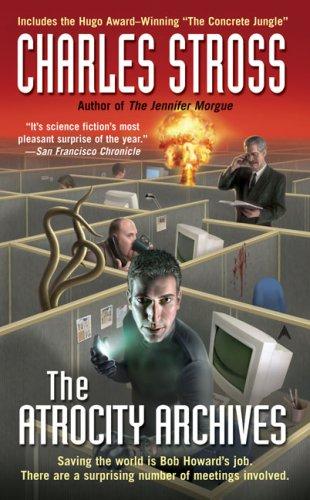
Atrocity Archives
by
Stross, Charles
Published 13 Jan 2004
Apart from its intrinsic fun, the story conveys the peculiar melancholy of looking back on a con and realising that no matter how much of a good time you had, there was even more that you missed. (All right: as subtle shadings of emotion go this one is a bit low on universality, but it was becoming familiar to me, having just started going to cons.) "Ship of Fools" was about the Y2K problem (which as we all know turned out not to be a problem, but BEGIN_RANT that was entirely thanks to programmers who did their jobs properly in the first place back when only geeks and astronomers believed the twenty-first century would actually arrive END_RANT) and it was also full of the funniest and most authentic-sounding insider yarns about IT I'd ever read.
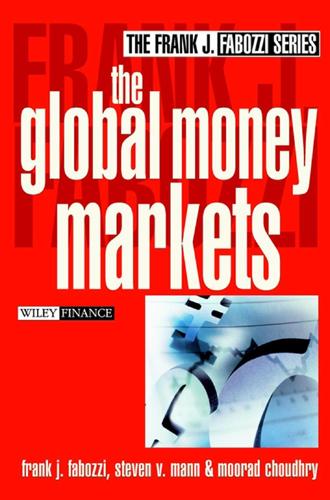
The Global Money Markets
by
Frank J. Fabozzi
,
Steven V. Mann
and
Moorad Choudhry
Published 14 Jul 2002
The spread returned to more normal levels as the Federal Reserve cut the Federal Funds rate three times in the following two months to avert a credit crunch. The final spike in the data occurs in the fall (October/November) of 1999. Although the macroeconomic climate was relatively settled during this time, uncertainty due to the Y2K calendar conversion engendered some portfolio rebalancing and a flight to quality. Once these concerns abated, spreads quickly returned to more normal levels. Another pattern evident in these data is the downward trend in the spread between 3-month LIBOR and 3-month Treasury bills. To see this, we computed summary statistics for each calendar year: mean, standard 15 Jeremy J.
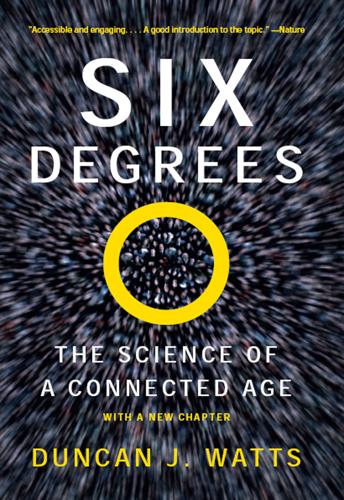
Six Degrees: The Science of a Connected Age
by
Duncan J. Watts
Published 1 Feb 2003
So they are considerably more vulnerable to malicious bits of code than are people. And although a worldwide computer epidemic might not signal the end of civilization, it could still exert a significant economic toll. No such event has occurred yet, but we have already experienced some disquieting tremors. In the last few years of the twentieth century, even before Y2K turned out to be the biggest anticlimax of the millennium, a series of computer virus outbreaks caused a significant level of disruption and inconvenience to hundreds of thousands of users around the world. Government agencies, large corporations, and even the usually ambivalent public began to sit up and take notice.

The Upstarts: How Uber, Airbnb, and the Killer Companies of the New Silicon Valley Are Changing the World
by
Brad Stone
Published 30 Jan 2017
As director of Taxis and Accessible Services at the Metropolitan Taxi Agency, Hayashi was the most powerful figure in the city’s highly dysfunctional cab industry. She had worked as a deputy city attorney since graduating from UC Hastings College of the Law and had toiled away in environmental law and Y2K compliance. She was no stranger to San Francisco’s bare-knuckle politics, where rival democratic factions battled incessantly and corruption often bubbled indiscreetly under the surface. A stint in the Department of Elections, where she managed the transition away from punch-card ballots, was particularly grueling.
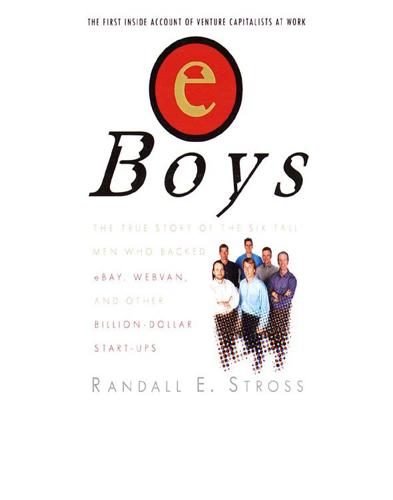
eBoys
by
Randall E. Stross
Published 30 Oct 2008
He didn’t mention that it was Greenberg who had figured it out, even if he couldn’t articulate it well. No other company had yet successfully staked out this specialty as its sole business. Perot Systems had some e-commerce experts, as did EDS, Andersen, and IBM. But in each case, they were scattered across a large organization. These same organizations were distracted by Y2K-related consulting. “All my old friends are busy now,” Howe said. “EDS, IBM, Andersen. You want to be a programmer till January second, 2000, then you want to be a lawyer. You’ve got all the big people in the world who could possibly take a position here fundamentally diverted. They’re making a lot of money, but they’re also in agony.

Cities Are Good for You: The Genius of the Metropolis
by
Leo Hollis
Published 31 Mar 2013
Yet this was still far lower than what a coder in the Bay Area would expect and as a result American companies began to set up their own offices there in three business parks on the outside of the city, shiny satellites on the outskirts of the old colonial town, which is becoming increasingly congested as more and more engineers arrive to make their fortune. Since 1971 the city’s population has grown from 1.6 to 8.4 million. A reputation for excellence, efficiency and low cost was confirmed in the 1990s when the world was faced by the Y2K virus. At the time there was a global concern that the operating systems of most computers had been programmed in such a way that on the stroke of midnight, 1 January 2000, planes would fall out of the sky and banks would collapse. Companies such as Infosys were tasked with testing and repairing over 2,000 billion lines of code.
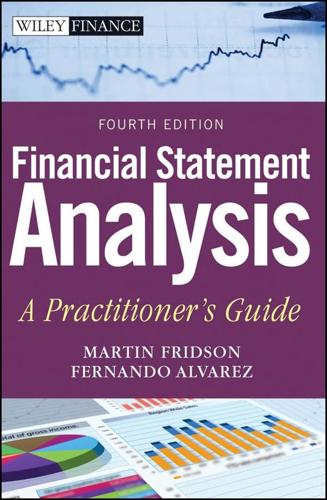
Financial Statement Analysis: A Practitioner's Guide
by
Martin S. Fridson
and
Fernando Alvarez
Published 31 May 2011
Alternatively, the company may allege that shipments were delayed (never canceled, merely delayed) because of temporary production problems caused, ironically, by the company's explosive growth. (What appeared to be a negative for the stock price, in other words, was actually a positive. Orders were coming in faster than the company could fill them—a high-class problem indeed.) Widely publicized macroeconomic events such as the Y2K problem15 receive more than their fair share of blame for earnings shortfalls. However plausible these explanations may sound, analysts should remember that in many past instances, short-term supposed aberrations have turned out to be advance signals of earnings slowdowns. Exhibit 1.2 “Our Year-over-Year Comparisons Were Distorted” Note: Is the latest earnings figure an outlier or does it signal the start of a slowdown in growth?
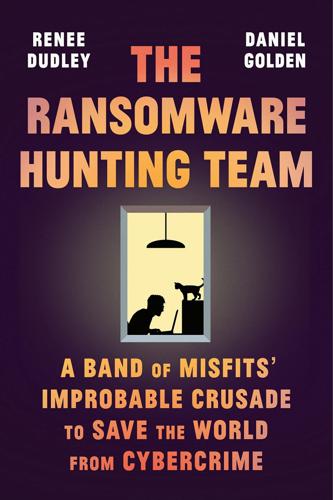
The Ransomware Hunting Team: A Band of Misfits' Improbable Crusade to Save the World From Cybercrime
by
Renee Dudley
and
Daniel Golden
Published 24 Oct 2022
First, it inculcated a cautious, safety-first approach, epitomized by the slogan some employees sported on T-shirts: IF IN DOUBT, SHUT IT DOWN. Colonial adopted a policy that anyone in the organization had the power to shut down the pipeline. Colonial closed down the entire pipeline for the first time on December 31, 1999, for fear of power surges from any computer glitches related to the Y2K transition, and again during Hurricane Katrina in 2005. It hoped its proactive stance would avert federal intervention. “The concern was about being dictated to,” a former company official said. Colonial boosted IT spending by 50 percent from 2017 to 2021. But when the Transportation Security Administration, which is part of the Department of Homeland Security and oversees pipeline safety, contacted Colonial in 2020 to schedule a voluntary cybersecurity review, the company begged off.
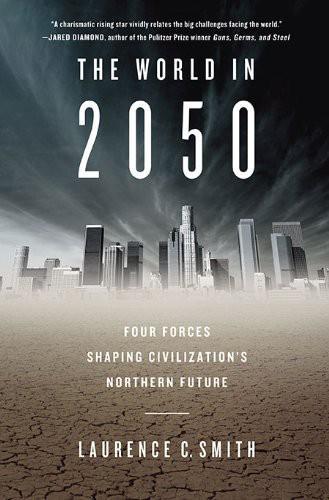
The World in 2050: Four Forces Shaping Civilization's Northern Future
by
Laurence C. Smith
Published 22 Sep 2010
Internet hookups ballooned and millions of songs, to the dismay of U2 and the rest of the music industry, were swapped for free on Napster. Hugo Chávez became president of Venezuela, and a huge chunk of northern Canada quietly assumed self-rule as the new territory of Nunavut. By then, I was a young professor at UCLA, working toward tenure and starting to notice things. The world vacillated between nervous fretting about Y2K and excitement over the dawn of a new millennium. 11,800 years . . . 130 years . . . 30 years . . . 15 years . . . 12 years. . . . The length of time we need to add another billion has petered down to nearly nothing. One billion is more than triple the 2010 population of the United States, the third most populous country on Earth.

Dreaming in Code: Two Dozen Programmers, Three Years, 4,732 Bugs, and One Quest for Transcendent Software
by
Scott Rosenberg
Published 2 Jan 2006
Though it may take forever to build a good program, a good program will sometimes last almost as long; this is yet another dimension of software time. Programs written in Cobol, the mainstream business programming language dominant in the 1960s, were still in wide use in the late 1990s. To conserve once-scarce space in memory, many of them had allowed only two digits for the year field. As 2000—Y2K—loomed, they had to be fixed or decommissioned. More recent software history provides a wealth of examples of programs that flourished after hard times or returned to life after consignment to oblivion. On Technology, the company Mitch Kapor founded after Lotus, produced only a fraction of the software that Kapor had hoped it would, but its MeetingMaker group scheduling program has remained in wide use for two decades.

Work Rules!: Insights From Inside Google That Will Transform How You Live and Lead
by
Laszlo Bock
Published 31 Mar 2015
When Alexander Graham Bell invented the telephone, he saw a missed call from Jeff Dean. Once, when the index servers went down, Jeff Dean answered user queries manually for two hours. Evals showed a quality improvement of 5 points. In 1998, scientists added a leap second to December 31st to give Jeff Dean time to fix the Y2K bug—in every system known to man. Jeff Dean once described Zeno’s paradox to an innocent bystander. The bystander never moved again. To Jeff Dean, “NP”xii means “No Problemo.” If the world was on the brink of global thermonuclear war, they would have WOPR play against Jeff rather than itself. Newton once said, “If I have seen far, it is because Jeff Dean will stand on my shoulders.”

What to Think About Machines That Think: Today's Leading Thinkers on the Age of Machine Intelligence
by
John Brockman
Published 5 Oct 2015
A device designed to drive a car or predict an epidemic need not be designed to attract a mate or avoid putrid carrion. Nonetheless, recent baby steps toward more intelligent machines have led to a revival of the recurring anxiety that our knowledge will doom us. My own view is that current fears of computers running amok are a waste of emotional energy—that the scenario is closer to the Y2K bug than the Manhattan Project. For one thing, we have a long time to plan for this. Human-level AI is still the standard fifteen to twenty-five years away, just as it always has been, and many of its recently touted advances have shallow roots. It’s true that in the past, “experts” have comically dismissed the possibility of technological advances that quickly happened.
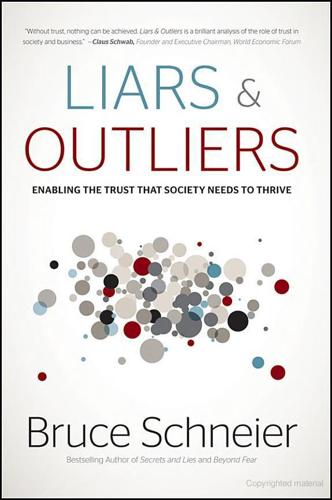
Liars and Outliers: How Security Holds Society Together
by
Bruce Schneier
Published 14 Feb 2012
Peter Hammerstein (1981), “The Role of Asymmetries in Animal Contests,” Animal Behaviour, 29:193–205. Kaushik Basu Kaushik Basu (1984), The Less-Developed Economy: A Critique of Contemporary Theory, Oxford University Press, 5–6. Neuroscience is starting Kerri Smith (2011), “Neuroscience vs Philosophy: Taking Aim at Free Will,” Nature, 477:23–5. Ultimatum game Charles A. Holt (2000), “Y2K Bibliography of Experimental Economics and Social Science: Ultimatum Game Experiments,” University of Virginia. Hessel Oosterbeek, Randolph Sloof, and Gijs van de Kuilen (2004), “Cultural Differences in Ultimatum Game Experiments: Evidence From a Meta-Analysis,” Experimental Economics, 7:171–88. how the game works Werner Güth, Rolf Schmittberger, and Bernd Schwarze (1982), “An Experimental Analysis of Ultimatum Bargaining,” Journal of Economic Behavior & Organization, 3:267–88.

What Technology Wants
by
Kevin Kelly
Published 14 Jul 2010
Sociologist Charles Perrow calls these “normal accidents” because they “naturally” emerge from the dynamics of large systems. The system is to blame, not the operators. Perrow did an exhaustive minute-by-minute study of 50 large-scale technological accidents (such as Three Mile Island, the Bhopal disaster, Apollo 13, Exxon Valdez, Y2K, etc.) and concluded, “We have produced designs so complicated that we cannot anticipate all the possible interactions of the inevitable failures; we add safety devices that are deceived or avoided or defeated by hidden paths in the systems.” In fact, Perrow concludes, safety devices and safety procedures themselves often create new accidents.

Blockchain Revolution: How the Technology Behind Bitcoin Is Changing Money, Business, and the World
by
Don Tapscott
and
Alex Tapscott
Published 9 May 2016
The fact that criminals use bitcoin speaks more to the lack of strong governance, regulation, advocacy, and education than to its underlying virtues. REASONS BLOCKCHAIN WILL FAIL OR IMPLEMENTATION CHALLENGES? So the obstacles are formidable. Looming in the distance is quantum computing, the cryptographer’s Y2K problem. It combines quantum mechanics and theoretical computation to solve problems—such as cryptographic algorithms—vastly faster than today’s computers. Said Steve Omohundro, “Quantum computers, in theory, can factor very large numbers very rapidly and efficiently, and most of the public key cryptography systems are based on tasks like that.
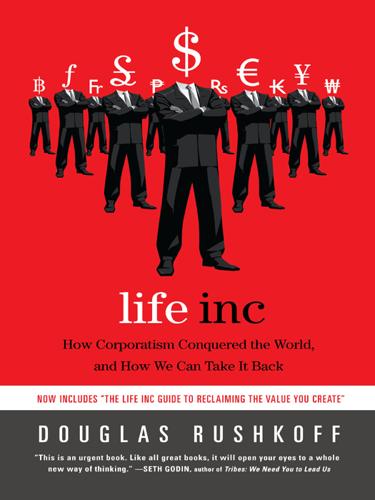
Life Inc.: How the World Became a Corporation and How to Take It Back
by
Douglas Rushkoff
Published 1 Jun 2009
Websites and radio shows instruct us to buy gold for savings, and smaller silver denominations to trade for food after the economy completely collapses. (Plus a handgun for self-defense and maybe a motorcycle to cut through the traffic jams surrounding our metropolitan areas.) For many, the apocalypse is less a looming fear than a secret wish. Like Y2K enthusiasts, who predicted that planes would fall from the sky when computers attempted to register four-digit years, we’re almost giddy at the thought of our dehumanizing infrastructure crumbling under its own weight. One well-targeted electromagnetic pulse and our debts are erased along with our credit scores.
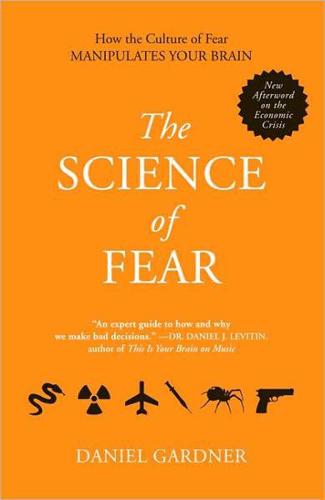
The Science of Fear: How the Culture of Fear Manipulates Your Brain
by
Daniel Gardner
Published 23 Jun 2009
One would think catastrophists would learn to be humble about their ability to predict the future, but there is a noticeable absence of humility in the genre. In 1999, James Howard Kunstler wrote at great length about the disasters—including an economic recession as bad as the Great Depression of the 1930s—that would follow the breakdown of computers afflicted by the Y2K bug. Five years later, he published The Long Emergency, which is filled with great certainty about all manner of horrors to come. As for Paul Ehrlich, he has been repeating essentially the same arguments he made in The Population Bomb for forty years. On the dust jacket of The Upside of Down, a 2006 book by University of Toronto professor Thomas Homer-Dixon that follows similar themes, there is a blurb from Ehrlich.
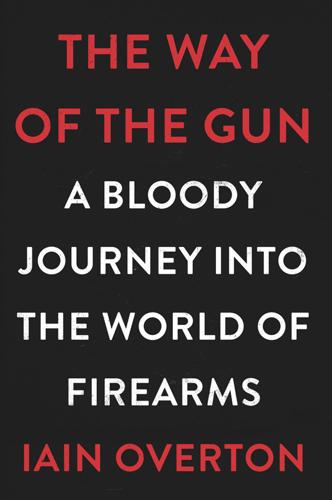
The Way of the Gun: A Bloody Journey Into the World of Firearms
by
Iain Overton
Published 15 Apr 2015
You could see this fear in so much of the gun companies’ marketing, too. Glock put out a commercial that focused on the role a gun plays in stopping a stranger knocking on your door and raping you.98 The hysteria of the new millennium was used to sell guns, with marketing men highlighting the fear that Y2K would cause mayhem: ‘dogs through starvation will revert to wild beasts’.99 And, of course, there existed the perennial concern that Obama was coming to take away your guns, as summed up by LaPierre in an article on the NRA website: ‘Obama’s Secret Plan to Destroy the Second Amendment by 2016’.100 How to protect yourself when the zombie apocalypse comes?
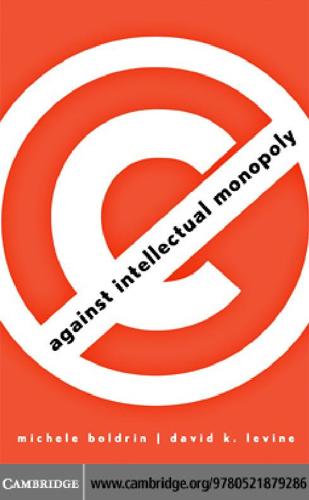
Against Intellectual Monopoly
by
Michele Boldrin
and
David K. Levine
Published 6 Jul 2008
Partly to compensate the Authors Guild for the dramatic loss of revenue that our book will cause them, and partly because one of us got interested by Adams’s proposal of a new way of making presidents of powerful countries accountable to their own people when using their mighty military power. Alternatively, one can avoid spending money purchasing bad books, such as After the Y2K Fireworks, by Bhuvan Unhelkar, reading one page of which was enough to convince us that there is more than one way to contribute to human understanding of the Dilbert factor. Finally, you may search Google Book Search for “Authors Guild” and spend an afternoon browsing tons of interesting books suggesting that it was once a society run by smart people and not a shill for Disney.
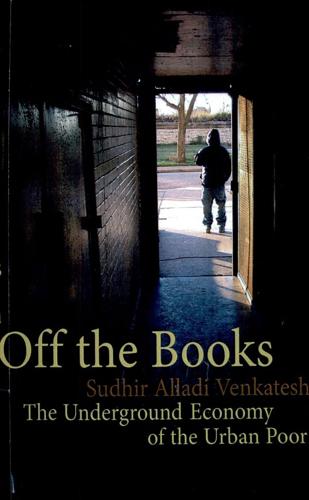
Off the Books
by
Sudhir Alladi Venkatesh
For the underground economy to function, everyone involved must connect with everyone else; Big Cat's leadership of the Black Kings would reveal the depth of these connections throughout Maquis Park and the peril that this web of connections could bring. As the country was gripped with the now-quaint fears of Y2K and pondered the coming of the third millennium, on the Southside of Chicago, on streets largely ignored, Big Cat had more practical problems. For the last six years he had been the leader of the Black Kings, assuming leadership after the arrest of the former leader, Cornelius Desmond, who died in jail and had not appointed his successor.

Living Well on the Spectrum
by
Valerie L. Gaus
Published 4 Feb 2011
For my patient, this type of thinking was sometimes a protective factor. While he was suffering from an anxiety disorder caused by various factors, he seemed to be immune to the type of collective anxiety that can be brought on by media hype about impending disasters for which there is no hard evidence. For example, when many people were bracing themselves for the Y2K disaster that was sure to happen at midnight on January 1, 2000, he had worked out a logical thinking sequence and had drawn a conclusion that there was not going to be a disaster. Similarly, in the wake of 9/11, a series of terrorism scares were triggered by anthrax attacks and warnings about mass assaults with lethal gas.

Apocalypse Never: Why Environmental Alarmism Hurts Us All
by
Michael Shellenberger
Published 28 Jun 2020
Doing so makes us feel heroic, and creates a feeling of immortality through the recognition, validation, and love we receive from others. 6. Lost Souls Preaching climate apocalypse is different from fearing death. Where most of us don’t want to think about our deaths, some people seem excited when they talk about the end of the world, whether from the Mayan apocalypse, Y2K, or climate change. “That deep sense that the world might come to an end is a strange mix of fear and desire,” Dick said. “Everyone would like to see their enemies destroyed in horrible ways, wouldn’t they?” he chuckled. Dick admitted he fantasized about seeing the atomic destruction of his hometown, where he had been starved and abused as a boy, something he wrote about in his affecting 1990 memoir, A Hole in the World.69 “Remember when the TV movie, The Day After [about nuclear apocalypse], was shown [in 1983]?
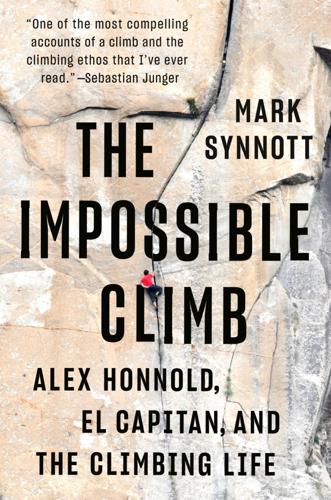
The Impossible Climb: Alex Honnold, El Capitan, and the Climbing Life
by
Mark Synnott
Published 5 Mar 2019
In 1953, news of Sir Edmund Hillary and Tenzing Norgay’s first ascent of Everest was sent via a runner from base camp, who took four days to reach the nearest telephone. Thirty years later, high-altitude filmmaker David Breashears broadcast the first live TV images from Everest’s summit. Now, at the dawn of Y2K, there we were documenting an entire two-month-long expedition in close-to-real time. * * * — ALEX GOT SICK to his stomach and couldn’t climb one morning. Jared and I left him to sweat it out for the day and headed up the fixed ropes hanging above camp. When I was fifty feet up, I looked down between my boots, which were still wet, and saw Alex hanging a brown-spackled pair of long johns out the door of the ledge.

Evil Genes: Why Rome Fell, Hitler Rose, Enron Failed, and My Sister Stole My Mother's Boyfriend
by
Barbara Oakley Phd
Published 20 Oct 2008
“Welcome to the Psychiatric Hot Line: —If you are obsessive-compulsive, press 1 repeatedly. —If you are schizophrenic, listen closely and a little voice will tell you which number to press. —If you have borderline personality disorder, hang up. You have already pushed everybody's buttons.” —Anonymous The year 2000 loomed with warnings of a Y2K disaster and biblical prophecies of doom. But nestled in his relatively remote Eastern Michigan University surroundings, Professor John McHoskey continued to gnaw at his Machiavellian research. To the unpracticed eye, it might seem the research bones had been picked clean. After all, McHoskey's previous work had shown that psychopathic traits corresponded tongue-in-groove with Machiavellian traits.
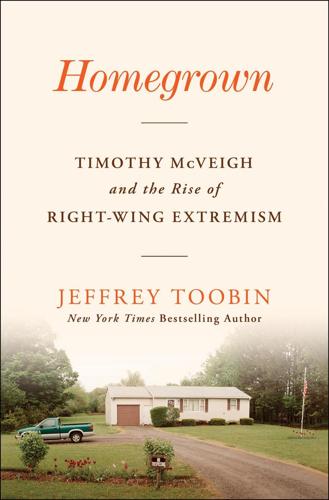
Homegrown: Timothy McVeigh and the Rise of Right-Wing Extremism
by
Jeffrey Toobin
Published 1 May 2023
(A Fox spokesman said Beck was being “satiric.”) Still, even though right-wing rhetoric was hotter than ever during the Bush years, the number of actual terrorist acts committed by right-wing extremists declined. As a report by the Anti-Defamation League put it, “Events ranging from the non-event of a Y2K-related disaster to the replacement of Bill Clinton with George W. Bush to the 9/11 terror attacks all played a role in dampening right-wing furor.” But this relatively happy state of affairs did not last. The ADL report went on, “Near the end of Bush’s second term, right-wing terror incidents began to increase again and this trend accelerated by 2009, thanks in part to the election of Barack Obama, whom both white supremacists and anti-government extremists hated, and to the major economic disasters of the Great Recession and the foreclosure crisis

England: Seven Myths That Changed a Country – and How to Set Them Straight
by
Tom Baldwin
and
Marc Stears
Published 24 Apr 2024
A thousand years before, Christians had feared that the new millennium might mean the end of the world. But as the clock ticked down towards what was supposed to be the opening night for not only the Dome and the twenty-first century but also for New Britain, the biggest worry in this increasingly technology-driven country was that a programming error, known as the millennium bug, or ‘Y2K’, might cause computers to crash. On the big day itself – 31 December 1999 – the IT was fine but officials panicked, first over a credible bomb threat which to their relief did not result in an explosion, then over expensive fireworks that, to their dismay, also failed to go off with a bang. Thousands of VIP guests, including irate and self-important newspaper editors, were kept waiting for hours after an underground train broke down.
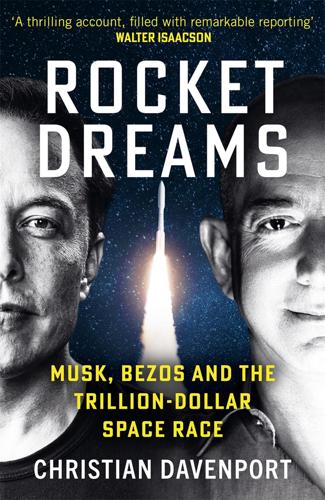
Rocket Dreams: Musk, Bezos and the Trillion-Dollar Space Race
by
Christian Davenport
Published 6 Sep 2025
I don’t really remember a friend prior to Bob. We’ve been through all those good and bad parts of each other’s lives for the last twenty years, all the important parts.” They were members of the same astronaut class, The Bugs, so named because they were selected in 2000, the year many feared computers would all shut down because of the Y2K bug. Behnken was Air Force, Hurley a Marine, but still their careers had moved in uncommon lockstep. Eventually, both would even marry fellow astronauts— Hurley to Karen Nyberg, Behnken to Megan McArthur, and the four of them would gel into something similar to family. It made sense, then, that when Hurley was assigned to support the crew of Columbia’s flight in 2003, Behnken volunteered to go with him.
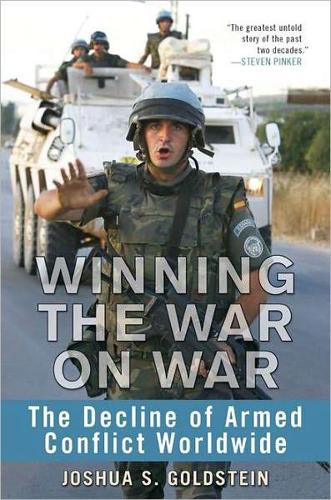
Winning the War on War: The Decline of Armed Conflict Worldwide
by
Joshua S. Goldstein
Published 15 Sep 2011
What is the character of these decades and how do they compare with earlier times? THE TWENTY-FIRST CENTURY VERSUS THE 1990s Get into the time machine, settle into the leather seat (time machines are expensive), and first scan back through the last ten years. Take a breath at the year 2000—hey, the Y2K bug did not destroy civilization!—and then scan through the previous ten years, the 1990s. Now compare these two scans. For the United States, the new century has been more war-prone—9/11, Iraq, and Afghanistan—than the peace and prosperity of the 1990s. But for the world as a whole, the opposite is true.
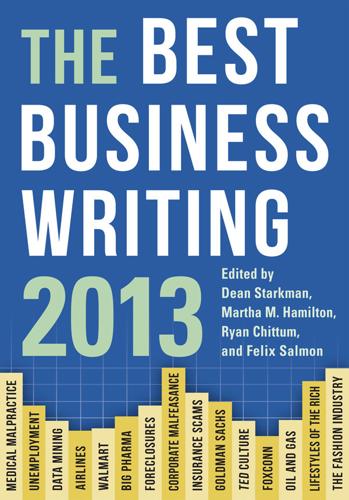
The Best Business Writing 2013
by
Dean Starkman
Published 1 Jan 2013
Sometime in the first week of March—it’s a sign of the company’s apprehension about the move that it declines to be specific—that will change. Throughout the new United, everyone is talking about a single passenger service system—PSS, they call it—in somewhat apocalyptic tones, the way IT consultants once invoked Y2K. As with the flight system, there are technical issues—the company isn’t eager to repeat US Airways’ debacle—but there’s also a human factor. The new United is adopting Continental’s passenger services system, a Hewlett-Packard program called Shares. According to Martin Hand, United’s senior vice president for customer experience, the program is more flexible than legacy United’s program, Apollo.
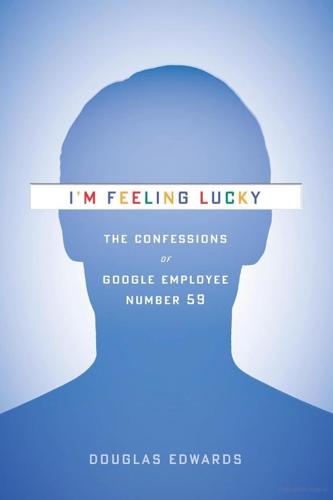
I'm Feeling Lucky: The Confessions of Google Employee Number 59
by
Douglas Edwards
Published 11 Jul 2011
I watched their value soar and became convinced I was a keen analyst of the burgeoning Internet economy. Relatives turned to me for stock tips and I began pontificating on the future of XML and push media as if I actually knew what I was talking about. The millennium was ending and maybe civilization too. Y2K was almost here. A software bug would cause computer clocks to fail, and planes would fall from the sky. The power grid would shut down and cities go dark. Better day trade while the lights were still on. The next big thing was out there, lurking in a renovated warehouse in San Francisco's Multimedia Gulch or hanging around in a rented one-room office, sharing utilities and a blackened Mr.

Accelerando
by
Stross, Charles
Published 22 Jan 2005
Pamela nibbles at a slice of crispbread, then graces him with a slow, carnivorous stare. "I don't care: It's too far away to have any influence on us, isn't it? It doesn't matter whether I believe in that singularity you keep chasing, or your aliens a thousand light-years away. It's a chimera, like Y2K, and while you're running after it, you aren't helping reduce the budget deficit or sire a family, and that's what I care about. And before you say I only care about it because that's the way I'm programmed, I want you to ask just how dumb you think I am. Bayes' Theorem says I'm right, and you know it."

America Right or Wrong: An Anatomy of American Nationalism
by
Anatol Lieven
Published 3 May 2010
Millenarian beliefs also indirectly influence a wider American "ecology of fear," to use the phrase coined by Mike Davis for Los Angeles, and therefore a wider culture of national paranoia and aggression.119 As Paul Boyer points out in his magisterial book on this subject, the strength of millenarian feelings among a minority of Americans means that they have also had an effect on wider culture, feeding into Hollywood films such as the Omen series, science fiction novels and pop music.120 146 A N T I T H E S I S PART II: F U N D A M E N T A L I S T S AND GREAT F E A R S Often these fantasies have a racial edge. Thus in 1999 Jerry Falwell warned his followers to prepare for possible chaos as a result of computer meltdown (consequent on the so-called Y2K or Millennium Bug problem) by stocking up on essential supplies. These he said should include arms and ammunition, to protect the well provided (the Careful Virgins, if you will) against the hungry and improvident others—and we can be pretty sure what colors he imagined those others were going to be.

Army of None: Autonomous Weapons and the Future of War
by
Paul Scharre
Published 23 Apr 2018
Rigorous internal test and evaluation has been able to reduce the error rate to 0.1 to 0.5 errors per 1,000 lines of code in some cases. However, in systems with millions of lines of code, some errors are inevitable. If they aren’t caught in testing, they can cause accidents if encountered during real world operations. On their first deployment to the Pacific in 2007, eight F-22 fighter jets experienced a Y2K-like total computer meltdown when crossing the International Date Line. All onboard computer systems crashed, causing the pilots to lose navigation, fuel subsystems, and some communications. Stranded over the Pacific without a navigational reference point, the aircraft were able to make it back to land by following the tanker aircraft accompanying them, which relied on an older computer system.

Gonzo: The Life of Hunter S. Thompson
by
Corey Seymour
,
Johnny Depp
and
Jann S. Wenner
Published 31 Oct 2007
He was doing a mock stagger up the stairs—but it was only partly mock. He wasn’t so stoned that he was going to fall down—he was just staggering around. We had a little conversation in Hunterese, and that’s actually the last time I saw him. DOUG BRINKLEY Hunter thought that things were going to go haywire starting in the year 2000. He was extremely paranoid about Y2K. He had decided that this was the year the fun stopped—no more good times, good-bye Strawberry Fields forever. Part of this was natural aging and looking back at his life and realizing that being in San Francisco in the sixties was not an experience to be replicated. It was the holy apex. He would look back at that era with such longing—riding his motorcycle across the Golden Gate Bridge, being ensconsed at La Honda with Kesey, getting to know Neal Cassady and Allen Ginsberg, killing wild boar in Big Sur, living in the Haight.

Good Economics for Hard Times: Better Answers to Our Biggest Problems
by
Abhijit V. Banerjee
and
Esther Duflo
Published 12 Nov 2019
Consistent with this interpretation, as firms matured and presumably became better known, we saw a switch from fixed-price contracts to cost-plus contracts, where the buyer paid for whatever time and materials it cost the seller to produce the software.34 Our story also explains why the relatively few cases where a young firm got a cost-plus contract tended to be when the firm had already done a project for the client and therefore had established a reputation. One of the young CEOs we met was exhausted. He felt he was working night and day on uninteresting projects (and their endless adjustments) just to stay afloat. He had recently taken up a Y2K project, which meant hunting through thousands of lines of code to eliminate dates written in the form “1/1/99” rather than in the form “1/1/1999.” There were dire warnings of the disasters that would ensue if computers started thinking the year was 2099. Companies were rushing to fix their databases.

It's Easier to Reach Heaven Than the End of the Street: A Jerusalem Memoir
by
Emma Williams
Published 7 Nov 2012
“The main UN office for the Middle East peace process is setting up a unit for regional politics out there, helping with the negotiations that are looking encouraging. The lead guy has asked if I’d be interested in heading it.” “When?” “Starting in a couple of months. We’d see in the new millennium in New York, and be out there some time after that.” The new millennium. Newspapers, websites, and conversations obsessed with Y2K and the impending end of electronic interaction. Seven years in New York had been light and young. We’d built ourselves a home in a Chelsea loft and filled it with three children. They were now five, two, and six months old. Archie could handle moving schools without too much trouble; Xan and Catriona would take it in stride.
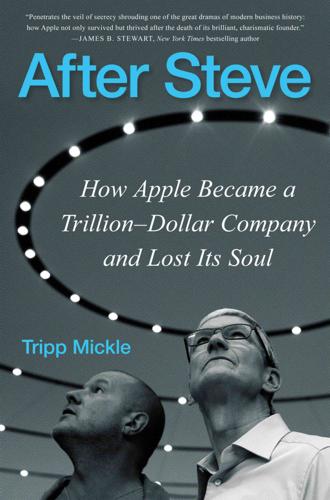
After Steve: How Apple Became a Trillion-Dollar Company and Lost Its Soul
by
Tripp Mickle
Published 2 May 2022
Jobs, after all, had named Apple partly in homage to the Beatles’ label, Apple Records, and wanted the company to be like the band, a place where colleagues would come together to create something greater than they could create independently. As the theater’s lights dimmed, Ive and the designers watched as a struggling musician named Jack Malik played songs in pubs to small crowds that mostly ignored him. After a Y2K-like event wiped the Beatles from history, Malik scrambled to preserve their music. He made a demo of Beatles songs that caught the attention of a record label executive, who thought he was the most brilliant lyricist since Bob Dylan. Soon he found himself in Los Angeles being turned into a star, forced to deal with the label’s commercial expectations that his album would set sales records.
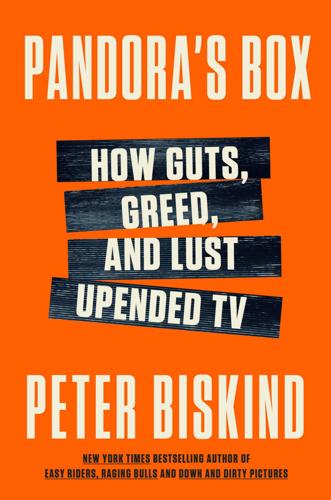
Pandora's Box: How Guts, Guile, and Greed Upended TV
by
Peter Biskind
Published 6 Nov 2023
By 2005, Hastings had so refined its algorithms that he claimed they could predict within “a 10% range whether a movie will be a hit with a subscriber.”63 Tossing William Goldman’s old adage—“Nobody knows anything”—out the window, he replaced it with “Our algorithms know everything.” Just as important, if not more so, than rating viewers’ tastes was coming up with the most effective way to deliver the films. Apple’s iTunes had been streaming music practically from Y2K, and Hastings had had streaming in his sights almost from the start, but was waiting for the moment when, as Ted Sarandos put it, “Streaming economics made more sense than the postal economics,” which is say, it was cheaper to stream than to mail. That moment came in 2007—the same year HBO said goodbye to The Sopranos and Albrecht, AMC premiered Mad Men, and about 50 percent of American households had broadband access.
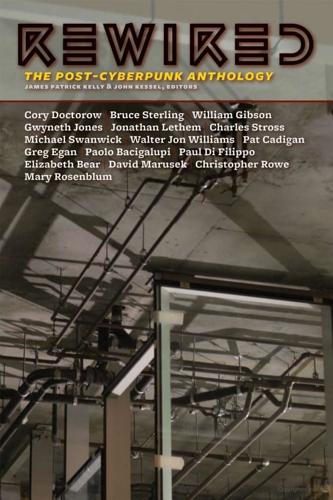
Rewired: The Post-Cyberpunk Anthology
by
James Patrick Kelly
and
John Kessel
Published 30 Sep 2007
The intelligence gap between us and the aliens is probably about a trillion times bigger than the gap between us and a nematode worm. Do you have any idea what that means?” Pamela nibbles at a slice of crispbread. “I don’t believe in that bogus singularity you keep chasing, or your aliens a thousand light years away. It’s a chimera, like Y2K, and while you’re running after it you aren’t helping reduce the budget deficit or sire a family, and that’s what I care about. And before you say I only care about it because that’s the way I’m programmed, I want you to ask just how dumb you think I am. Bayes’ theorem says I’m right, and you know it.”
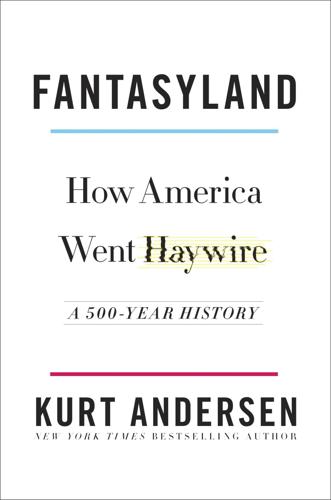
Fantasyland: How America Went Haywire: A 500-Year History
by
Kurt Andersen
Published 4 Sep 2017
They’re betting on a complete breakdown of the U.S. economy and government that they can and will survive by living as they imagine Americans lived centuries ago, in rural isolation and off the grid. Theirs is a dystopia-ready lifestyle, a fantasy given vivid form and encouraged by the three Mad Max movies that came out between 1979 and 1985. A great selling point was the Y2K panic, the fear in the 1990s that our new digital systems would all go haywire as 1999 turned to 2000, and the newly digital-dependent world would collapse. That didn’t happen, of course, but then the 9/11 attacks and new viral epidemics (SARS, avian flu) helped give survivalism its momentum. Once you really believe, you can always find new evidence to support your beliefs.
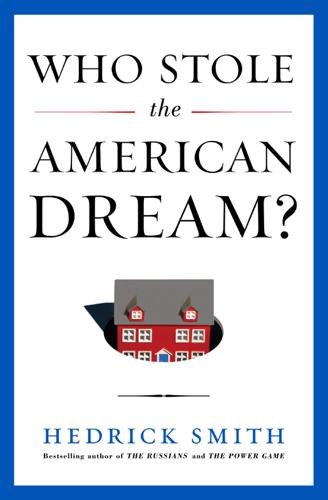
Who Stole the American Dream?
by
Hedrick Smith
Published 10 Sep 2012
I secured [another] job, but retirement benefits were destroyed. In my fifties, I cannot start over, [and] there remain no protections to prevent abuse.” Such mass firings were terrifying to employees, but a boon to companies. H-1B fever spread rapidly during the dot.com boom of the late 1990s and the Y2K angst over a potential computer apocalypse at the stroke of midnight on December 31, 1999. Silicon Valley and its political allies in the Clinton administration, claiming they needed more foreign “techies” to head off trouble, got Congress to triple the annual H-1B visa quota from 65,000 to 195,000.
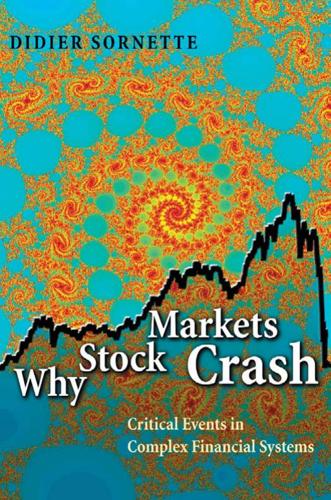
Why Stock Markets Crash: Critical Events in Complex Financial Systems
by
Didier Sornette
Published 18 Nov 2002
Rumors Many on Wall Street think that rumors move stocks (see Figure 4.3). The old Wall Street saying, “buy on the rumor, sell on the news,” is alive and well, as can be seen from numerous sources in the media and the Internet. Rumors can drive herding behavior strongly. Rumors are most easily documented for extraordinary events. Here are a few remarkable examples. The Y2K bug is one of the most famous recent rumors during which misinformation was rampant. Rumors, assertions, predictions, demagoguery, bluster, cover-up, and denial abounded, such that, for the layman, it was almost impossible to sort fact from fiction. Another example is the completely false rumor concerning the U.S.
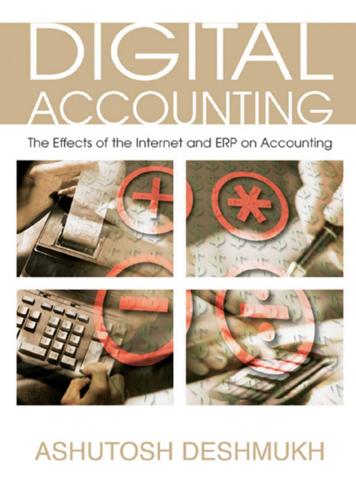
Digital Accounting: The Effects of the Internet and Erp on Accounting
by
Ashutosh Deshmukh
Published 13 Dec 2005
These improvements enabled Lord Corporation to considerably extend the life of its legacy systems. Not only was the life extended, but data extraction and analysis capabilities were also enhanced. However, problems with legacy systems were deep rooted ,and every solution created new problems. Lord, after overcoming Y2K challenges and an intense evaluation of its systems, decided to scrap the legacy system and replace it with SAP R/3. As this experience shows, the migration vs. modification decision is neither easy nor inexpensive. In the 1980s, microcomputers arrived on the scene — computing for the proletariat. Personal Computers (PCs) were a major paradigm shift; the high priests of information technology lost their stranglehold on the technology, now anyone and everyone could understand and utilize Information Technology.

A Generation of Sociopaths: How the Baby Boomers Betrayed America
by
Bruce Cannon Gibney
Published 7 Mar 2017
The goals were unachievable and would grow only more absurd as Boomers colonized education departments. That’s not to say that real improvement could not be achieved, only that the targets set were wrong and the results achieved failed to impress. Thus, while 2000 brought no computerized reckoning (being a matter of profits, Y2K was taken seriously), that year did reveal Bush I’s promises as unfulfilled. The problems were therefore consigned to the hands of… Bush II. In 2001, the new Bush ginned up the No Child Left Behind Act, offering equally outlandish promises: that “all” students would be “proficient” by graduation, instructed by “highly qualified” teachers (or “distinguished” ones, query what distinguished them).33 It passed with overwhelming, bipartisan support.
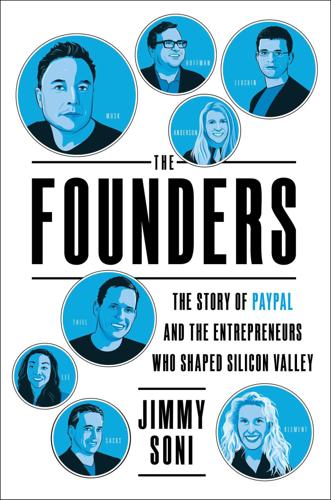
The Founders: The Story of Paypal and the Entrepreneurs Who Shaped Silicon Valley
by
Jimmy Soni
Published 22 Feb 2022
In the early 1990s, a pair of engineers, Marcel DePaolis and Dave Weinstein, had bought www.x.com for their company Pittsburgh Powercomputer. They sold the company—but held onto the X.com URL, using it for their personal email addresses. Over the years, DePaolis and Weinstein turned down bids to sell the URL, underwhelmed by the various offer terms. In early 1999, they received fresh interest. “Under the looming shadow of Y2K, we were approached by Elon Musk,” they said. This time, the deal terms proved more interesting. They sold X.com to Musk in exchange for cash and 1.5 million shares of the company’s Series A stock. The negotiation drew the interest of the Wall Street Journal, which included it in a story about start-up equity—a story that, as chance had it, included another young entrepreneur, Max Levchin, explaining how he used stock to secure office space.
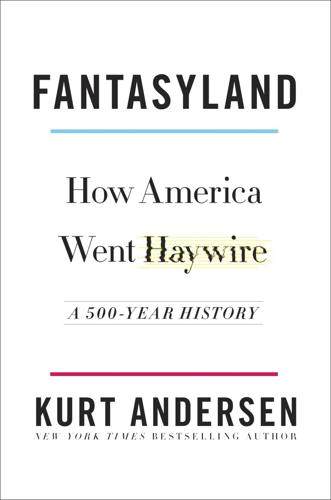
Fantasyland
by
Kurt Andersen
Published 5 Sep 2017
They’re betting on a complete breakdown of the U.S. economy and government that they can and will survive by living as they imagine Americans lived centuries ago, in rural isolation and off the grid. Theirs is a dystopia-ready lifestyle, a fantasy given vivid form and encouraged by the three Mad Max movies that came out between 1979 and 1985. A great selling point was the Y2K panic, the fear in the 1990s that our new digital systems would all go haywire as 1999 turned to 2000, and the newly digital-dependent world would collapse. That didn’t happen, of course, but then the 9/11 attacks and new viral epidemics (SARS, avian flu) helped give survivalism its momentum. Once you really believe, you can always find new evidence to support your beliefs.

The Looming Tower: Al-Qaeda and the Road to 9/11
by
Lawrence Wright
Published 26 Sep 2006
The CIA warned of multiple attacks inside the United States but provided few details. With the FAA, the Border Patrol, the National Guard, the Secret Service, and every sheriff’s office and police department in the country on high alert, there was still no actual sign of any forthcoming attack. The fears of a terrorist strike were wrapped up in the general Y2K hysteria—the widespread concern about the possible failure of most computers to accommodate the millennial change in the calendar, leading to a collapse of the technological world. Then on December 14, a border guard in Port Angeles, Washington, stopped an Algerian man, Ahmed Ressam, whose obvious anxiety aroused her suspicion.
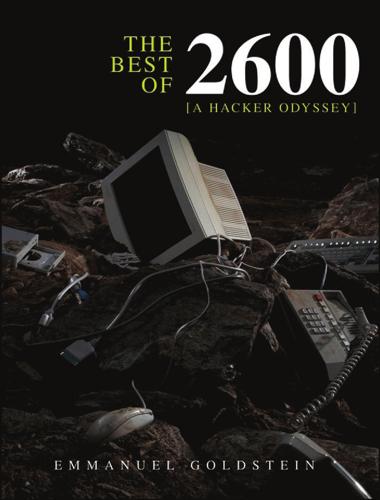
The Best of 2600: A Hacker Odyssey
by
Emmanuel Goldstein
Published 28 Jul 2008
That, combined with the technology that we must never let them take away, will be enough to start reaching others. 569 94192c13.qxd 6/3/08 3:34 PM Page 570 94192c14.qxd 6/4/08 3:43 AM Page 571 III 2000 and Beyond: A Changing Landscape Chapter 14: The Lawsuits Chapter 15: Still More Hacker Stories Chapter 16: A New Era of Telephony Chapter 17: Retail Hacking Chapter 18: Toys of the 21st Century 94192c14.qxd 6/4/08 3:43 AM Page 572 94192c14.qxd 6/4/08 3:43 AM 14 I Page 573 The Lawsuits used to think that chapter divisions were artificial and that they detracted somewhat from the flow when telling a story. But fate dictated otherwise with regards to the tale of 2600. Not only did a brand new adventure begin literally on the day that an old one ended, but the dividing line of the year 2000, Y2K, and the conclusion of the Mitnick saga really added a symmetry that I would have thoroughly disbelieved—had I not been there when it all happened. The year 2000 was indeed the Year of the Lawsuit on the Hacker Calendar. It was like nothing I had ever seen before. Sure, we had gotten our share of lawsuit threats in the past.
…
The net became clogged, commerce was affected (the claims of billions of lost dollars quickly became accepted as undisputed fact), and our very way of life was once again being threatened. 94192c16.qxd 6/3/08 3:35 PM Page 663 A New Era of Telephony MILESTONE: FEEDING THE FRENZY (continued) So instead of dealing with the fact that we’ve become hooked on operating systems with large security holes that any idiot with a basic knowledge of programming can exploit, we handle it as if it were some sort of “cyberwar” complete with enemy combatants, spies, and a terrified populace. It’s a not-so-distant cousin of the Y2K hysteria when many became convinced that the world would be plunged into anarchy when the calendar changed. In such cases we need to remember some rational thoughts: Don’t become entirely dependent on any single system because failures and flaws are inevitable; Keep regular backups; Put the whole picture into perspective and realize that an occasional glitch in your e-mail or a temporary outage for amazon.com is simply one of the growing pains of the net, not the end of the world; Always have a different way of achieving the same ends so that if a piece of software or hardware becomes unreliable, you won’t be completely stuck.
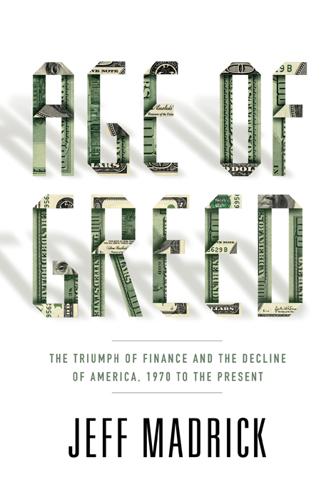
Age of Greed: The Triumph of Finance and the Decline of America, 1970 to the Present
by
Jeff Madrick
Published 11 Jun 2012
Capital Spending Patterns, 1999–2007,” Census Bureau, http://www.census.gov/econ/aces /report/2009/capitalspendingreport2009.pdf. 86 “PEOPLE CAN LOOK AT”: Louis Uchitelle, “Age of Riches: The Richest of the Rich, Proud of a New Gilded Age,” July 15, 2007, New York Times, Sunday Business, p. 1. CHAPTER 18: ANGELO MOZILO 1 WITHOUT A HIGH-TECHNOLOGY BOOM, ALAN GREENSPAN: There was also fear that the resetting of computerized calendars in 2000—Y2K—could cause some economic turmoil. 2 SOME ECONOMISTS BLAMED GREENSPAN: In particular, John B. Taylor, Getting Off Track: How Government Actions and Interventions Caused, Prolonged, and Worsened the Financial Crisis (Stanford, Calif.: Hoover Institution Press, 2009). 3 AS MOZILO HIRED OTHERS: Connie Bruck, “Angelo’s Ashes,” The New Yorker, June 29, 2009. 4 BUT IN THE LATE 1960S: For a fine brief summary of the history of Fannie, Freddie, and related instititions, see Sarah Quinn, “Securitization and the State” (working paper, University of California, Berkeley, 2008), http://www.sarahquinnsociology.com/ documents/SecuritizationandtheStateASA2008.pdf. 5 MOZILO, CHARMING, ENERGETIC: Paul Muolo and Mathew Padilla, Chain of Blame: How Wall Street Caused the Mortgage and Credit Crisis (Hoboken, N.J.: John Wiley, 2008), p. 113. 6 FANNIE MAE AND MOZILO WERE JOINED AT THE HIP: Ibid. 7 “AC” WAS MOZILO’S MOTTO: Muolo and Padilla, Chain of Blame, p. 58. 8 IT THUS COST THEM: Michael Lewis, Liar’s Poker: Rising Through the Wreckage on Wall Street (New York: W.

Facebook: The Inside Story
by
Steven Levy
Published 25 Feb 2020
Ed Zuckerberg had already hired a professional to wire the house for the T1 line, so Mark offered to write software to link the machines together. Once installed, ZuckNet proved useful not only to signal the arrival of Dr. Z’s cowards but for Mark and sometimes Randi to pull an endless series of pranks, like planting a fake virus on his sister Donna’s computer or tricking his mother into thinking that the Y2K bug had triggered a tech apocalypse. In 1997, a networking product did for the young people worldwide what ZuckNet had done in the Zuckerberg house a year earlier. AOL’s Instant Messenger product, or AIM, would become the software that most engaged Mark Zuckerberg in the early years of his technology life.
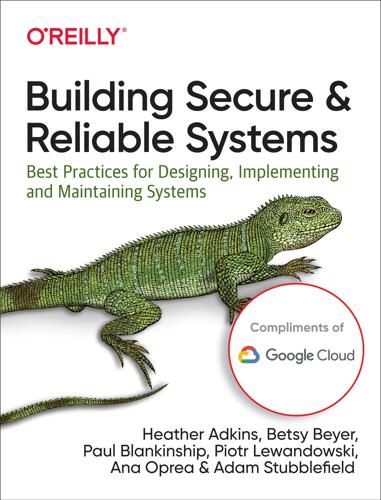
Building Secure and Reliable Systems: Best Practices for Designing, Implementing, and Maintaining Systems
by
Heather Adkins
,
Betsy Beyer
,
Paul Blankinship
,
Ana Oprea
,
Piotr Lewandowski
and
Adam Stubblefield
Published 29 Mar 2020
For example, a recovery that involves replaying digitally signed transactions may fail if some transactions are signed by expired certificates, unless you design the recovery process to consider the original transaction date when validating certificates. Your system’s time dependence may be even more likely to introduce security or reliability issues if it depends on an external notion of time that you don’t control. This pattern arises in the form of multiple types of errors—for example, software errors like Y2K, the Unix epoch rollover, or accidental errors where developers choose certificate expiration times so far in the future that it’s “not their problem anymore.” Clear-text or unauthenticated NTP connections also introduce risk if an attacker is able to control the network. A fixed date or time offset in code exhibits a code smell indicating that you may be creating a time bomb.

The Art of Assembly Language
by
Randall Hyde
Published 8 Sep 2003
Packing and unpacking date data program dateDemo; #include( "stdlib.hhf" ) static day: uns8; month: uns8; year: uns8; packedDate: word; begin dateDemo; stdout.put( "Enter the current month, day, and year: " ); stdin.get( month, day, year ); // Pack the data into the following bits: // // 15 14 13 12 11 10 9 8 7 6 5 4 3 2 1 0 // m m m m d d d d d y y y y y y y mov( 0, ax ); mov( ax, packedDate ); // Just in case there is an error. if( month > 12 ) then stdout.put( "Month value is too large", nl ); elseif( month = 0 ) then stdout.put( "Month value must be in the range 1..12", nl ); elseif( day > 31 ) then stdout.put( "Day value is too large", nl ); elseif( day = 0 ) then stdout.put( "Day value must be in the range 1..31", nl ); elseif( year > 99 ) then stdout.put( "Year value must be in the range 0..99", nl ); else mov( month, al ); shl( 5, ax ); or( day, al ); shl( 7, ax ); or( year, al ); mov( ax, packedDate ); endif; // Okay, display the packed value: stdout.put( "Packed data = $", packedDate, nl ); // Unpack the date: mov( packedDate, ax ); and( $7f, al ); // Retrieve the year value. mov( al, year ); mov( packedDate, ax ); // Retrieve the day value. shr( 7, ax ); and( %1_1111, al ); mov( al, day ); mov( packedDate, ax ); // Retrieve the month value. rol( 4, ax ); and( %1111, al ); mov( al, month ); stdout.put( "The date is ", month, "/", day, "/", year, nl ); end dateDemo; Of course, having gone through the problems with Y2K (Year 2000), you know that using a date format that limits you to 100 years (or even 127 years) would be quite foolish at this time. If you are concerned about your software running 100 years from now, perhaps it would be wise to use a 3-byte date format rather than a 2-byte format. As you will see in the chapter on arrays, however, you should always try to create data objects whose length is an even power of 2 (1 byte, 2 bytes, 4 bytes, 8 bytes, and so on) or you will pay a performance penalty.

The Singularity Is Near: When Humans Transcend Biology
by
Ray Kurzweil
Published 14 Jul 2005
Manuel Trajtenberg, Economic Analysis of Product Innovation: The Case of CT Scanners (Cambridge, Mass.: Harvard University Press, 1990); Michael H. Priebe, Ph.D., president, CEO, NEUROMED GmbH; P-M. L. Robitaille, A. M. Abduljalil, and A. Kangarlu, "Ultra High Resolution Imaging of the Human Head at 8 Tesla: 2K x 2K for Y2K," Journal of Computer Assisted Tomography 24.1 (January–February 2000): 2–8. 32. Seong-Gi Kim, "Progress in Understanding Functional Imaging Signals," Proceedings of the National Academy of Sciences 100.7 (April 1, 2003): 3550–52, http://www.pnas.org/cgi/content/full/100/7/3550. See also Seong-Gi Kim et al., "Localized Cerebral Blood Flow Response at Submillimeter Columnar Resolution," Proceedings of the National Academy of Sciences 98.19 (September 11,2001): 10904–9, httpi//www.pnas.org/cgi/content/abstract/98/19/10904. 33.
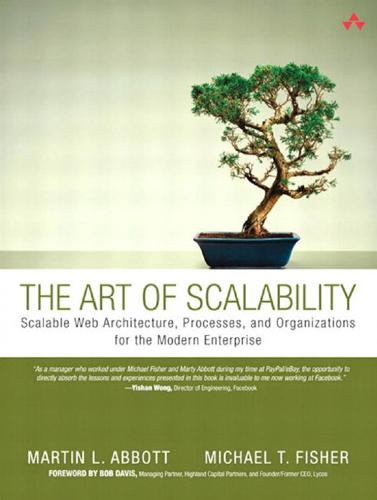
The Art of Scalability: Scalable Web Architecture, Processes, and Organizations for the Modern Enterprise
by
Martin L. Abbott
and
Michael T. Fisher
Published 1 Dec 2009
Quality Scope d Scope ee ed Sp Spe Cost C HAPTER 19 Cost 288 Quality Figure 19.2 Project Triangle Choices The project on the right in Figure 19.2 has a focus on increased speed to market with a lower cost point at the expense of reduced quality. This project might be something necessary for compliance where it is essential to meet a deadline to avoid penalties. There are likely no revenue generating benefits for the feature; therefore, it is essential to keep the costs as low as possible. This project might be the equivalent to a Y2K bug where the fix does not need to be full functioned but just needs to perform the basic functionality by the specified date with minimal cost. For anyone who has been in business for any amount of time, it should not come as a surprise that there are tradeoffs that must be made. It is expected in business that leaders make decisions everyday about how to allocate their precious resources, be they engineers, dollars, or time.
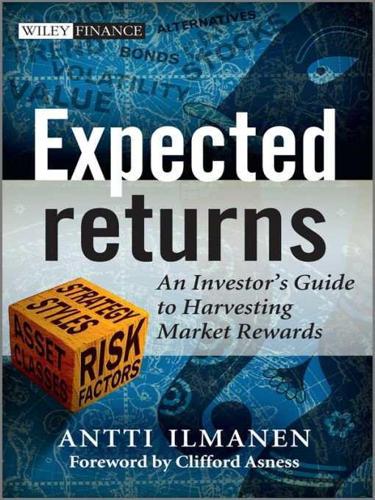
Expected Returns: An Investor's Guide to Harvesting Market Rewards
by
Antti Ilmanen
Published 4 Apr 2011
The average yield spread of private money market paper—whether repos (RP), commercial paper (CP), certificates of deposit (CD), or eurodeposits (ED)—over Treasury bills (TB) more than halved between the 1980s and the 2000s, despite spiking back to the 1981–1982 level in 2008 (see Table 3.5). Between these extreme events, the major spikes occurred after the 1987 stock market crash, during the 1990 recession, the 1998 Russia/LTCM debacle, and during the year 2000 (“Y2K”) computer scare. It was a sign of the times that credit spreads widened only marginally following the September 11, 2001 terrorist strikes and the resulting temporary closing of some financial markets. As noted, there is a particularly attractive reward to risk when shifting away from short-dated Treasuries, but such opportunities cannot be arbitraged away by leveraged investors.
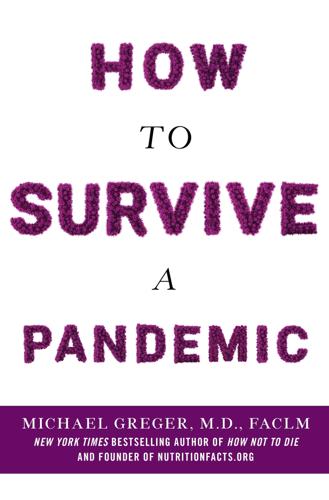
How to Survive a Pandemic
by
Michael Greger, M.D., FACLM
Global Patient Safety Challenge, 2005–2006. who.int/entity/patientsafety/events/05/HH_en.pdf. 3046. World Health Organization Consultation on Hand Hygiene in Health Care. 2005. WHO Guidelines on Hand Hygiene in Health Care (Advanced Draft). Global Patient Safety Challenge, 2005–2006. who.int/entity/patientsafety/events/05/HH_en.pdf. 3047. Starkman D. 2000. Y2K related buying distorts some companies results; concerns about foul ups lead to stock-piling. Wall Street Journal, January 31. 3048. Centers for Disease Control and Prevention. [date unknown]. When & how to use hand sanitizer. U.S. Department of Health and Human Services; [last reviewed 2020 Mar 3; accessed 2020 Apr 7]. https://www.cdc.gov/handwashing/show-me-the-science-hand-sanitizer.html. 3049.

Total Recall: My Unbelievably True Life Story
by
Arnold Schwarzenegger
and
Peter Petre
Published 30 Sep 2012
Independent producers like Army are the saviors in Hollywood because they’ll take risks that the big studios won’t. He had his own company with a string of successes and was well financed. The film he had in mind for me was End of Days, an action-horror-thriller that was being timed to reach theaters in late 1999 and cash in on all the buzz around the world about Y2K, the turn of the millennium. I play Jericho Cane, an ex-cop who has to stop Satan from coming to New York and taking a bride in the closing hours of 1999. If Jericho fails, then the woman will give birth to the Antichrist, and the entire next thousand years will be a millennium of evil. The director, Peter Hyams, came recommended by Jim Cameron, and like Cameron, he preferred to shoot at night.

New York
by
Edward Rutherfurd
Published 10 Nov 2009
Then, when she saw him come into the room, she’d quickly ended the call. “What was that about?” he asked. “Just a client who’s giving me some problems,” she said. “I’d rather not talk about it.” But he suspected that she might have been talking about him. The new millennium began. The much-anticipated Y2K bug hardly materialized at all in the USA, or the UK, or the other countries that had prepared for it. But then it didn’t seem to appear in the countries that had almost ignored it. That spring, the dot.com boom had reached its high point, then the NASDAQ index had started a wholesale retreat. Early in April, Juan Campos had called, sounding very cheerful, and they’d met for lunch.
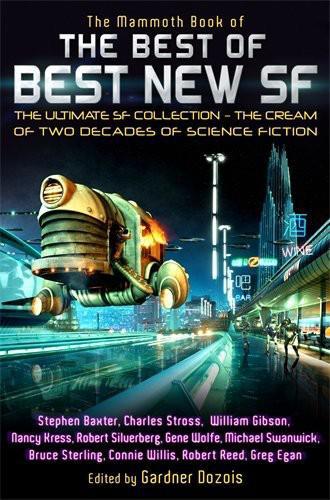
The Best of Best New SF
by
Gardner R. Dozois
Published 1 Jan 2005
The intelligence gap between us and the aliens is probably about a trillion times bigger than the gap between us and a nematode worm. Do you have any idea what that means?” Pamela nibbles at a slice of crispbread. “I don’t believe in that bogus singularity you keep chasing, or your aliens a thousand light years away. It’s a chimera, like Y2K, and while you’re running after it you aren’t helping reduce the budget deficit or sire a family, and that’s what I care about. And before you say I only care about it because that’s the way I’m programmed, I want you to ask just how dumb you think I am. Bayes’ theorem says I’m right, and you know it.”
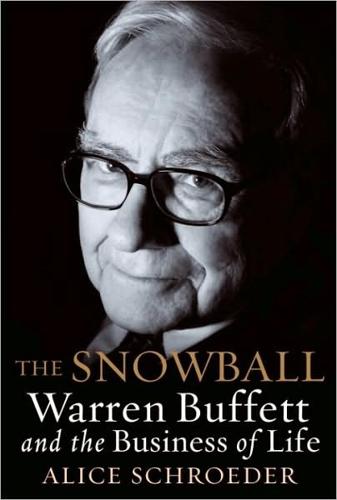
The Snowball: Warren Buffett and the Business of Life
by
Alice Schroeder
Published 1 Sep 2008
Interview with Herbert Allen. 24. Nikhil Deogun, James R. Hagerty, Steve Secklow, and Laura Johannes, “Coke Stains, Anatomy of a Recall: How Coke’s Controls Fizzled Out in Europe,” Wall Street Journal, June 29, 1999. 25. Interview with Herbert Allen. 26. Ibid. 27. Through Project Infinity, partly cloaked in Y2K spending, Coca-Cola turned the soft-drink business into a technology-fed numbers game. In 1999, the company hired 150 experts for worldwide implementation of SAP’s programs. SAP, an acronym for Systems, Applications, and Products in Data Processing, provided business software solutions for process redesign in supply-chain management, customer-relationship management, and resource planning. 28.

Engineering Security
by
Peter Gutmann
On a computer you can shovel in warnings of any type or form and it doesn’t matter what effect they have. In the real world warnings can be challenged in court and overruled if you can’t prove that they have any effect [40]. Imagine what would happen if warning dialogs were required to hold up to such standards! The resulting redesign and rewrite of software would make the Y2K effort seem trivial in comparison. One example of an attempt to redesign warnings in order to make more explicit what was being warned about occurred with browser certificate warnings, which as has already been pointed out in “Problems” on page 4 are essentially useless in terms of helping users assess the safety (or lack thereof) of a web site.